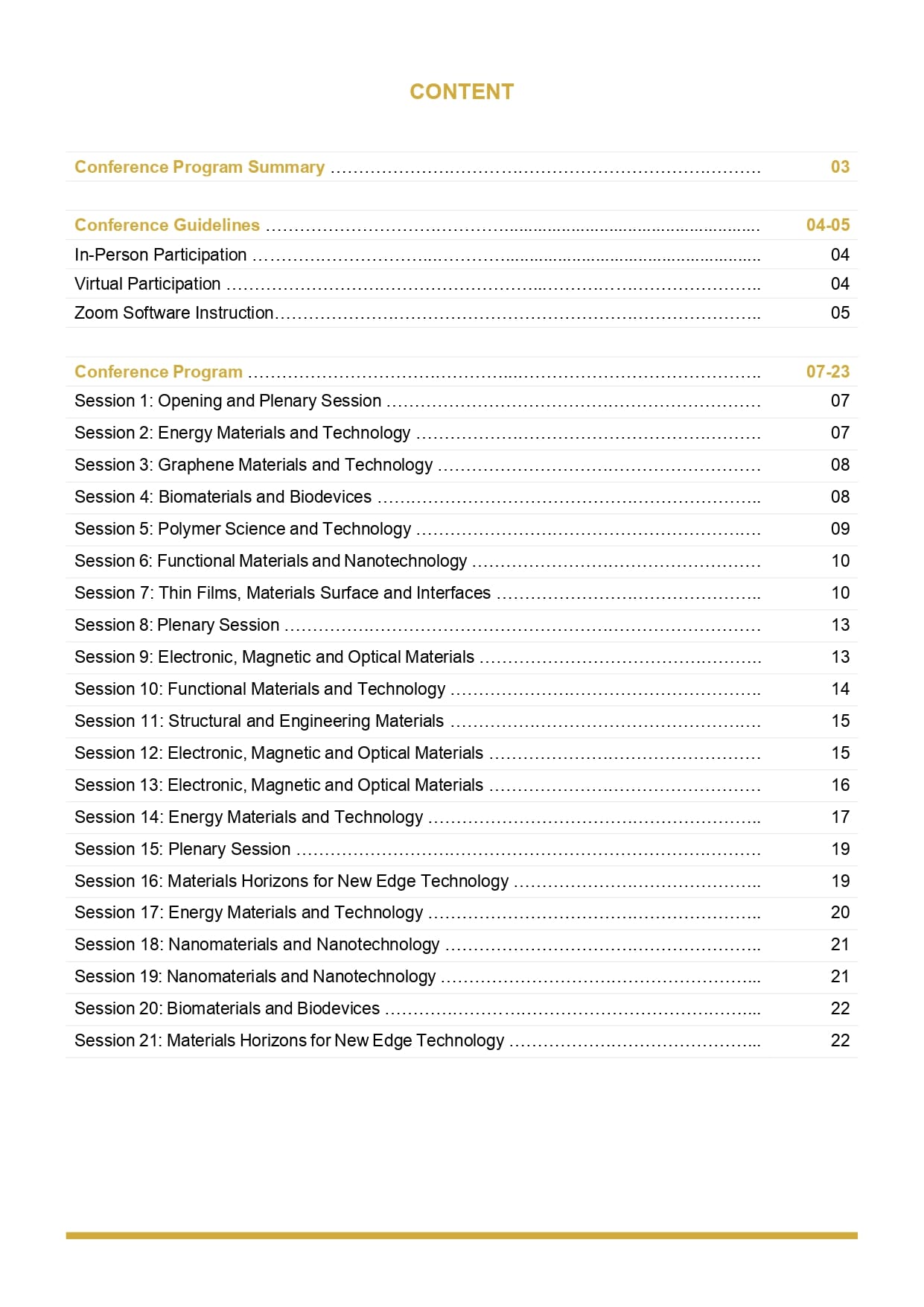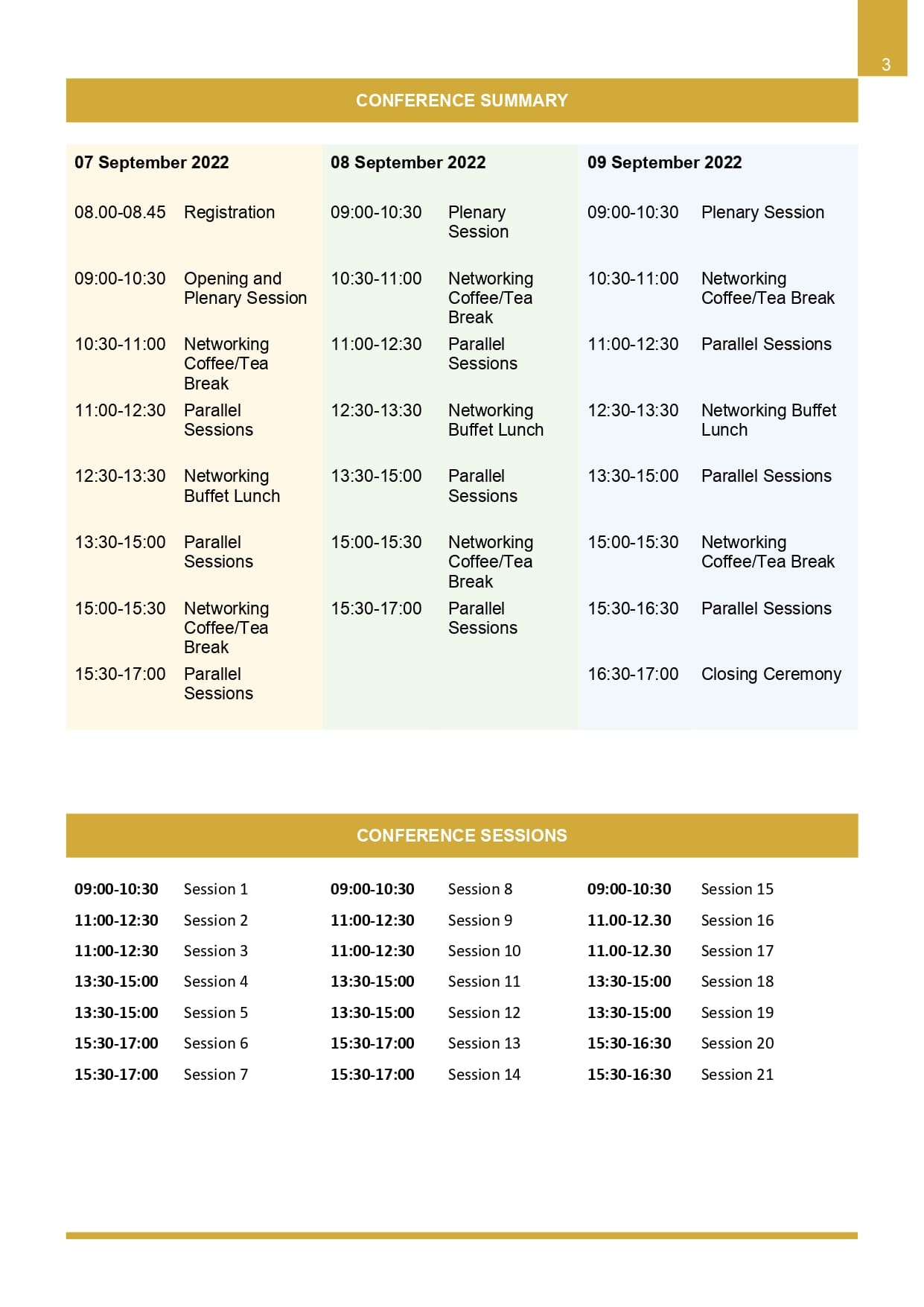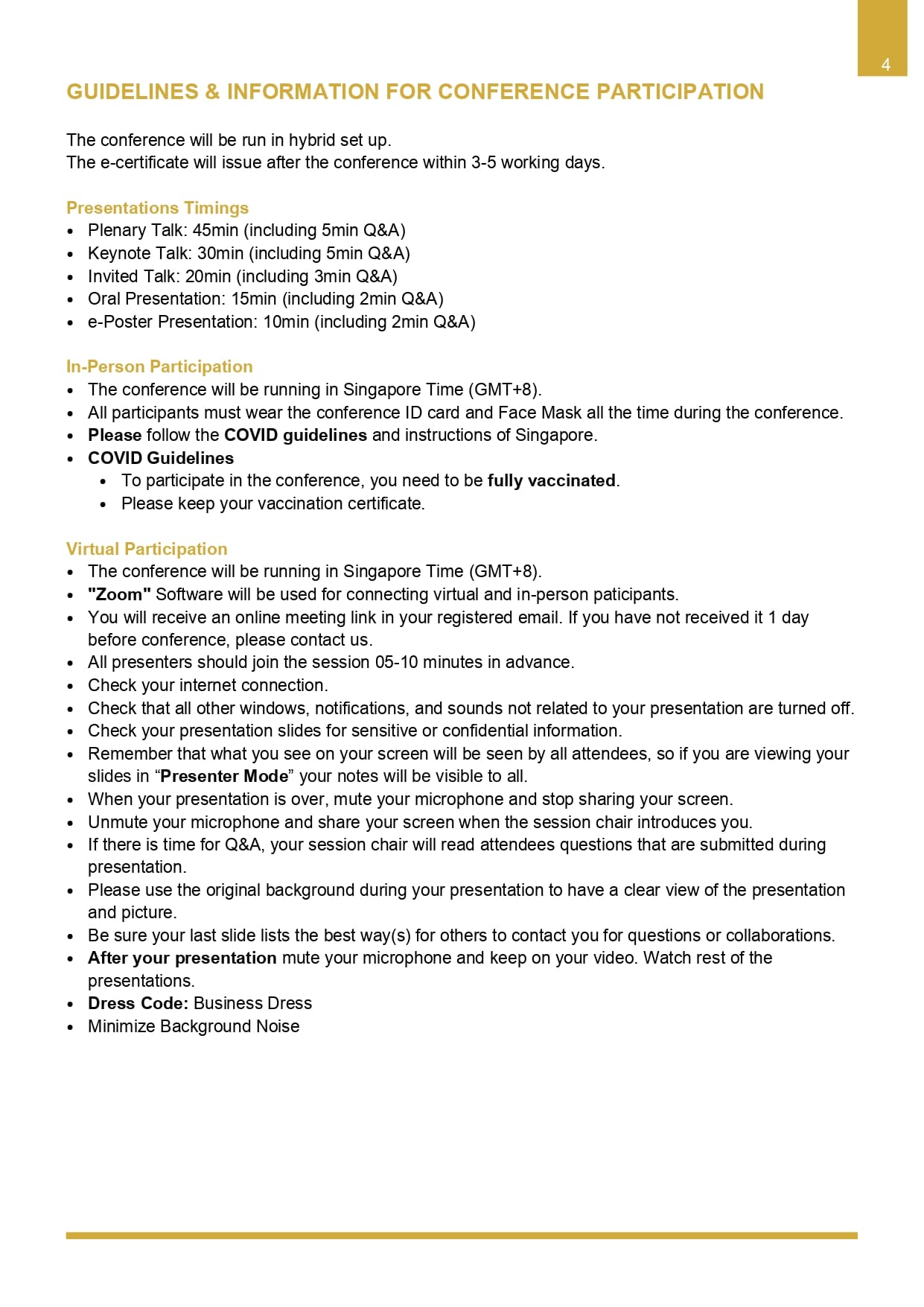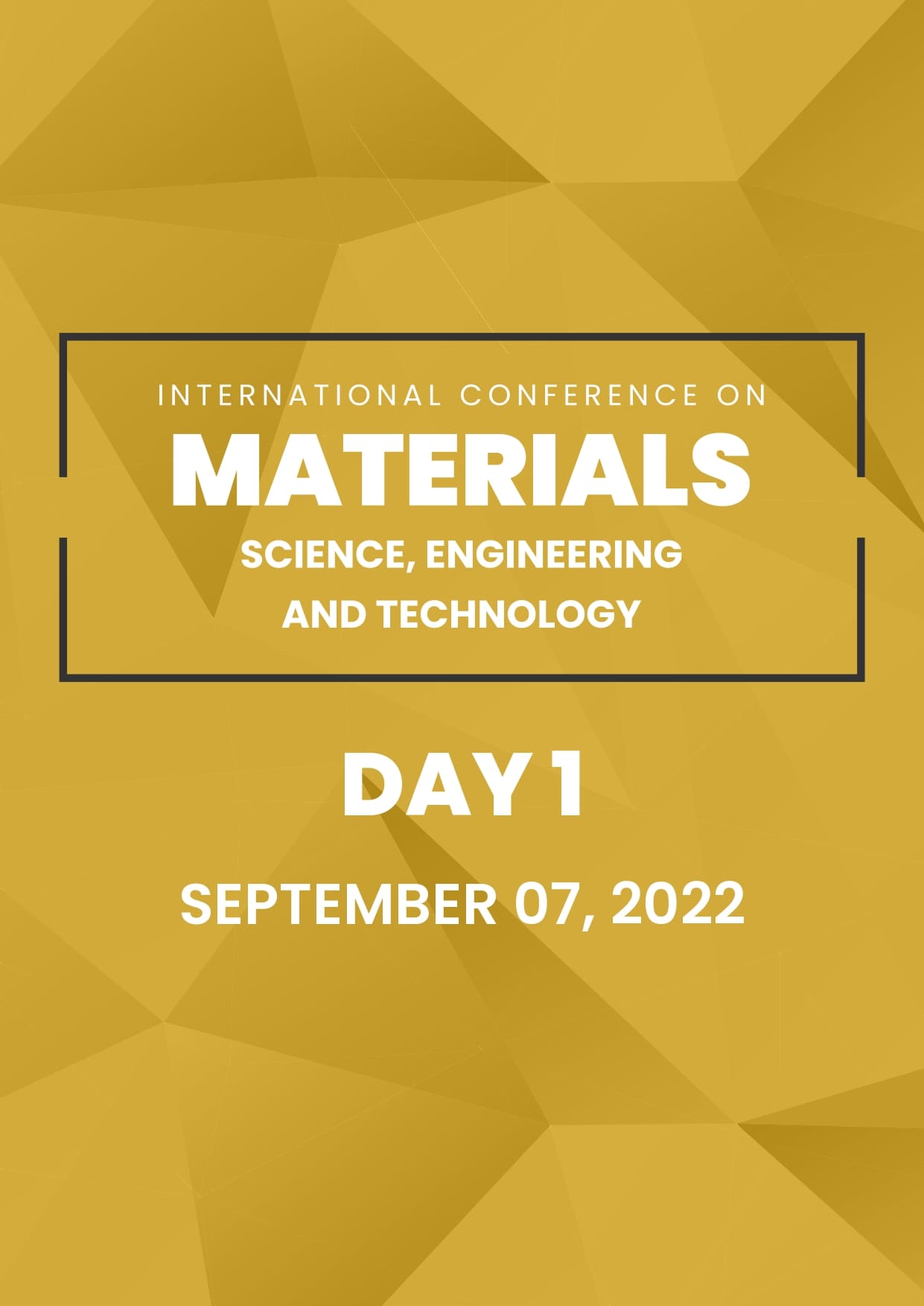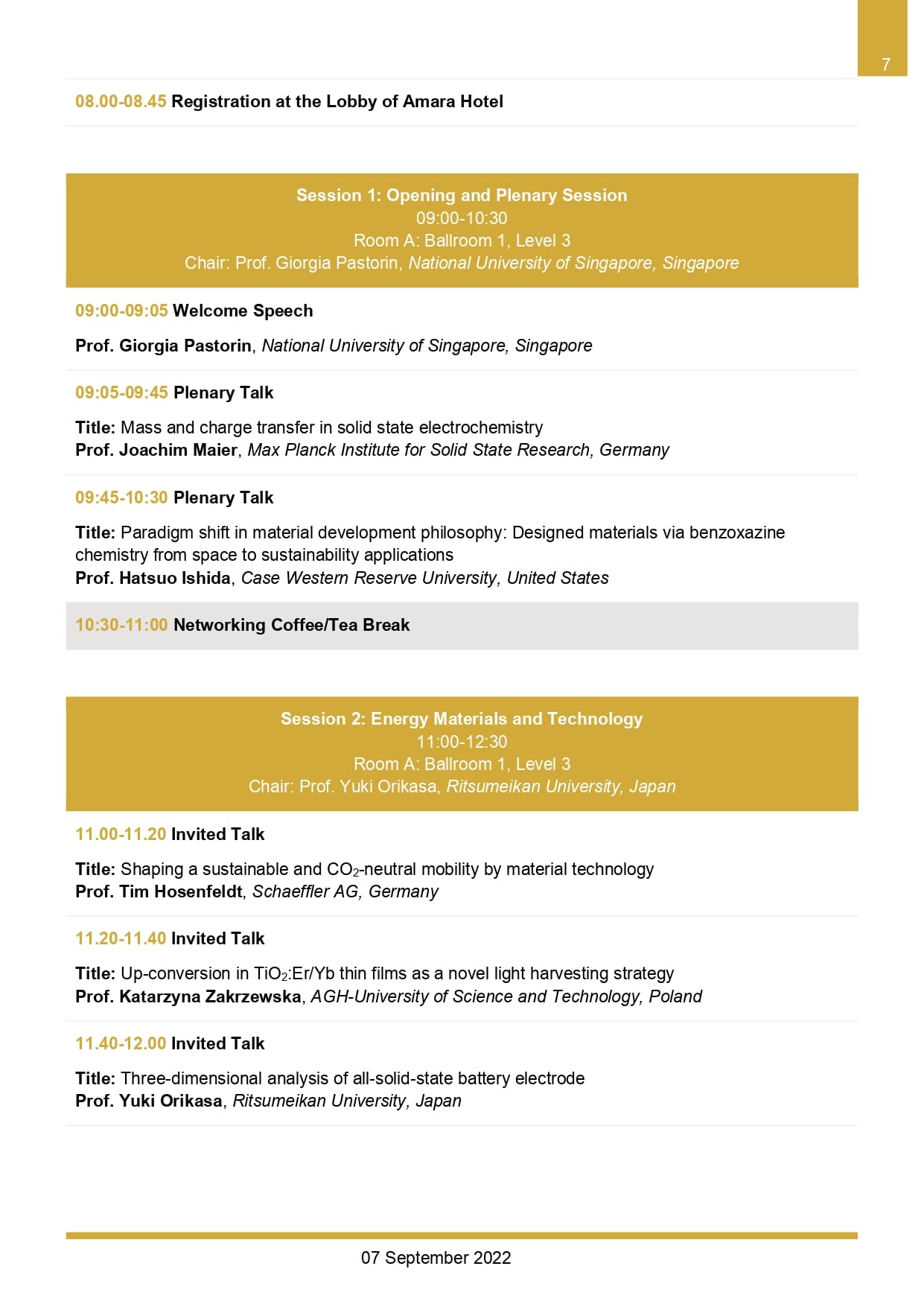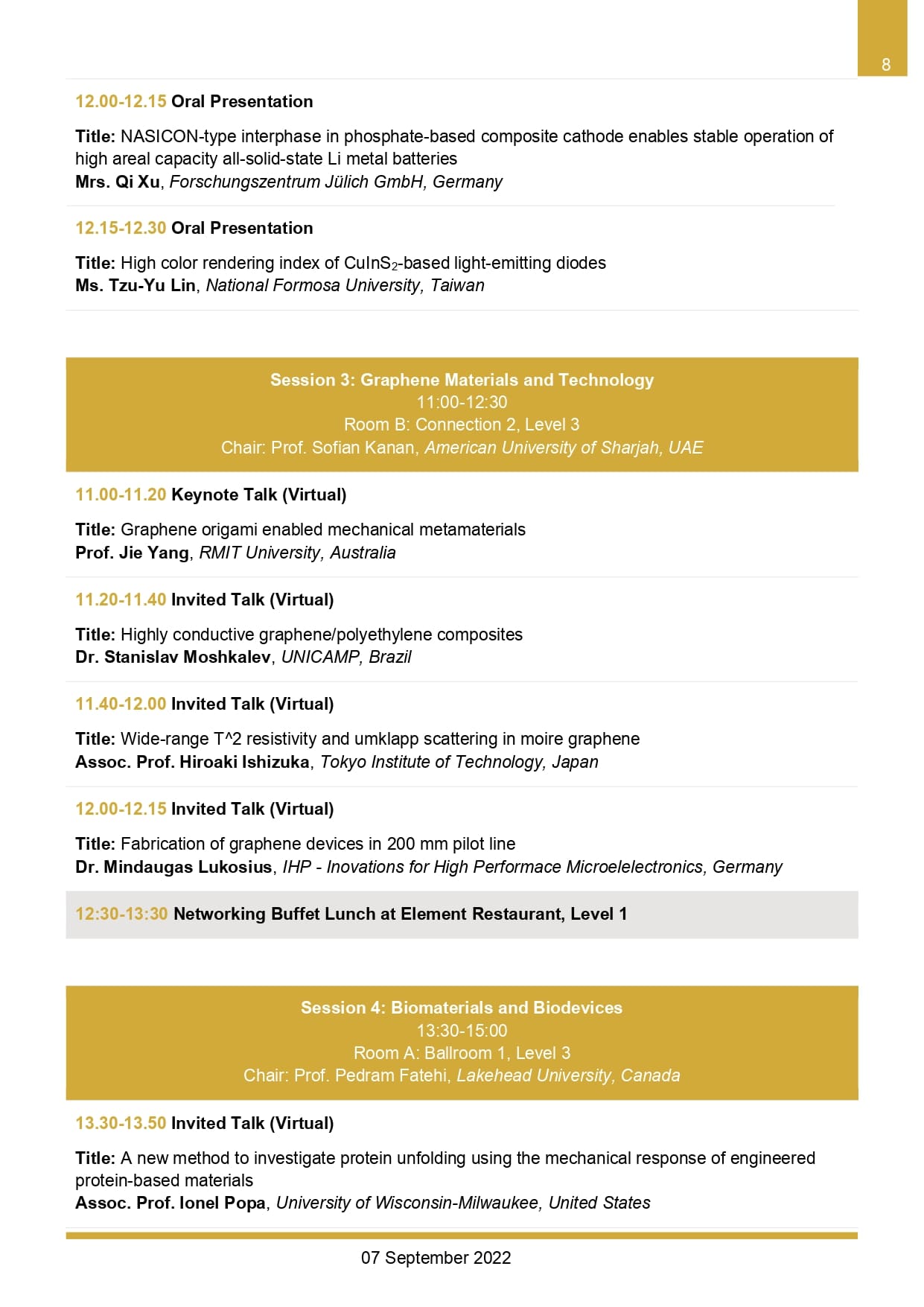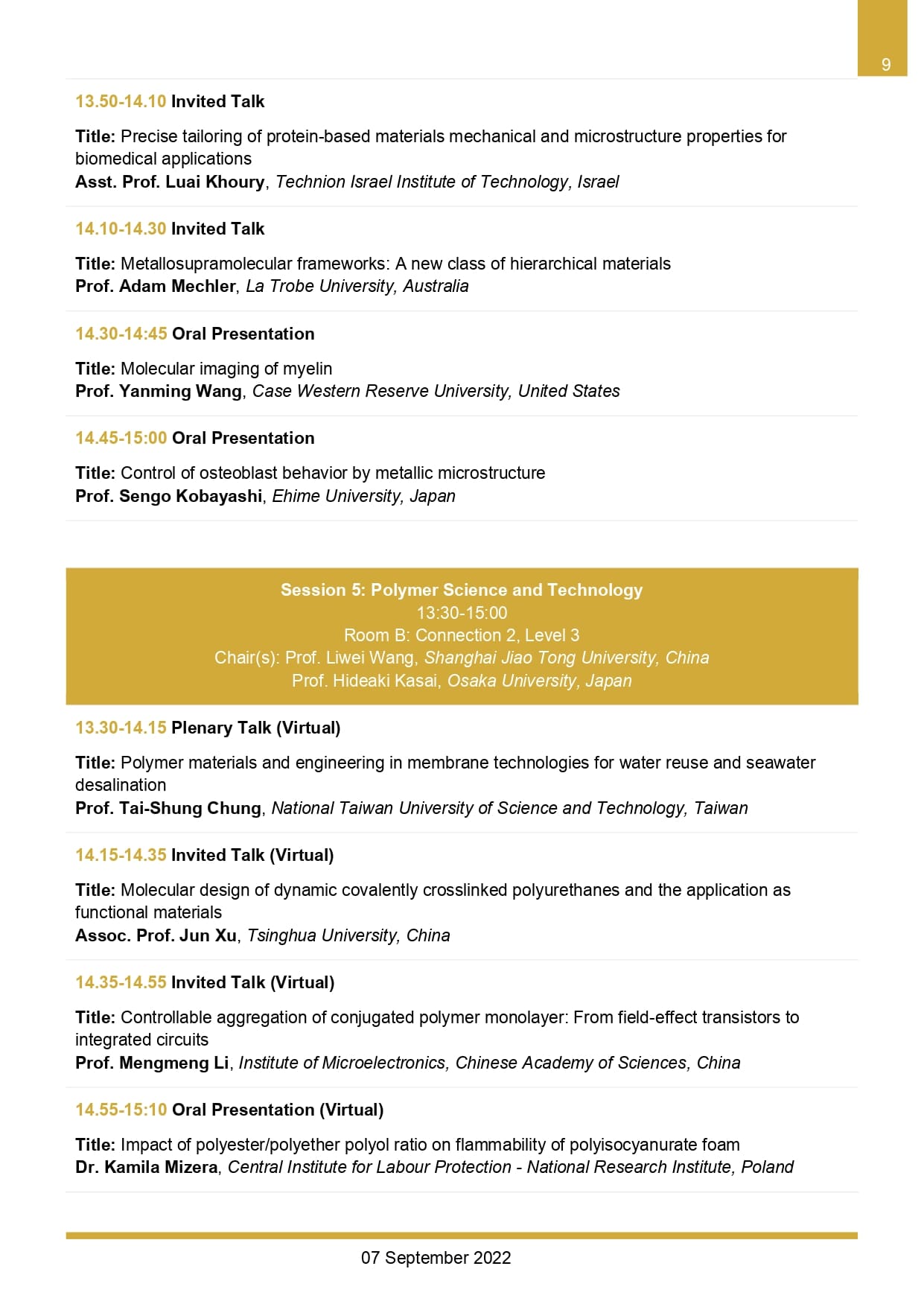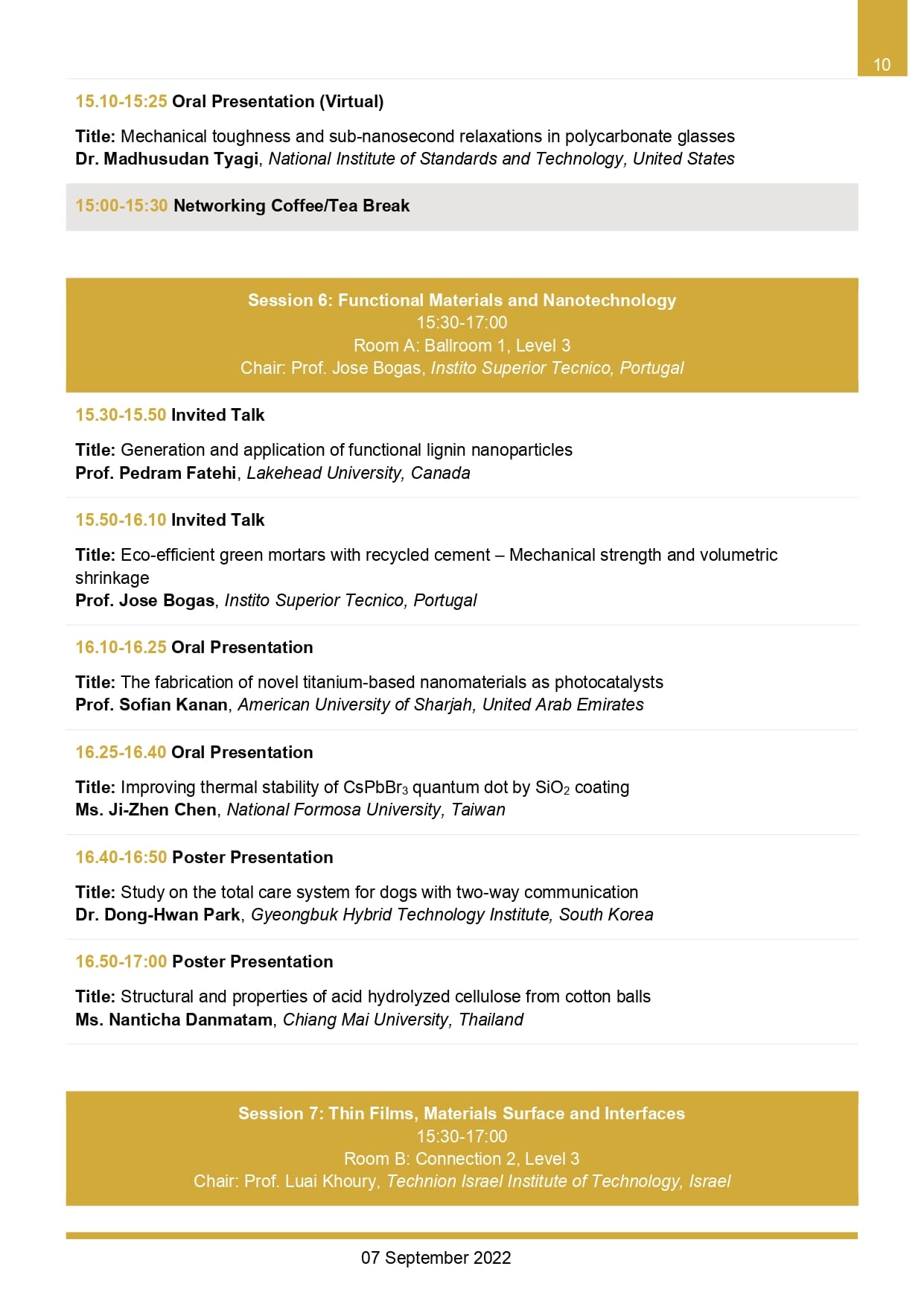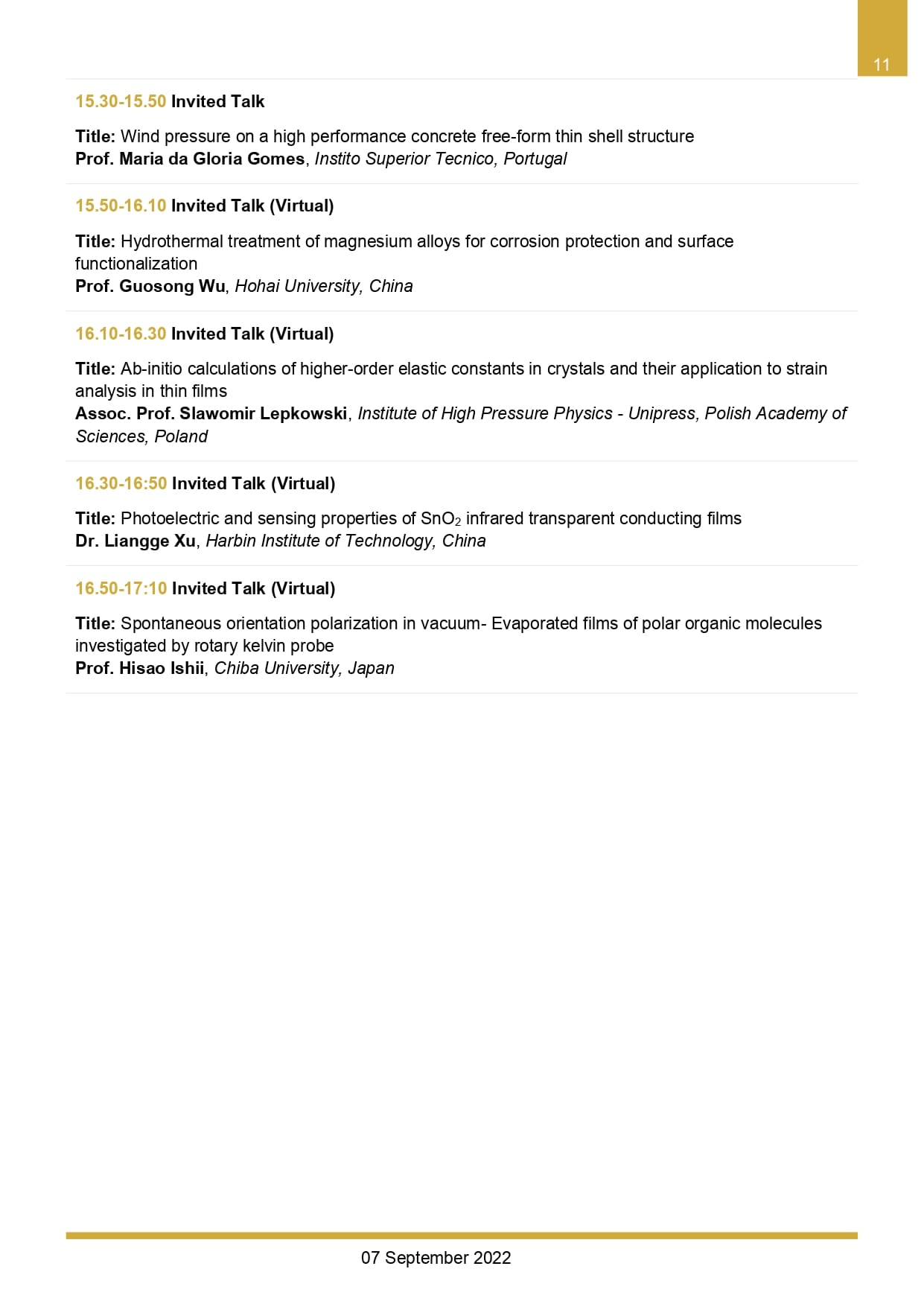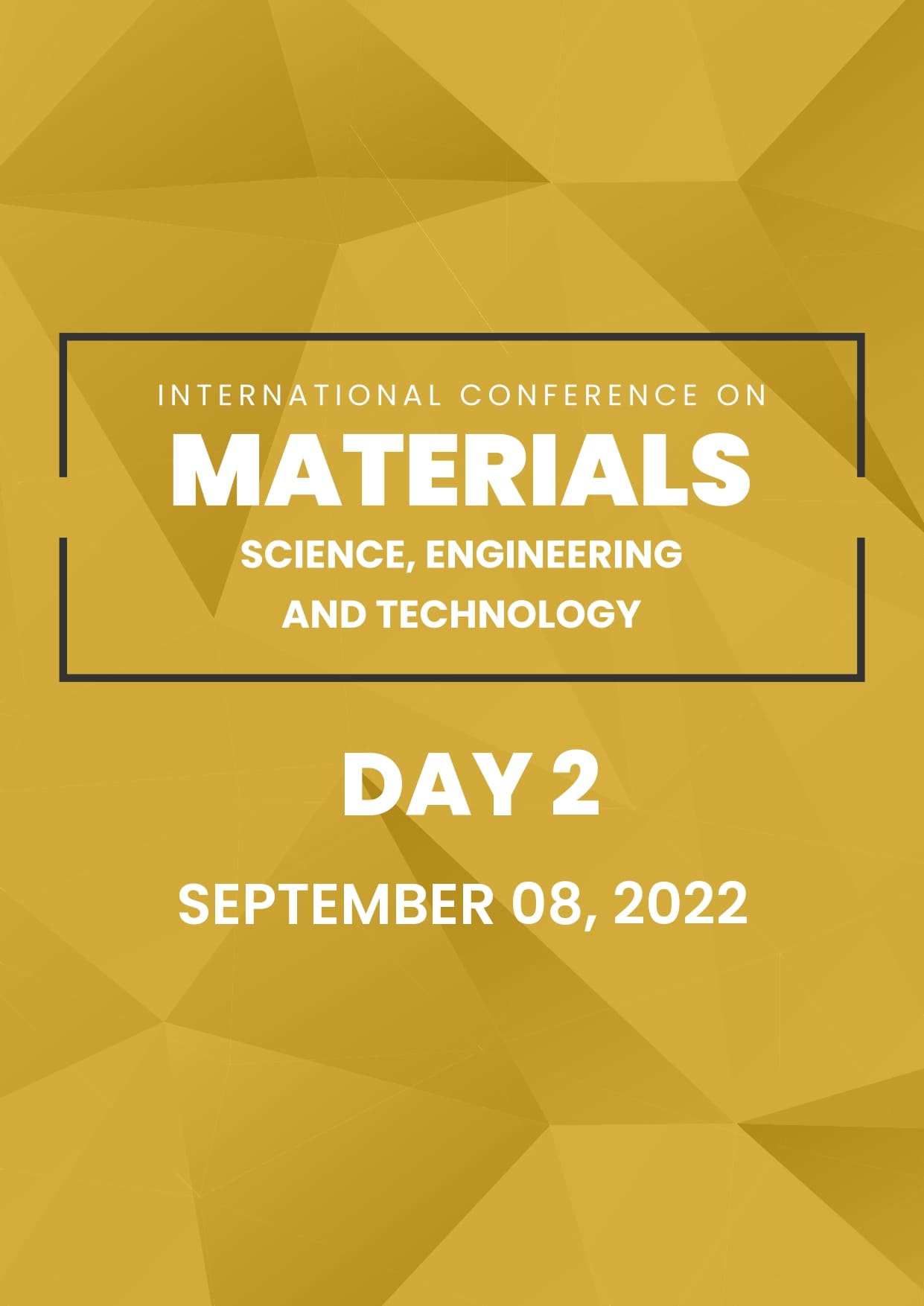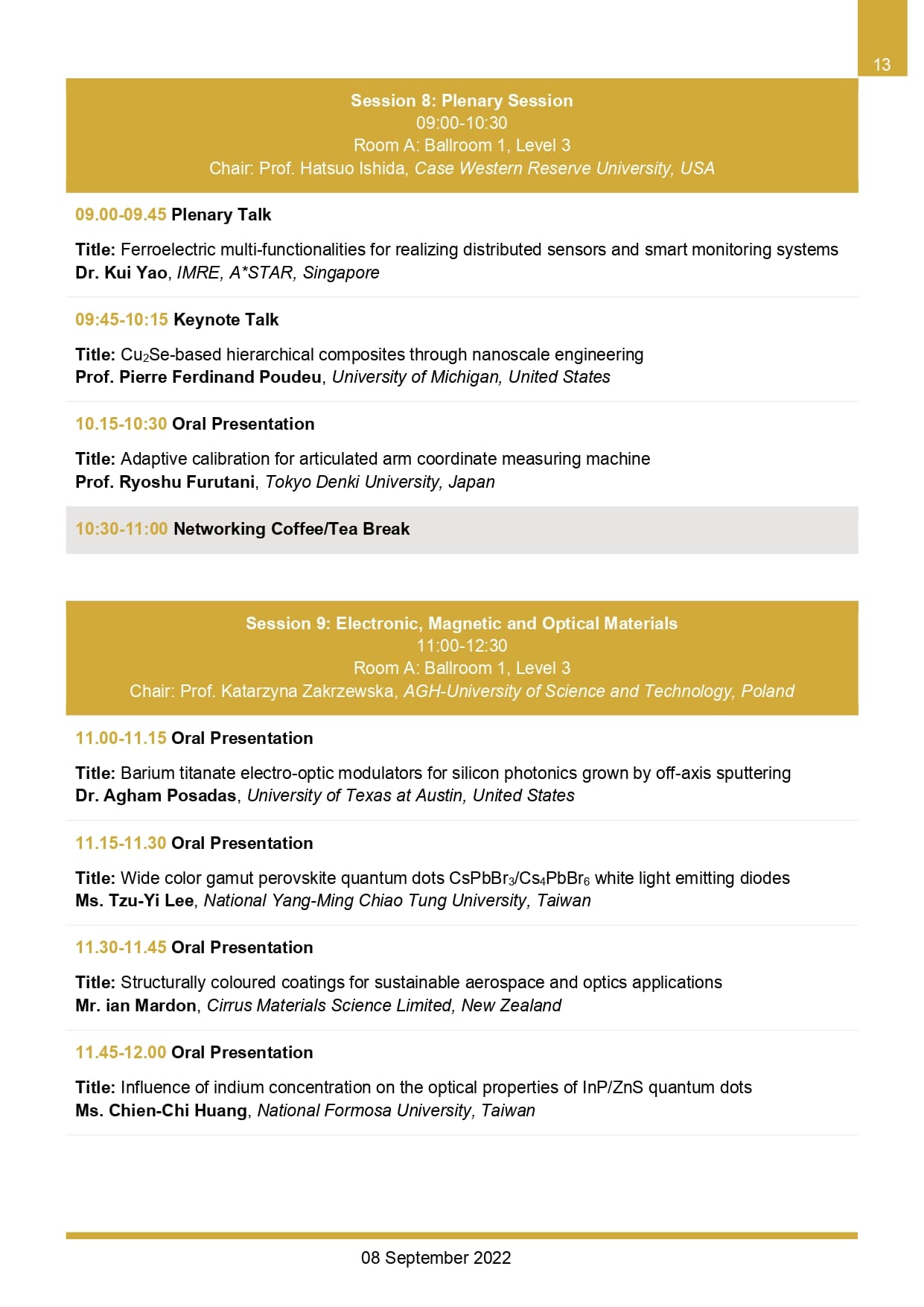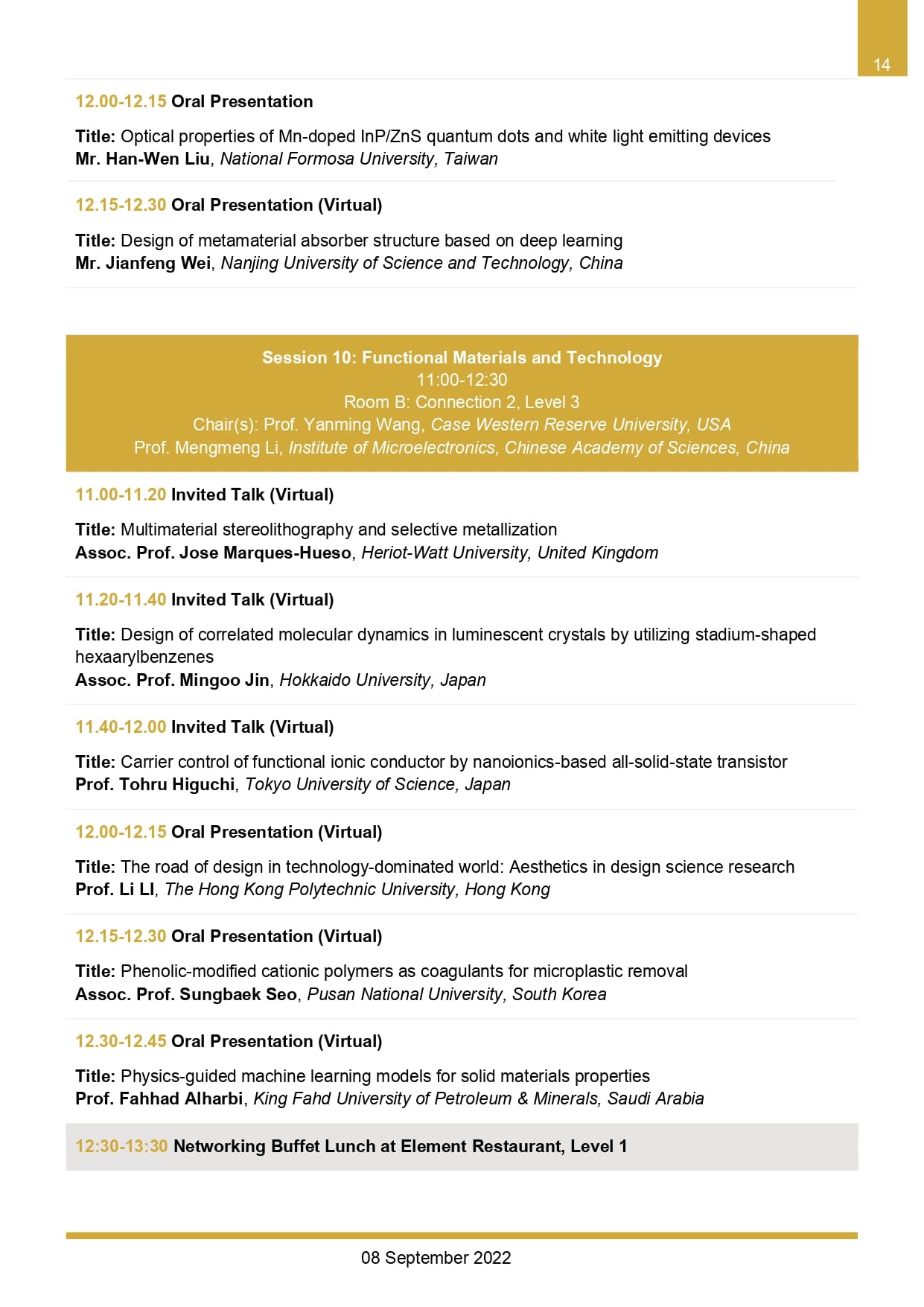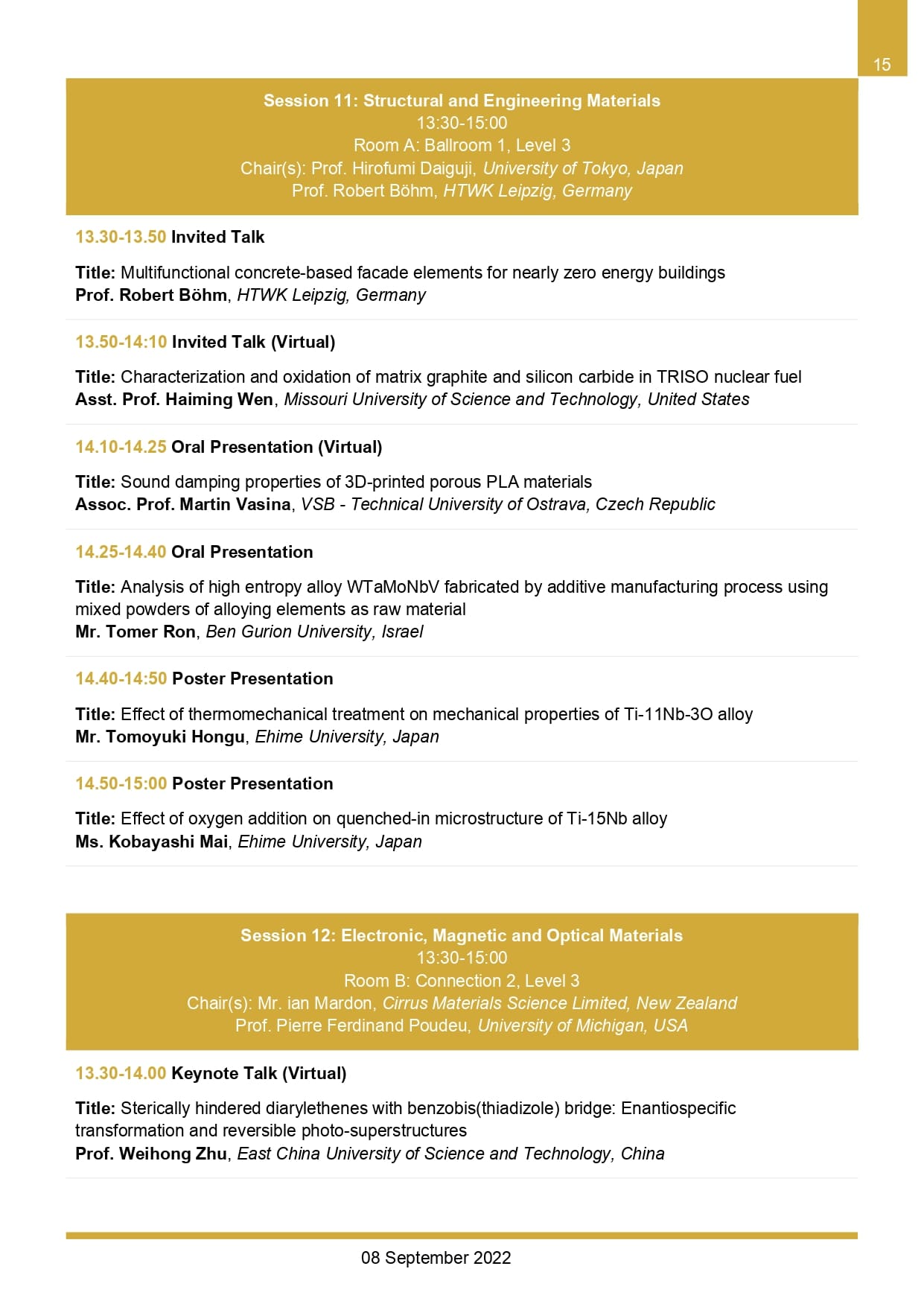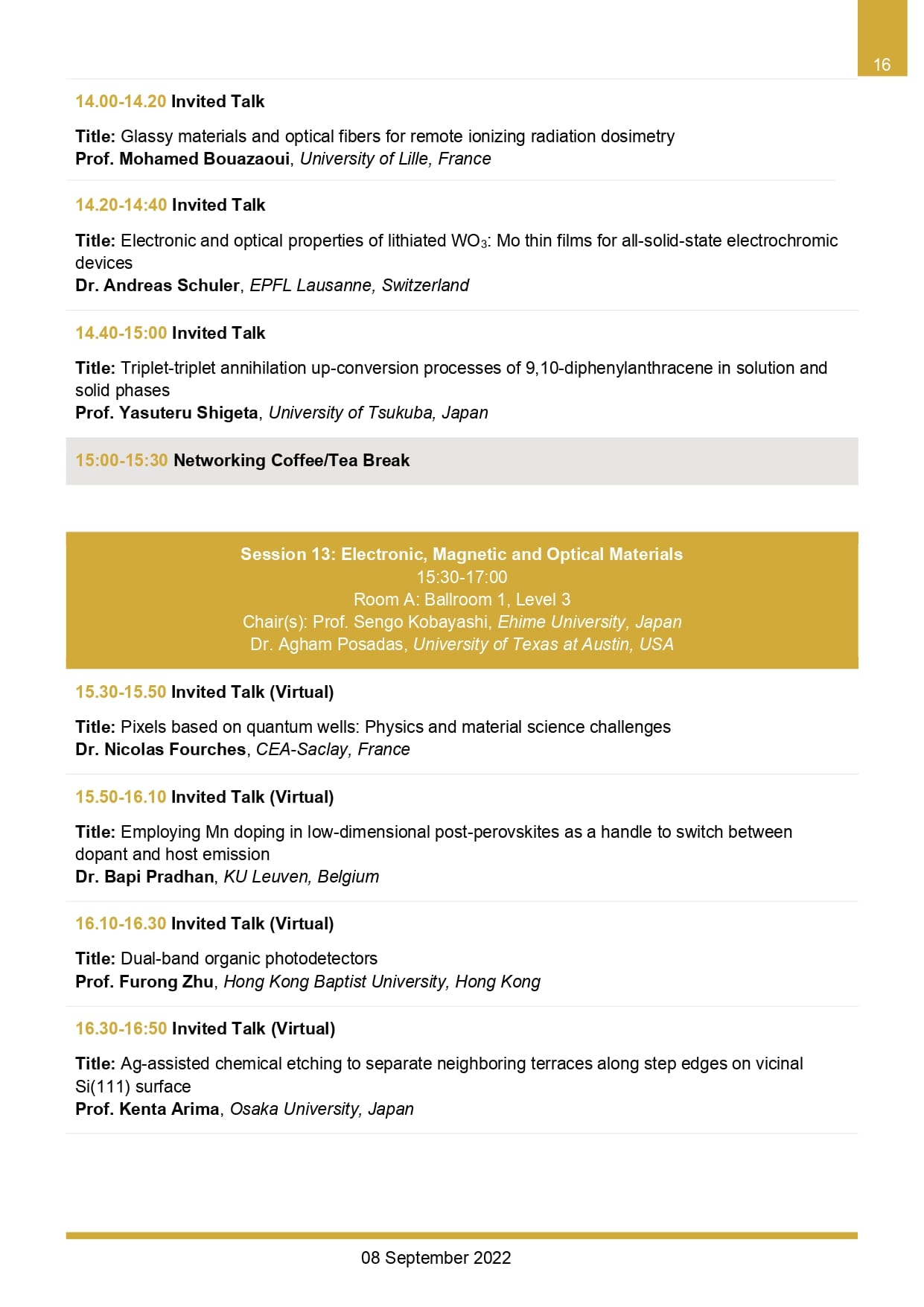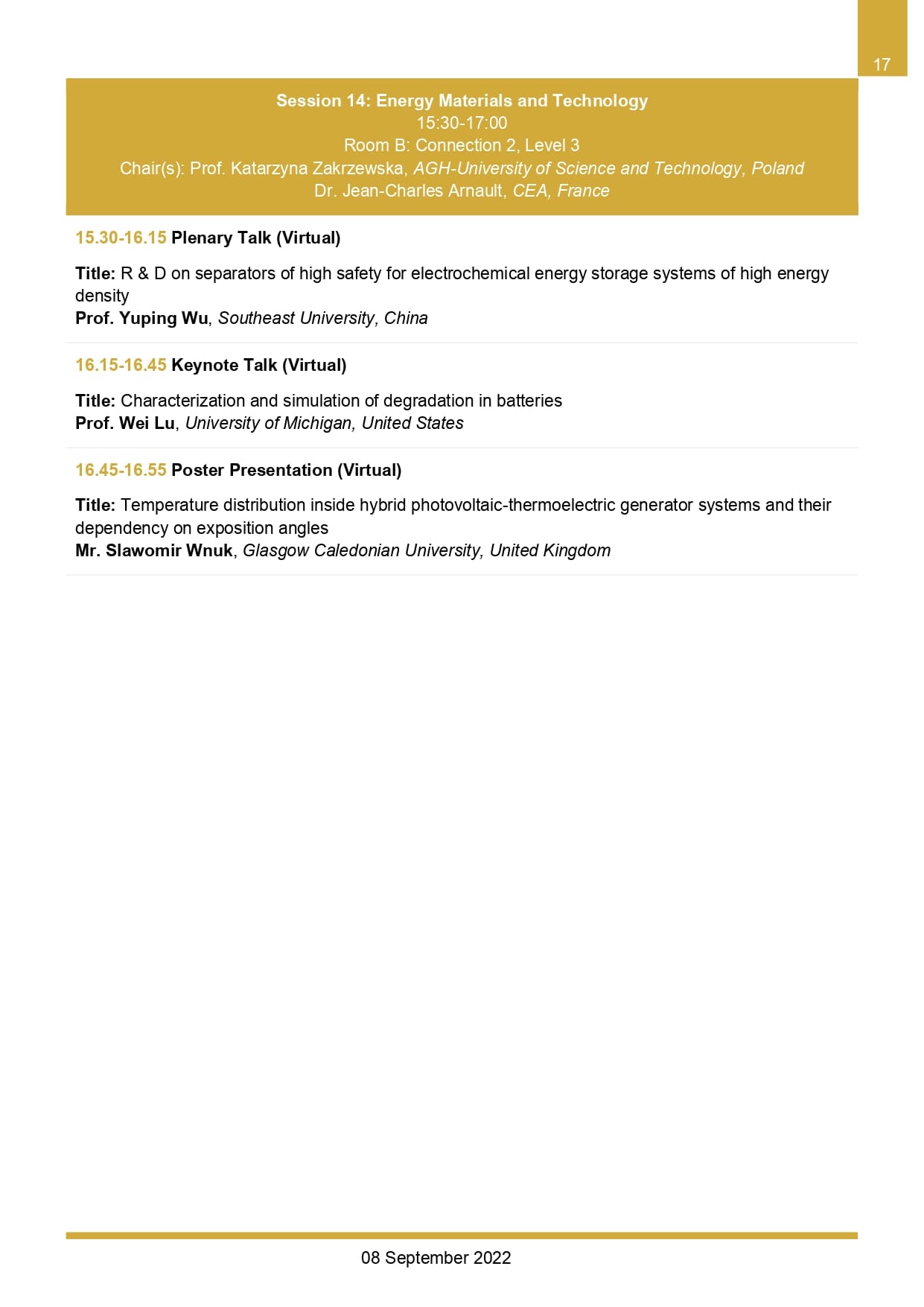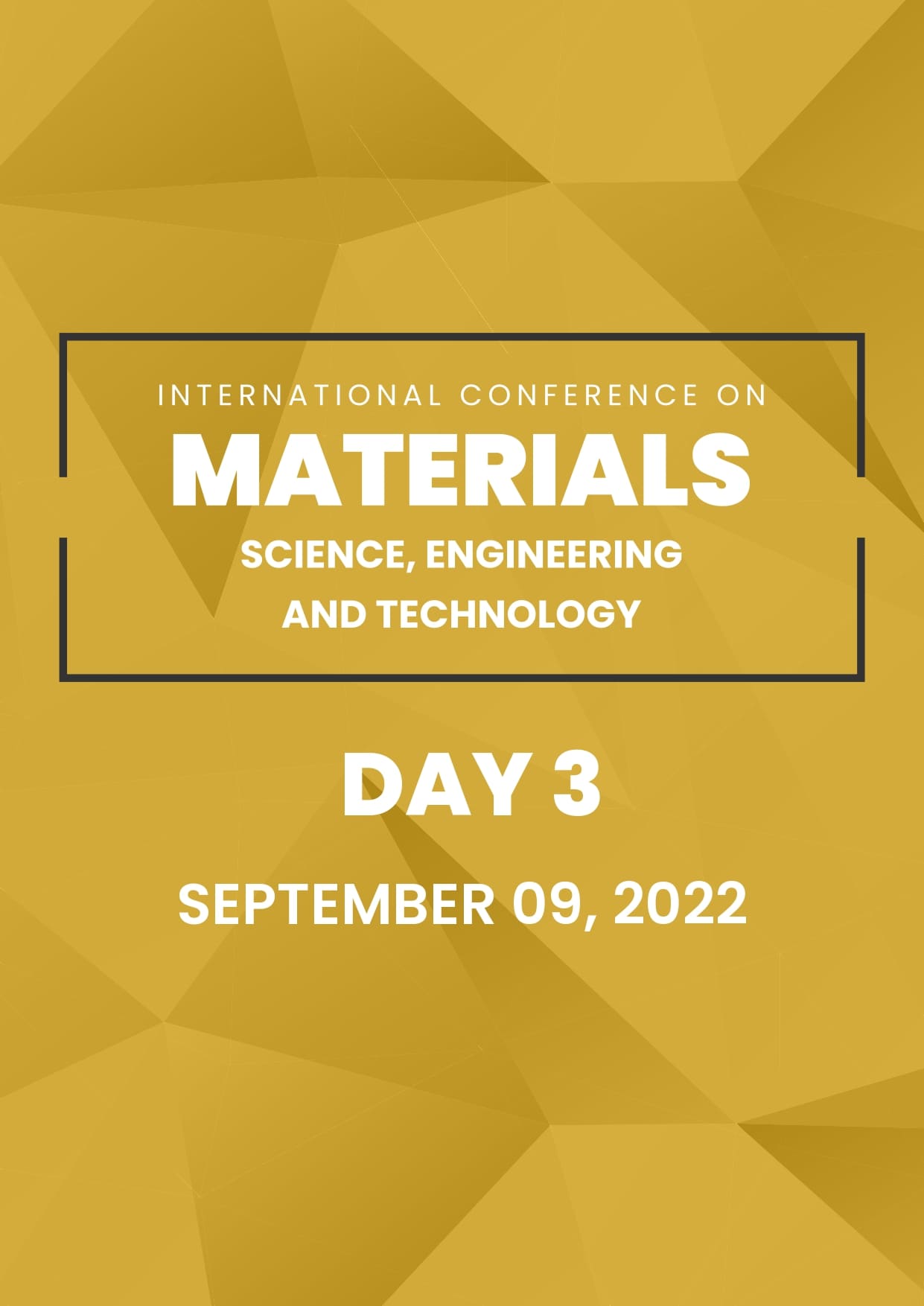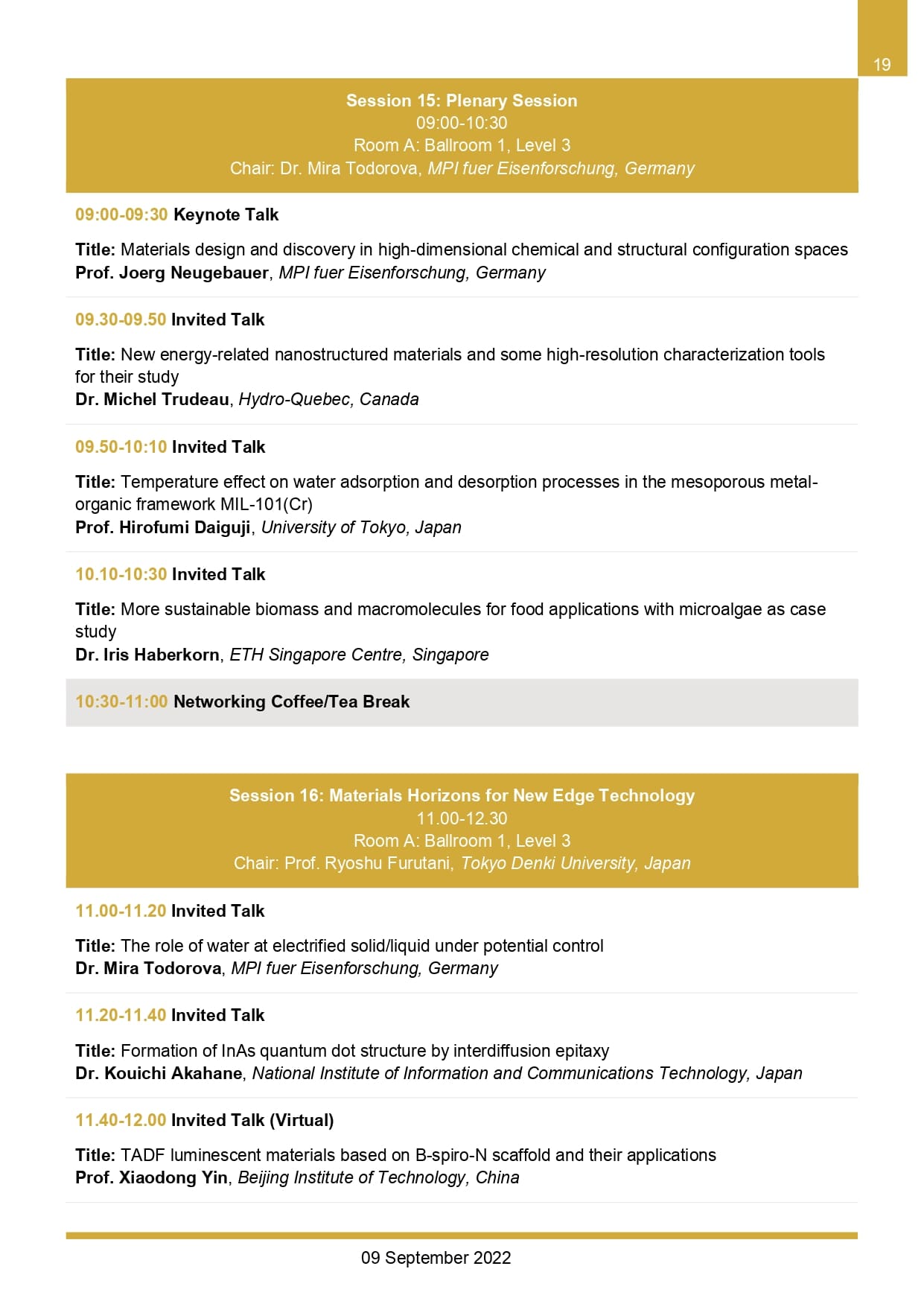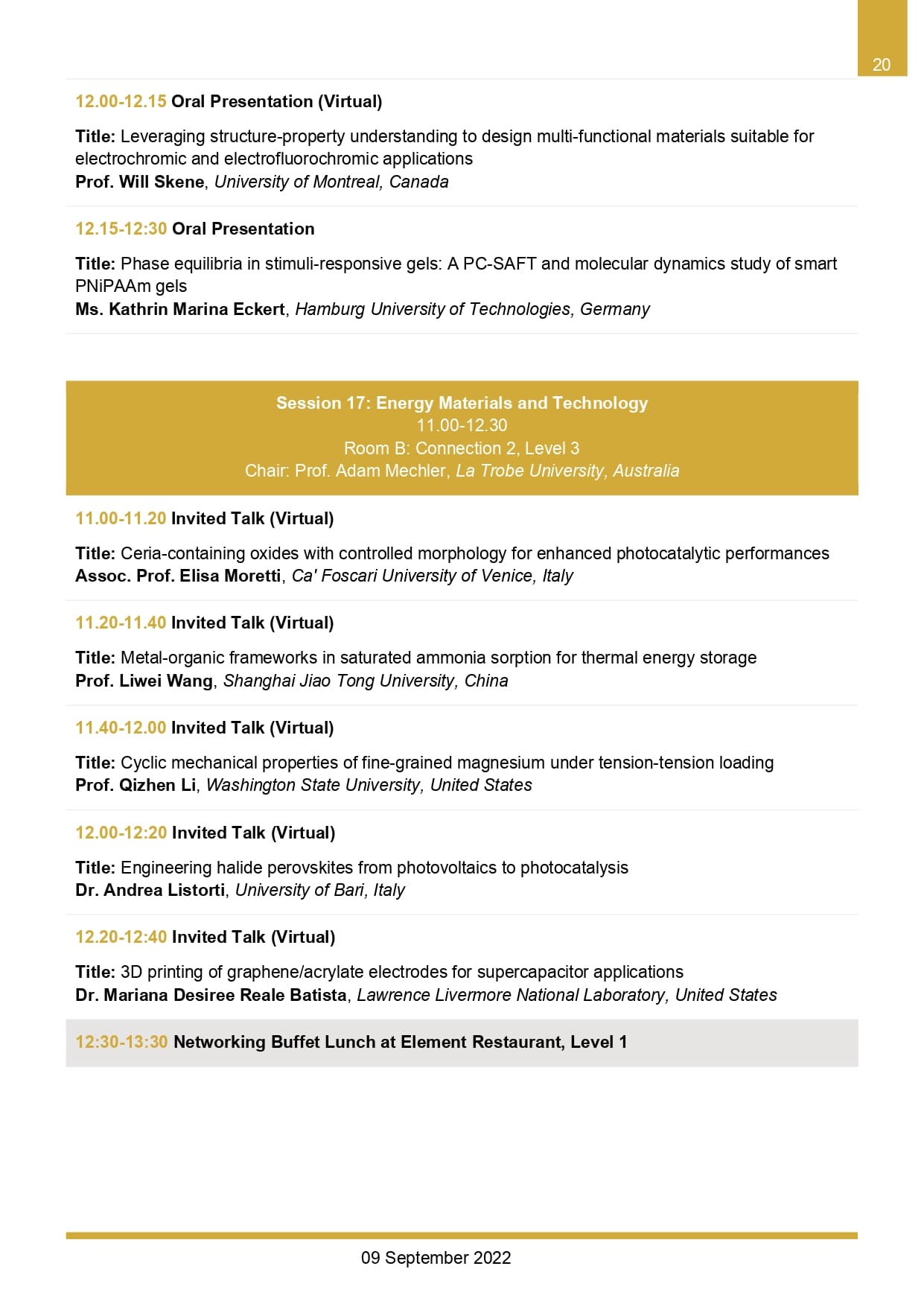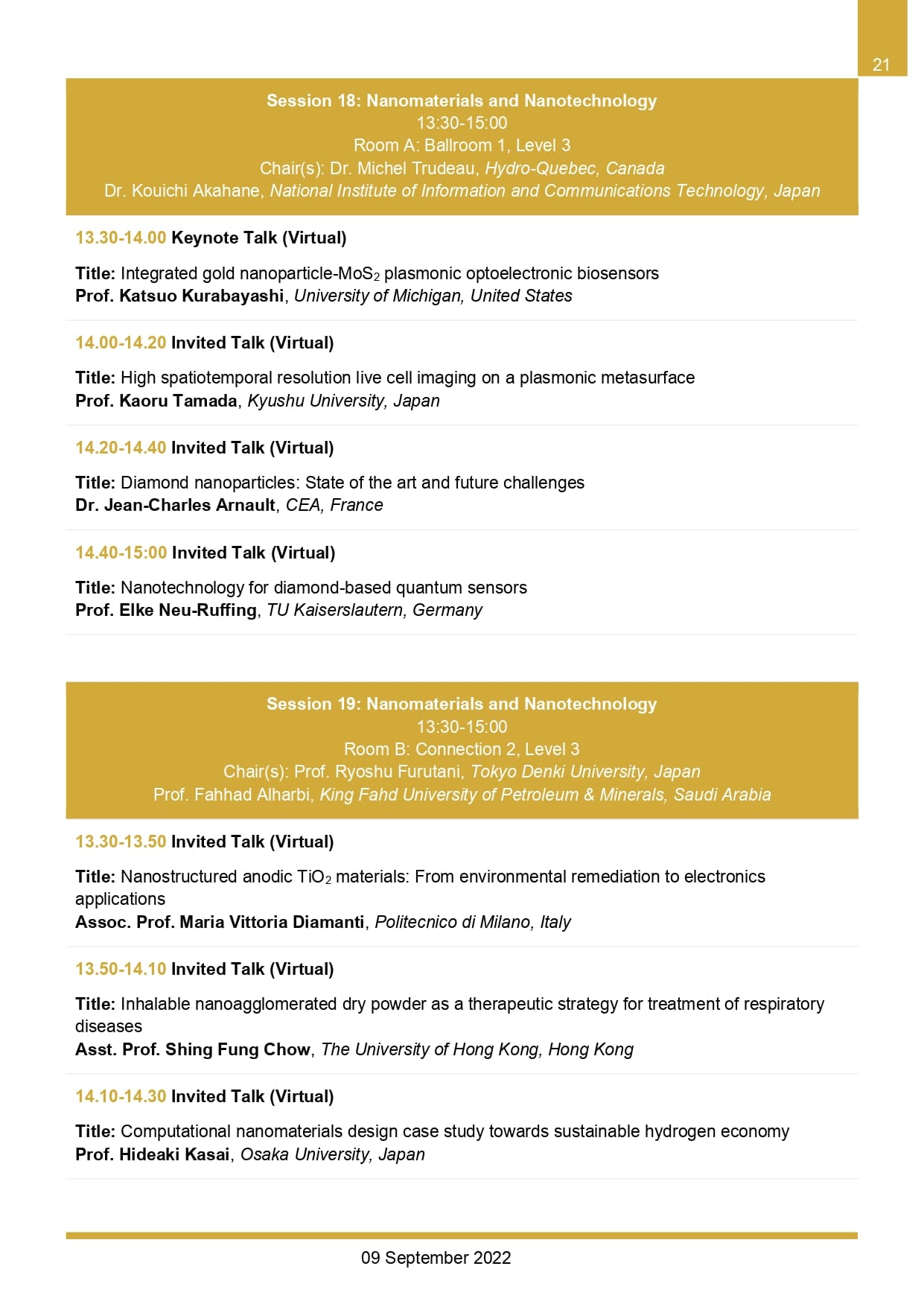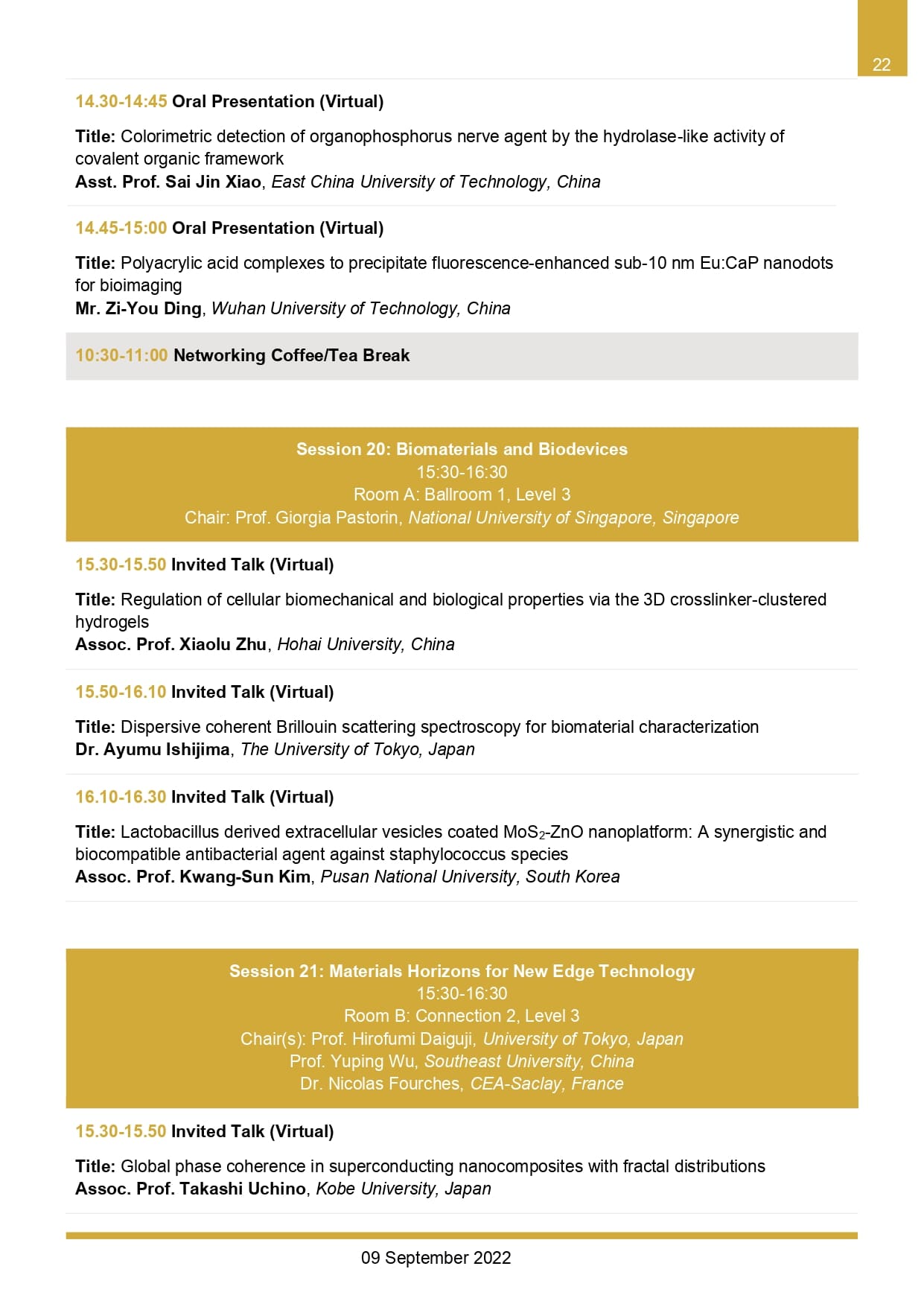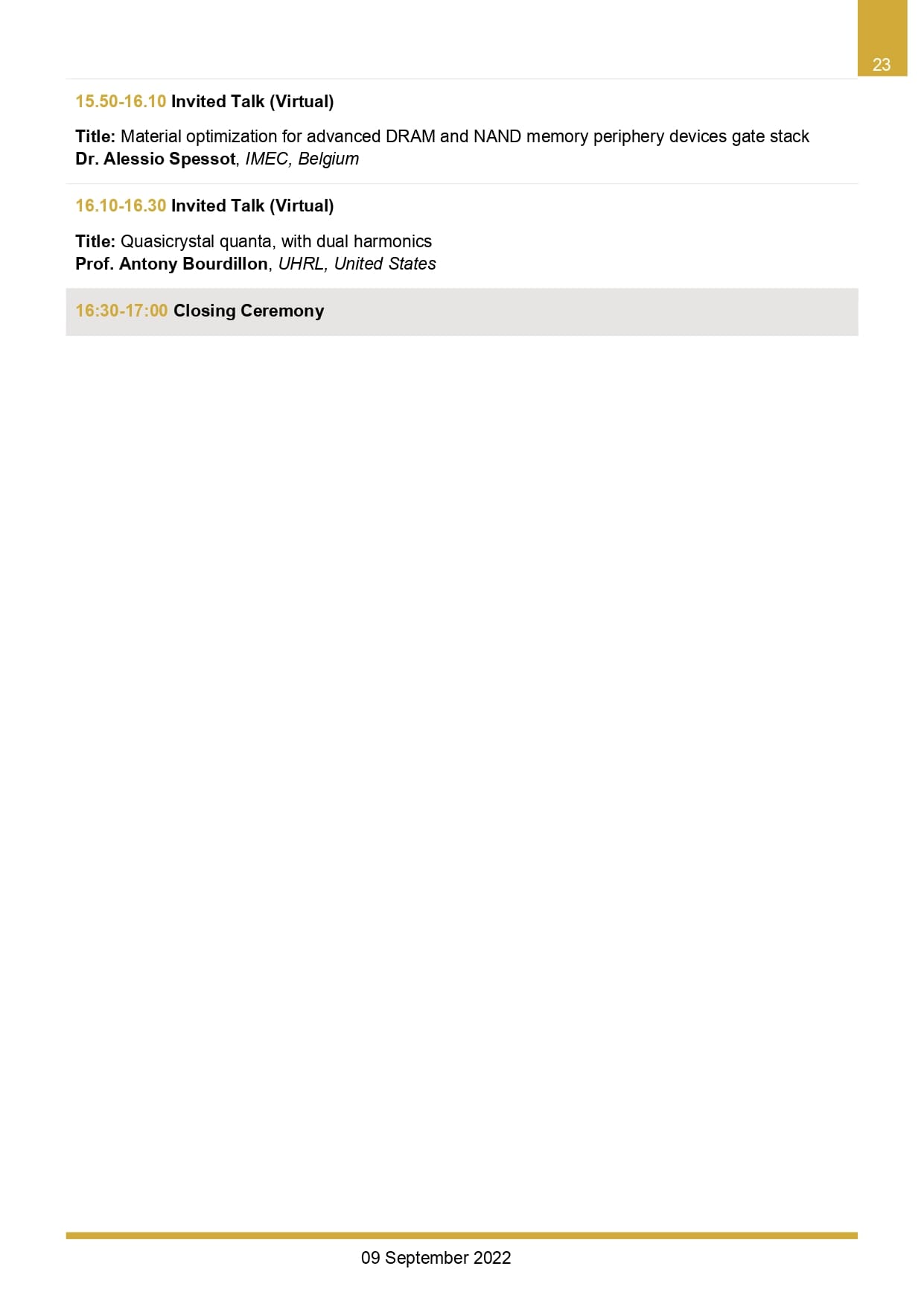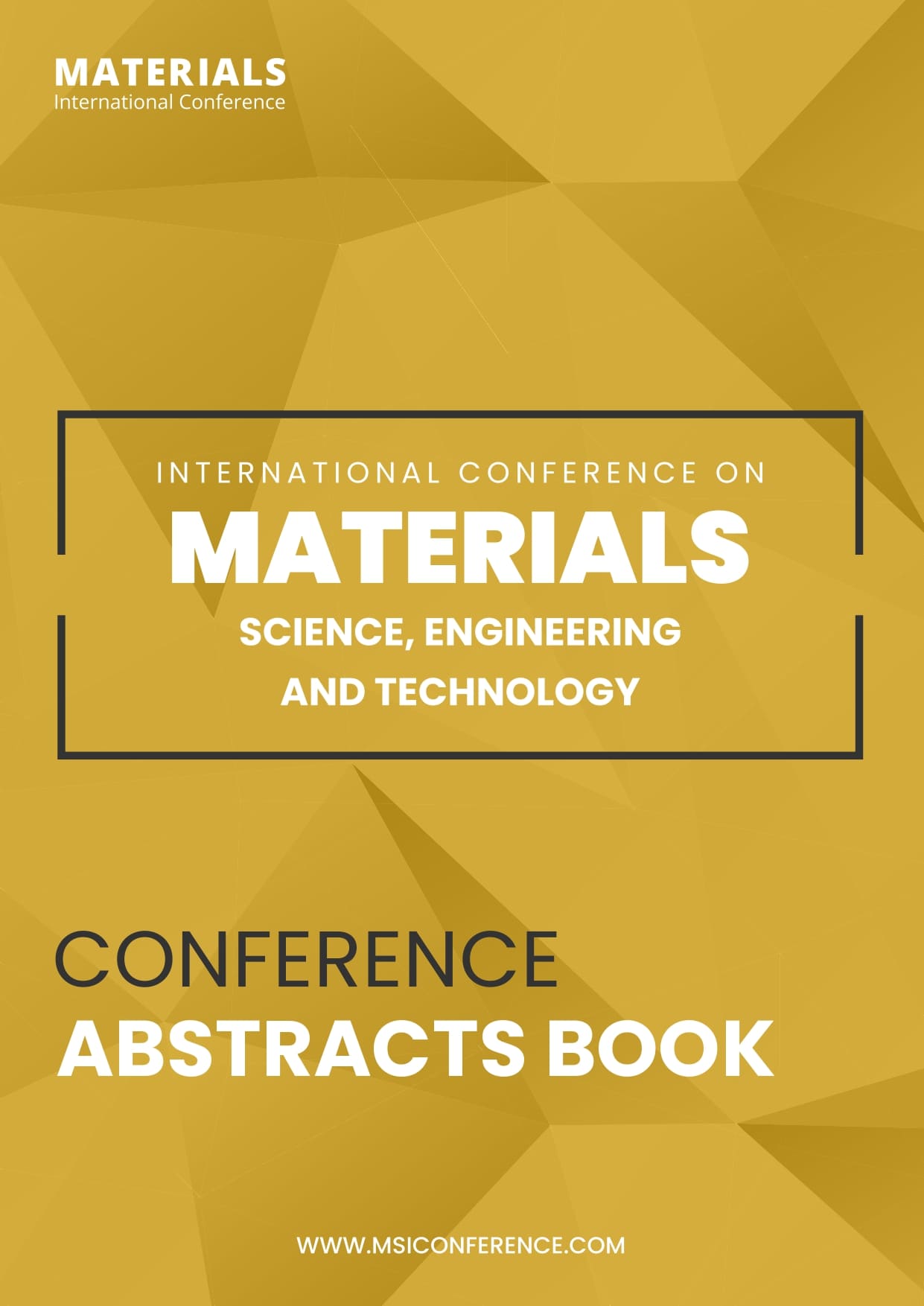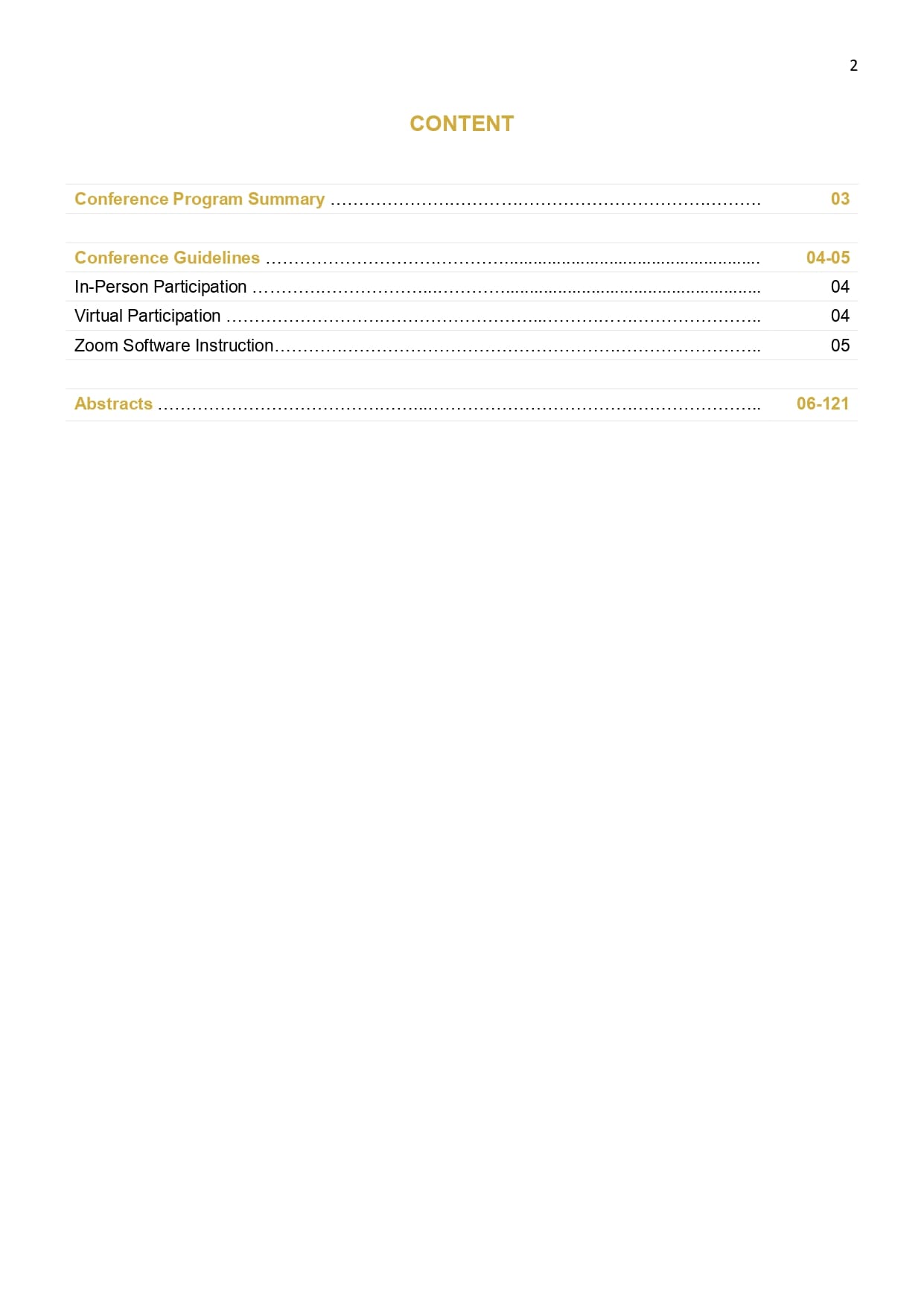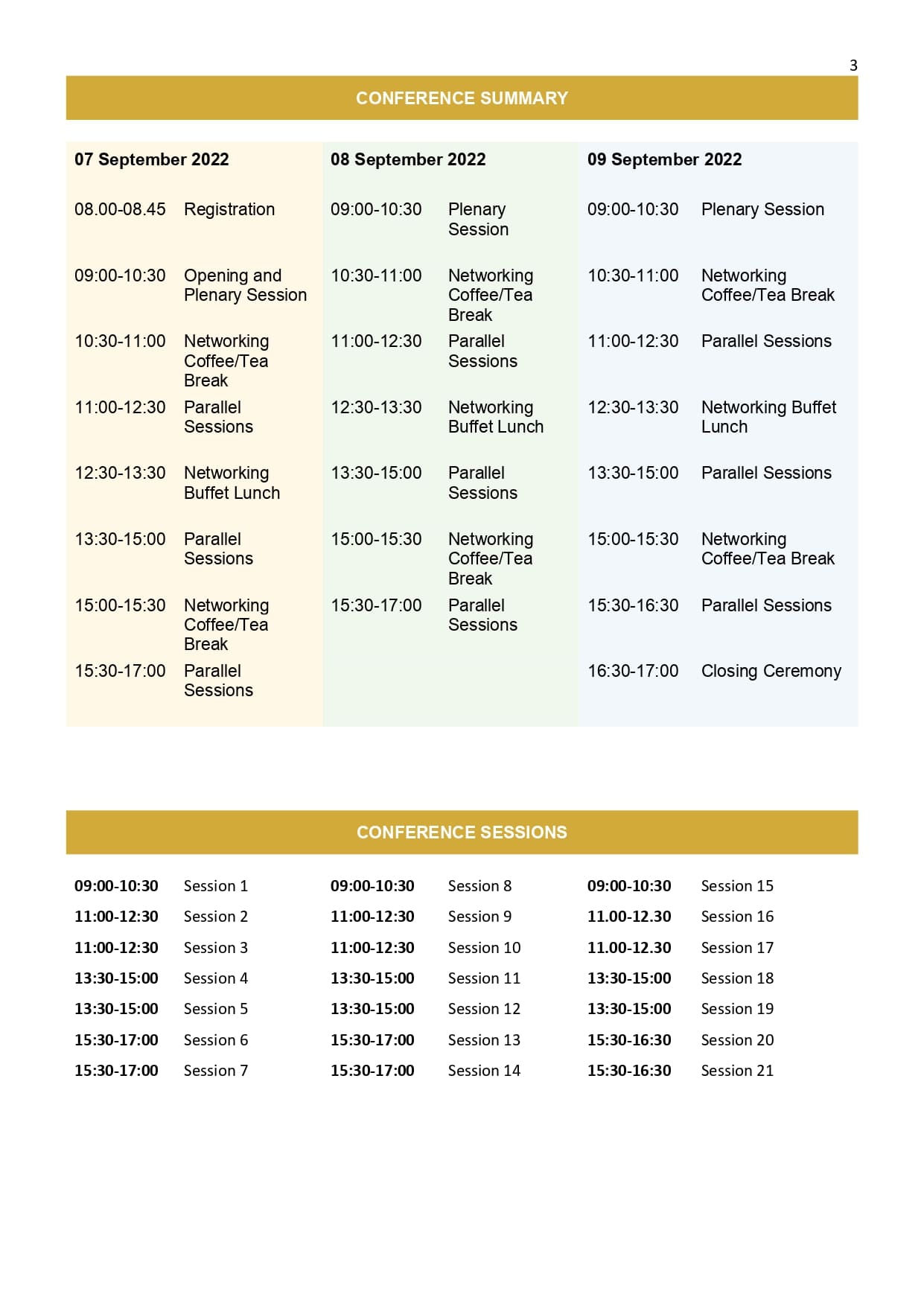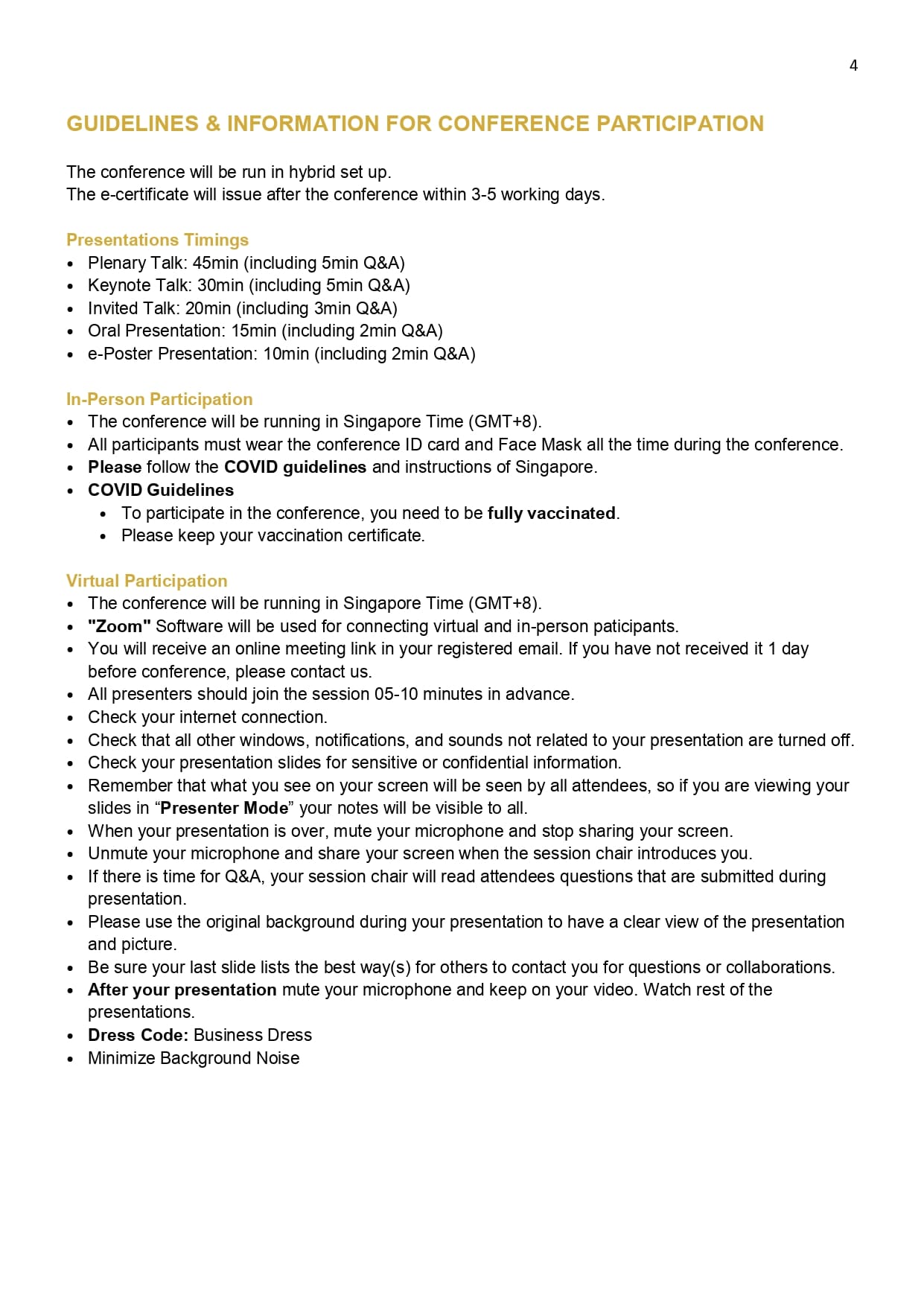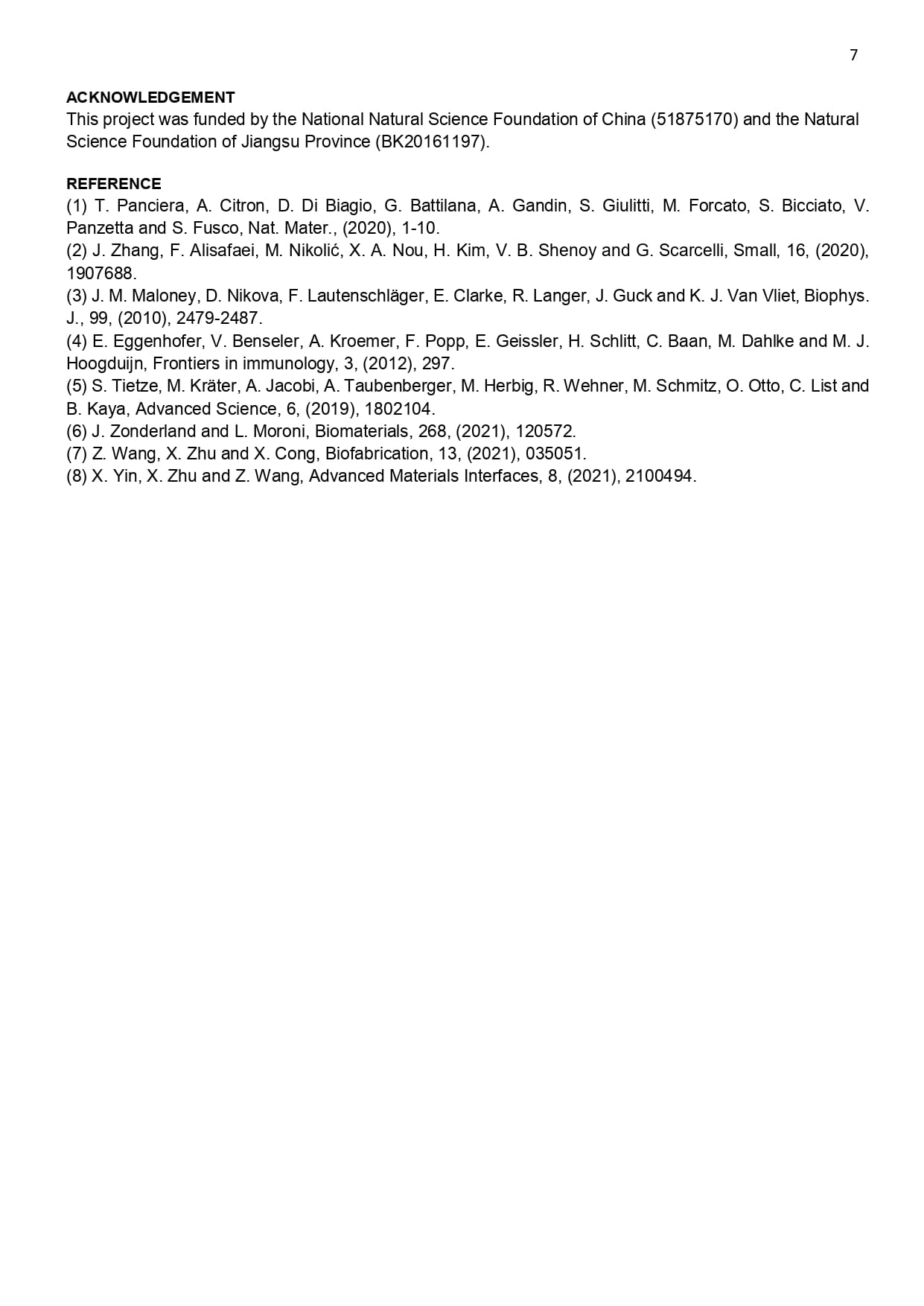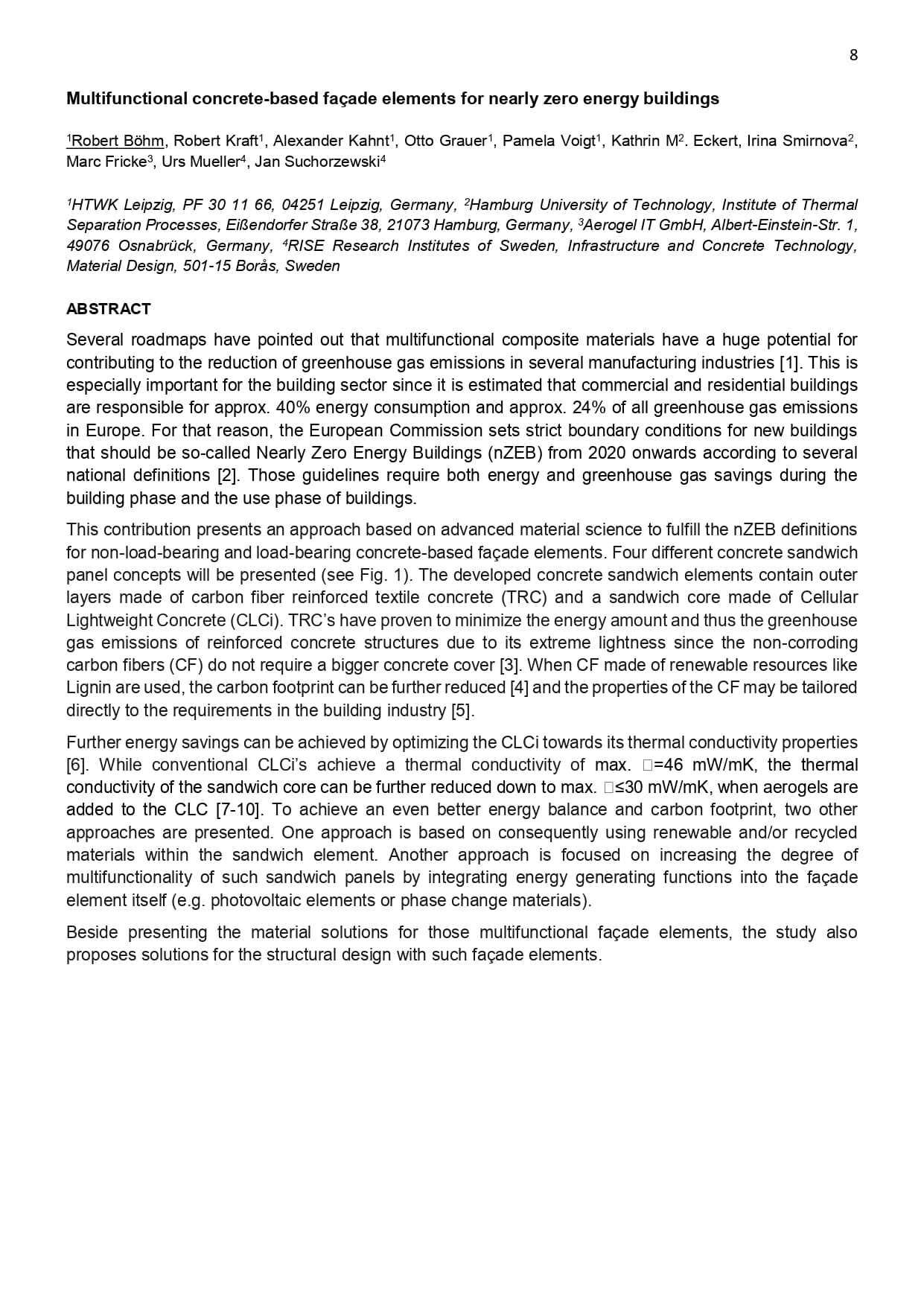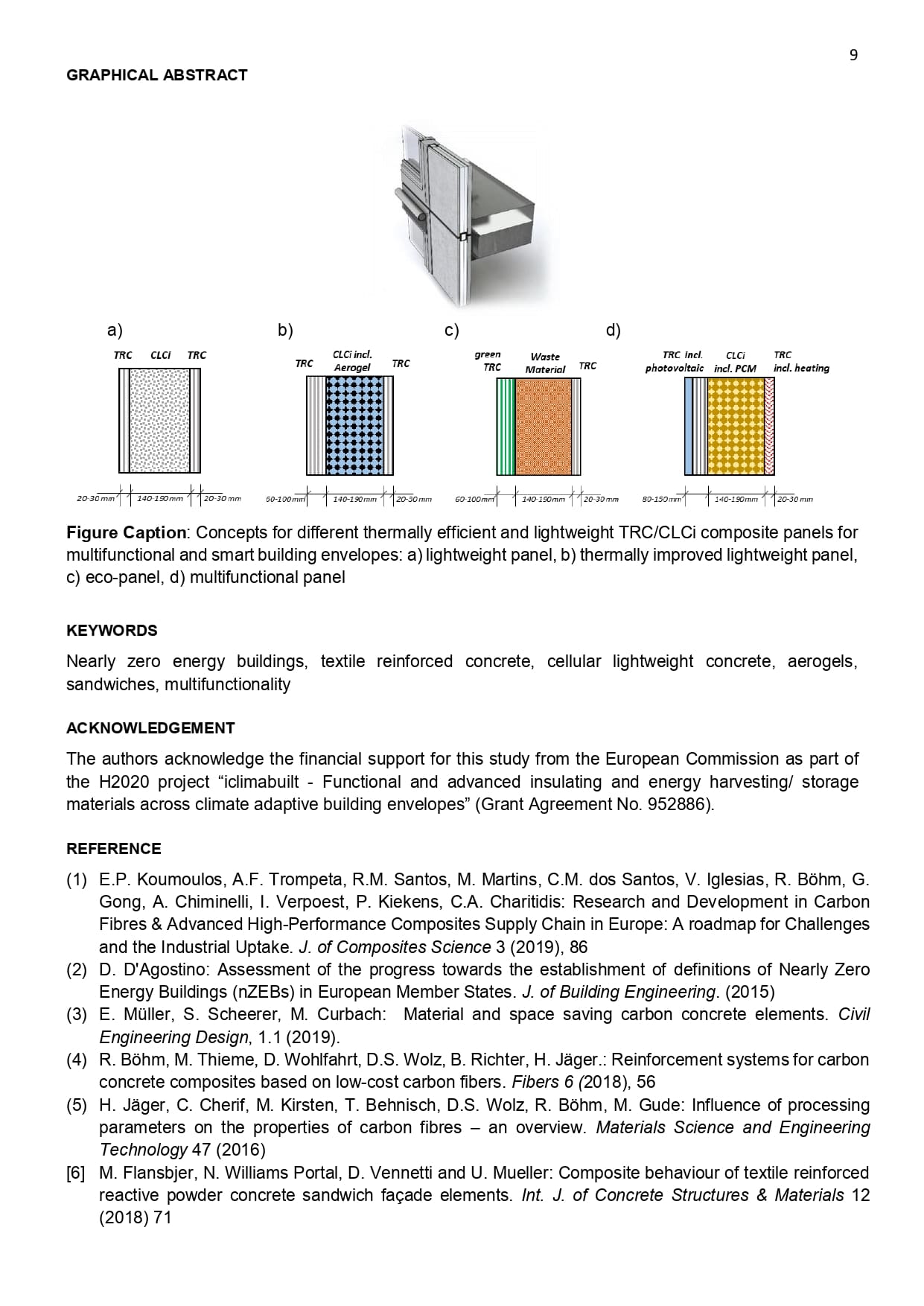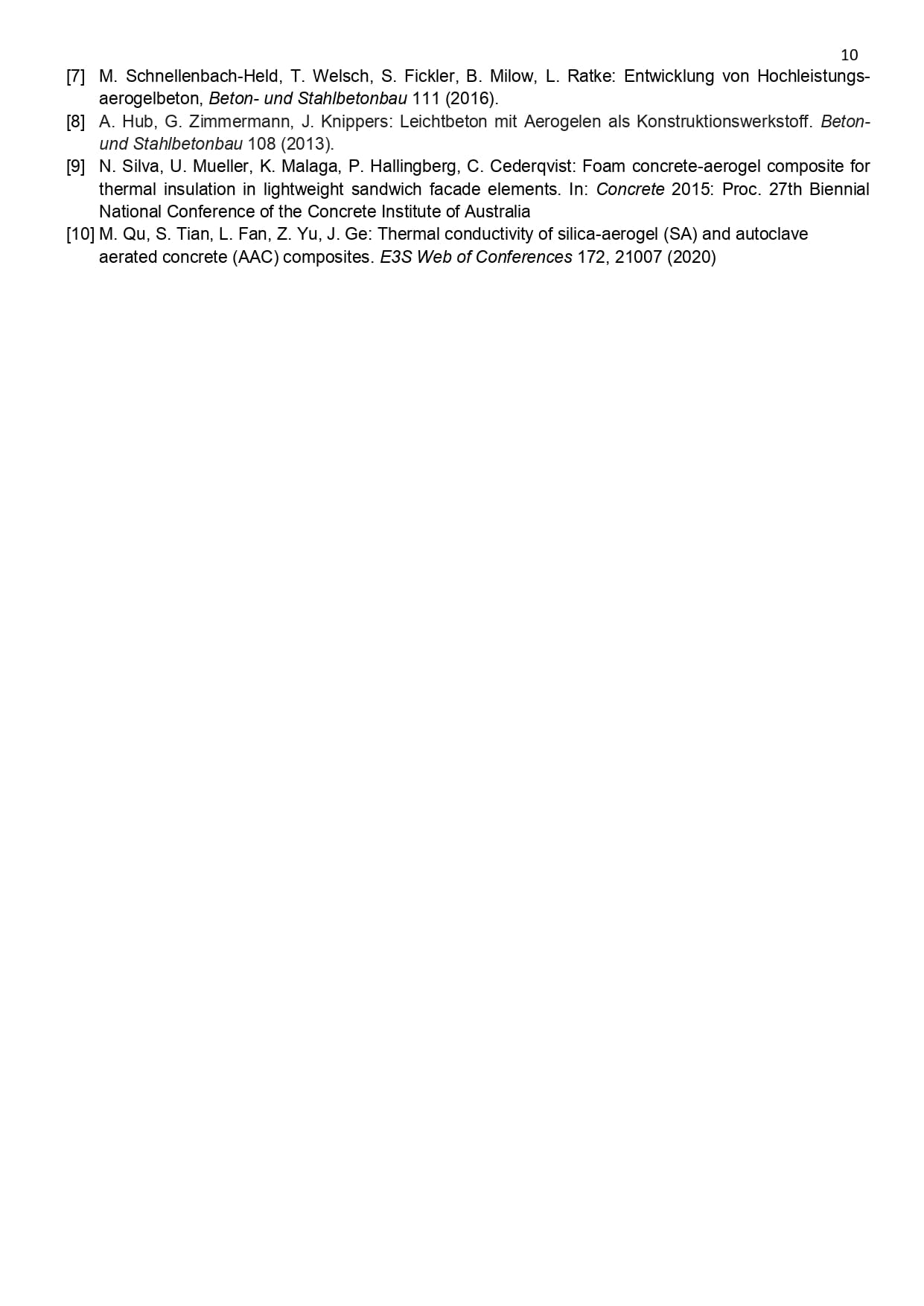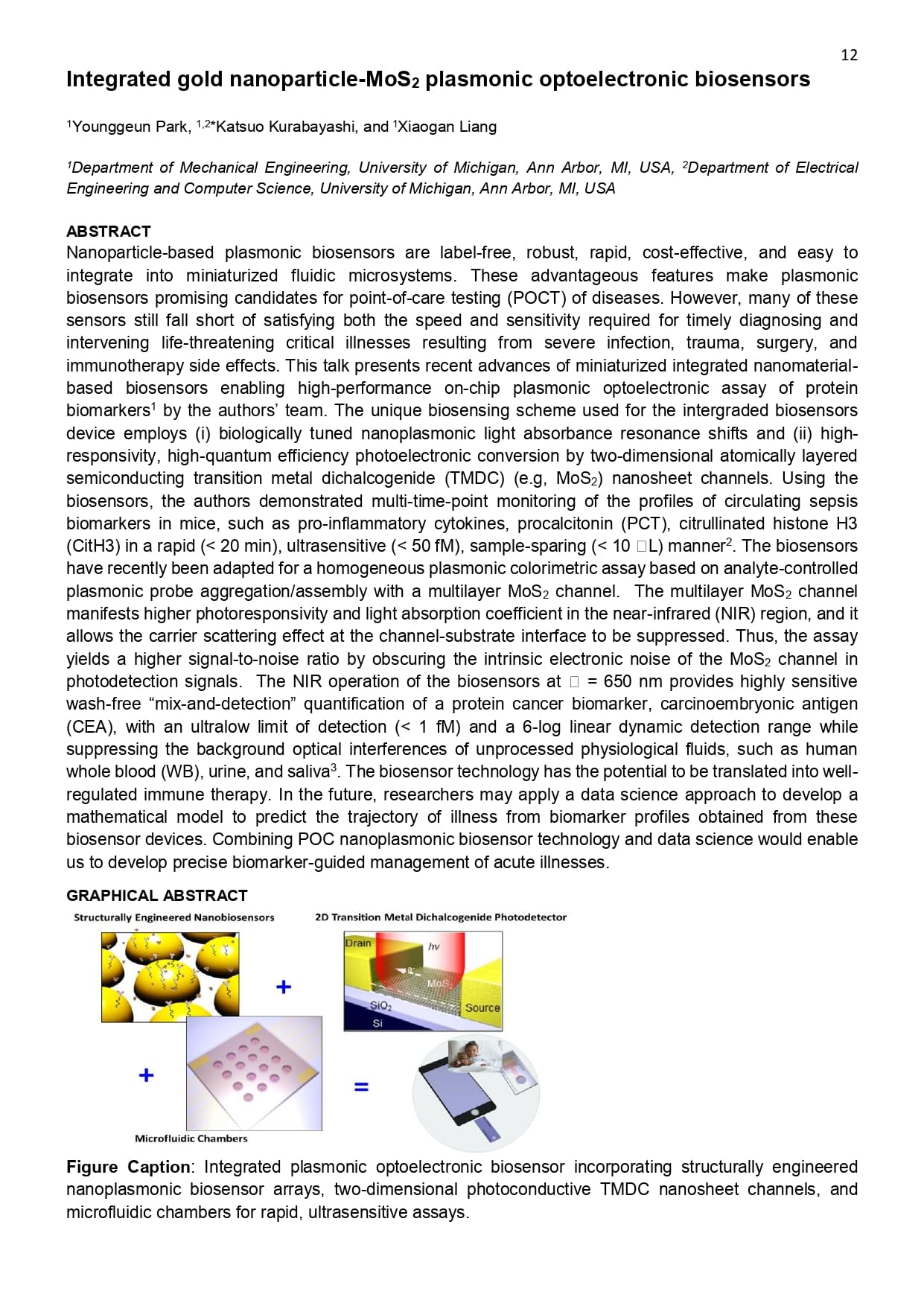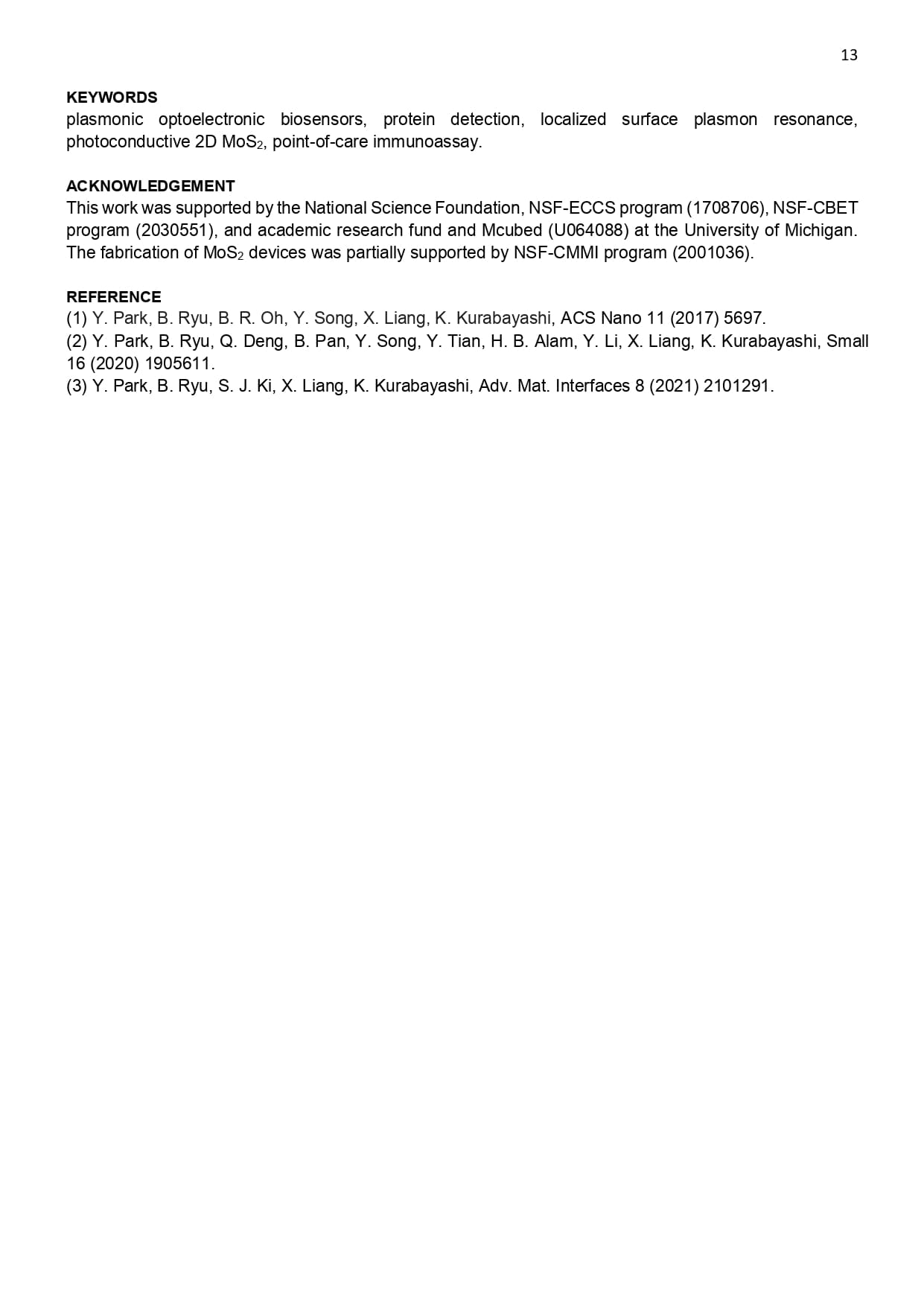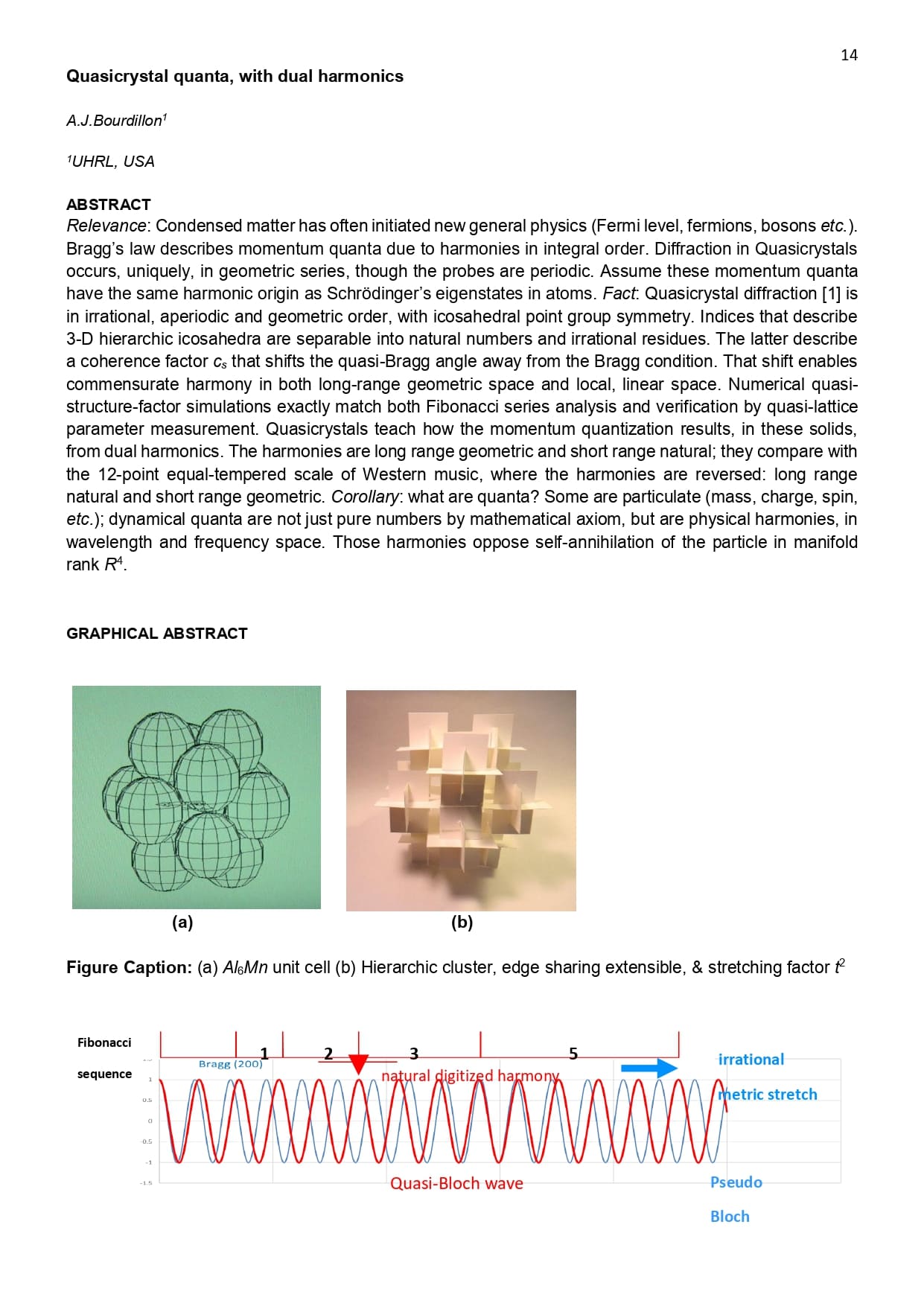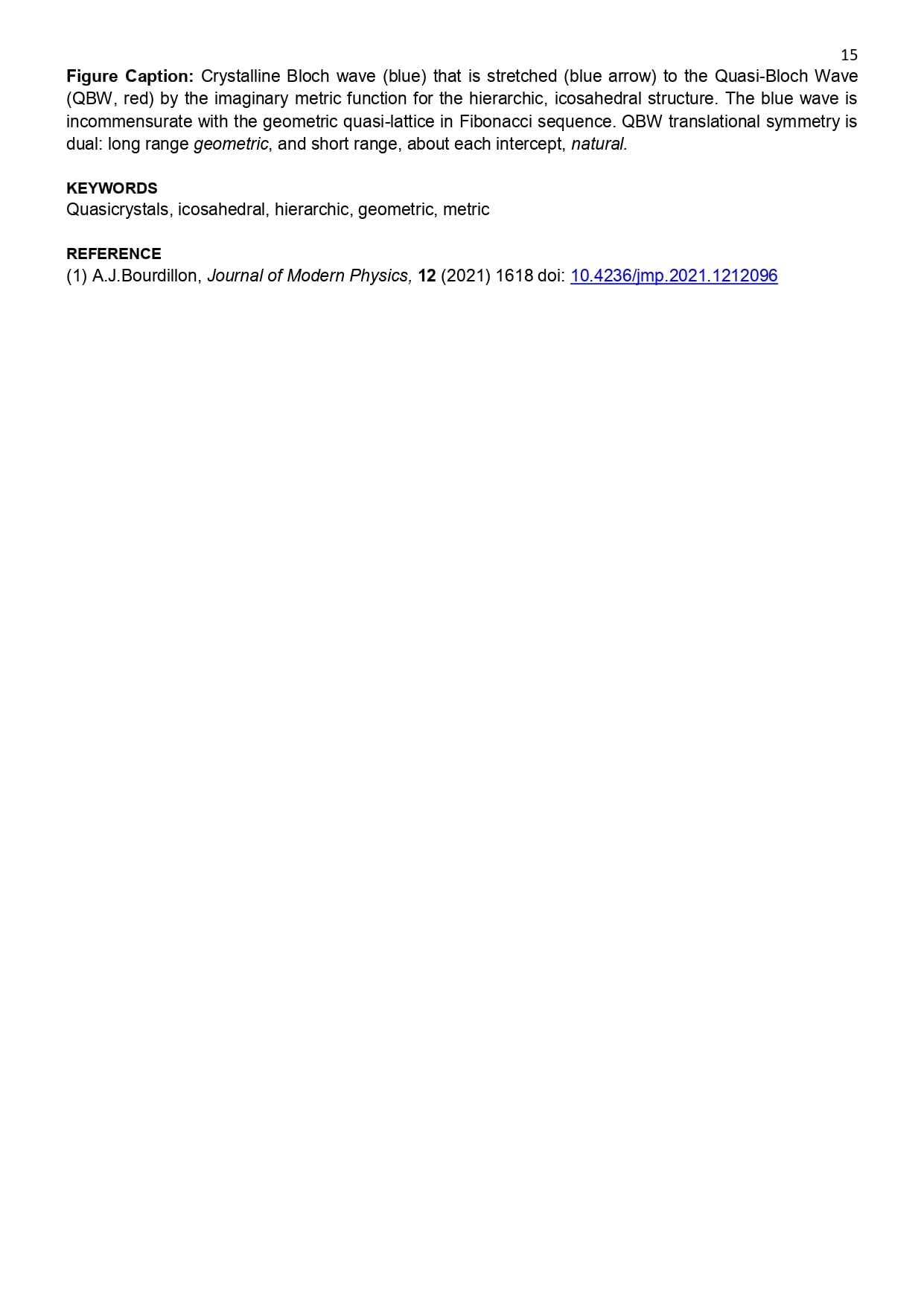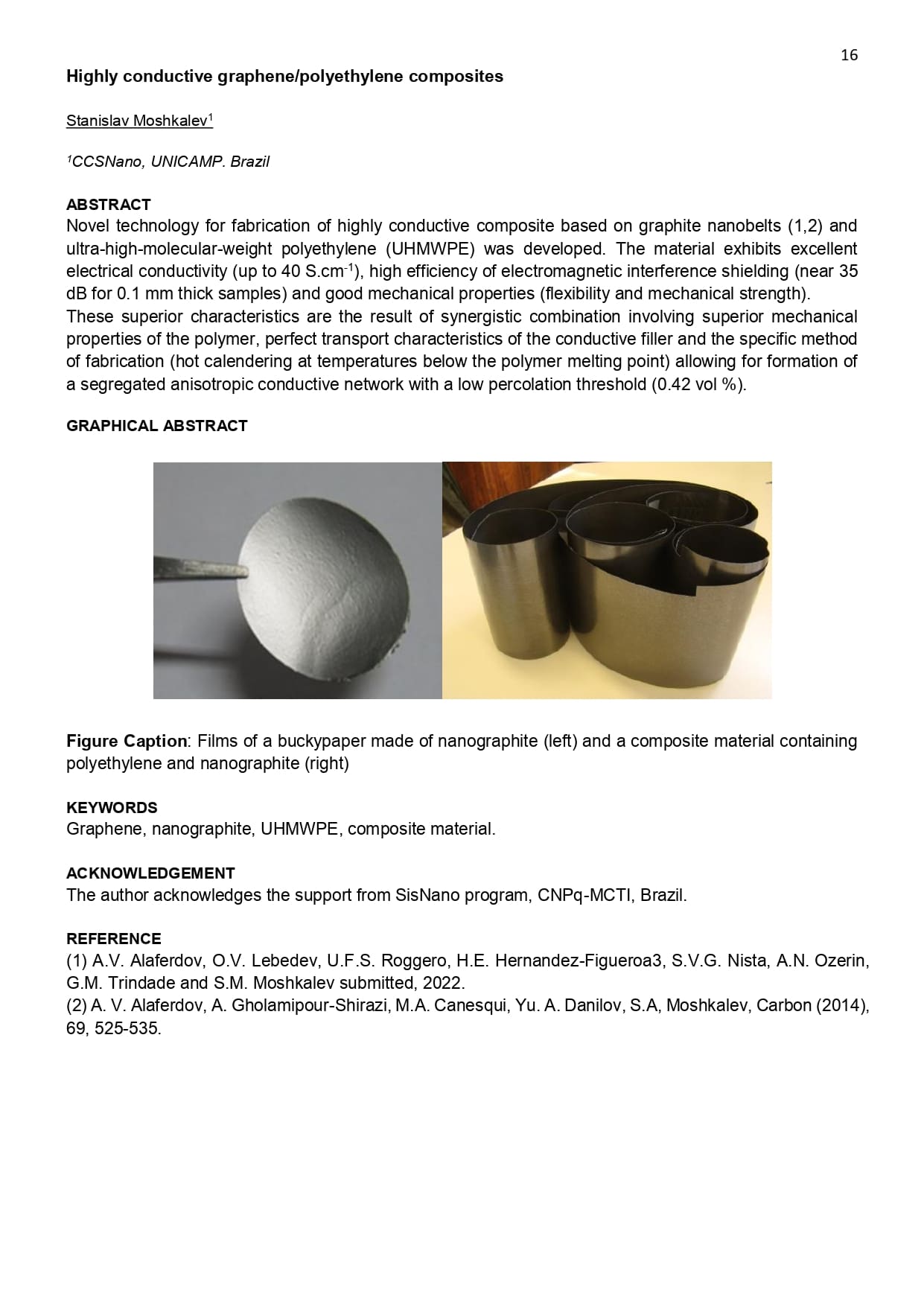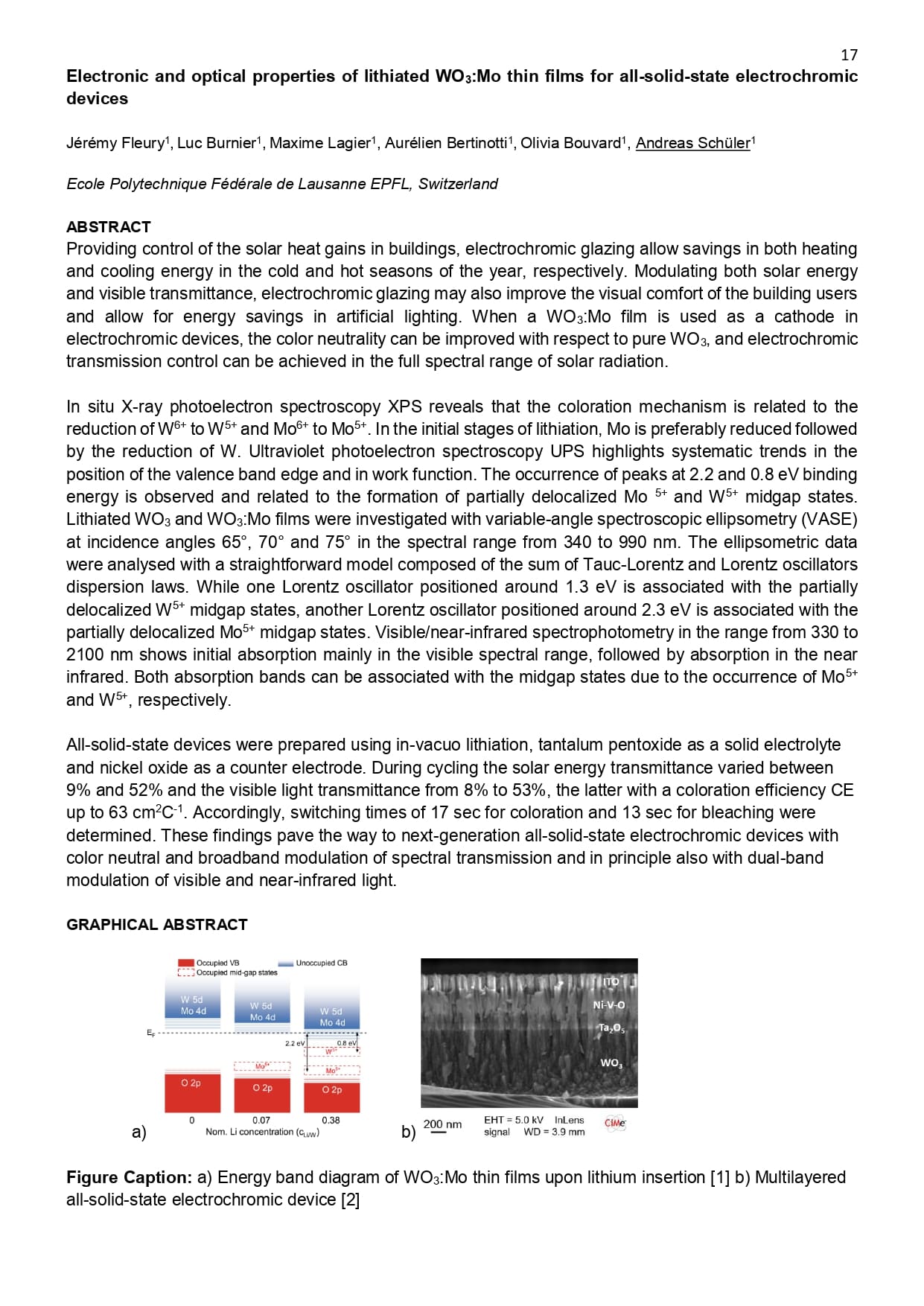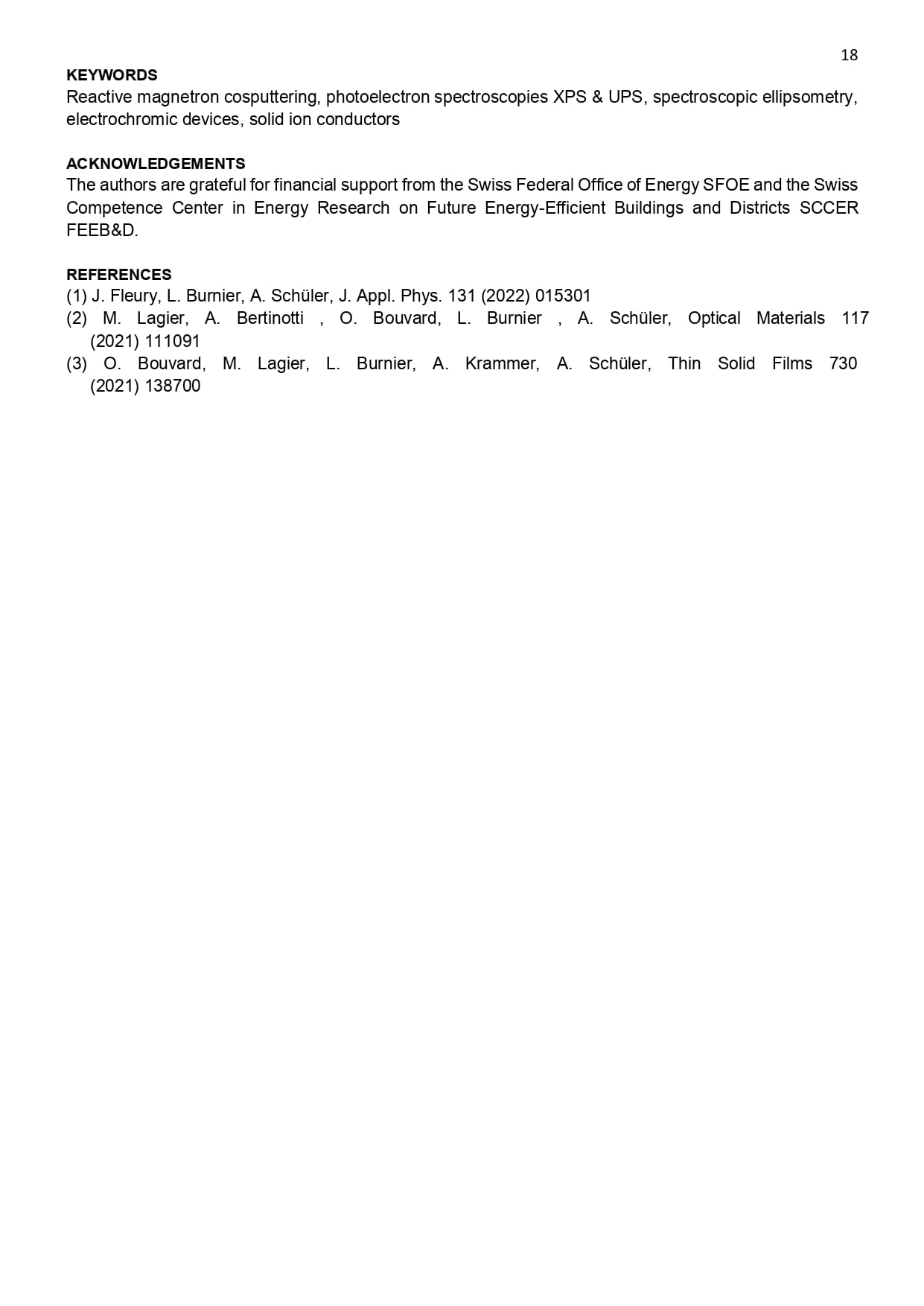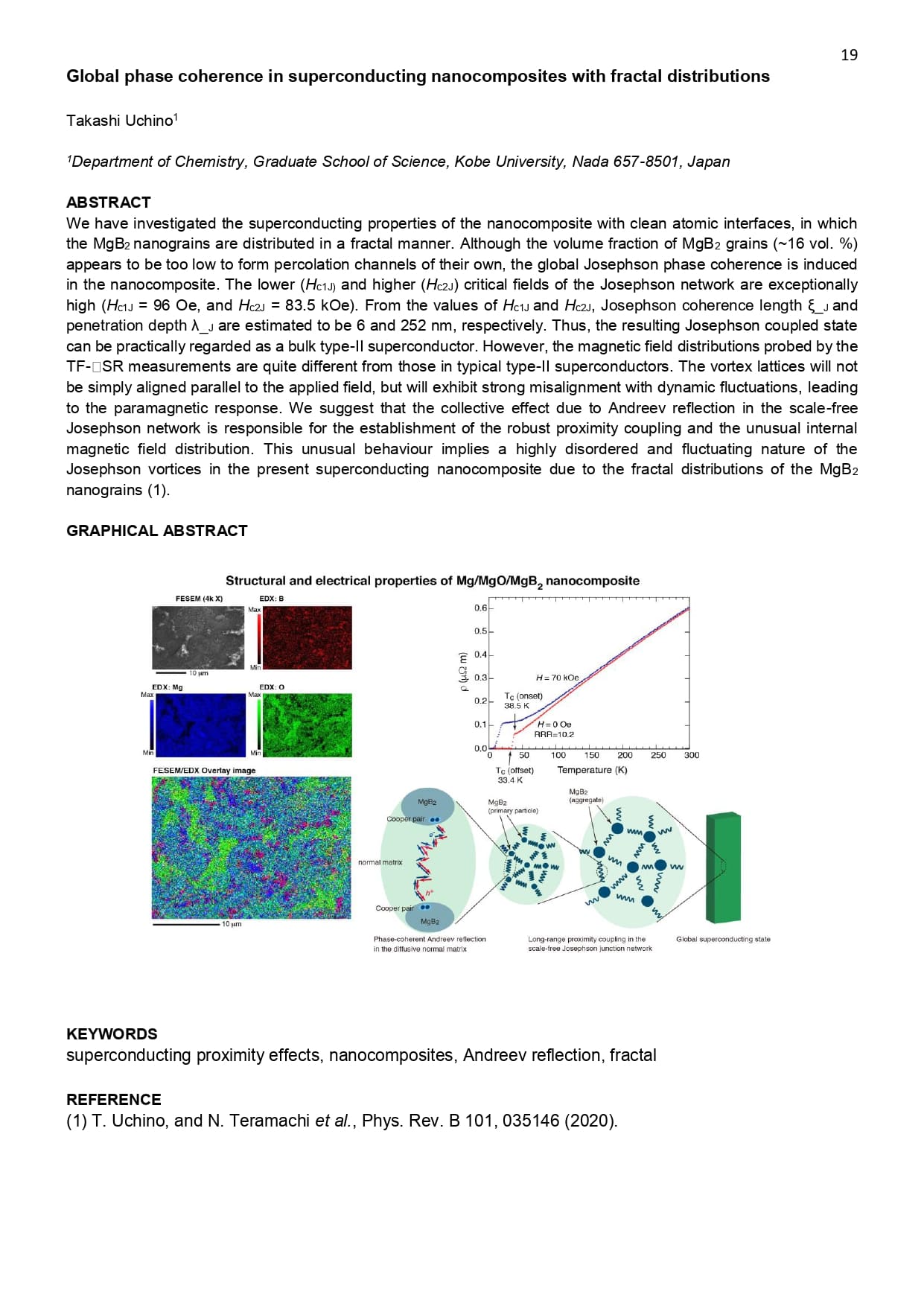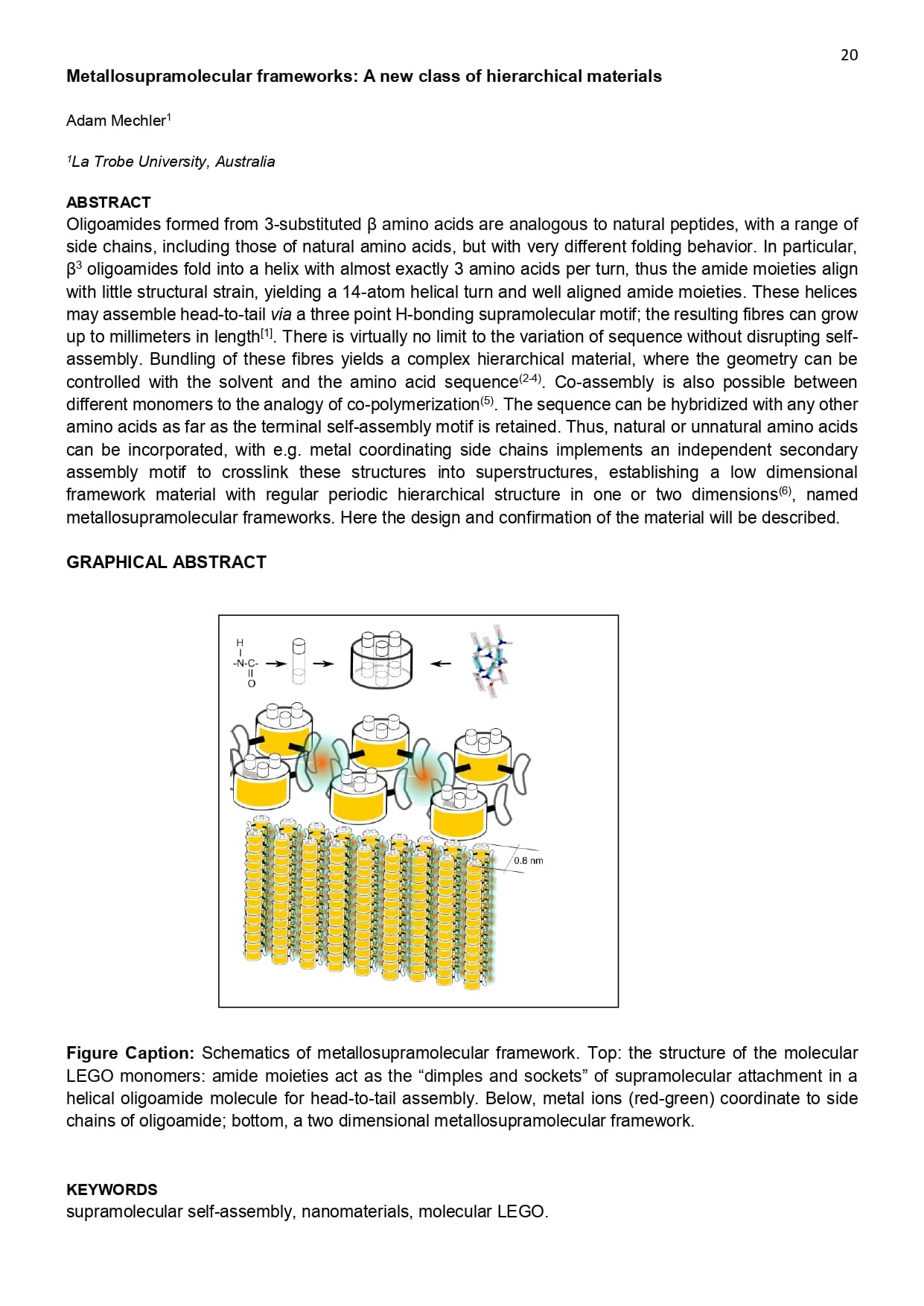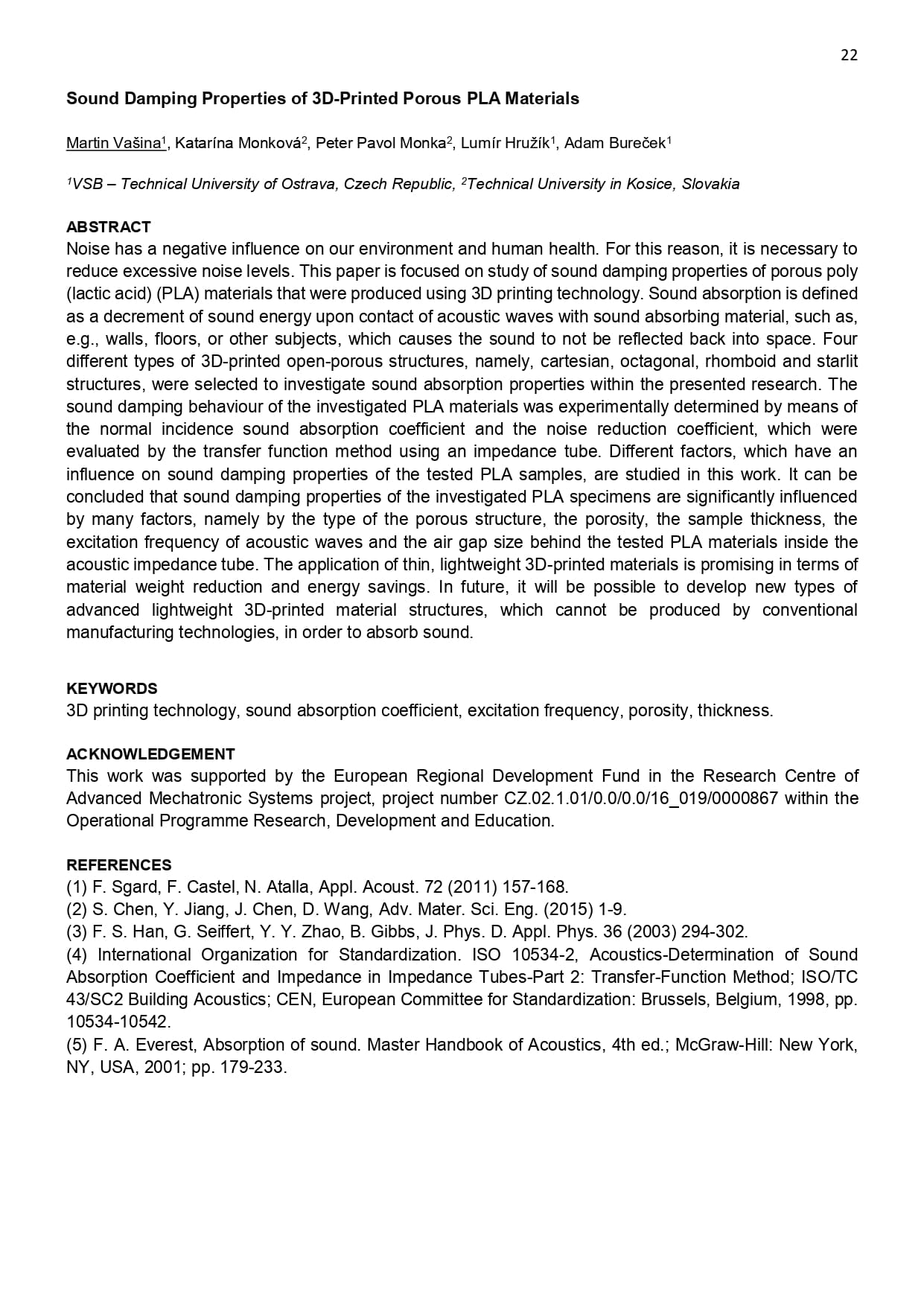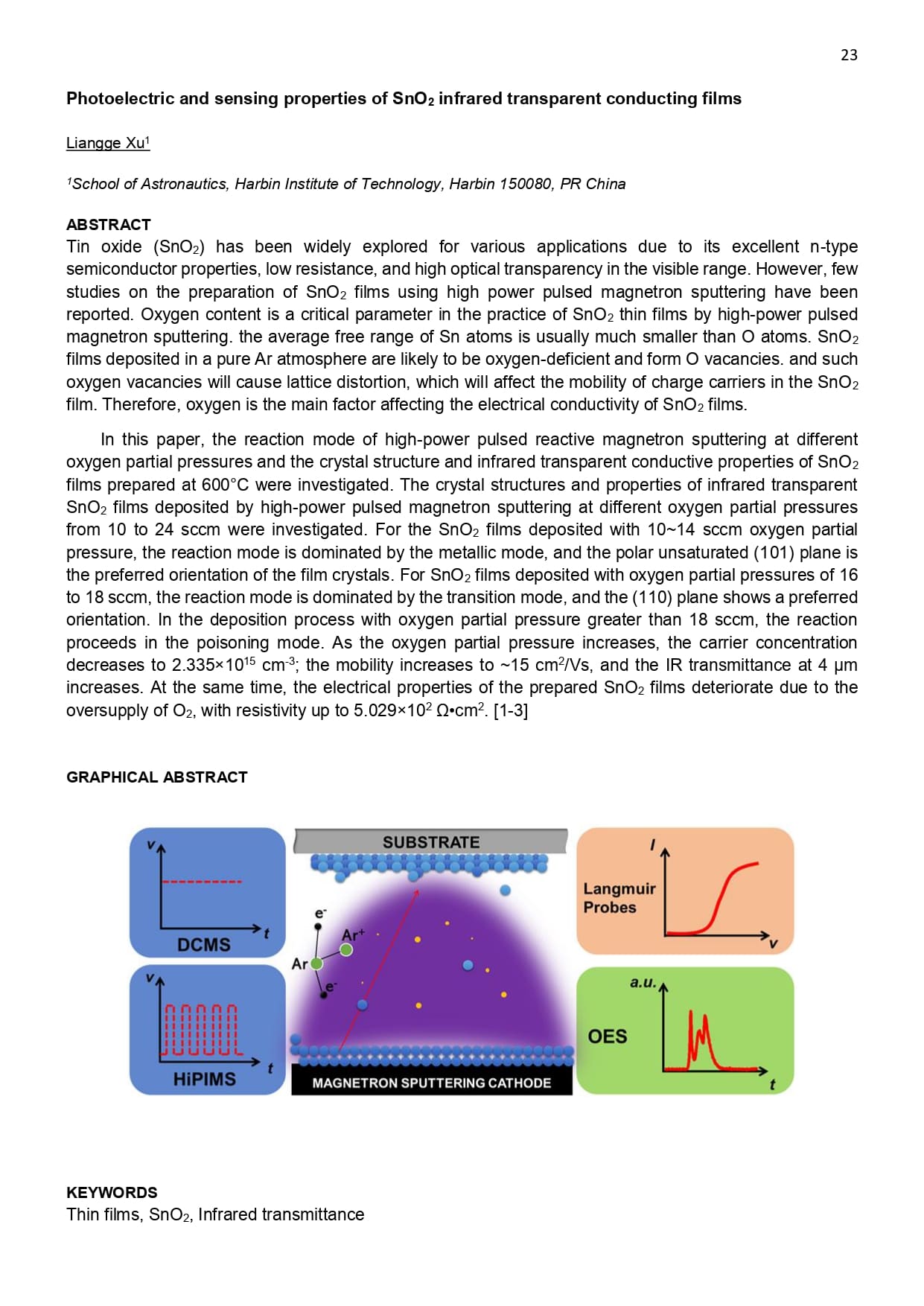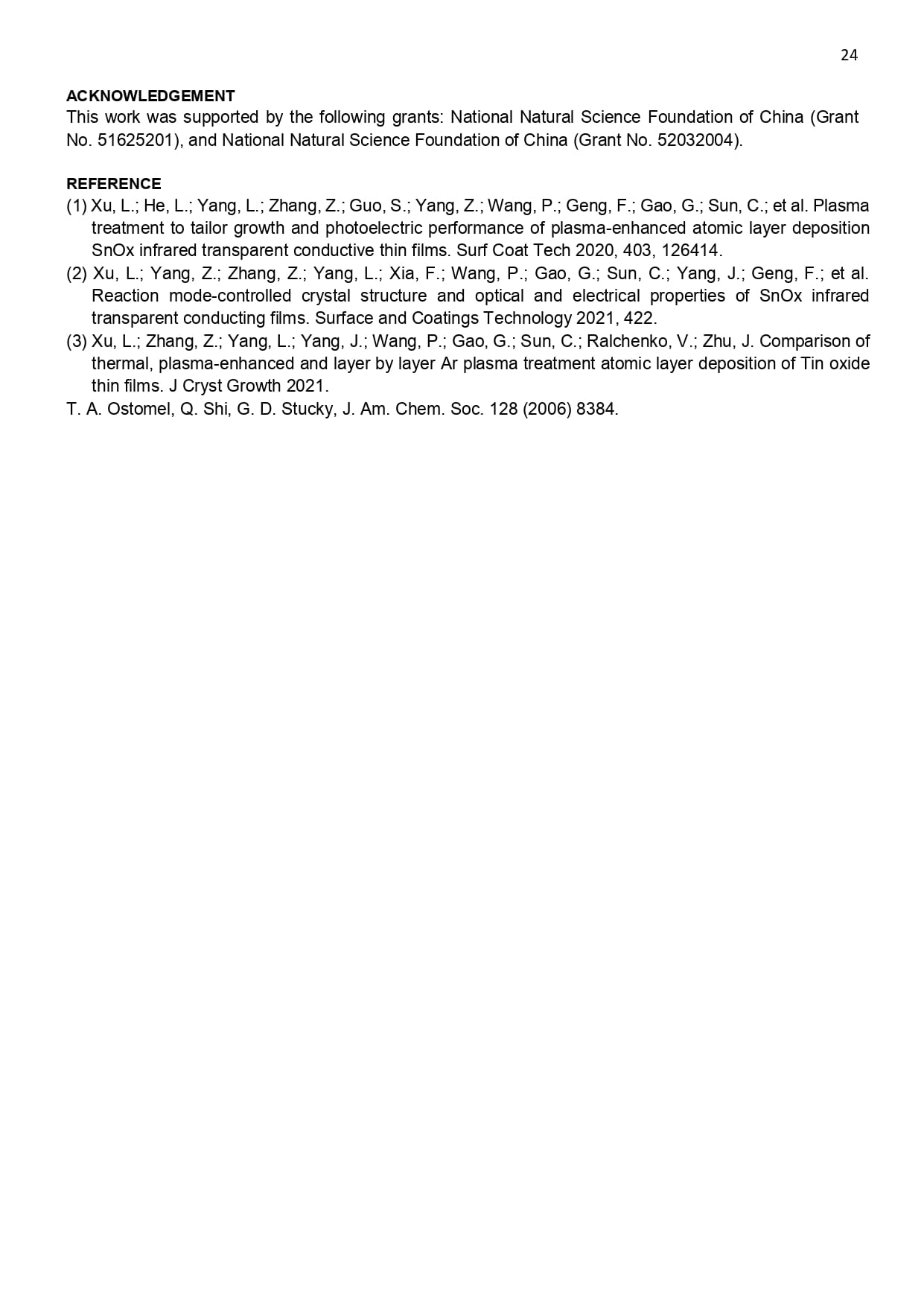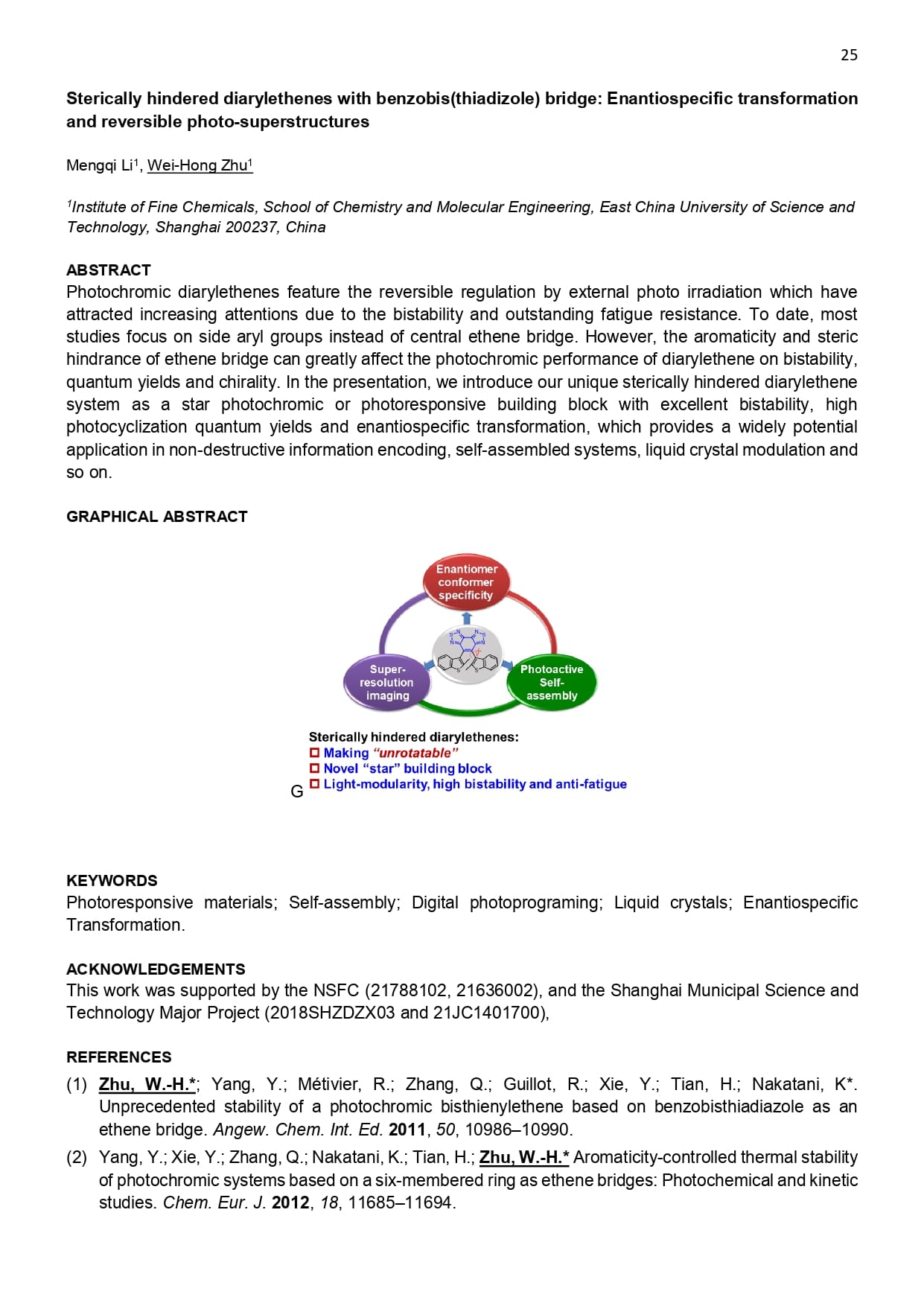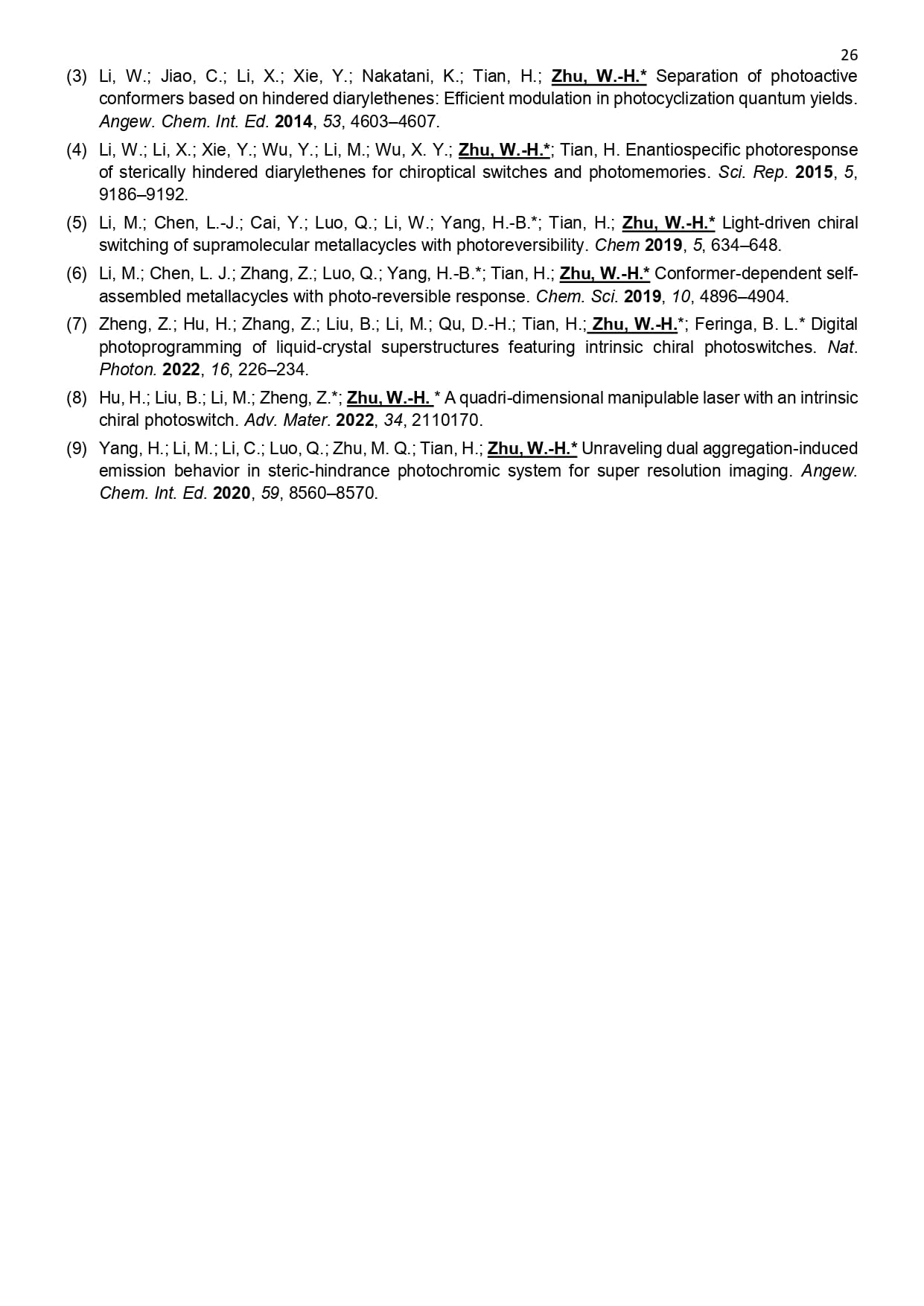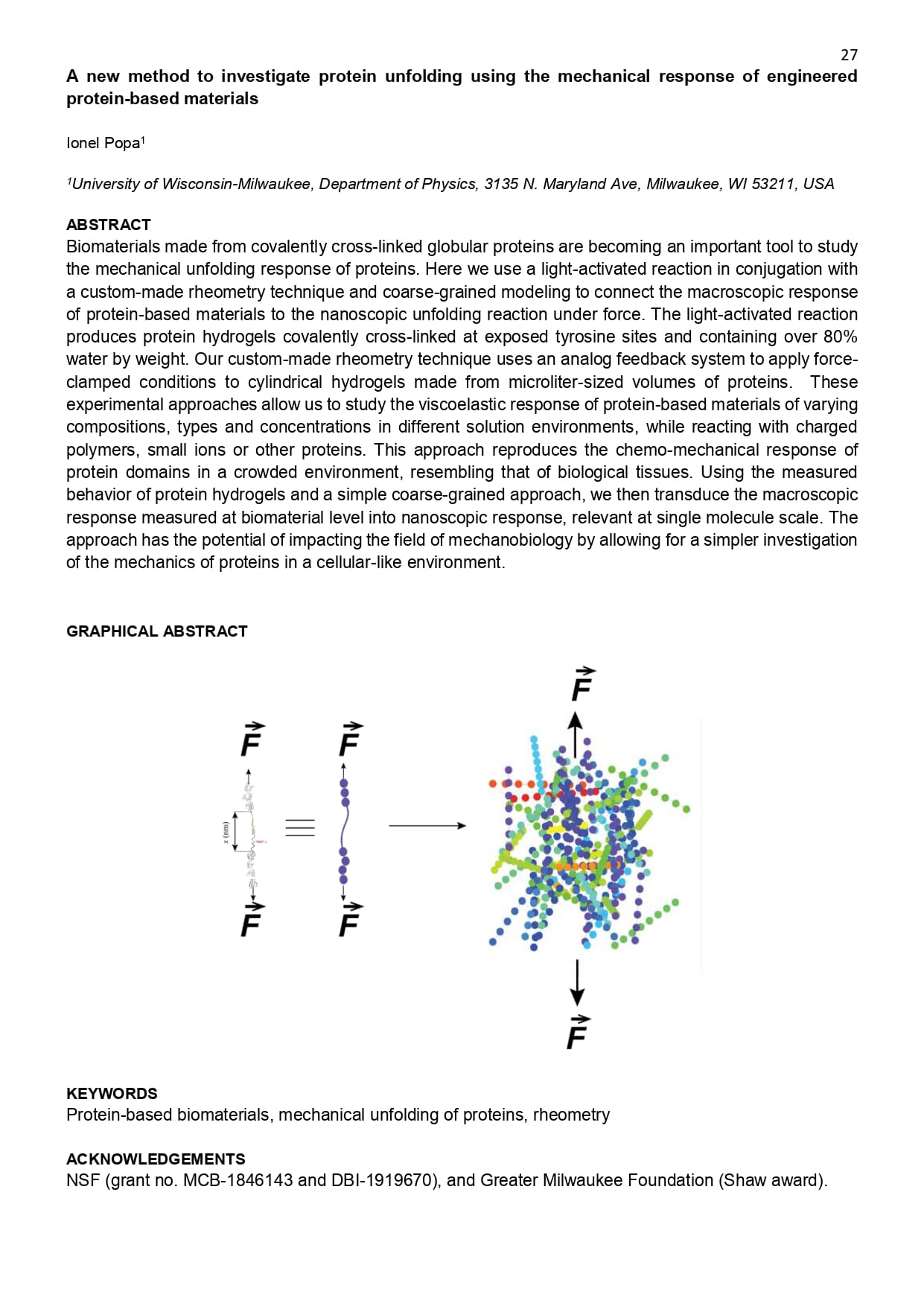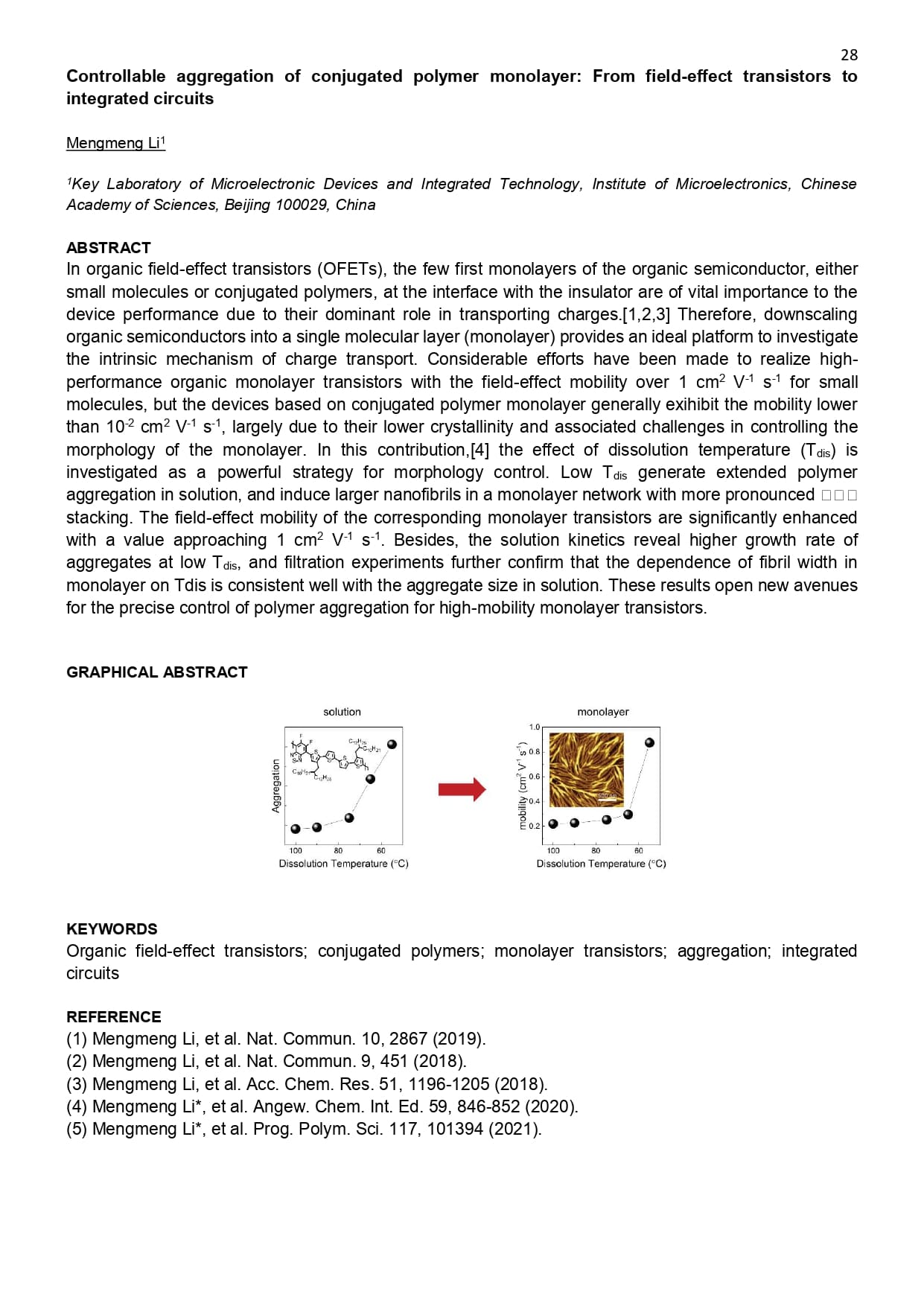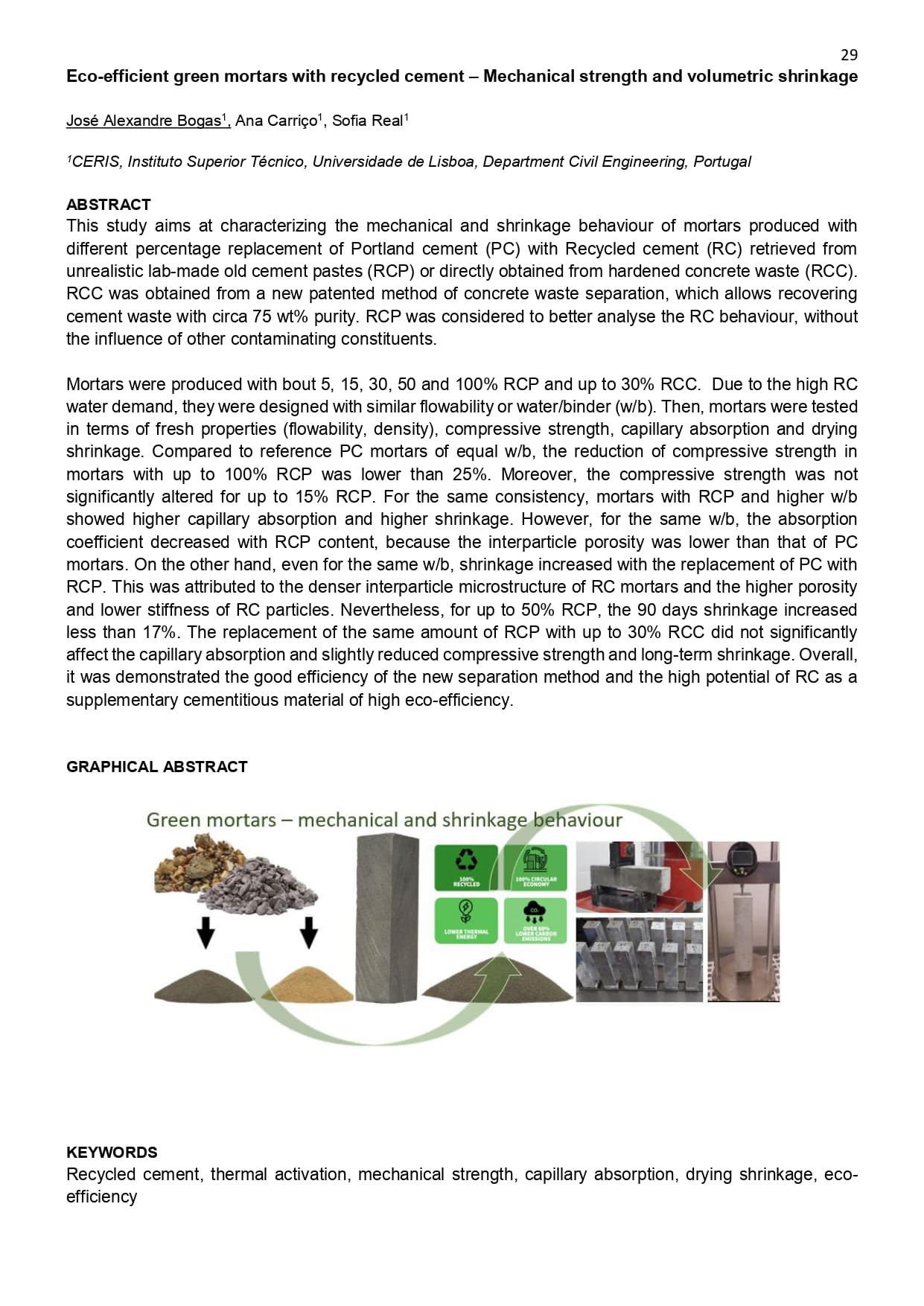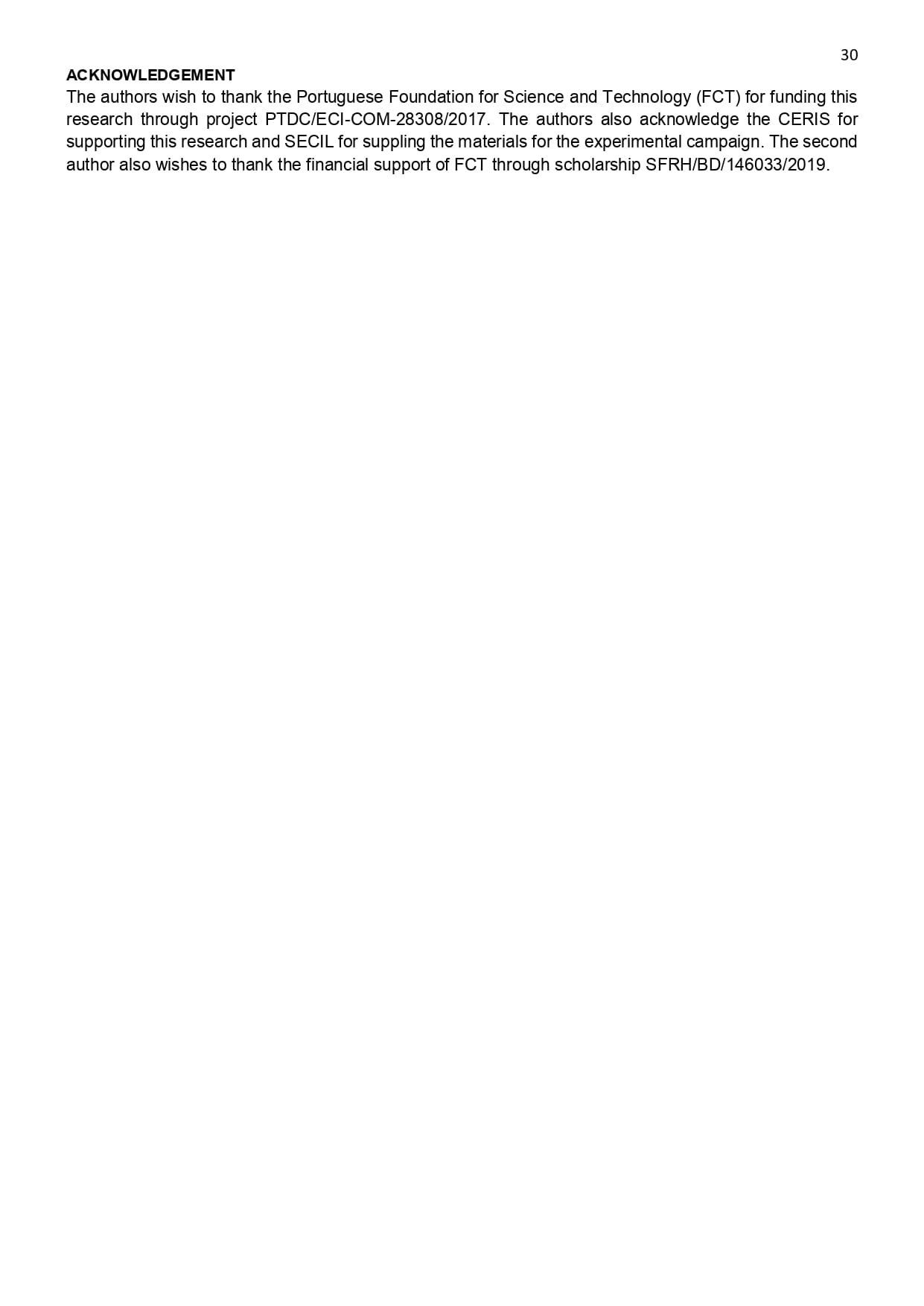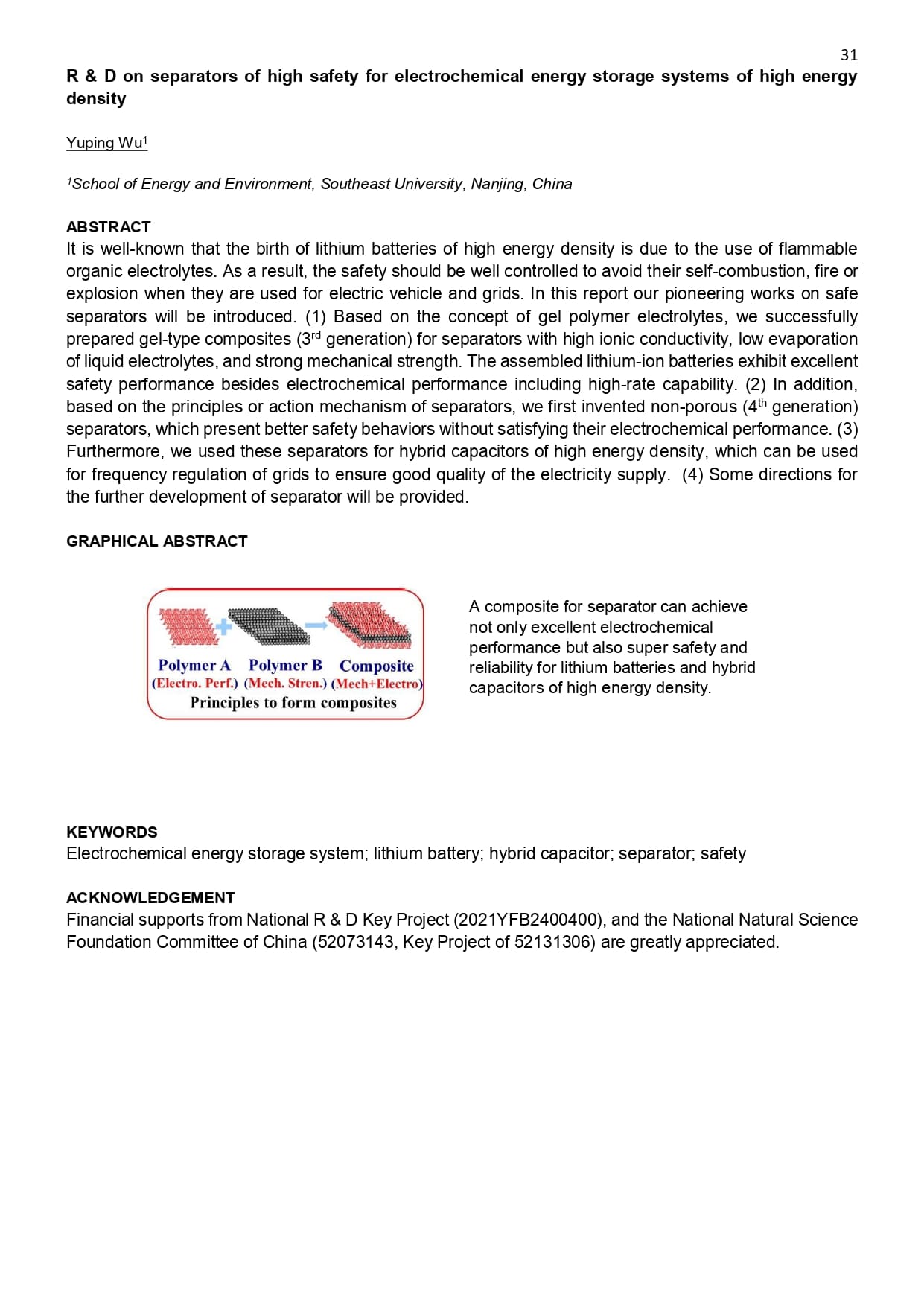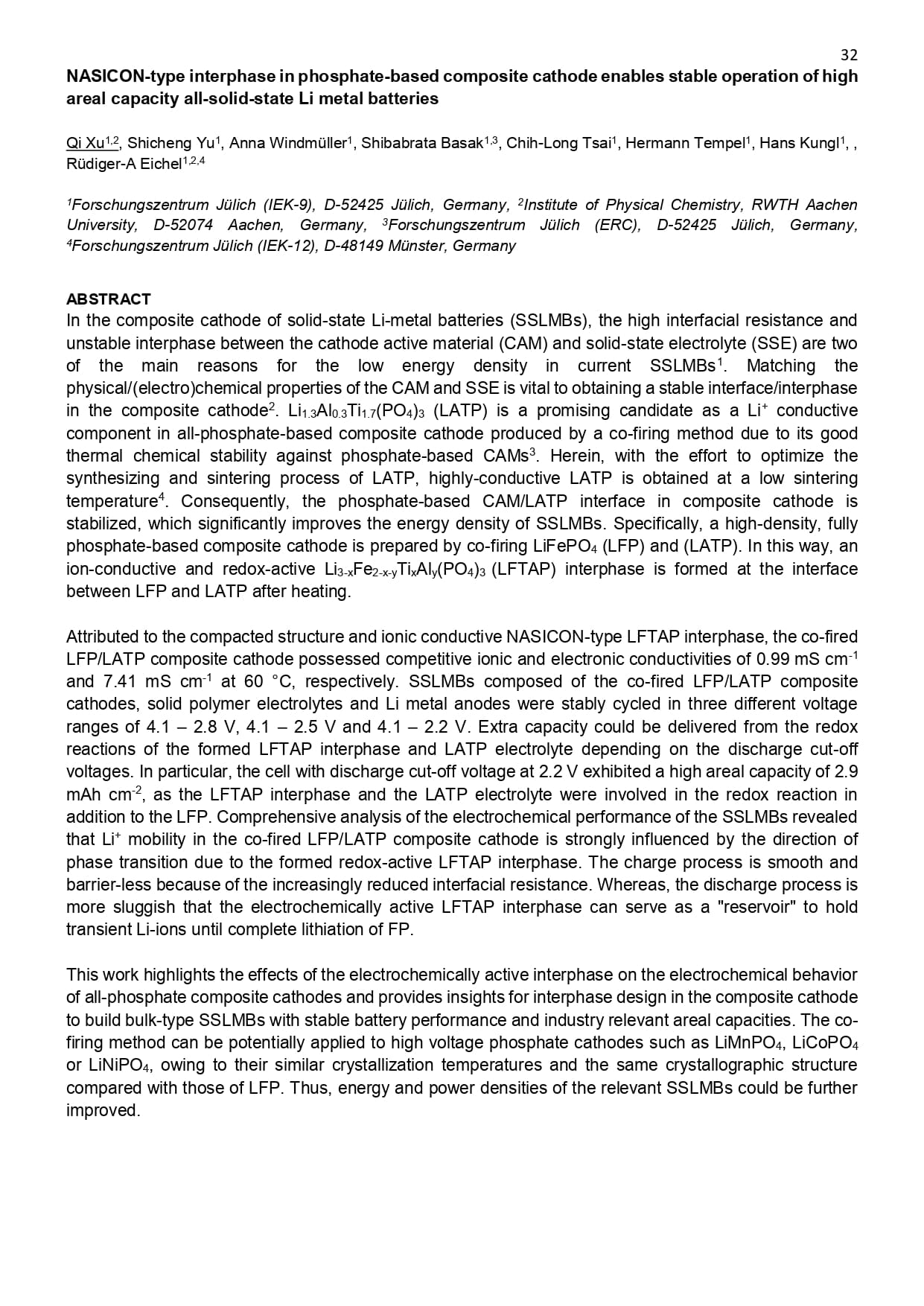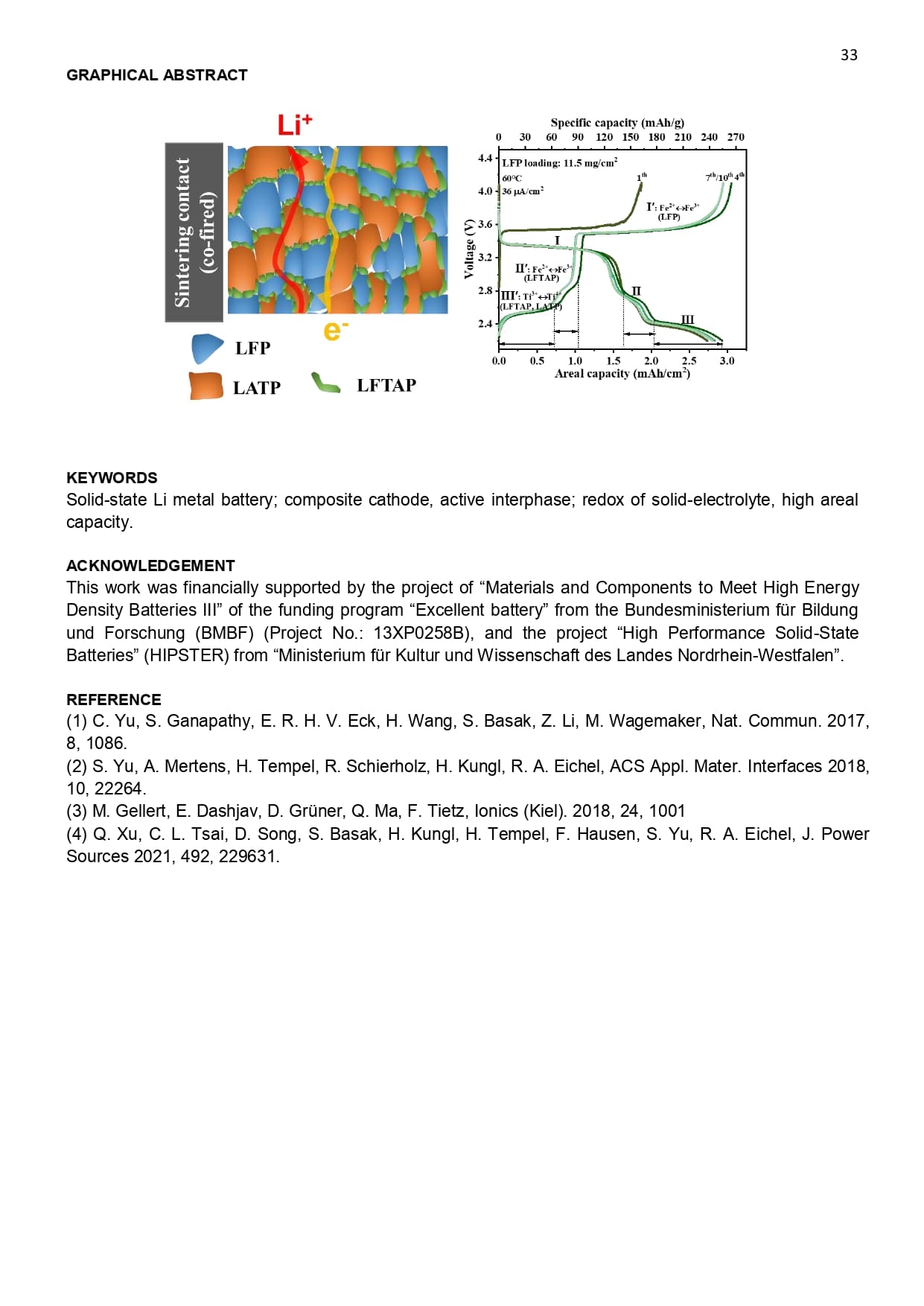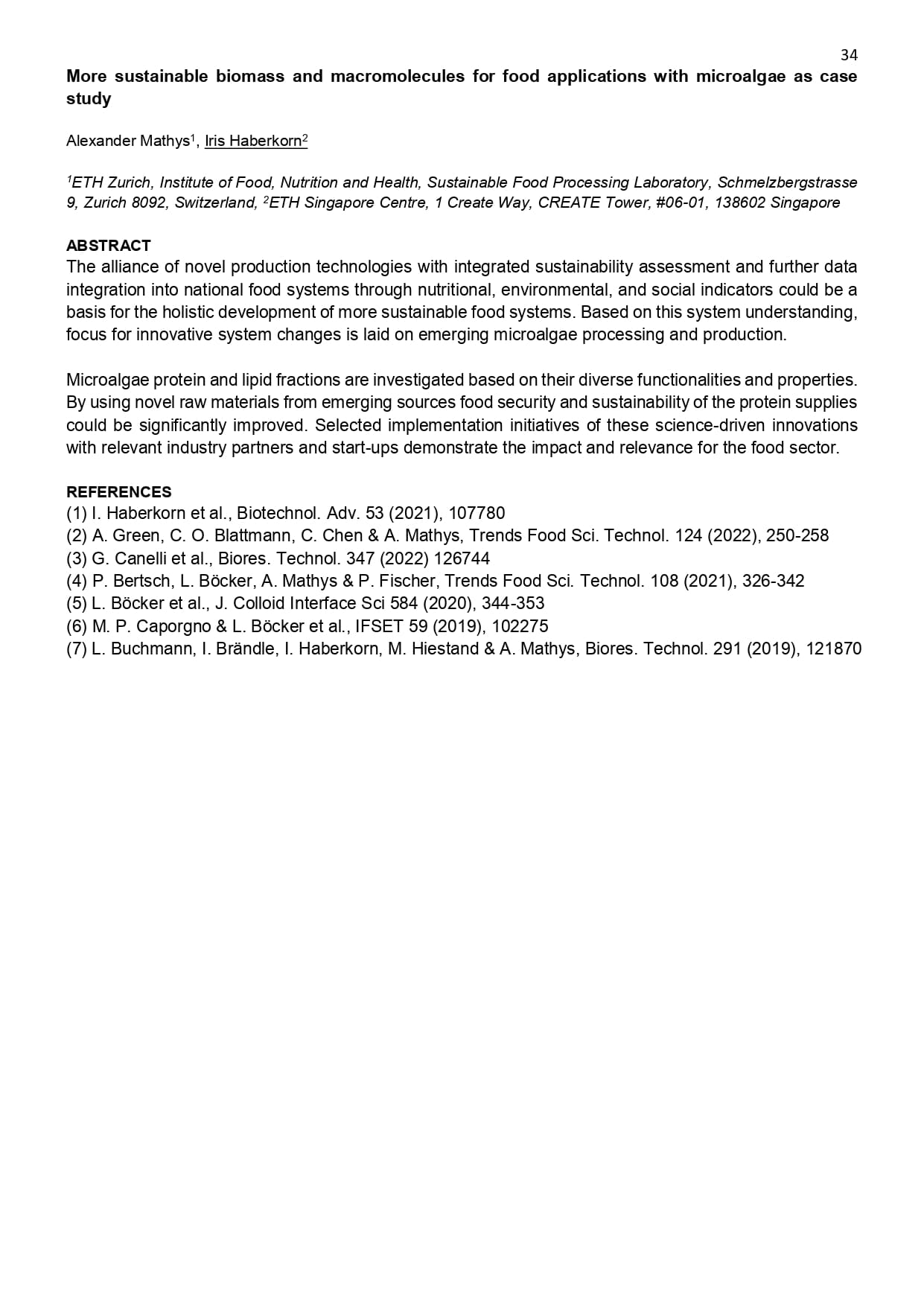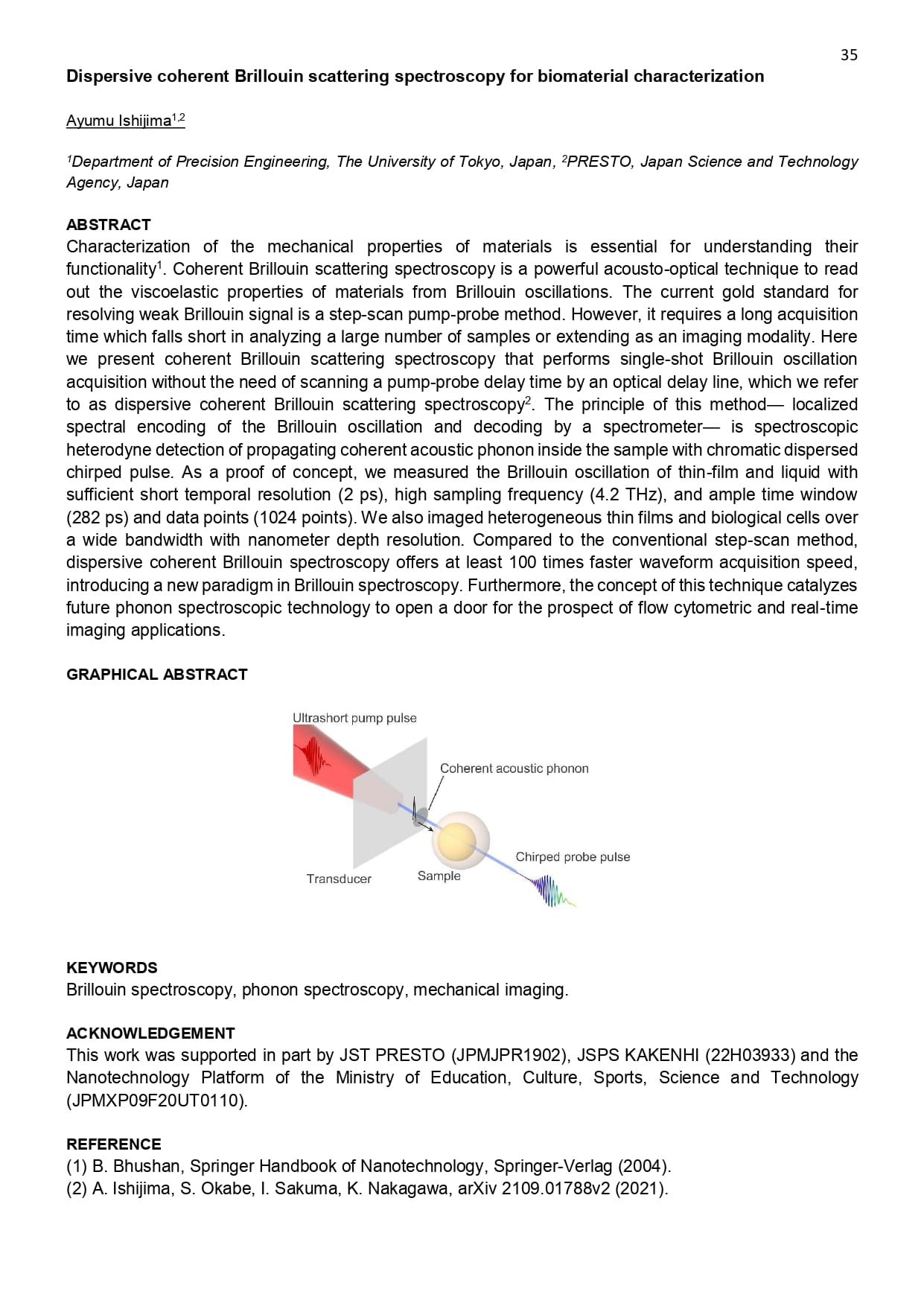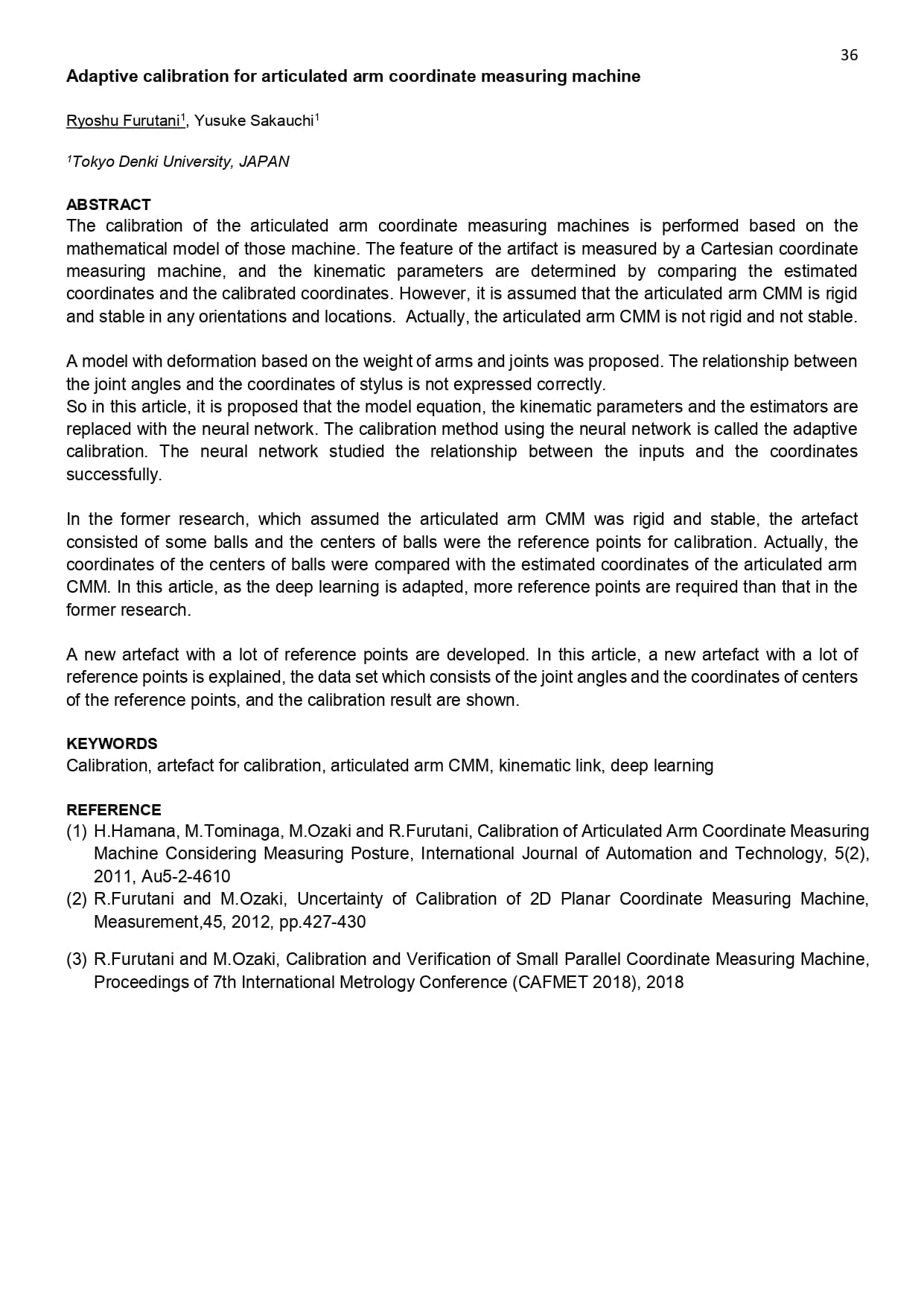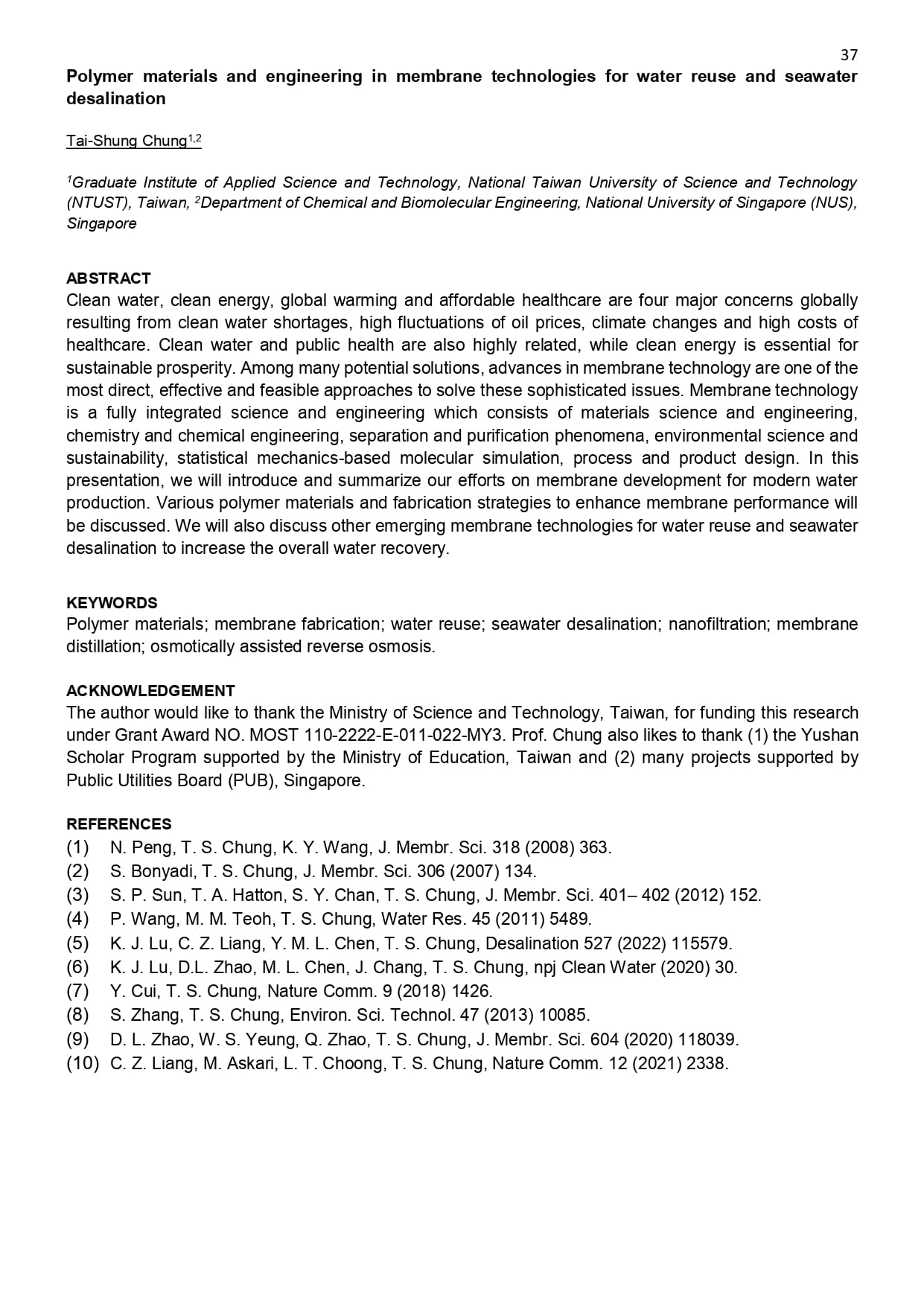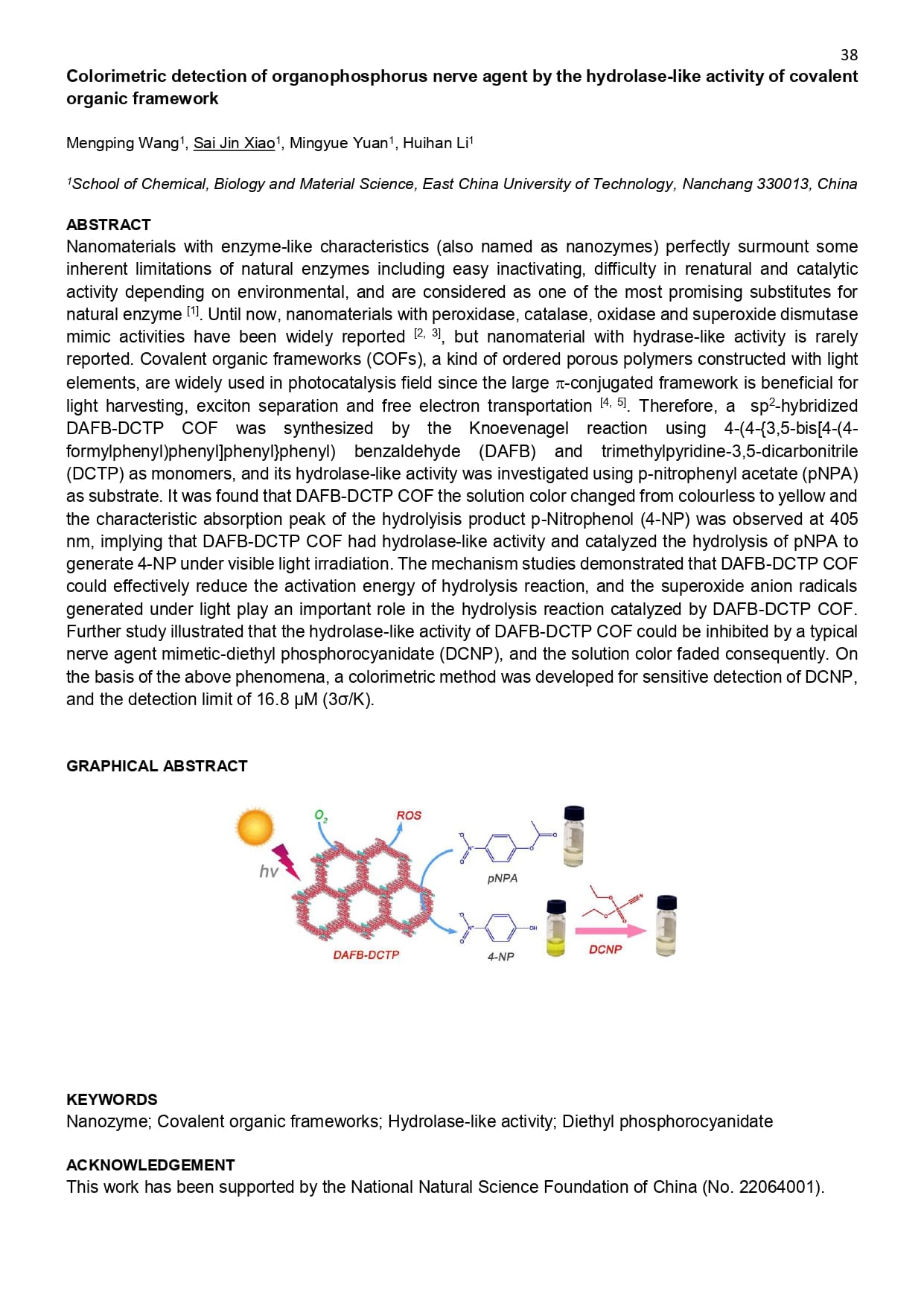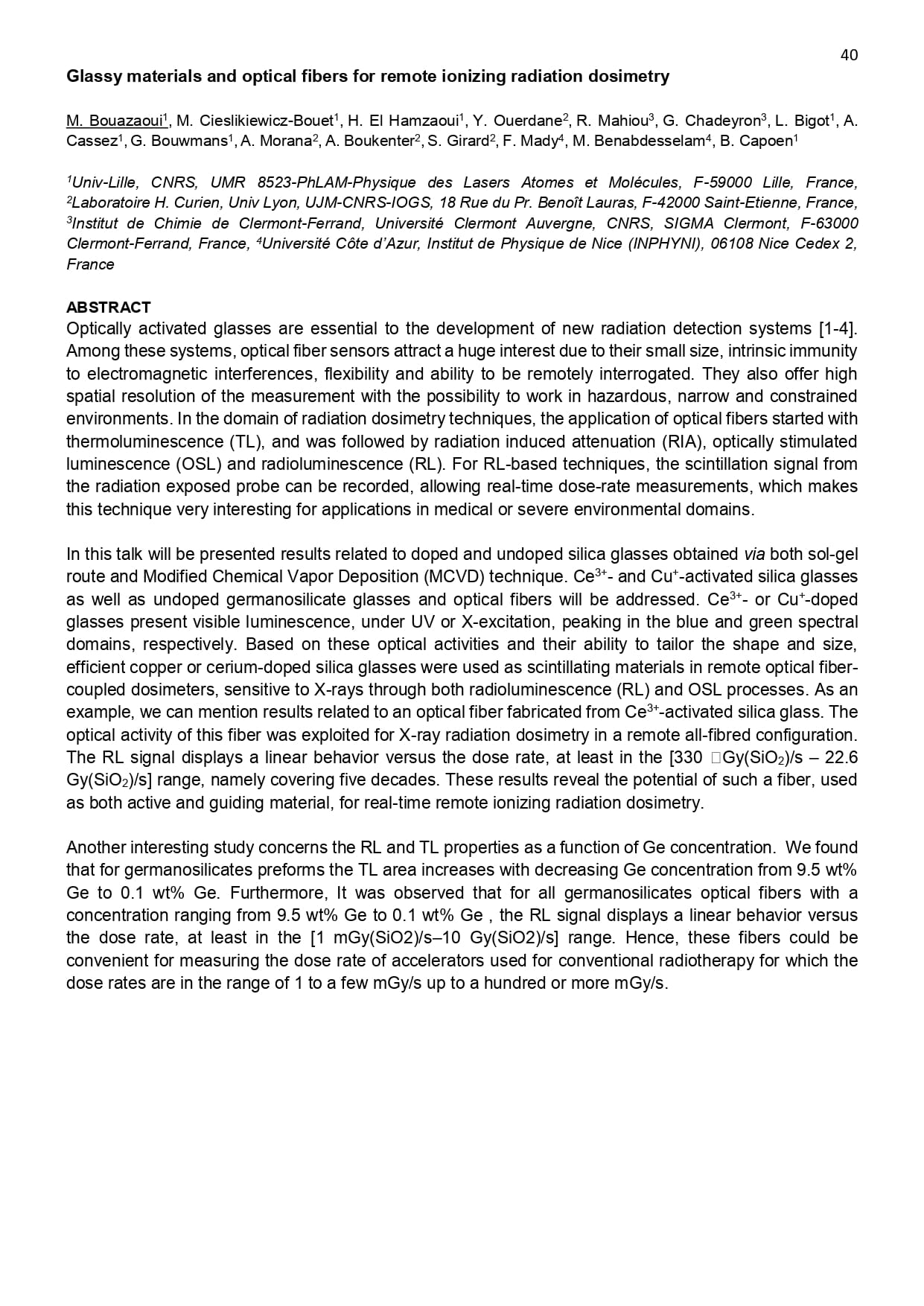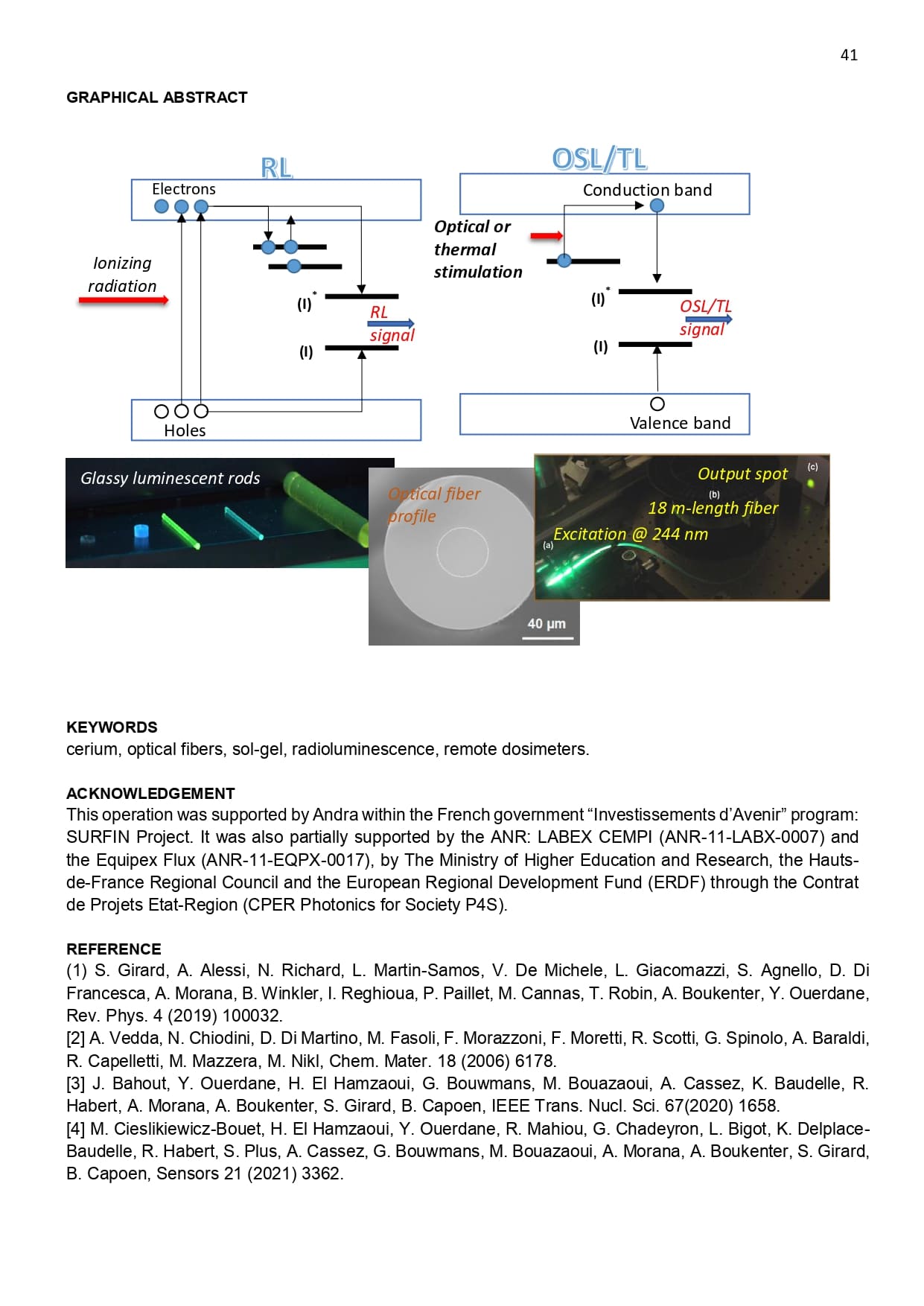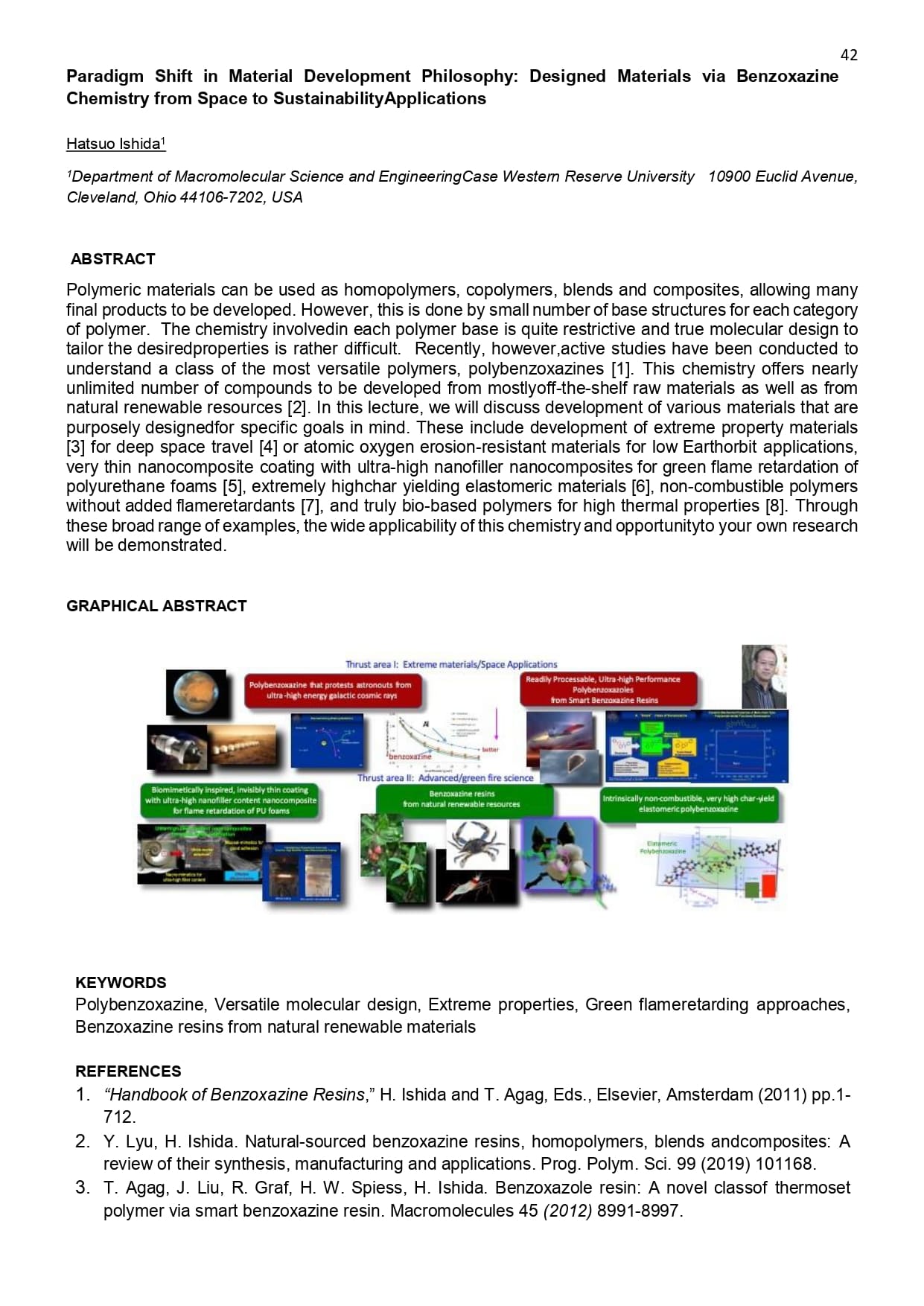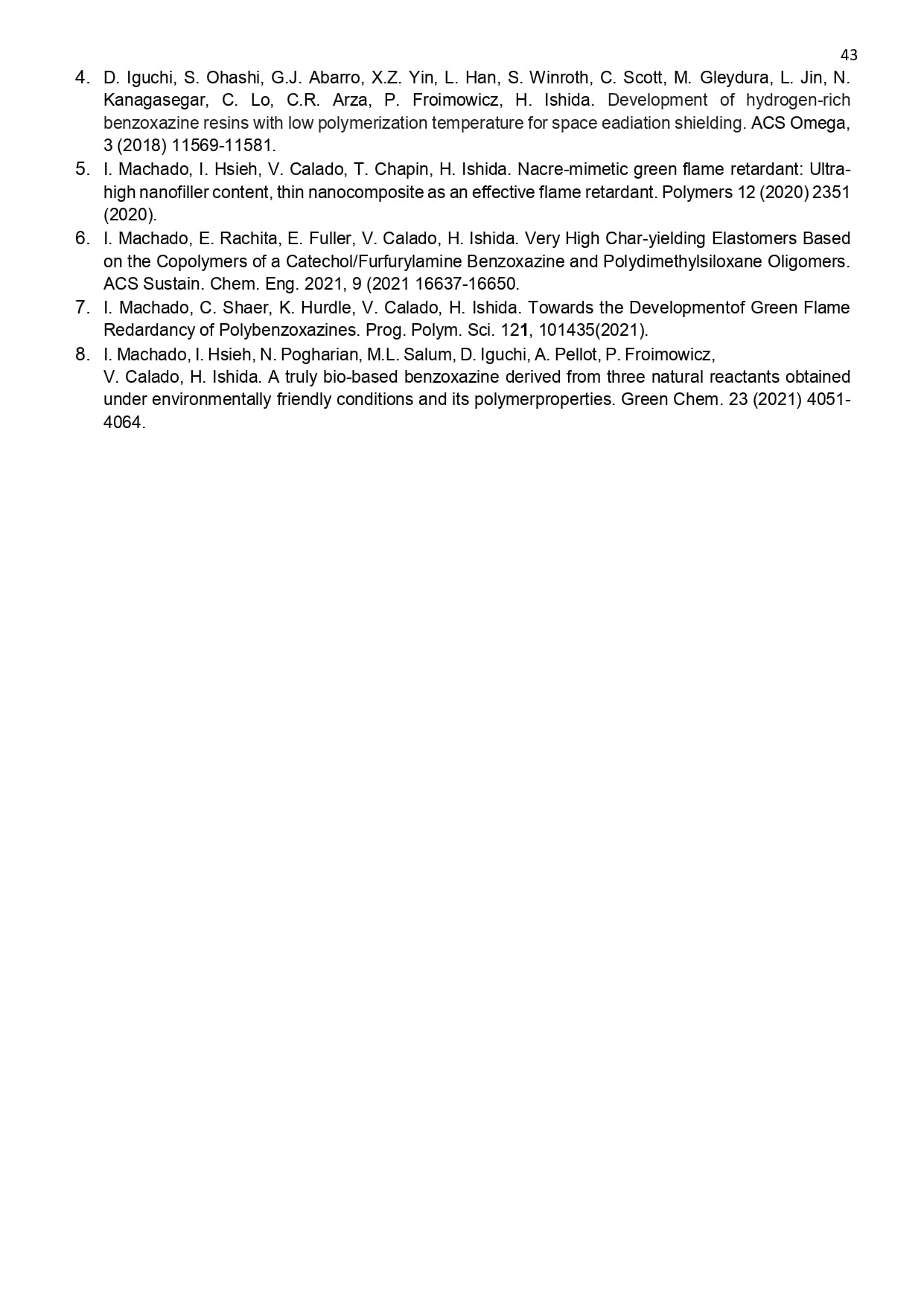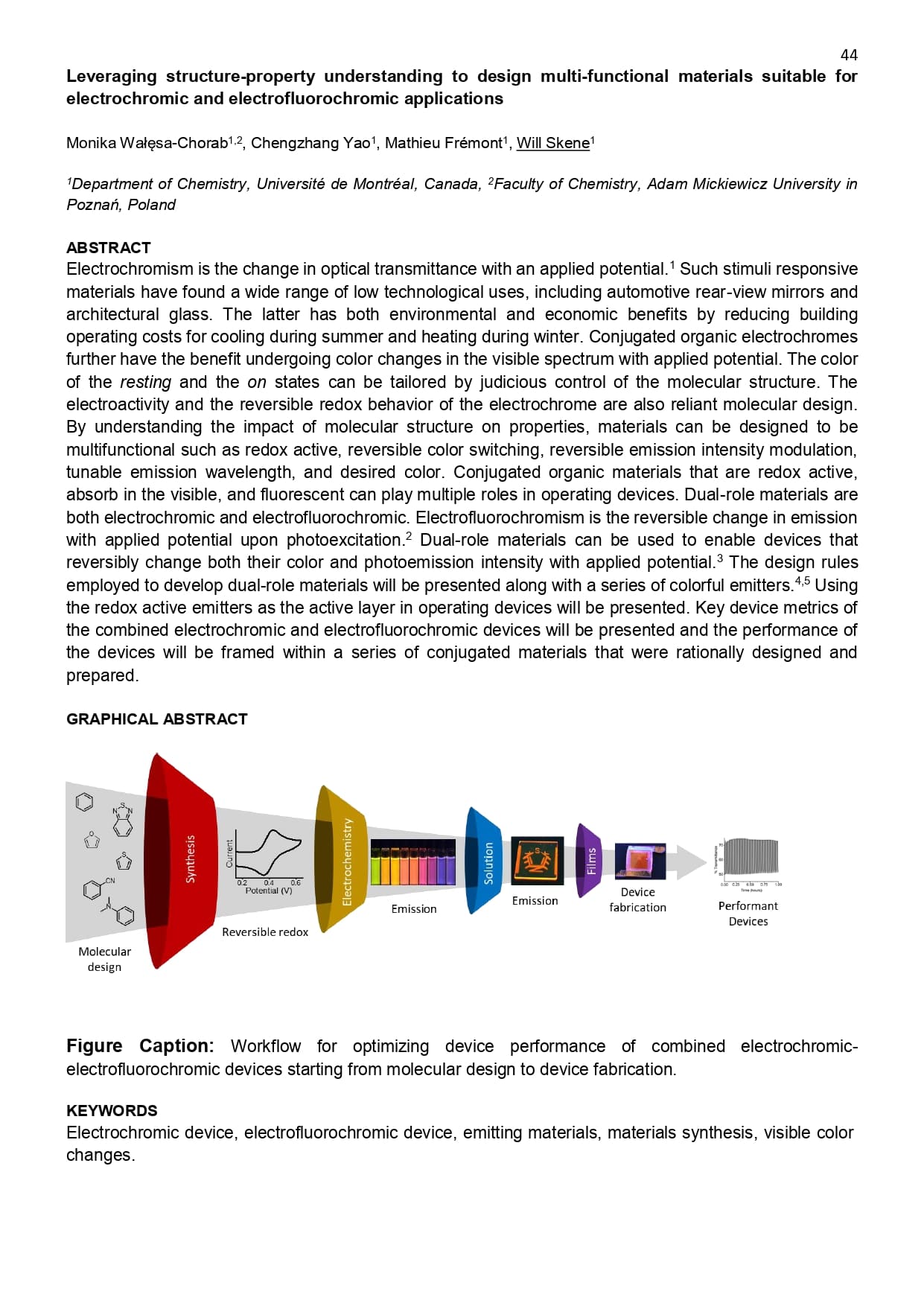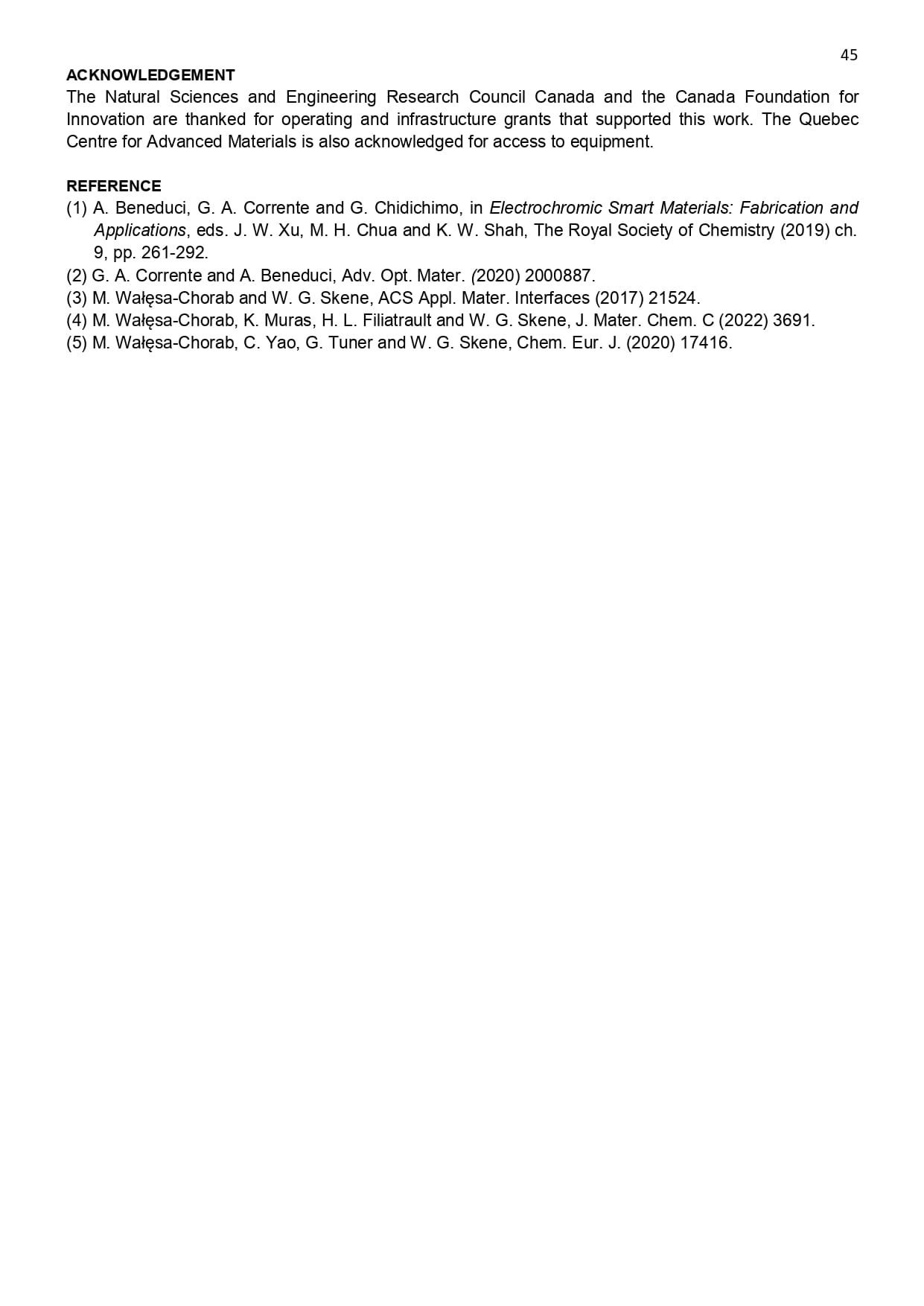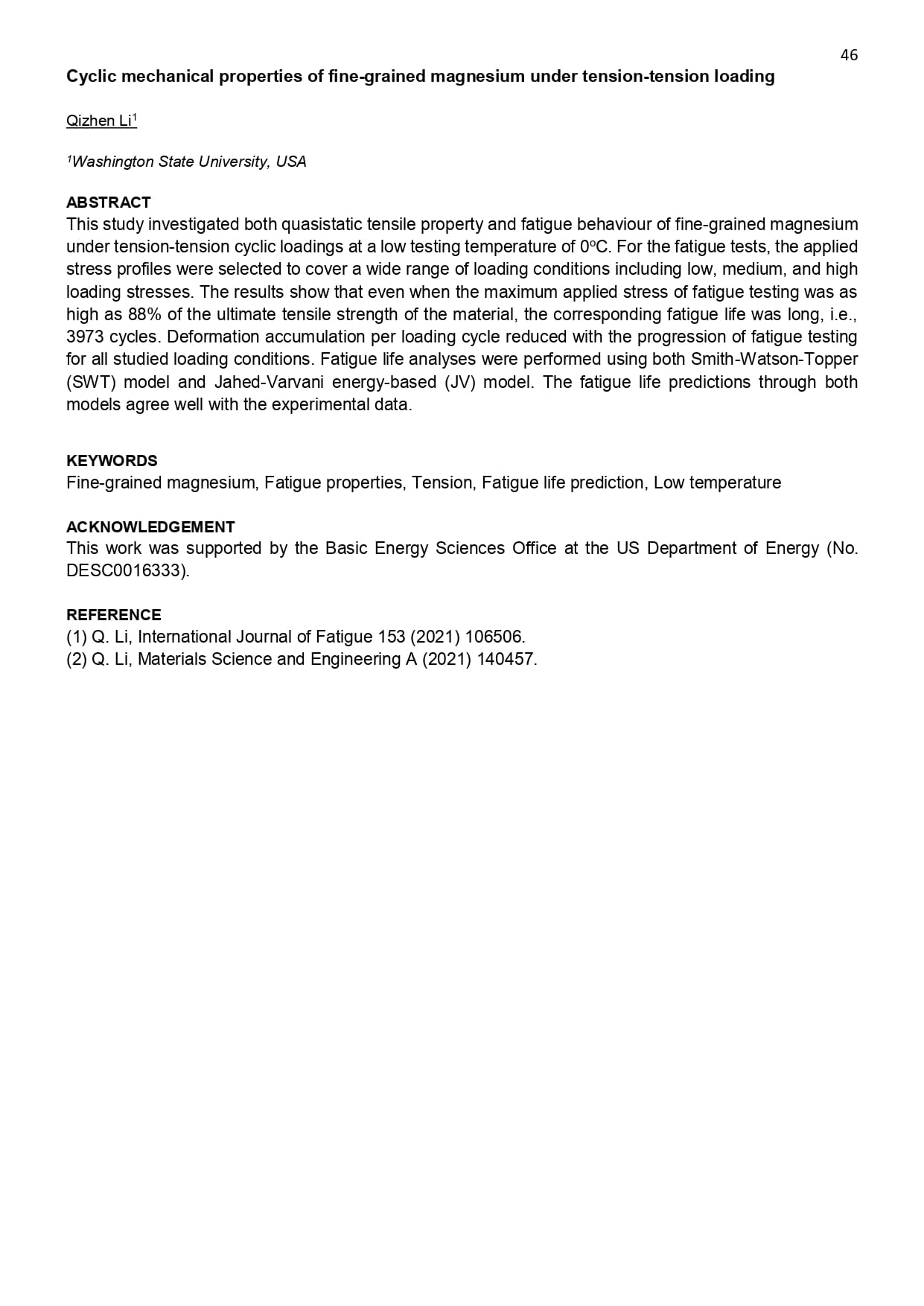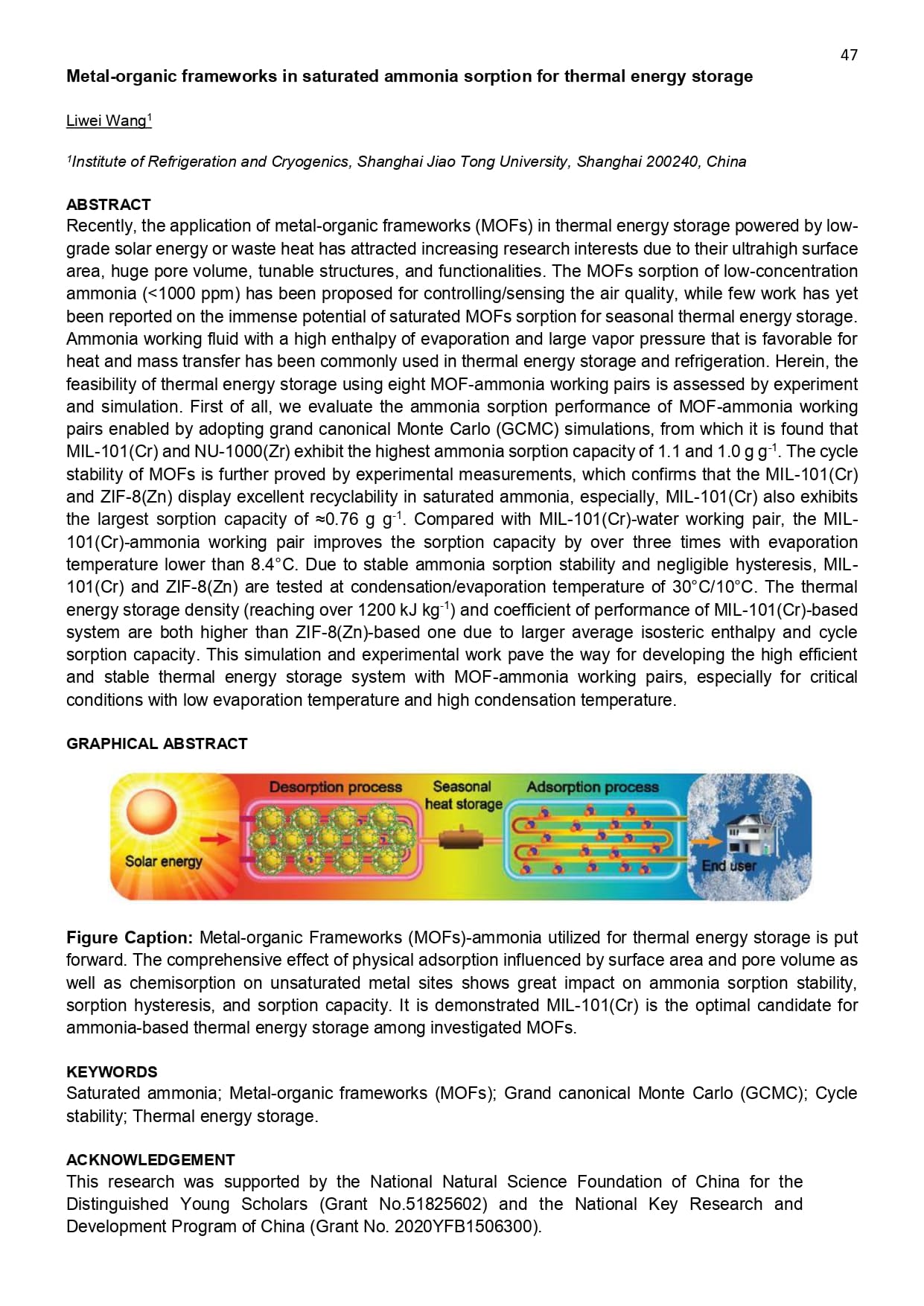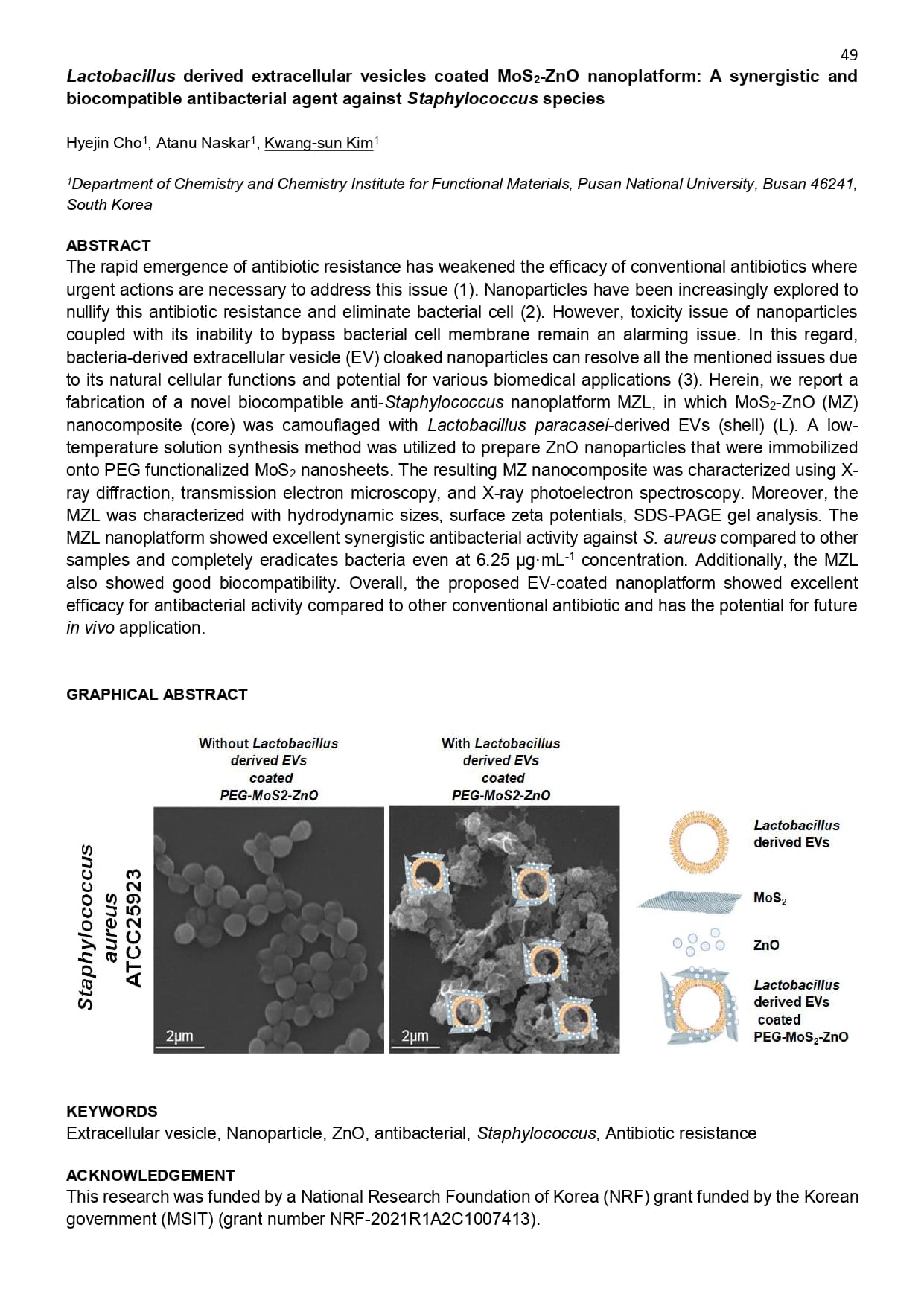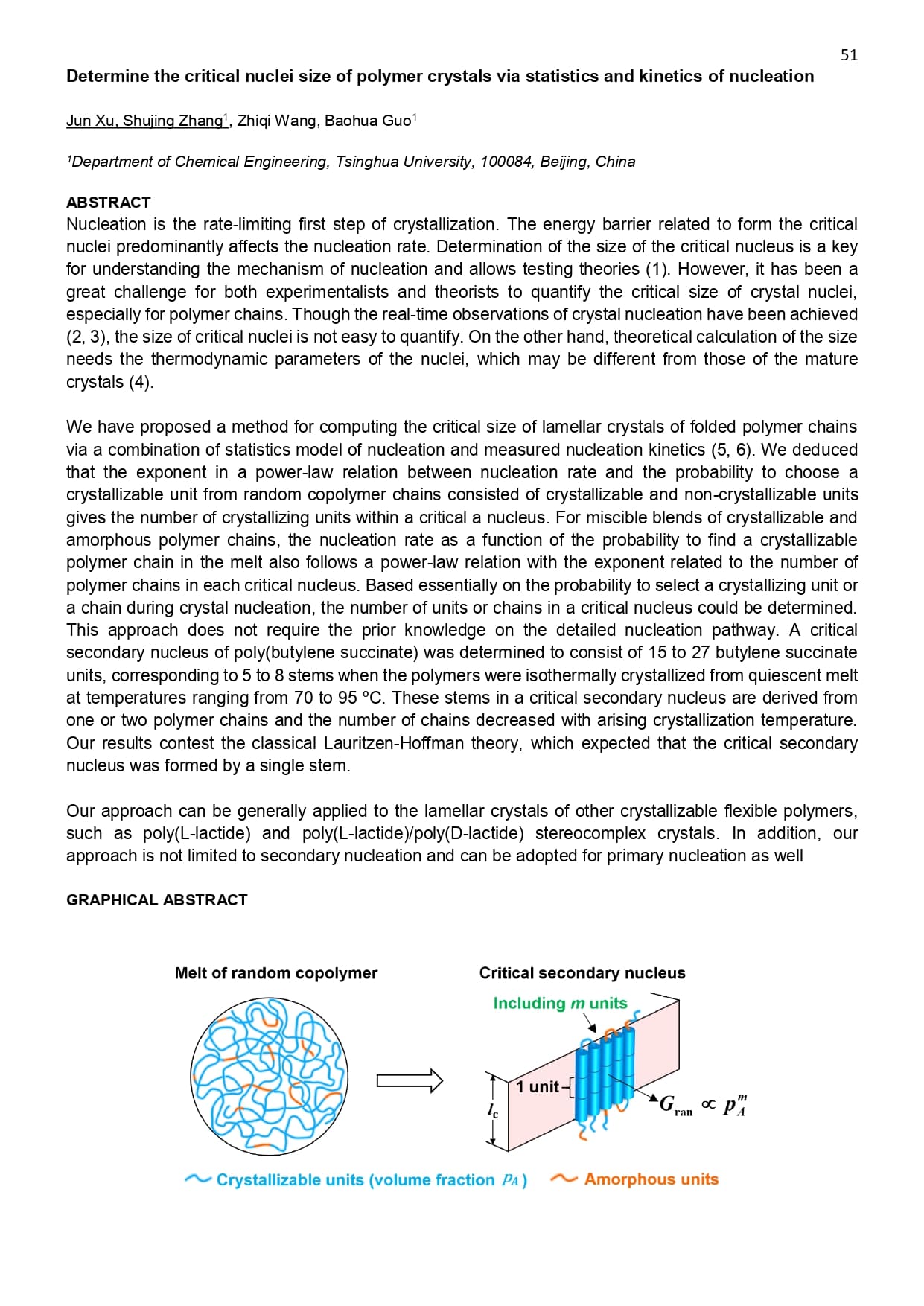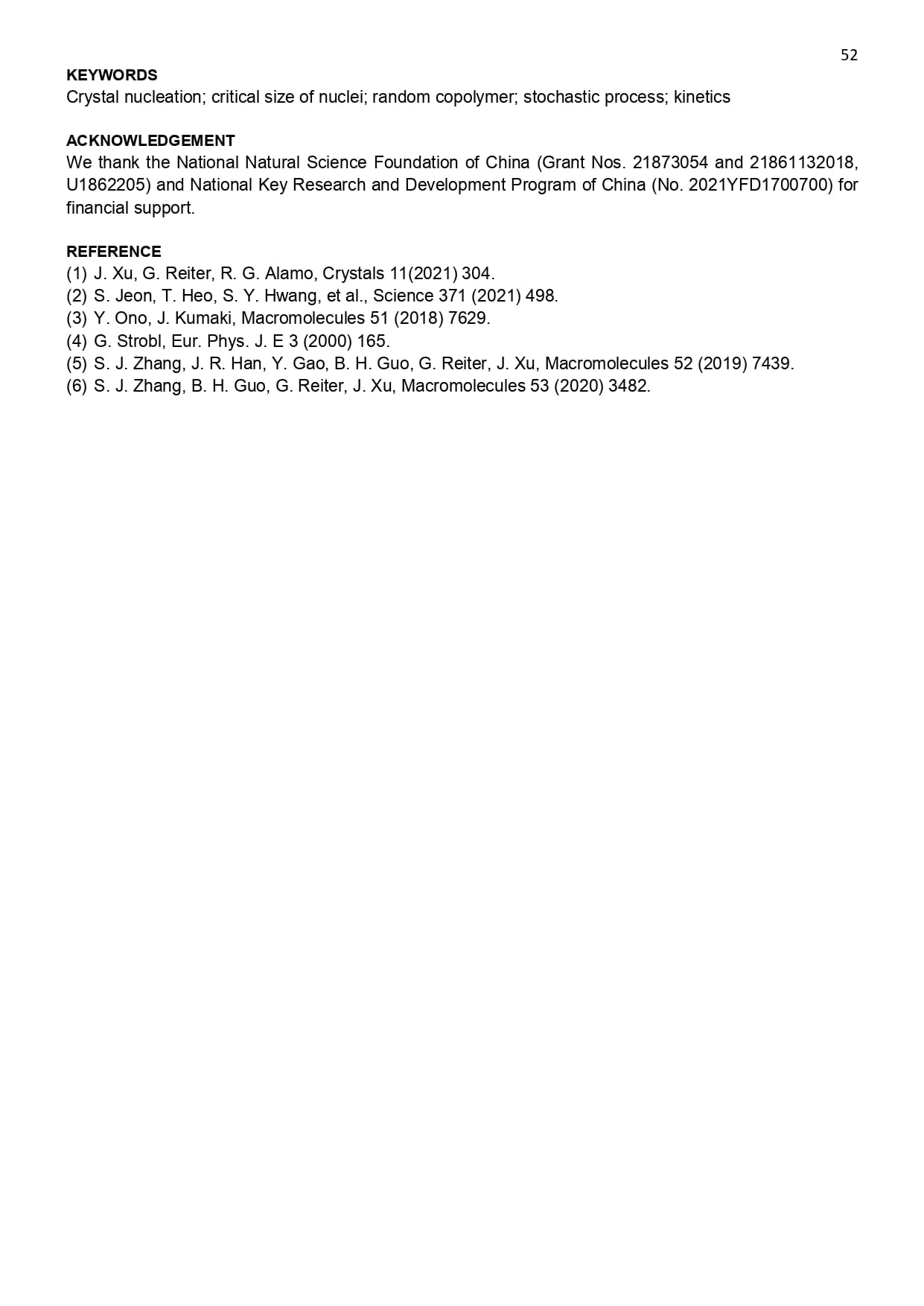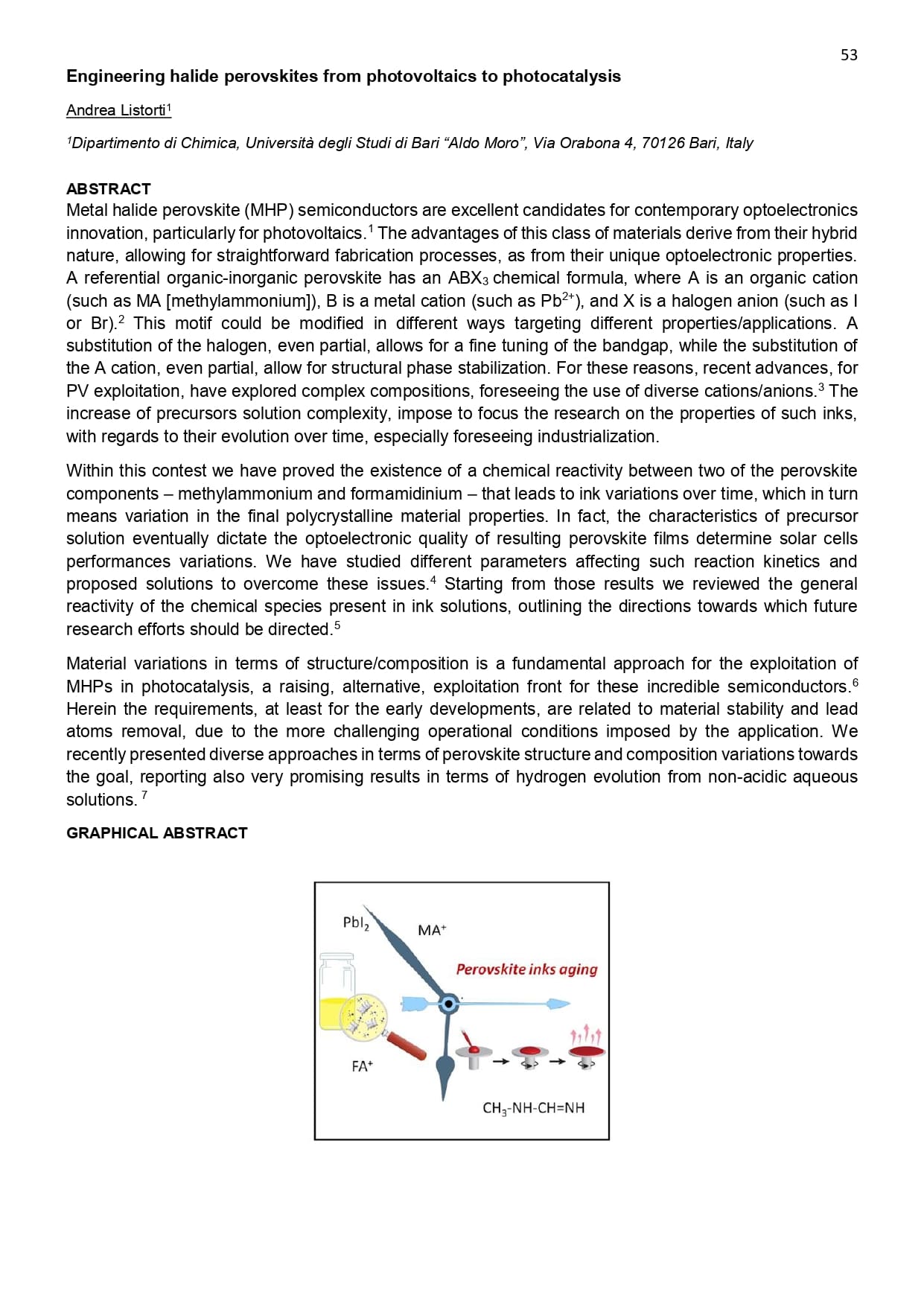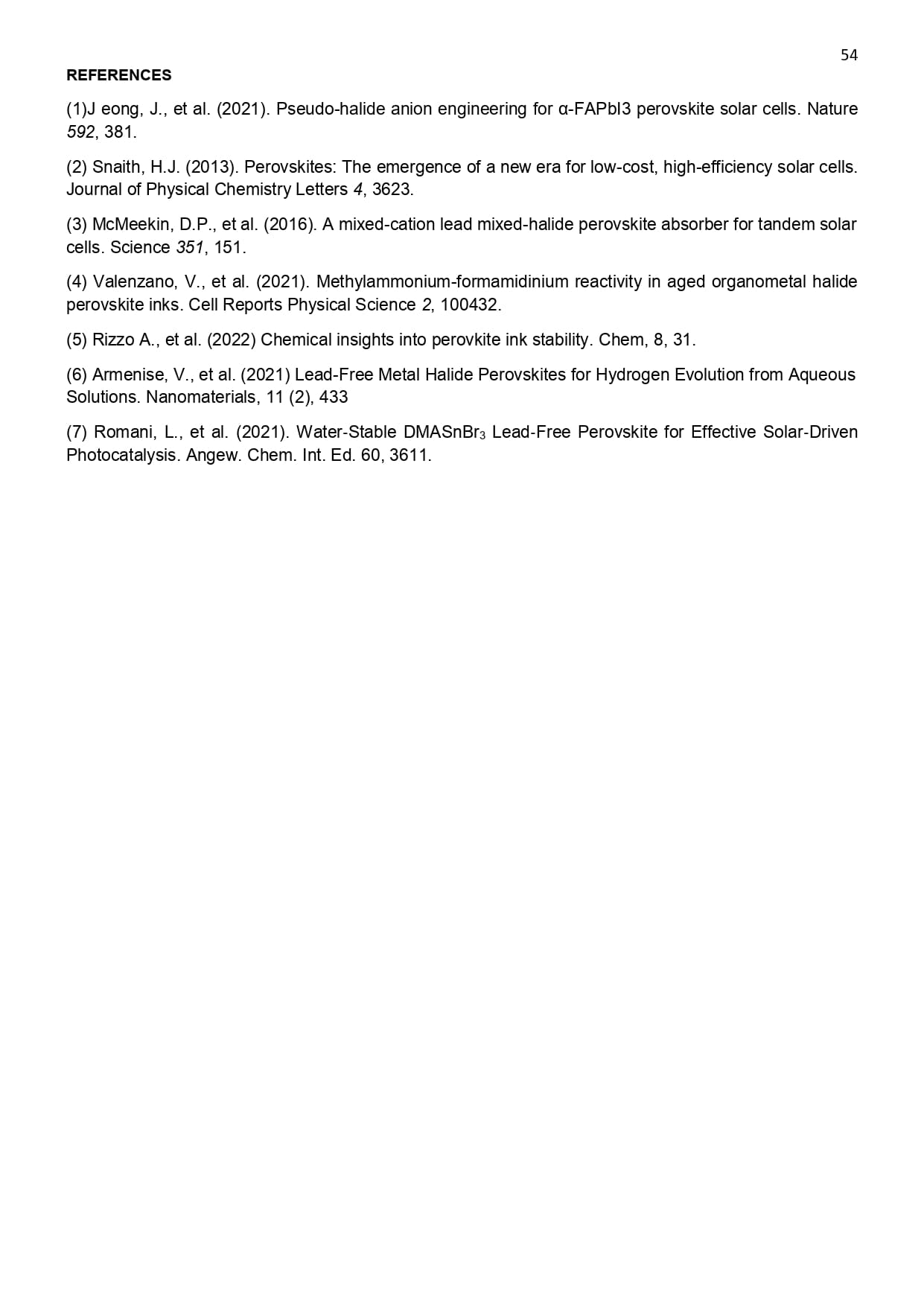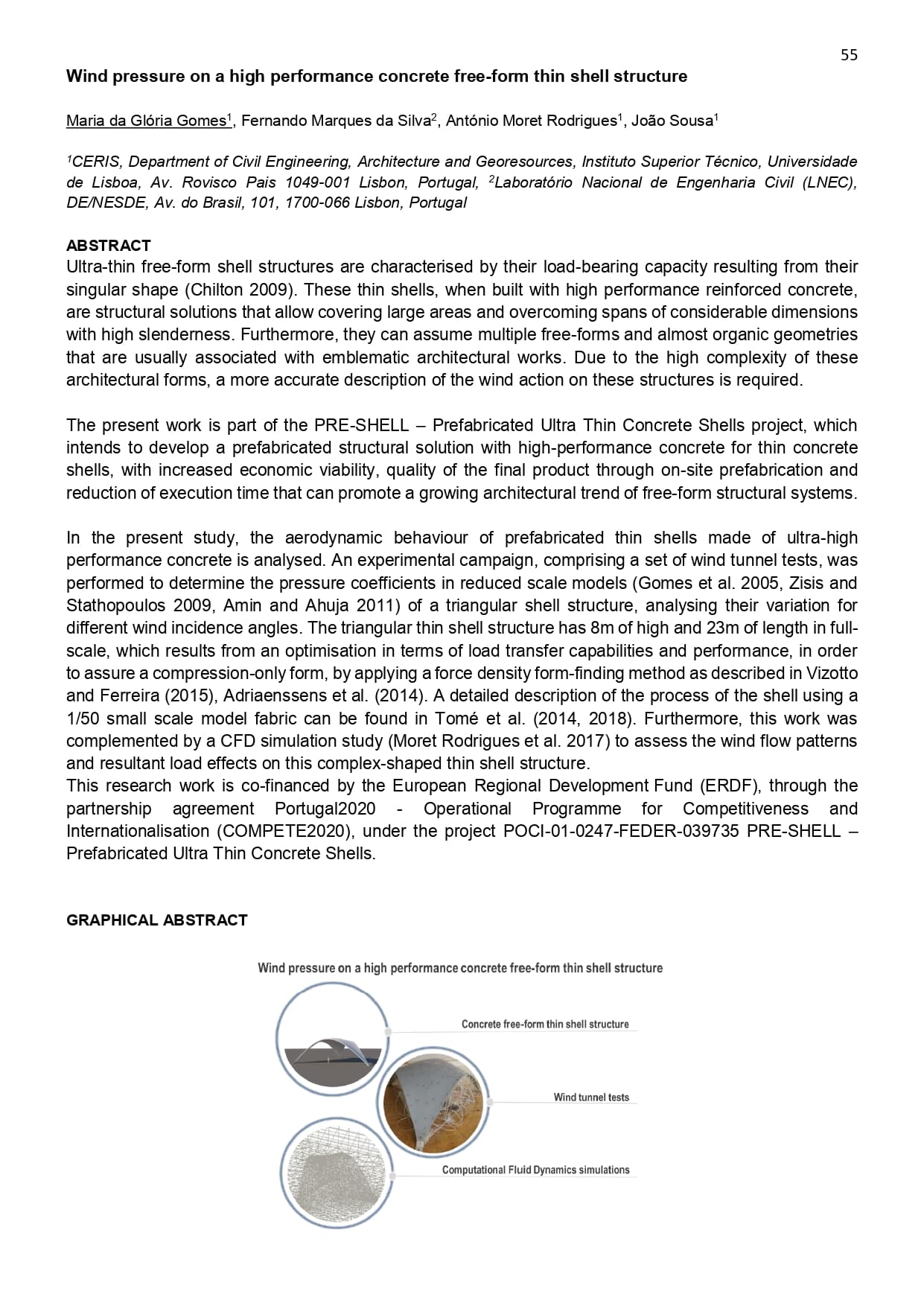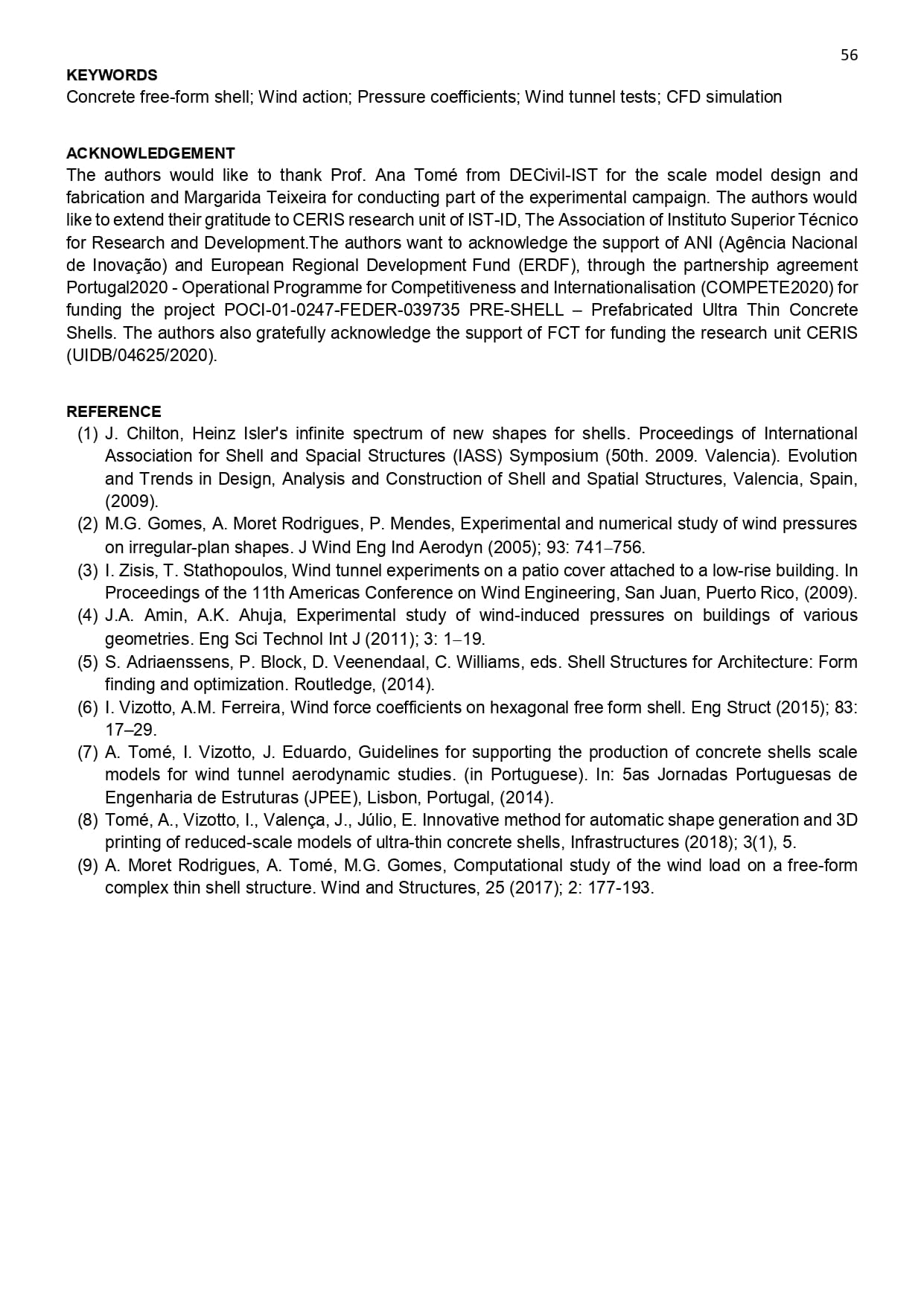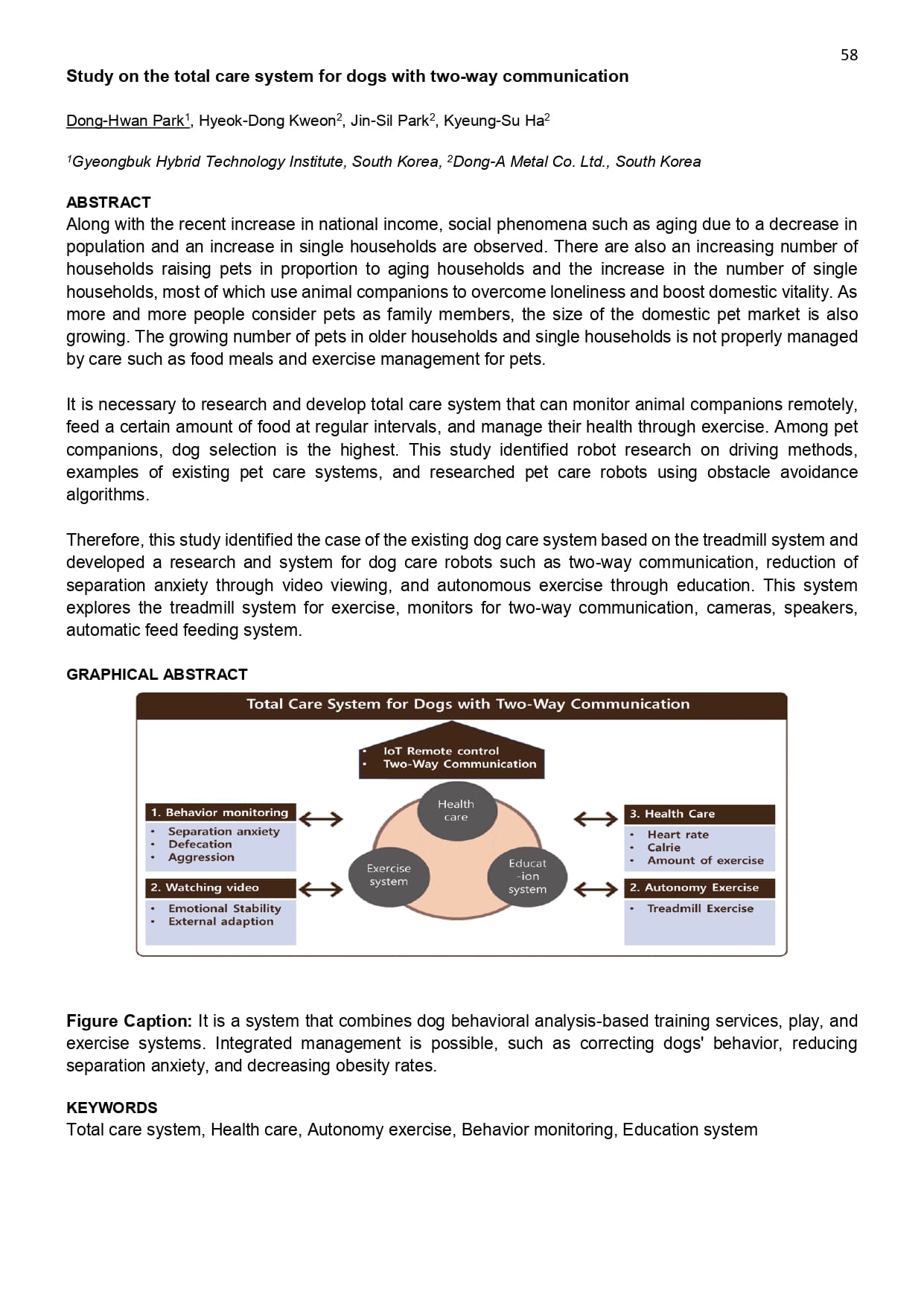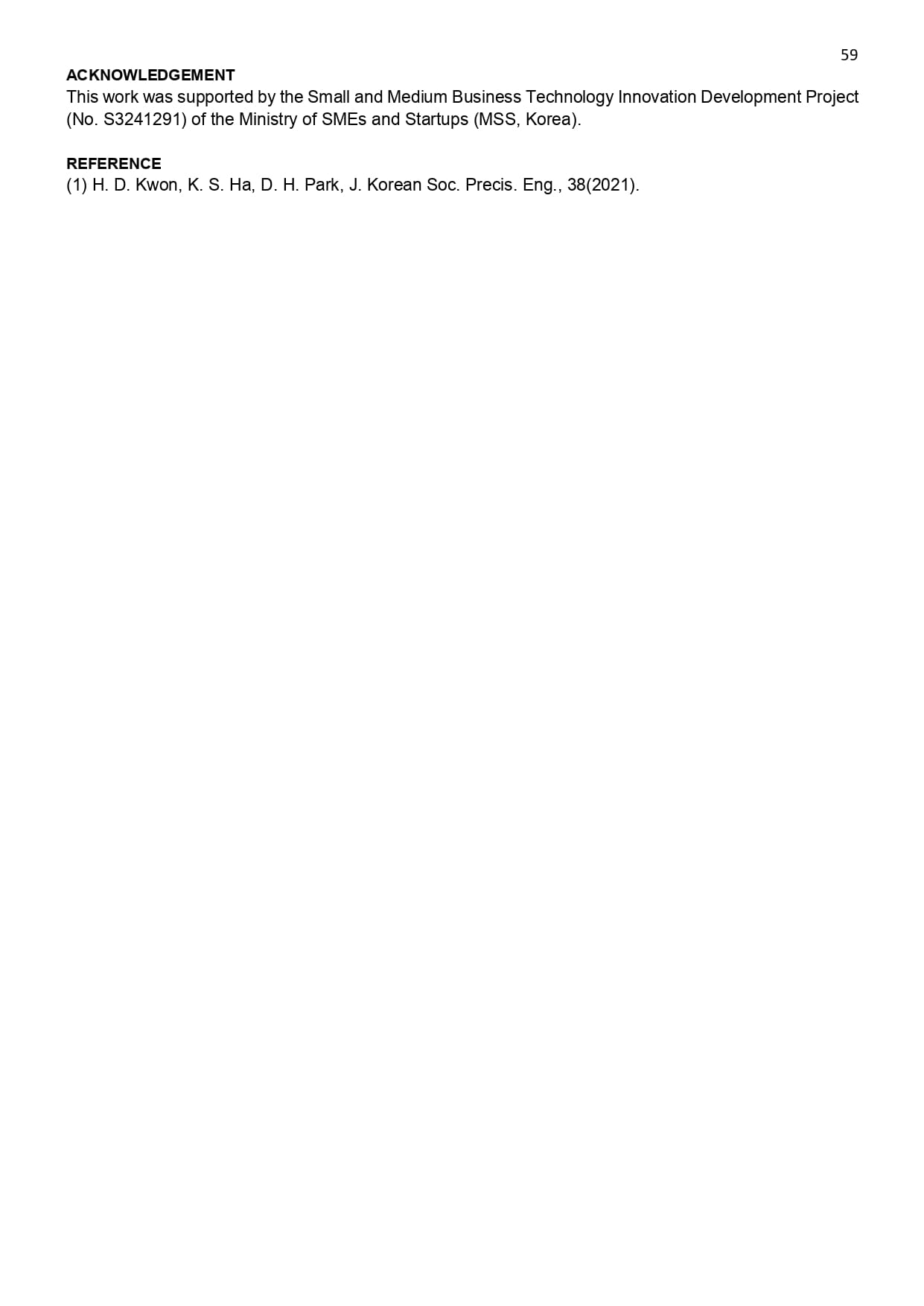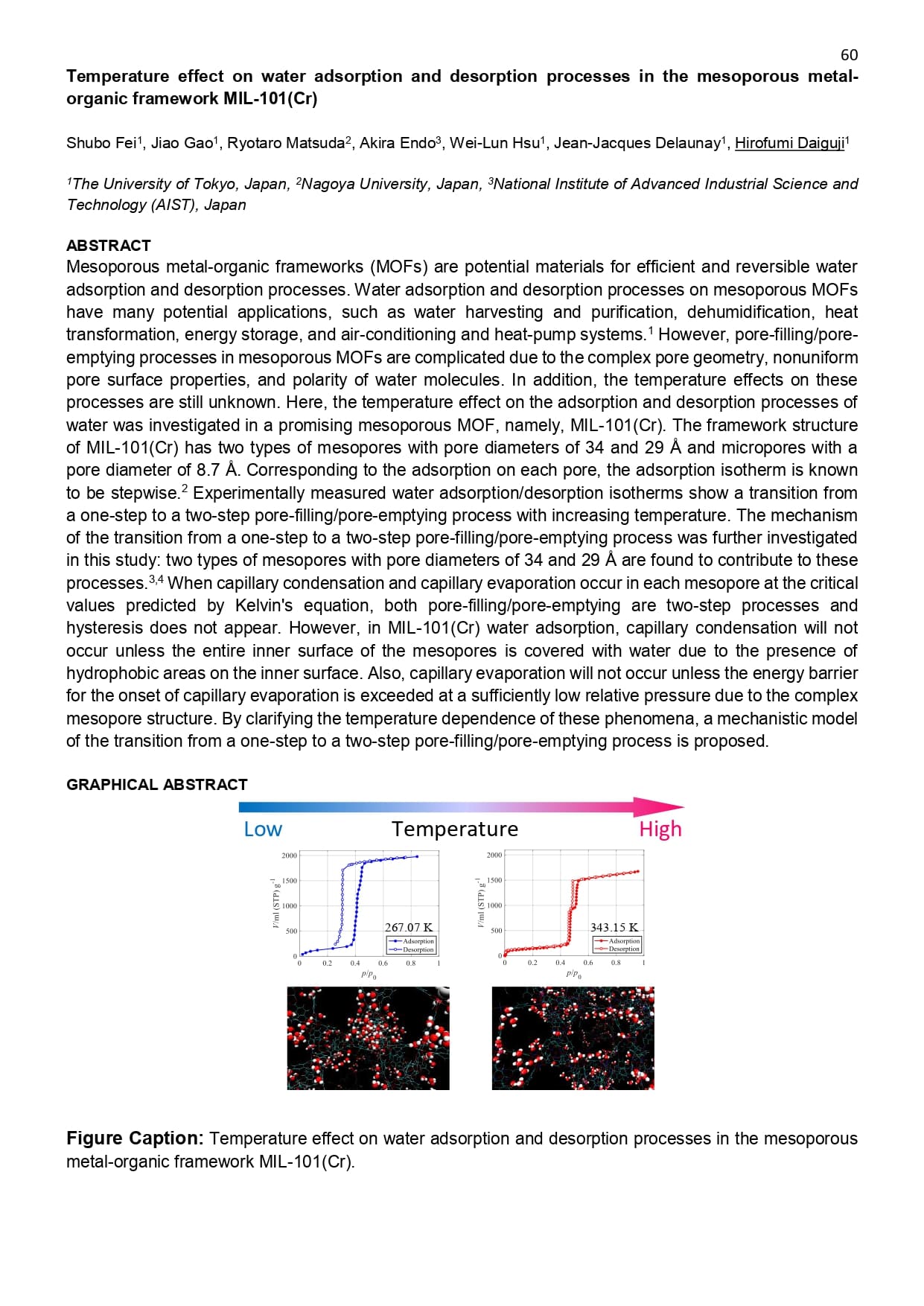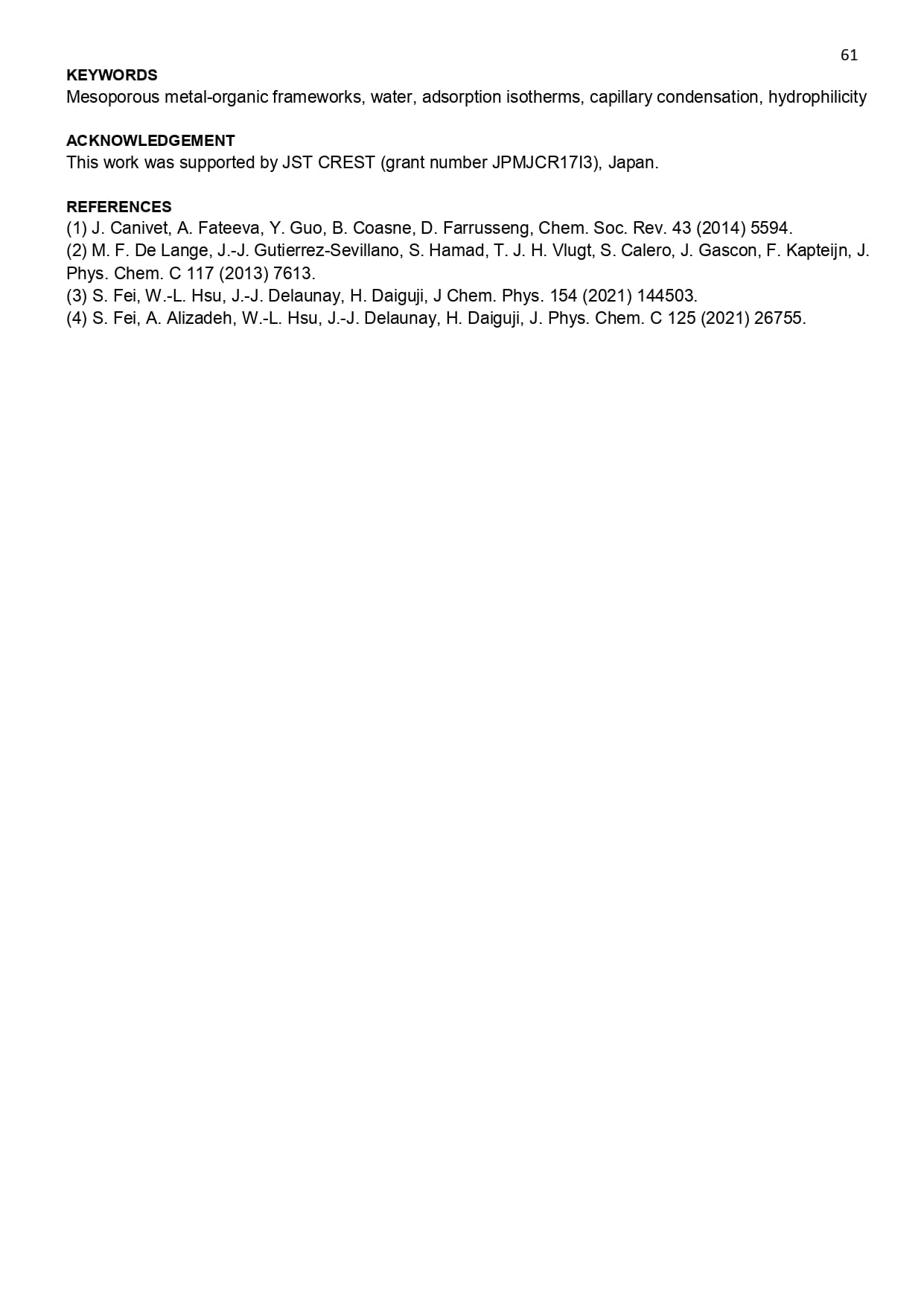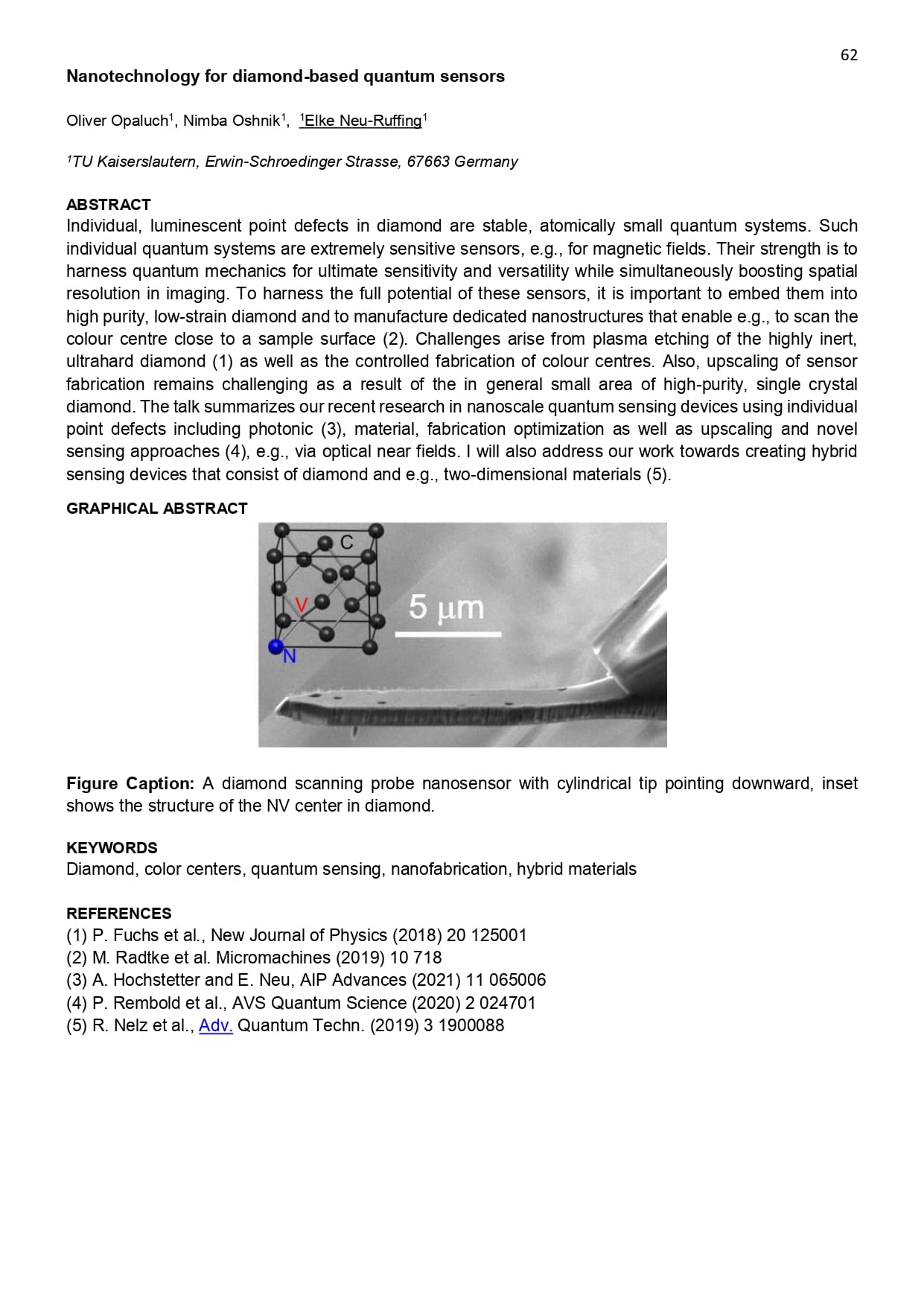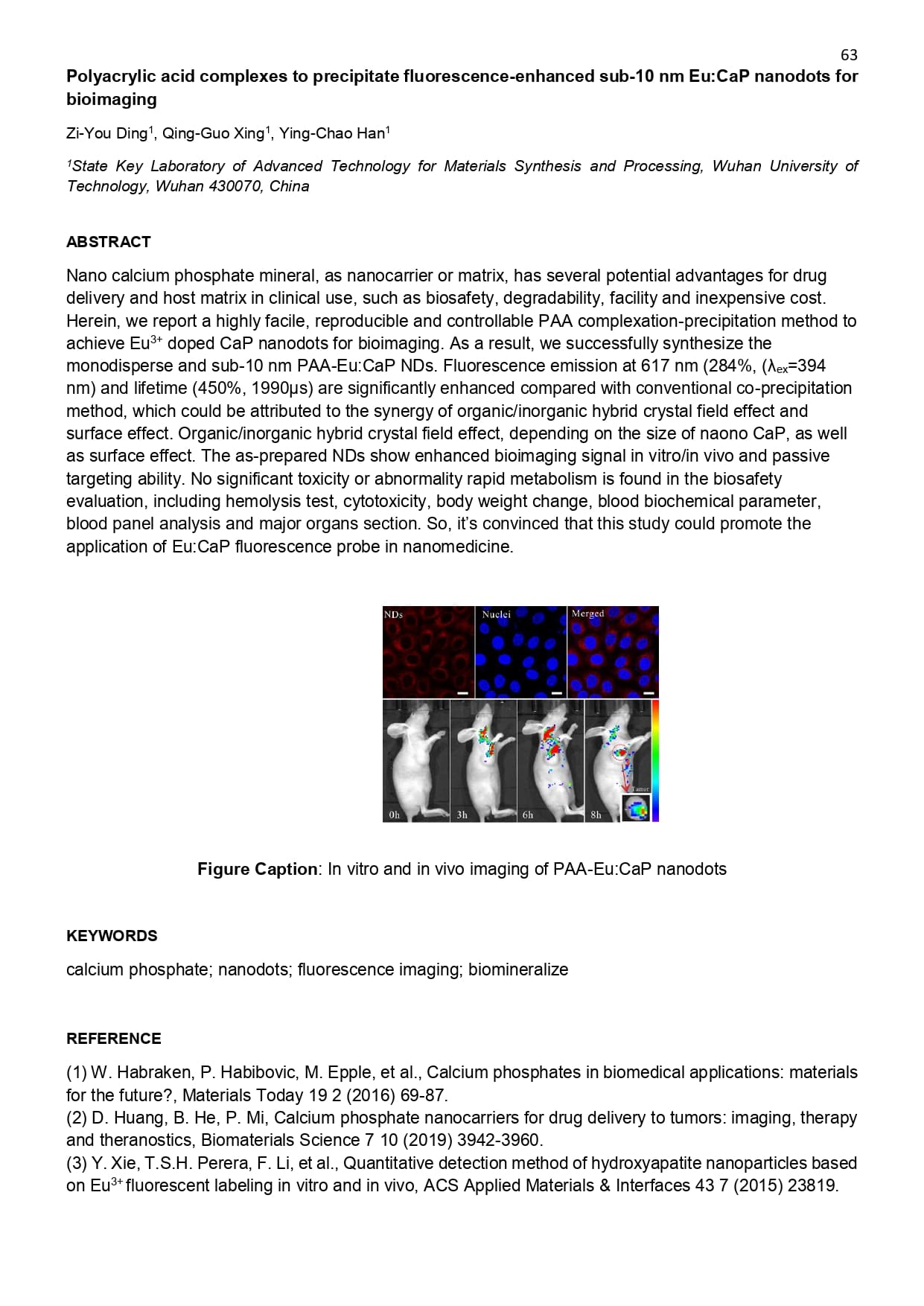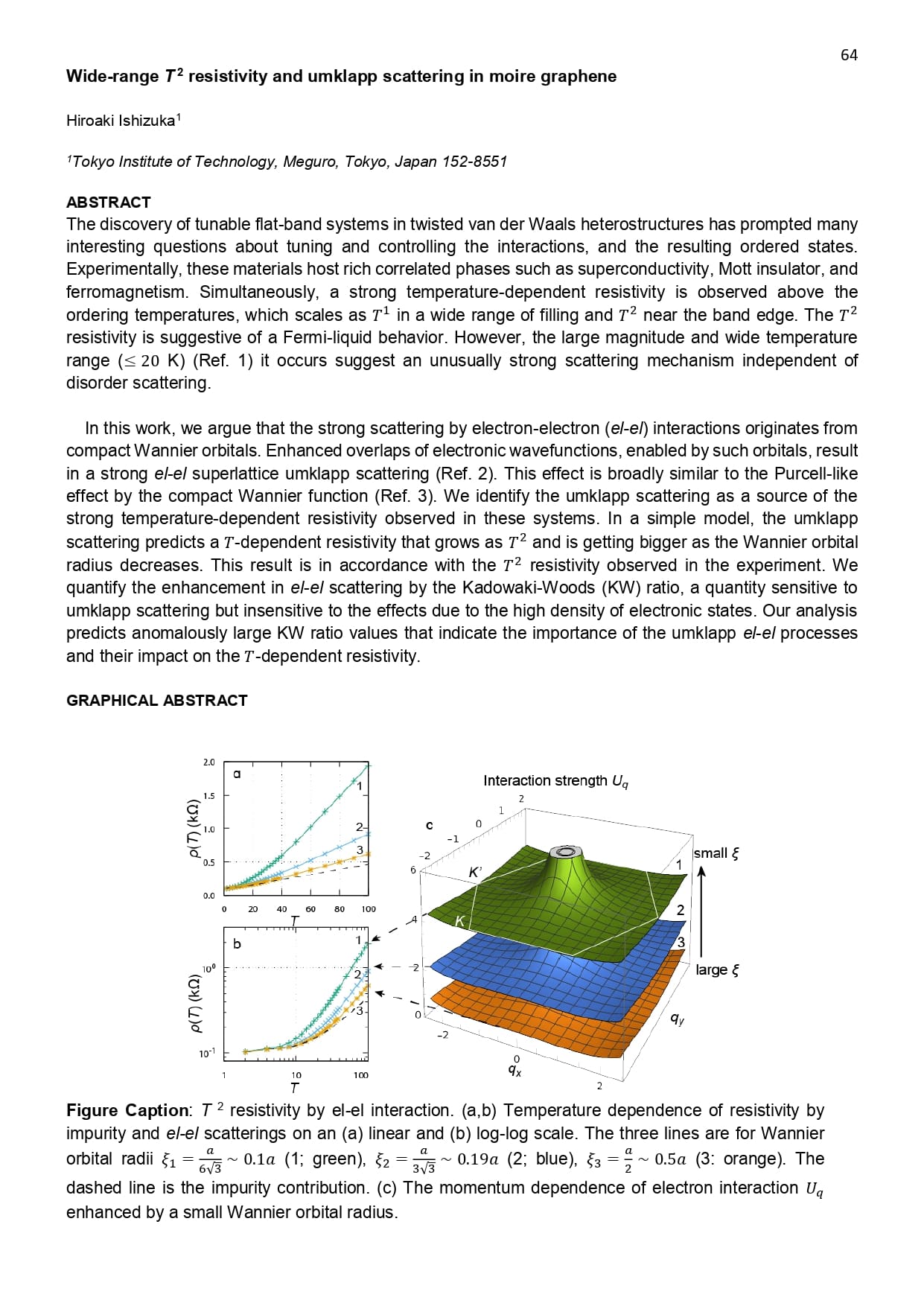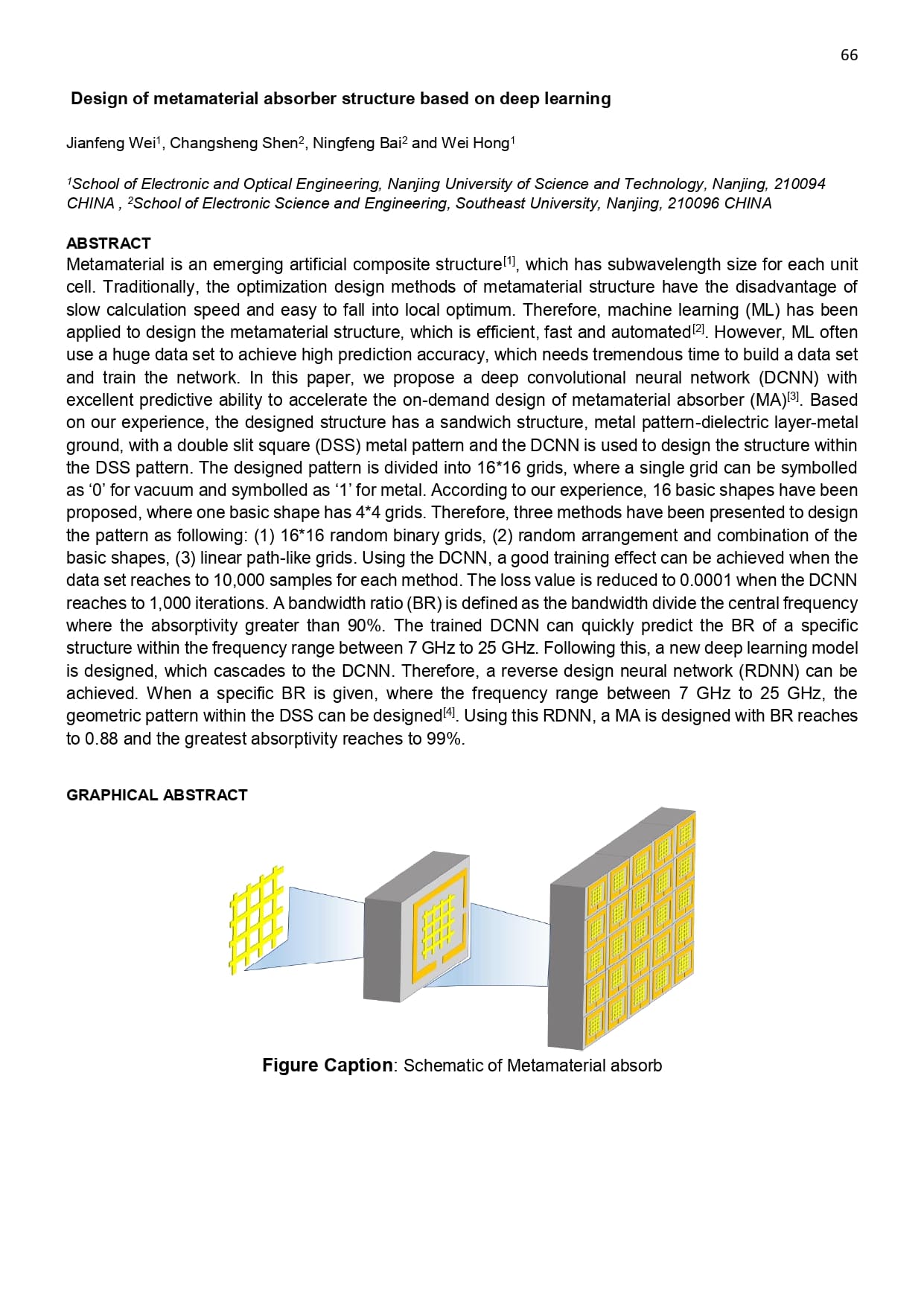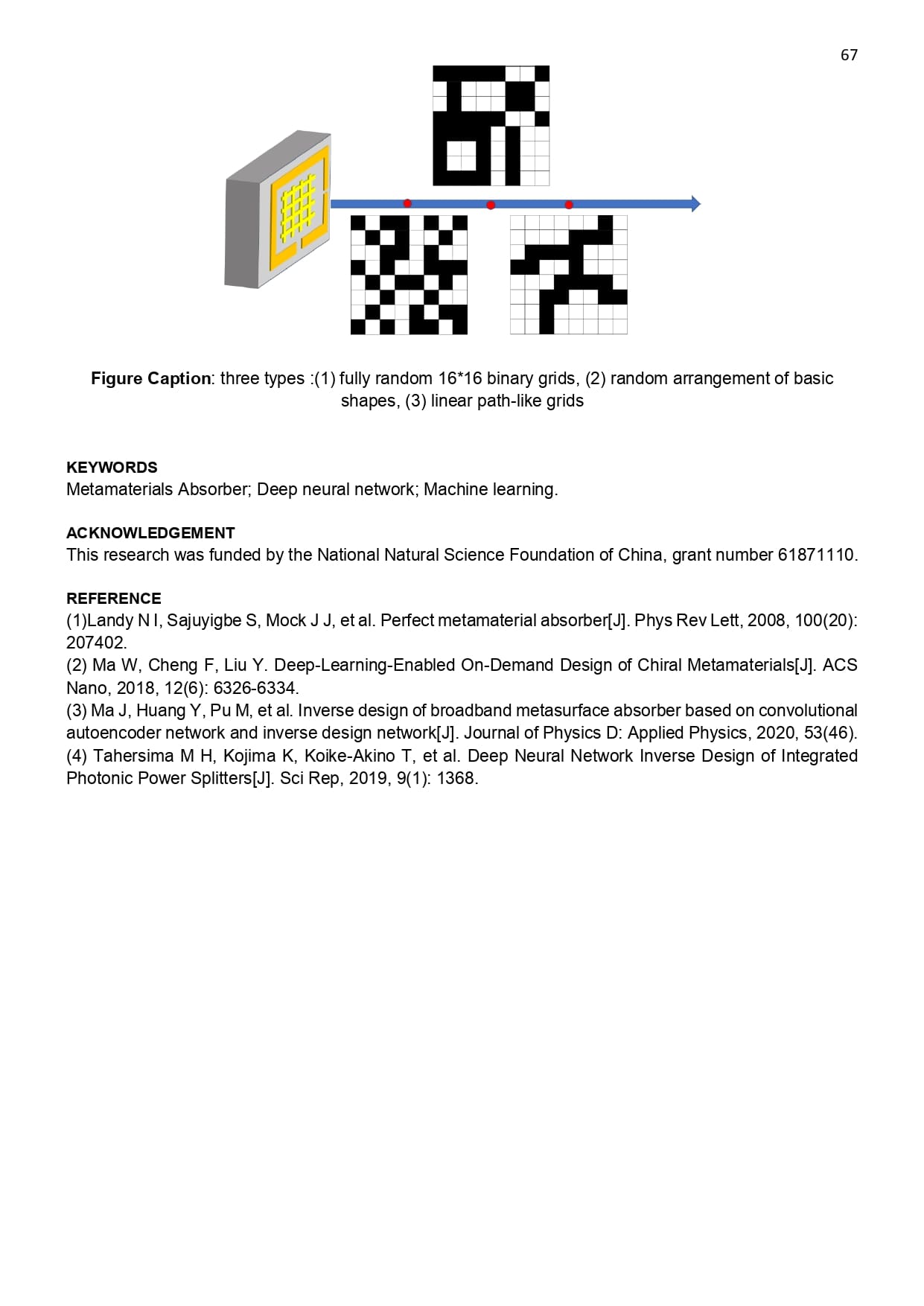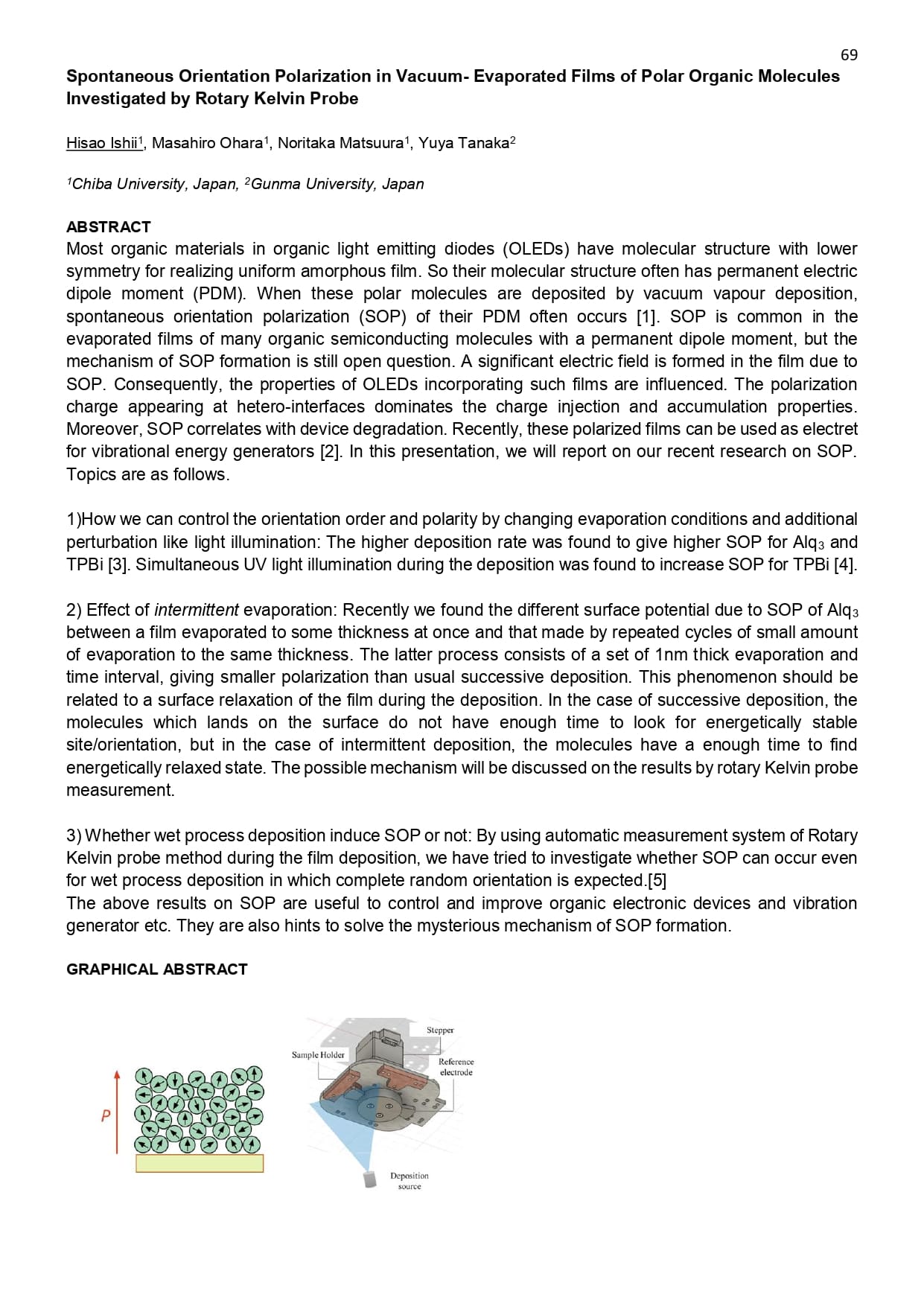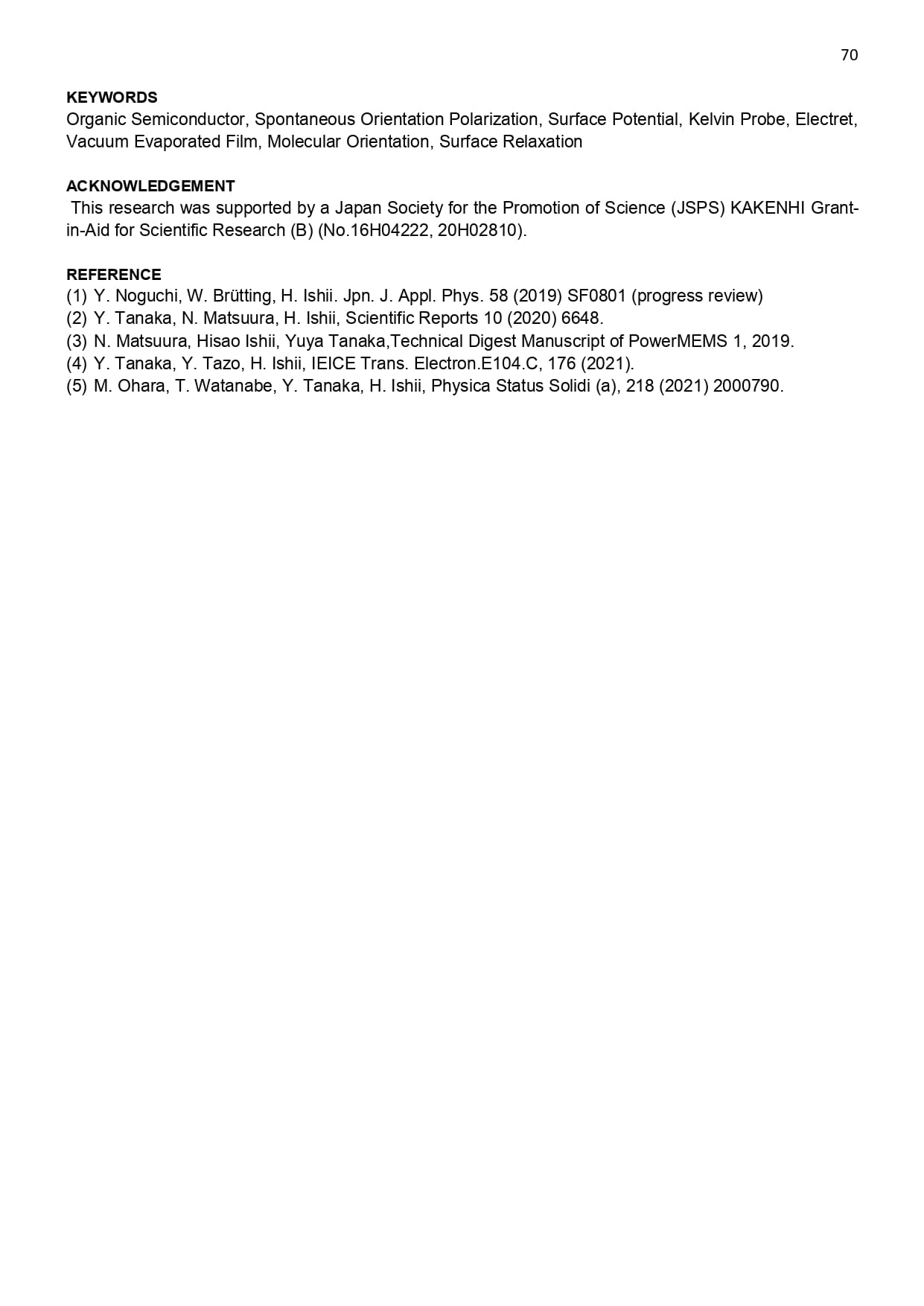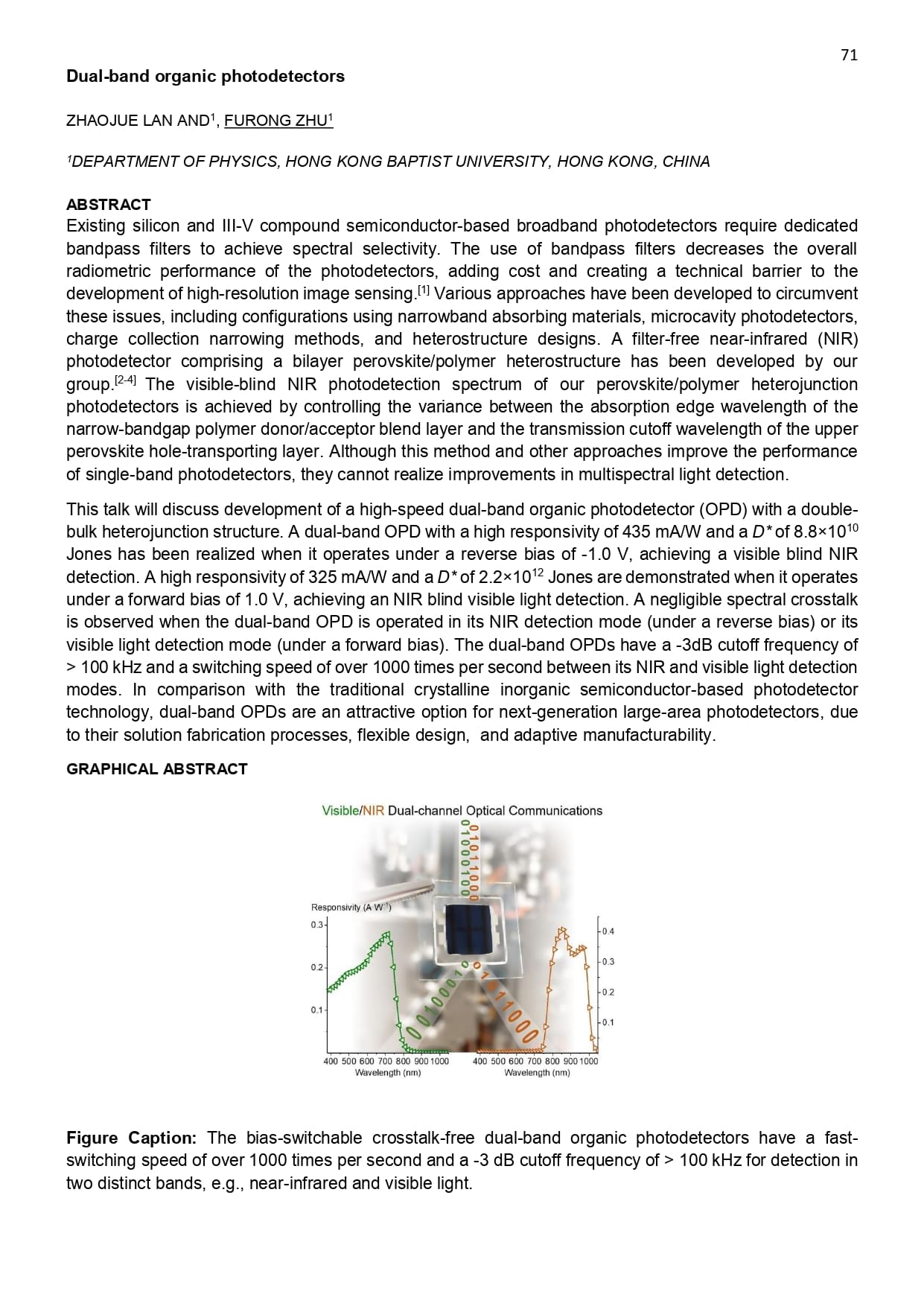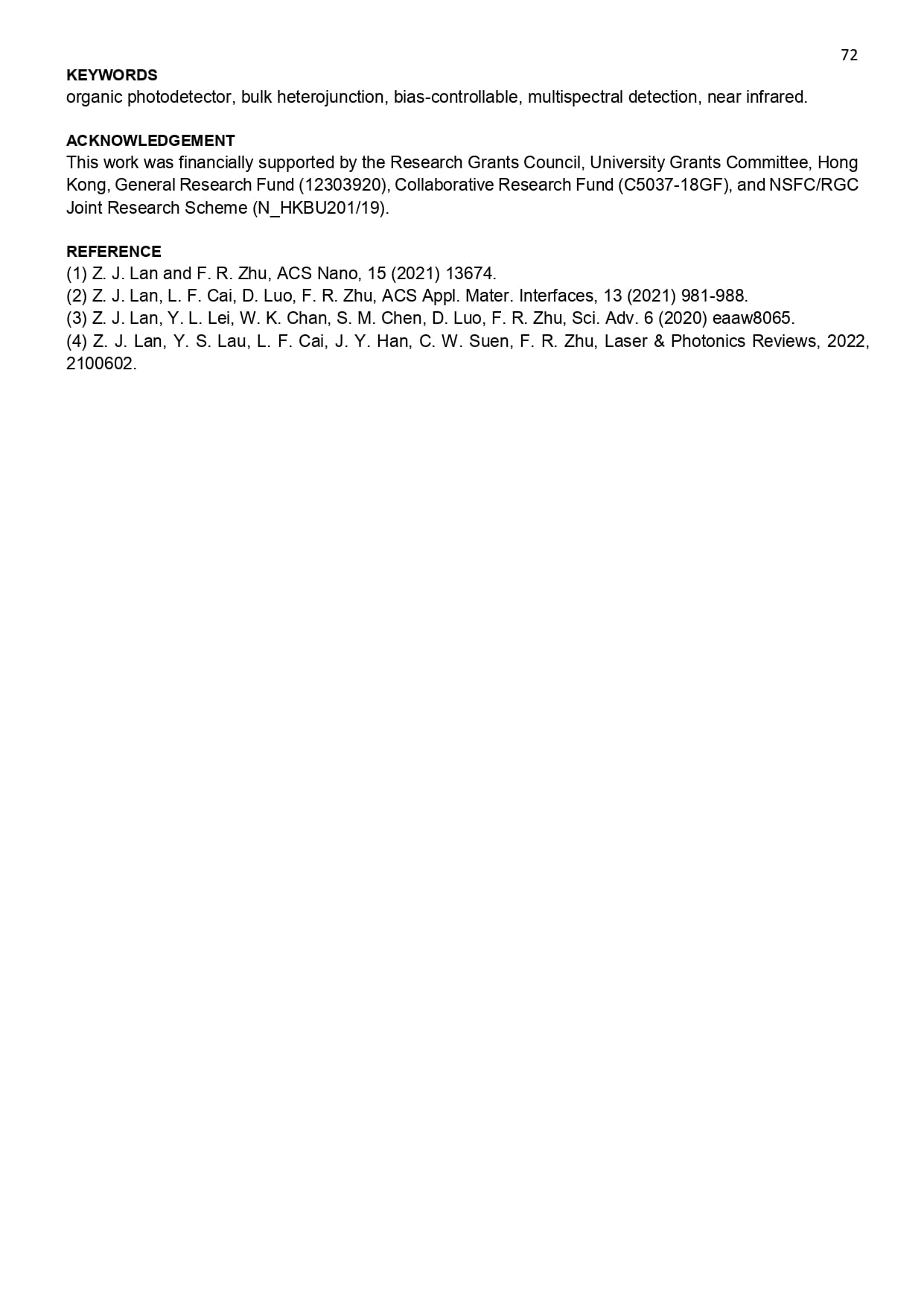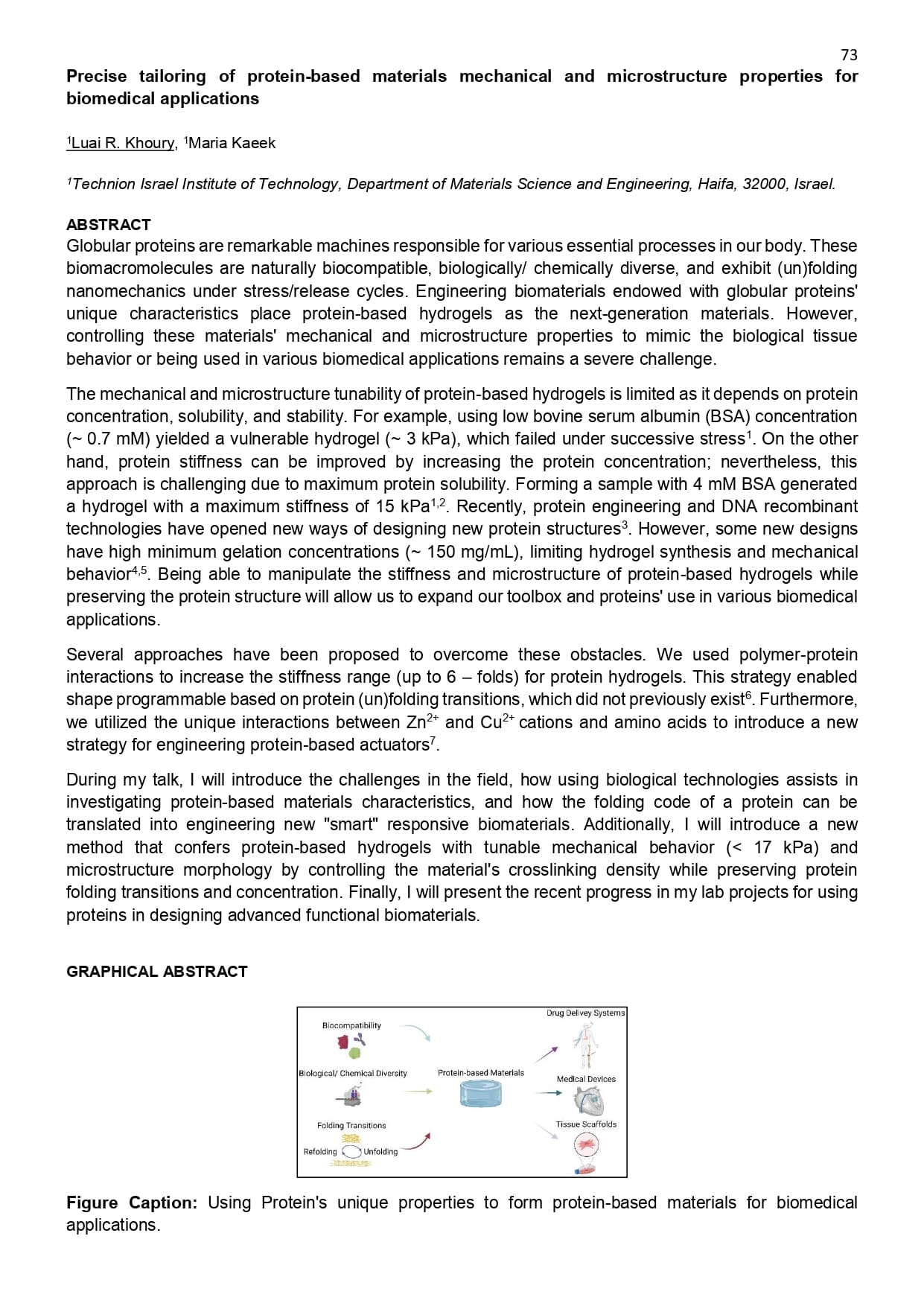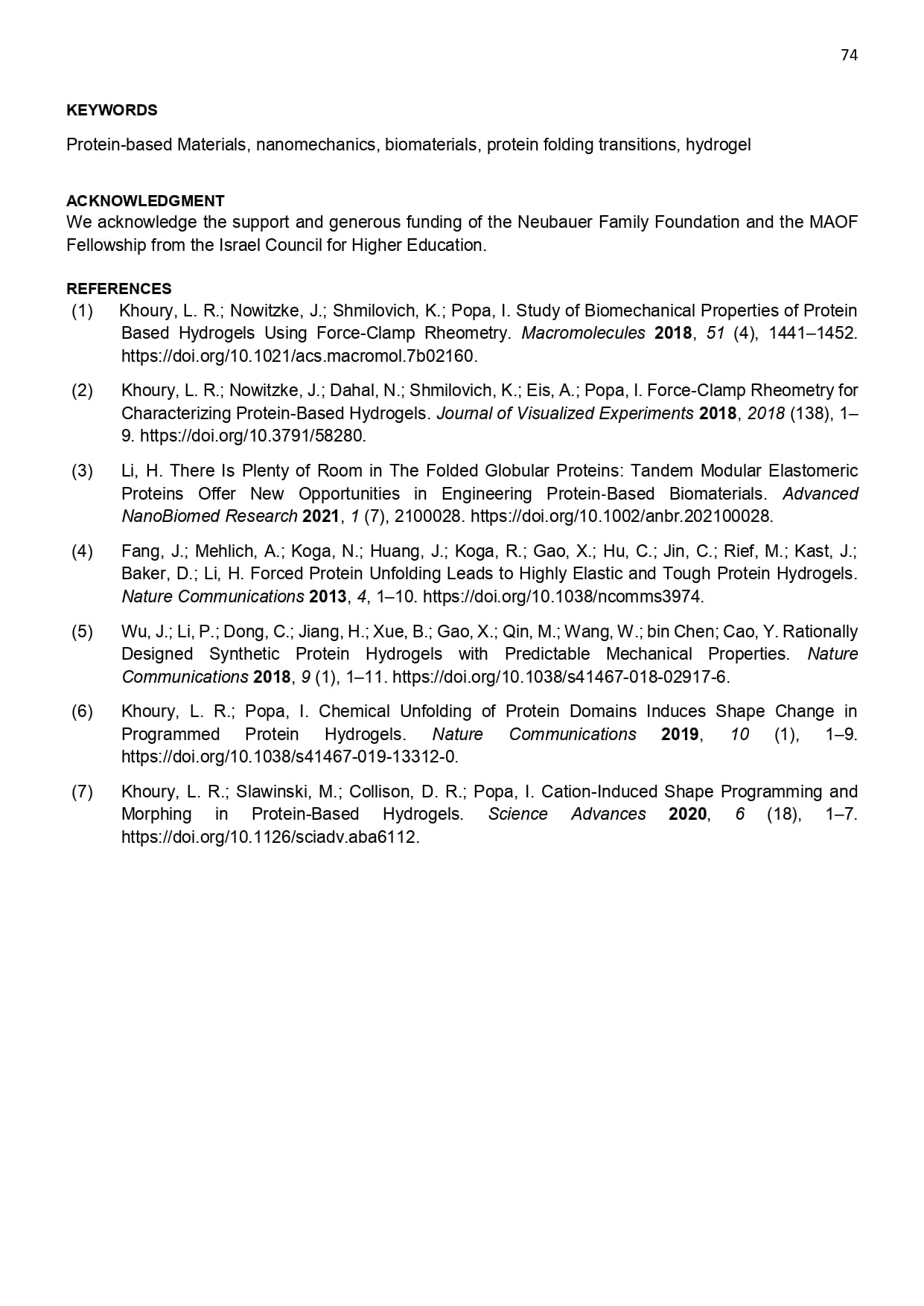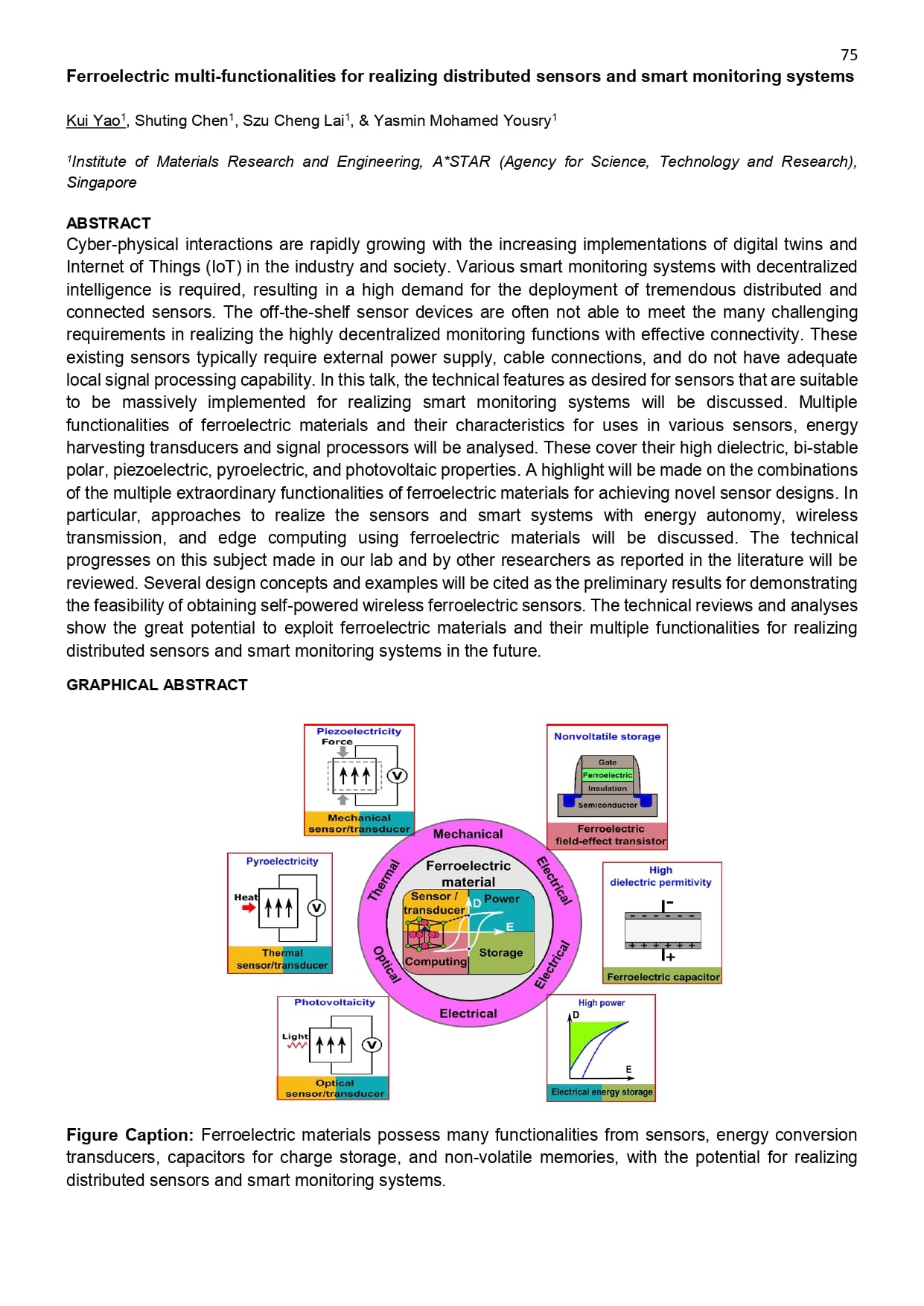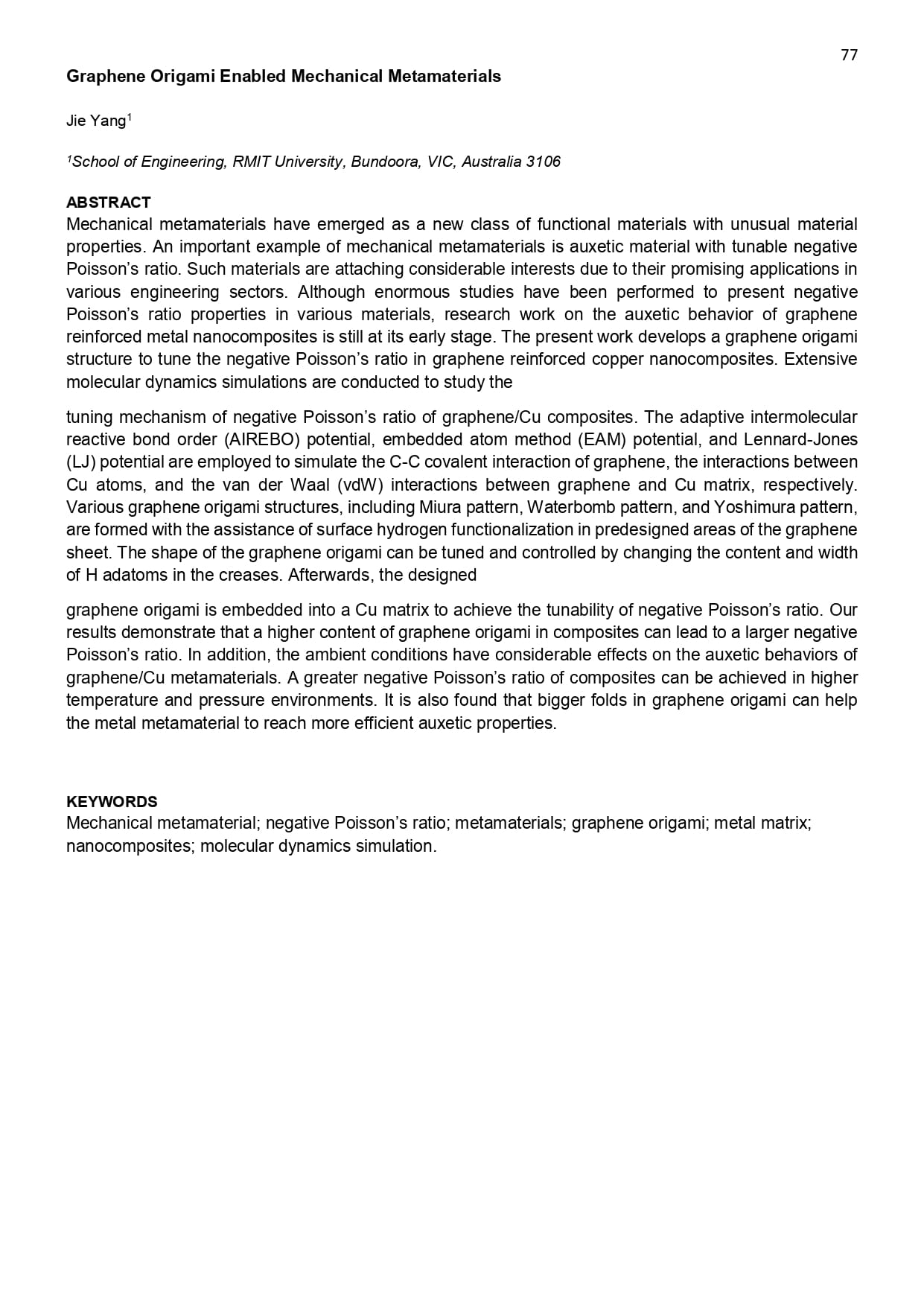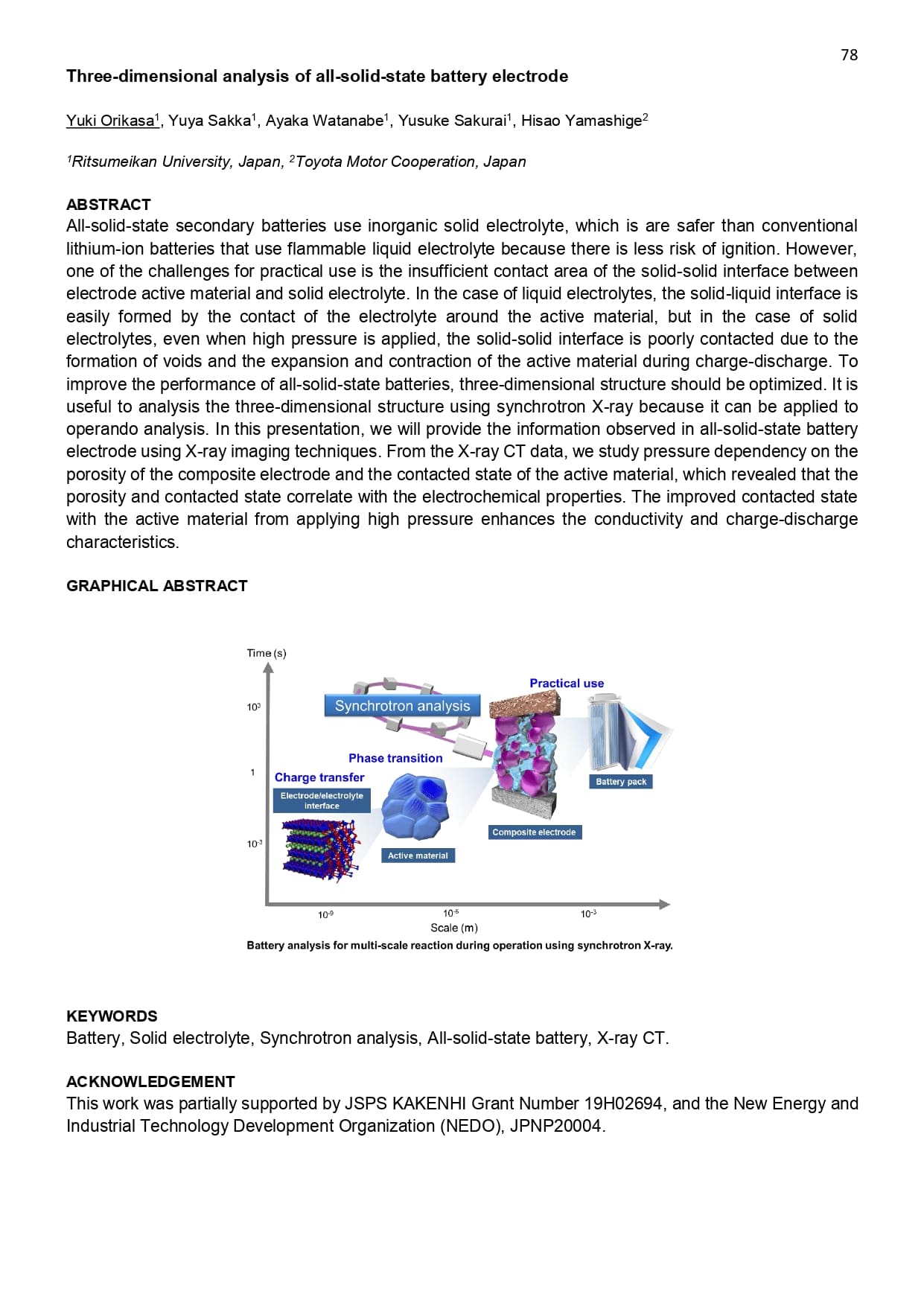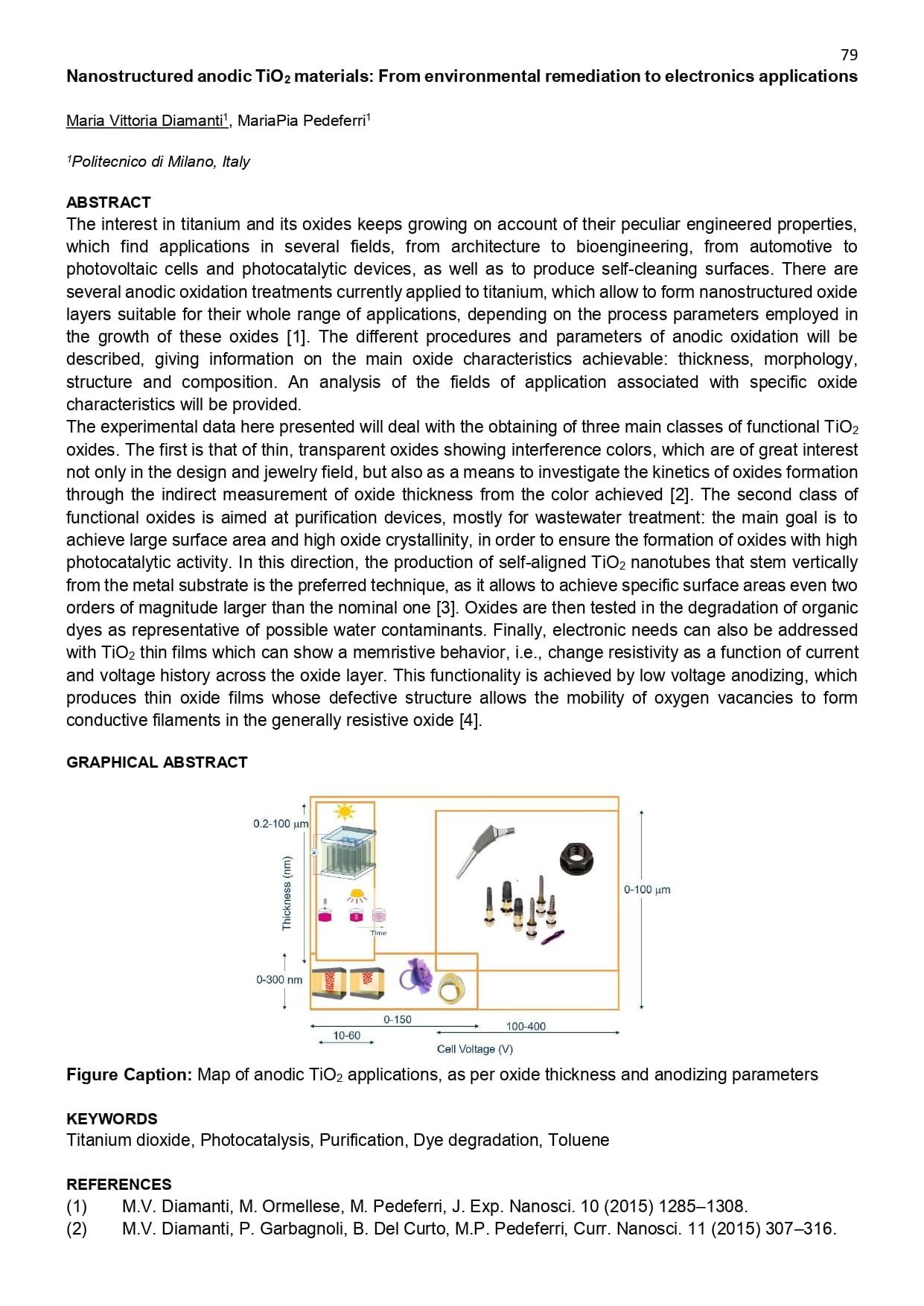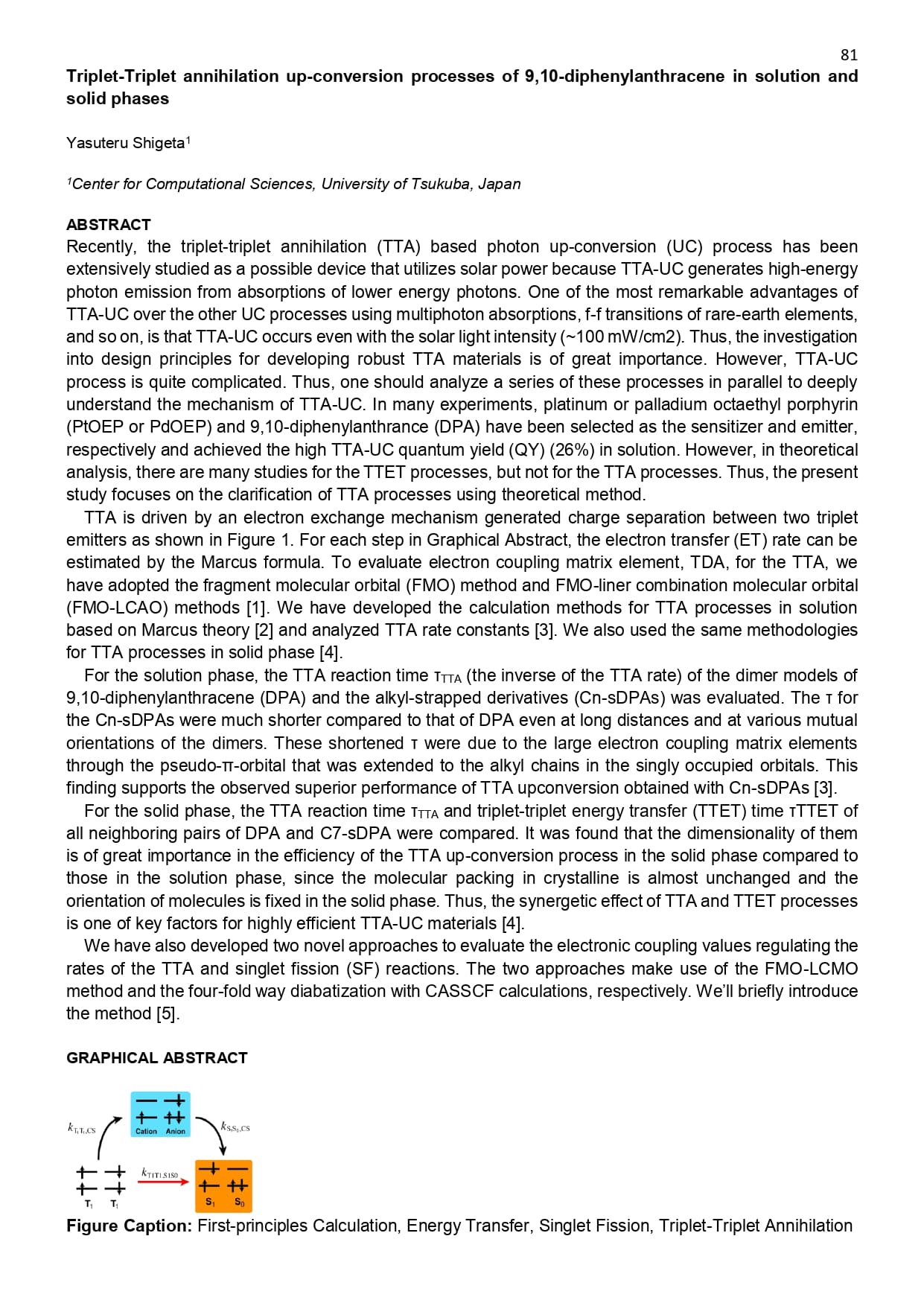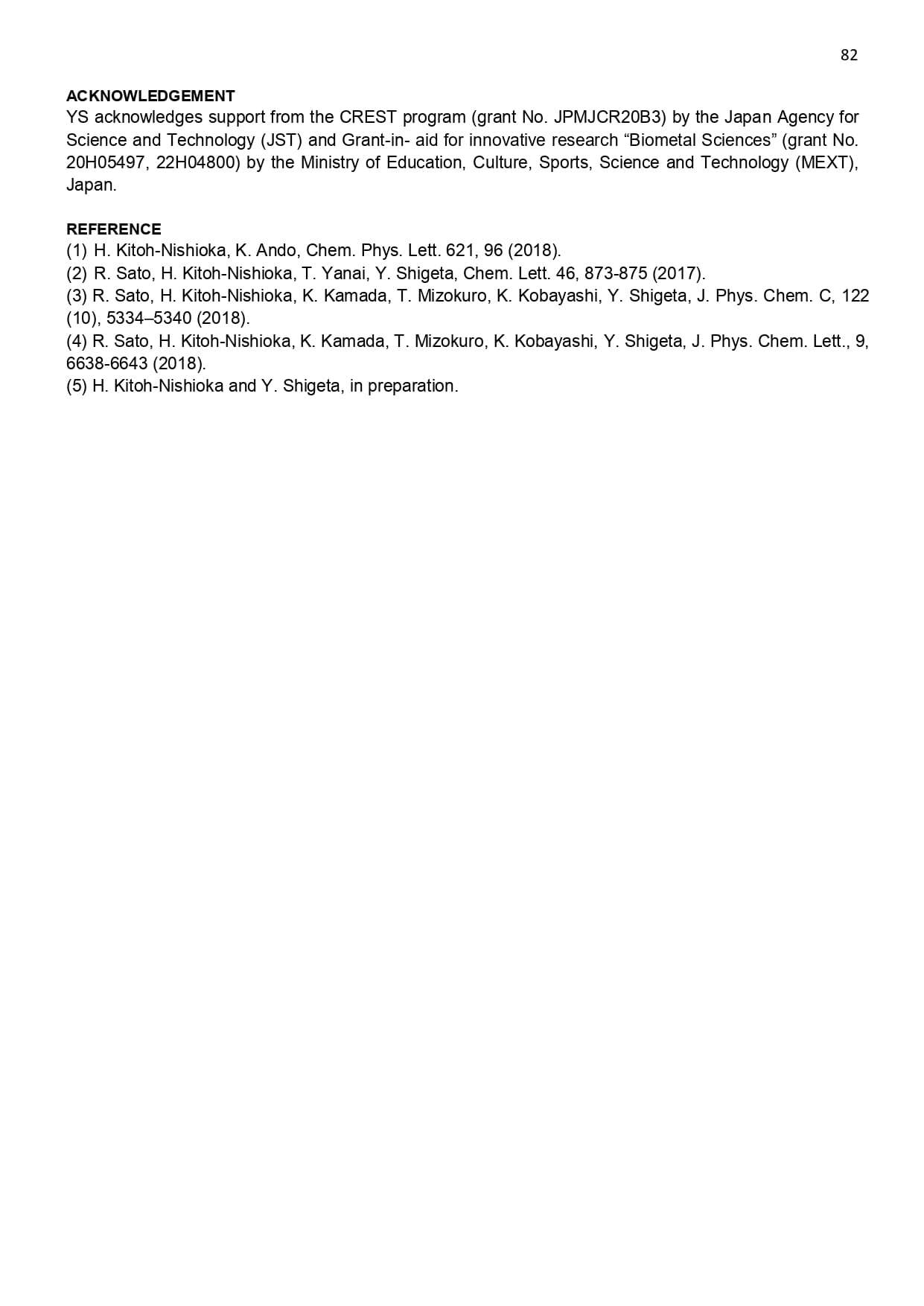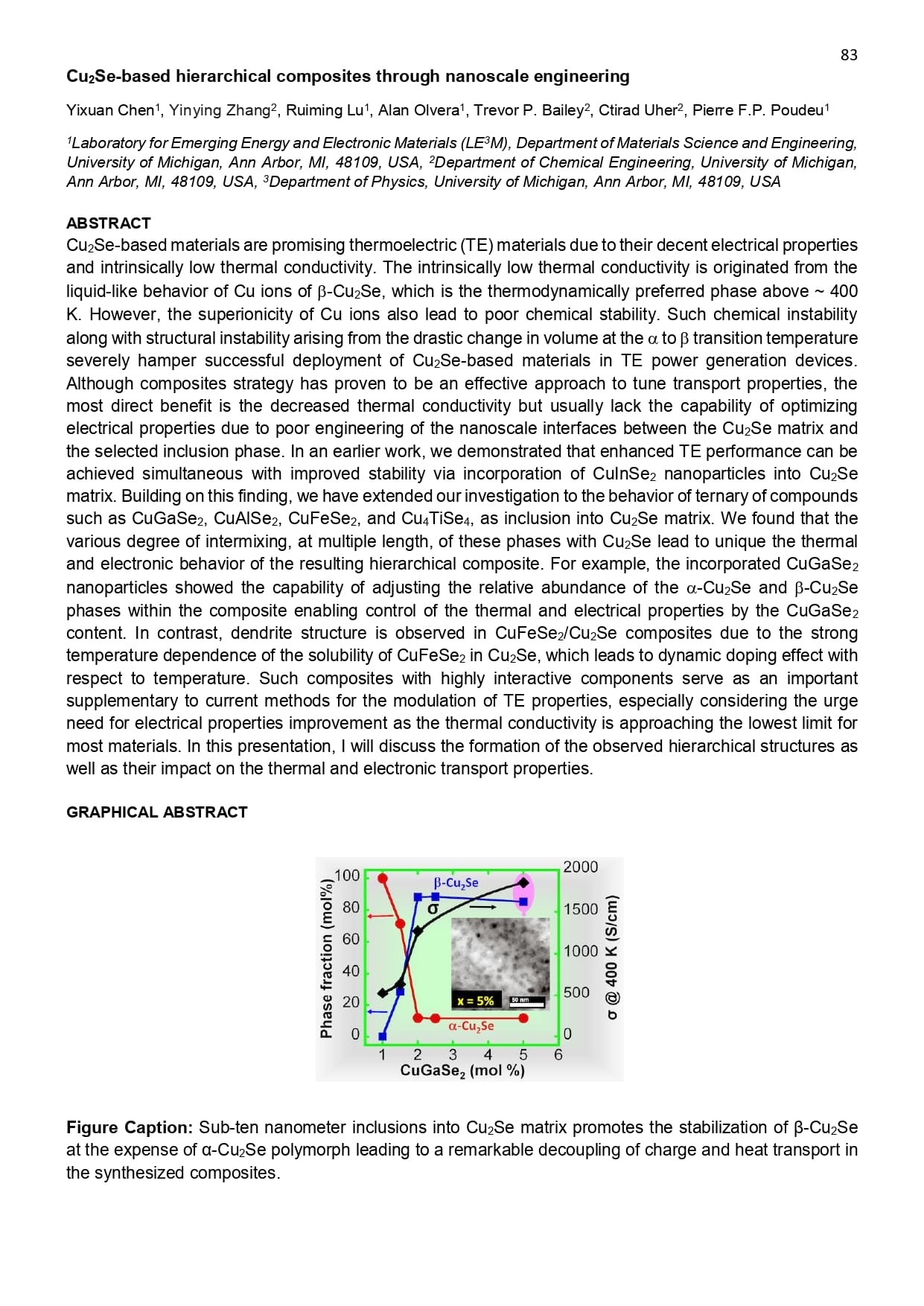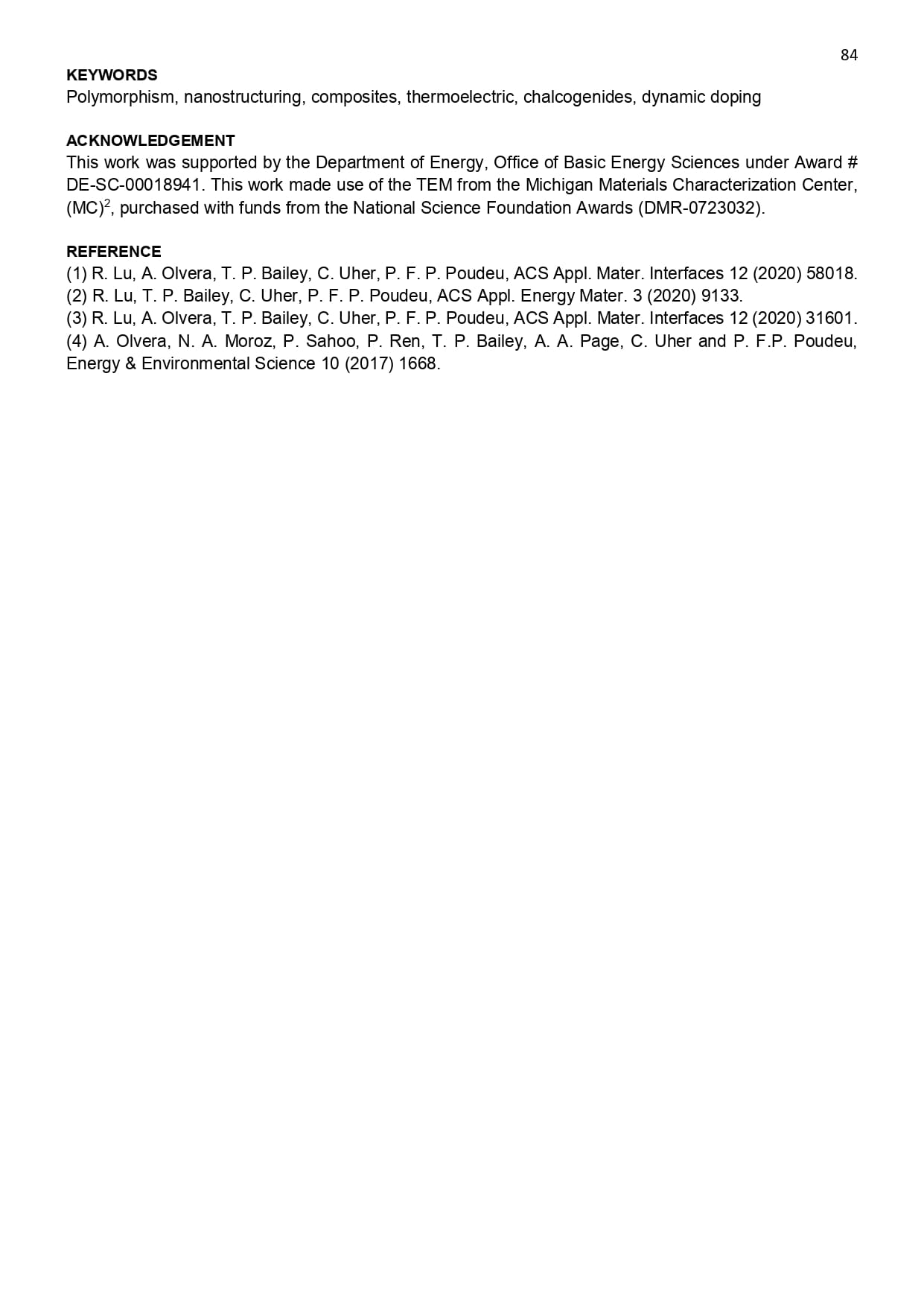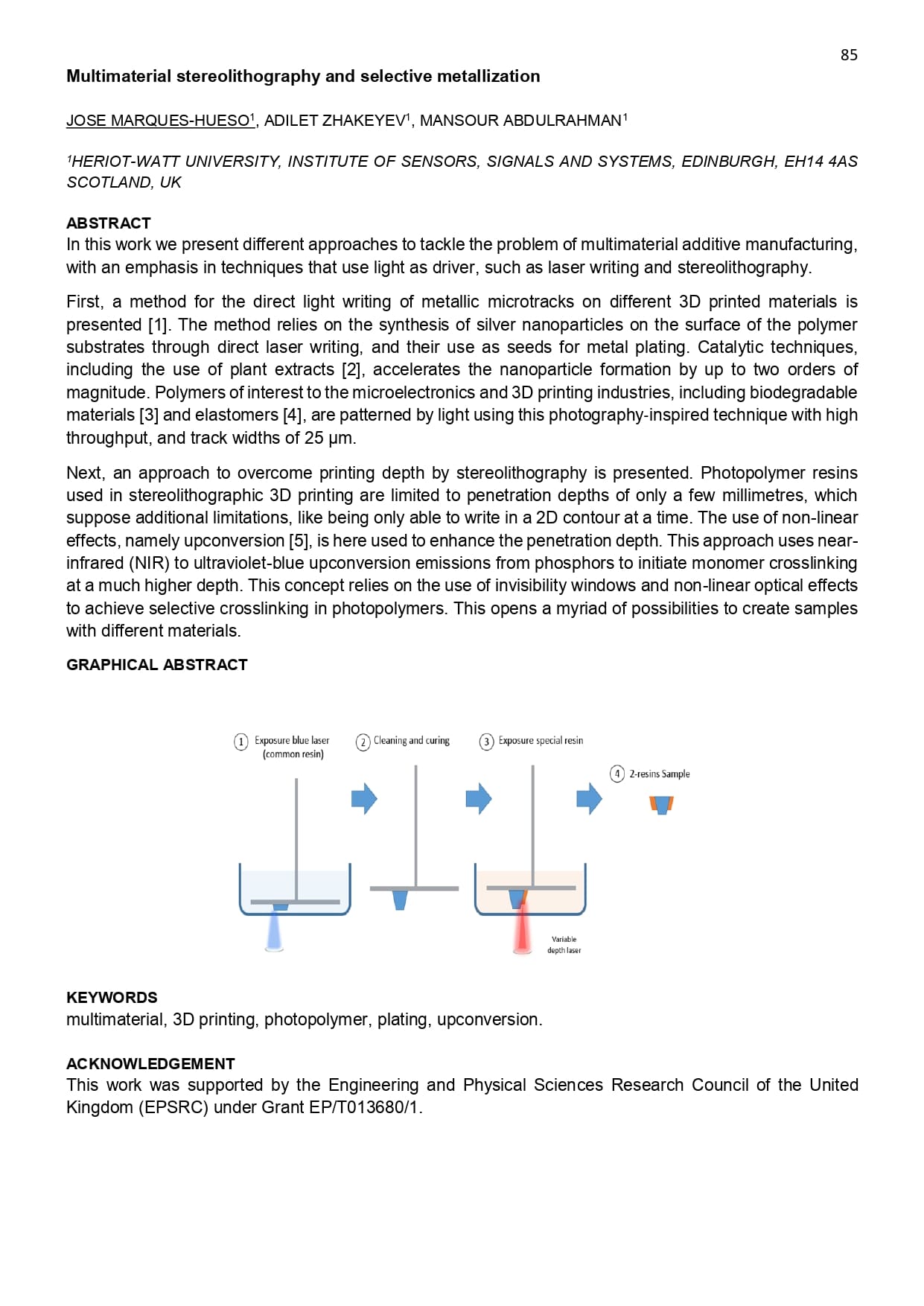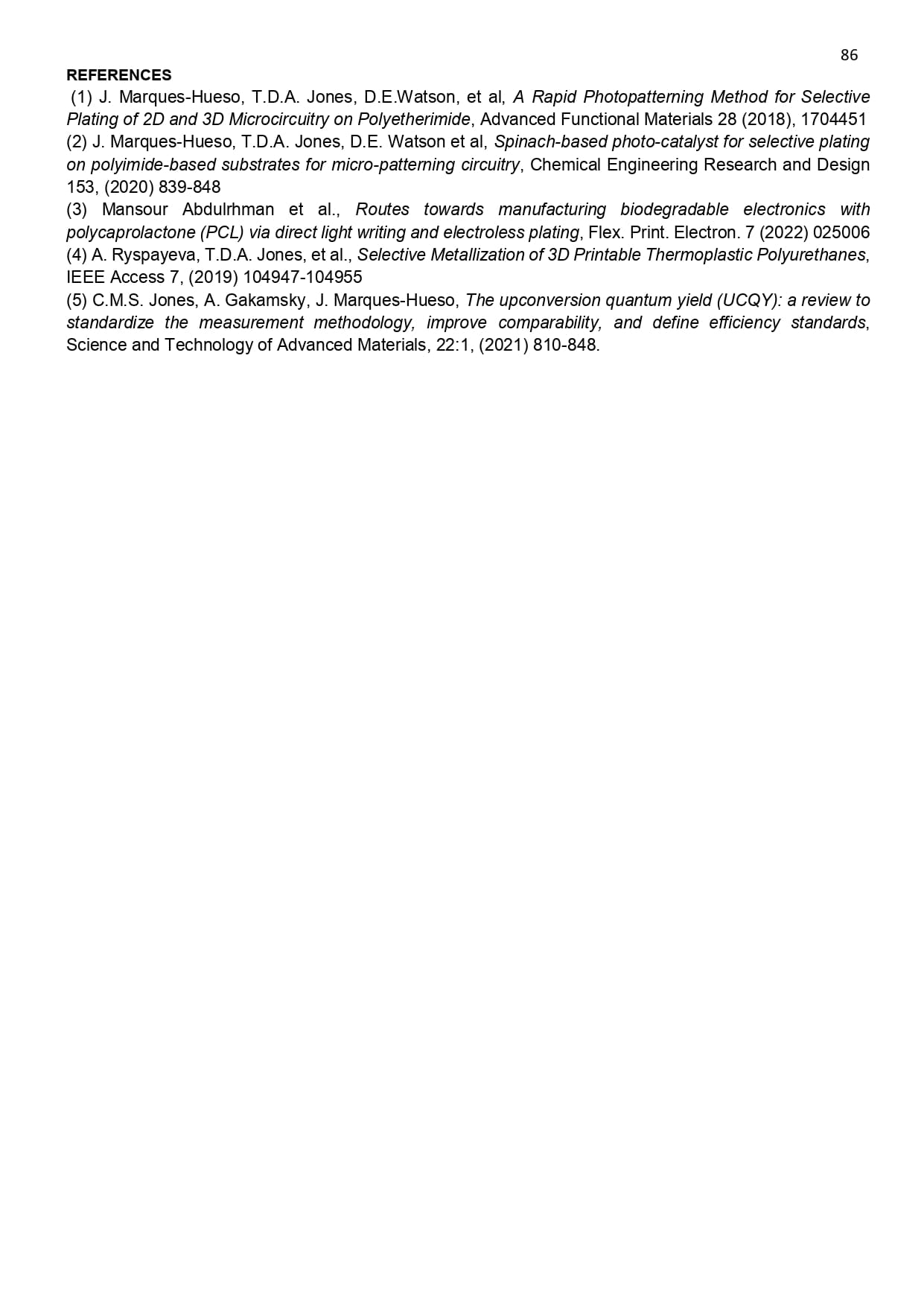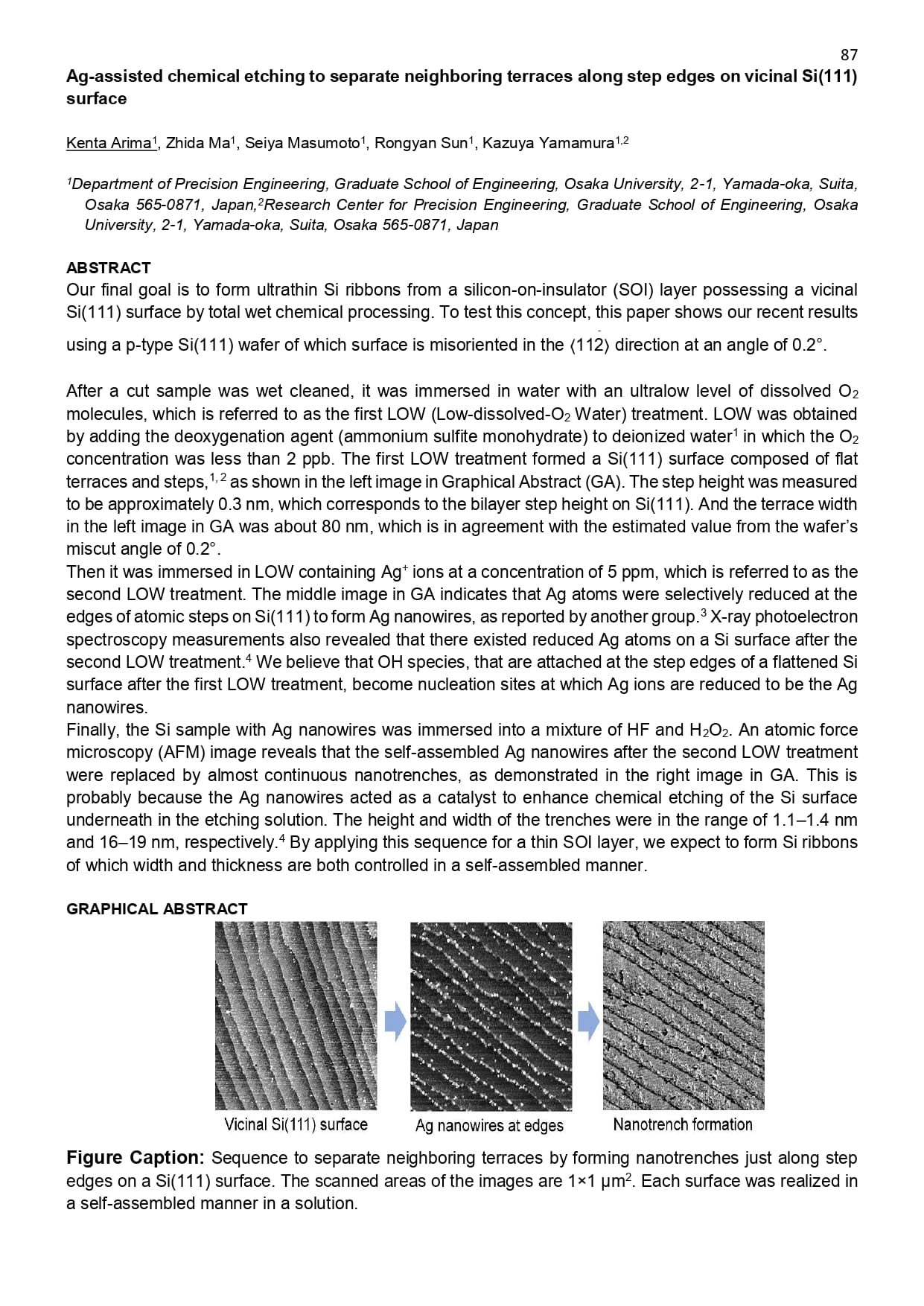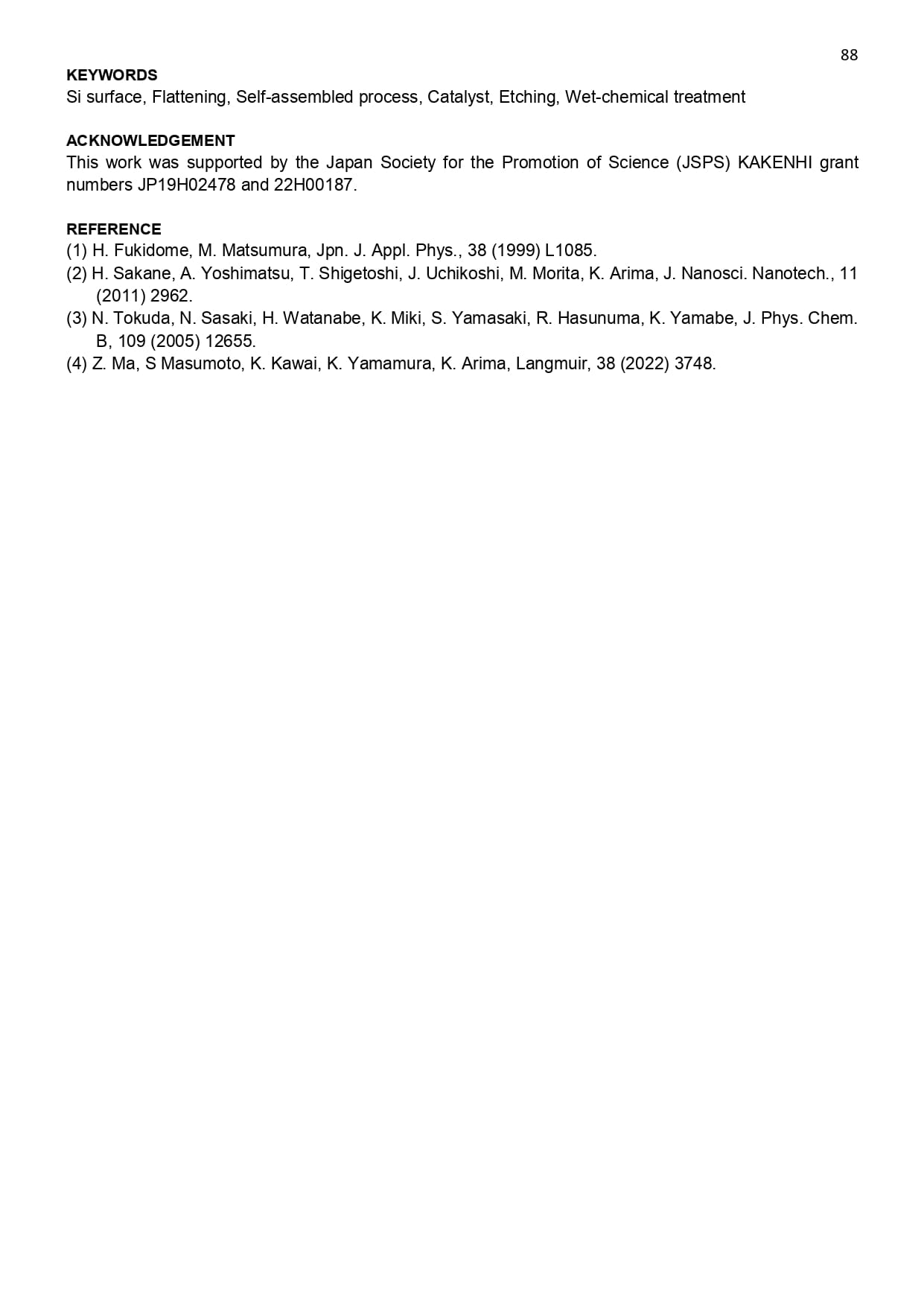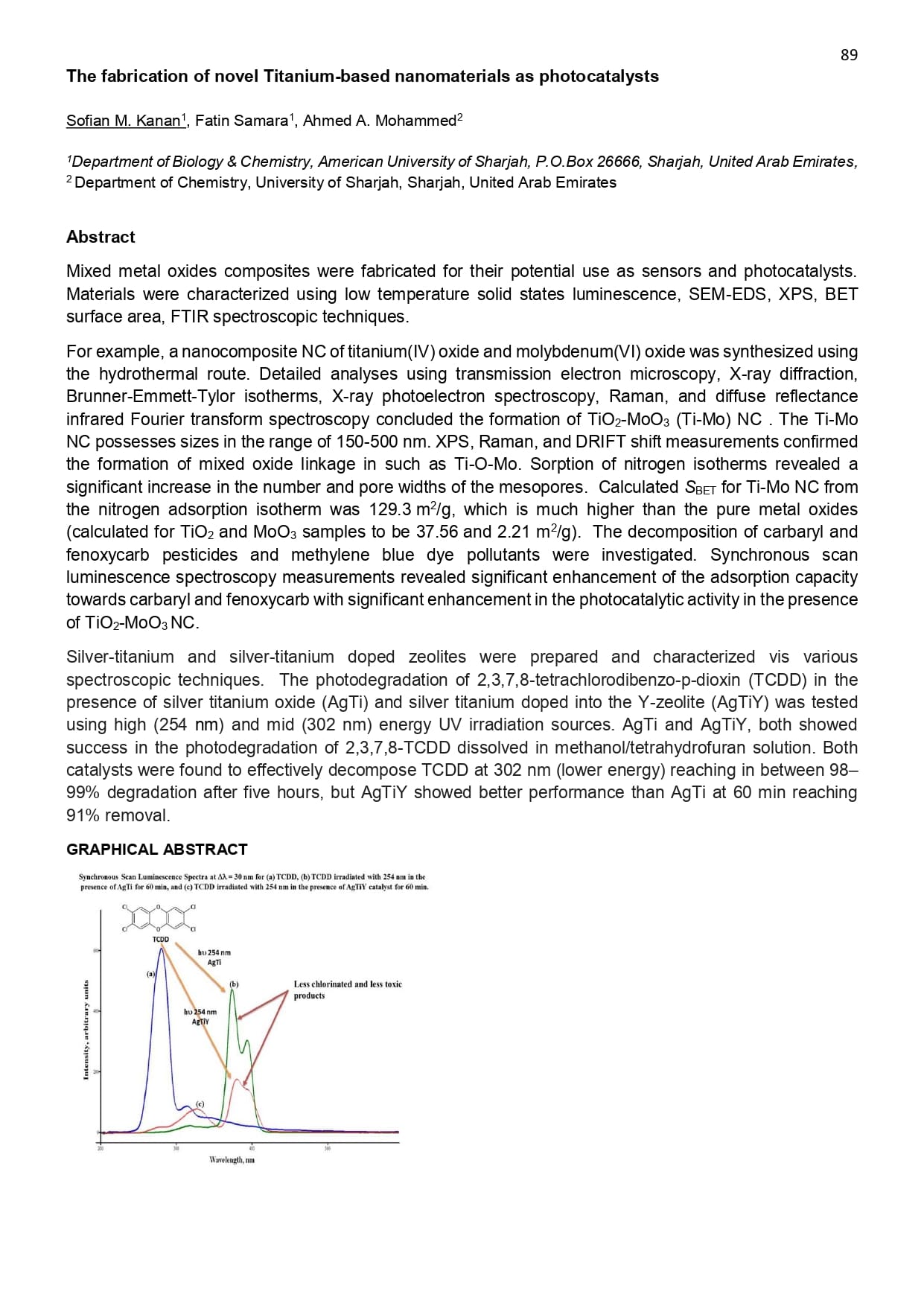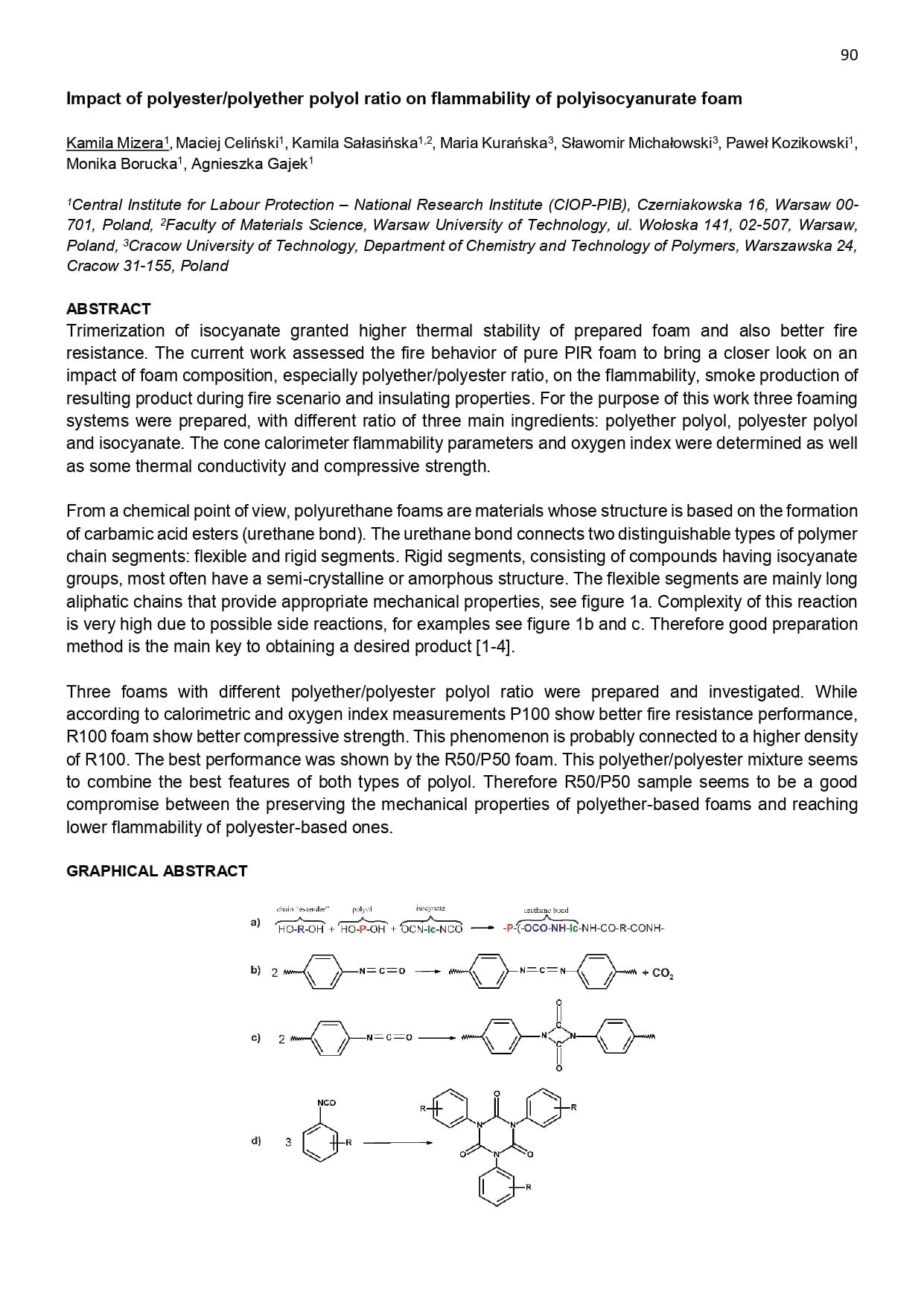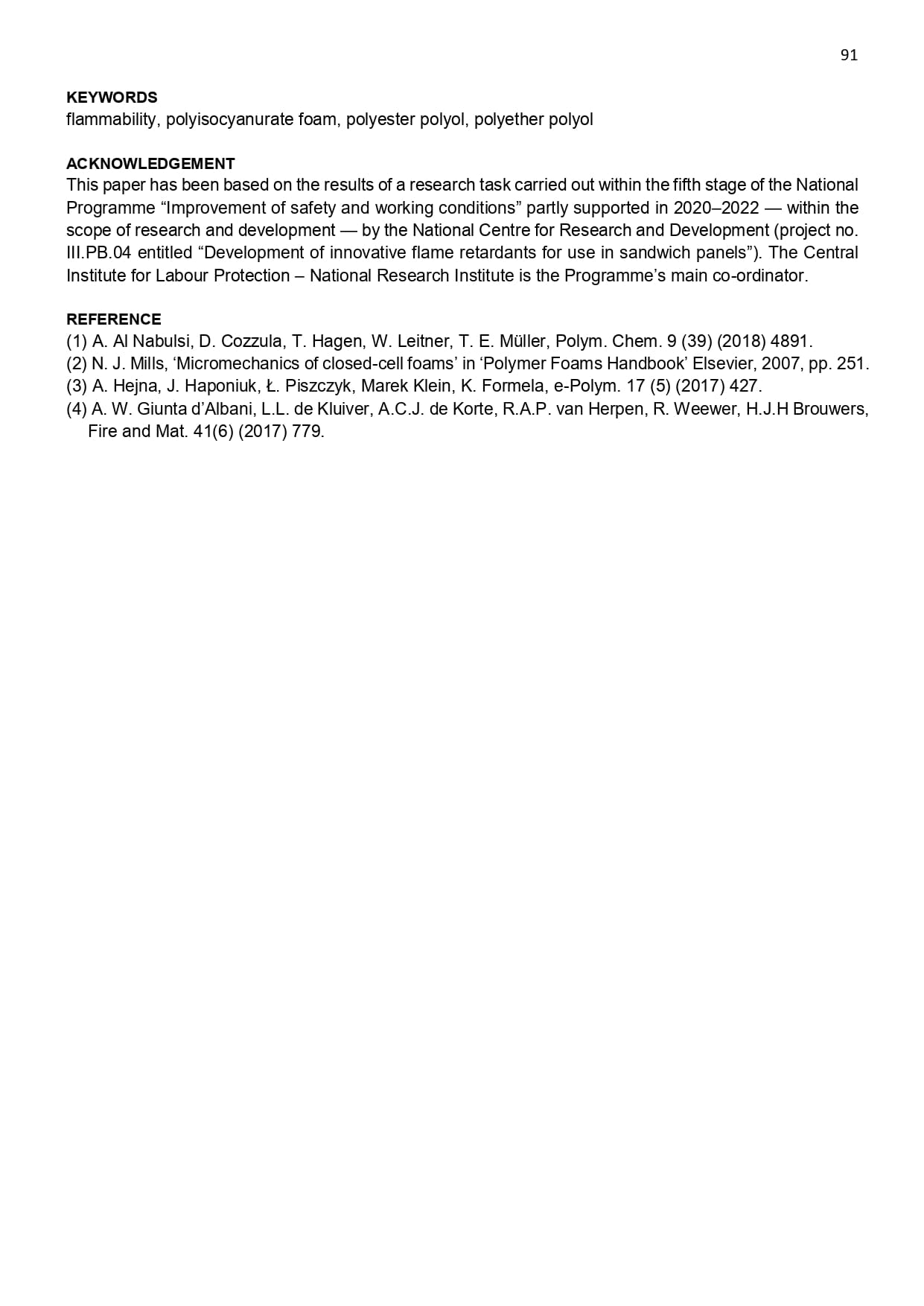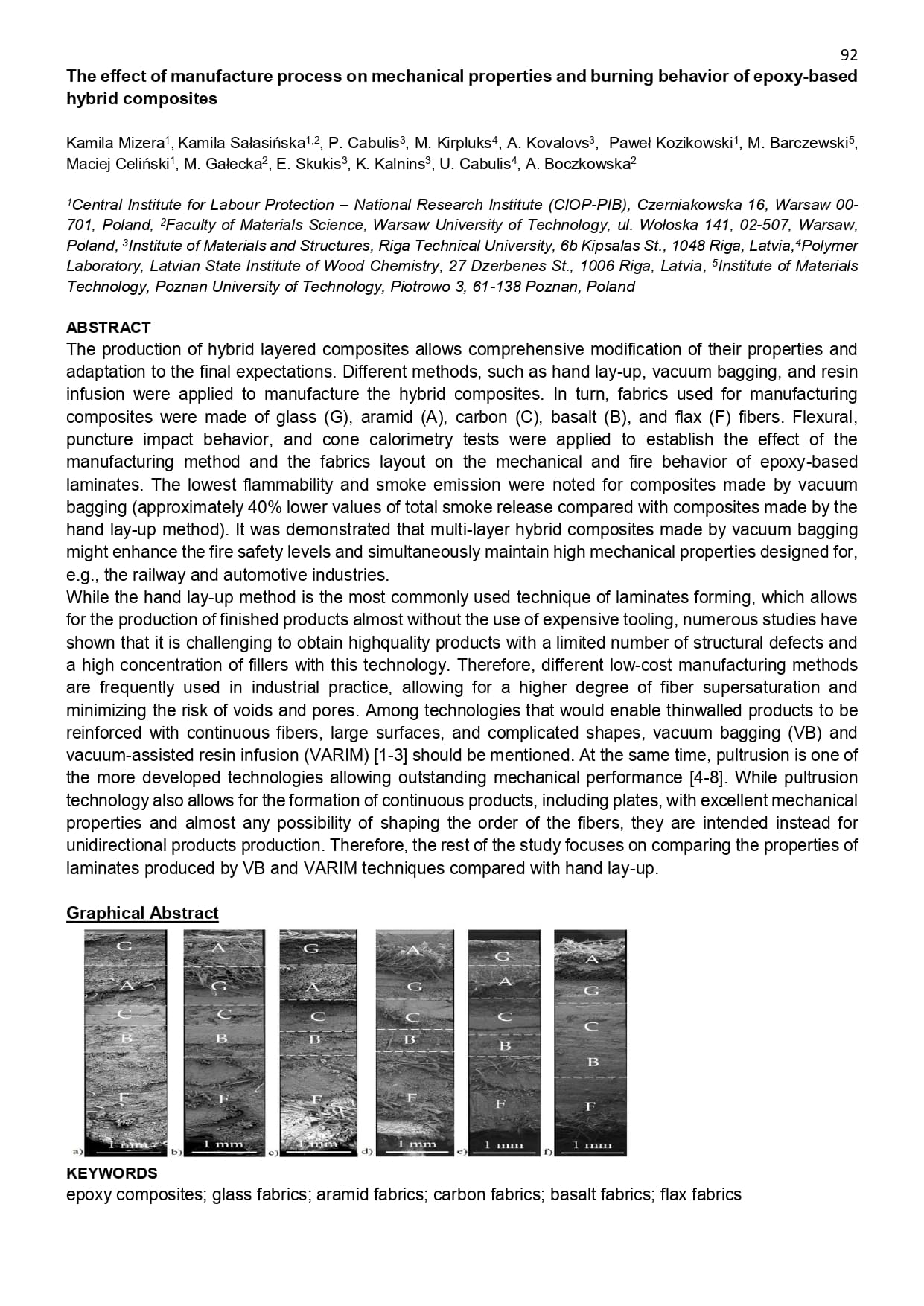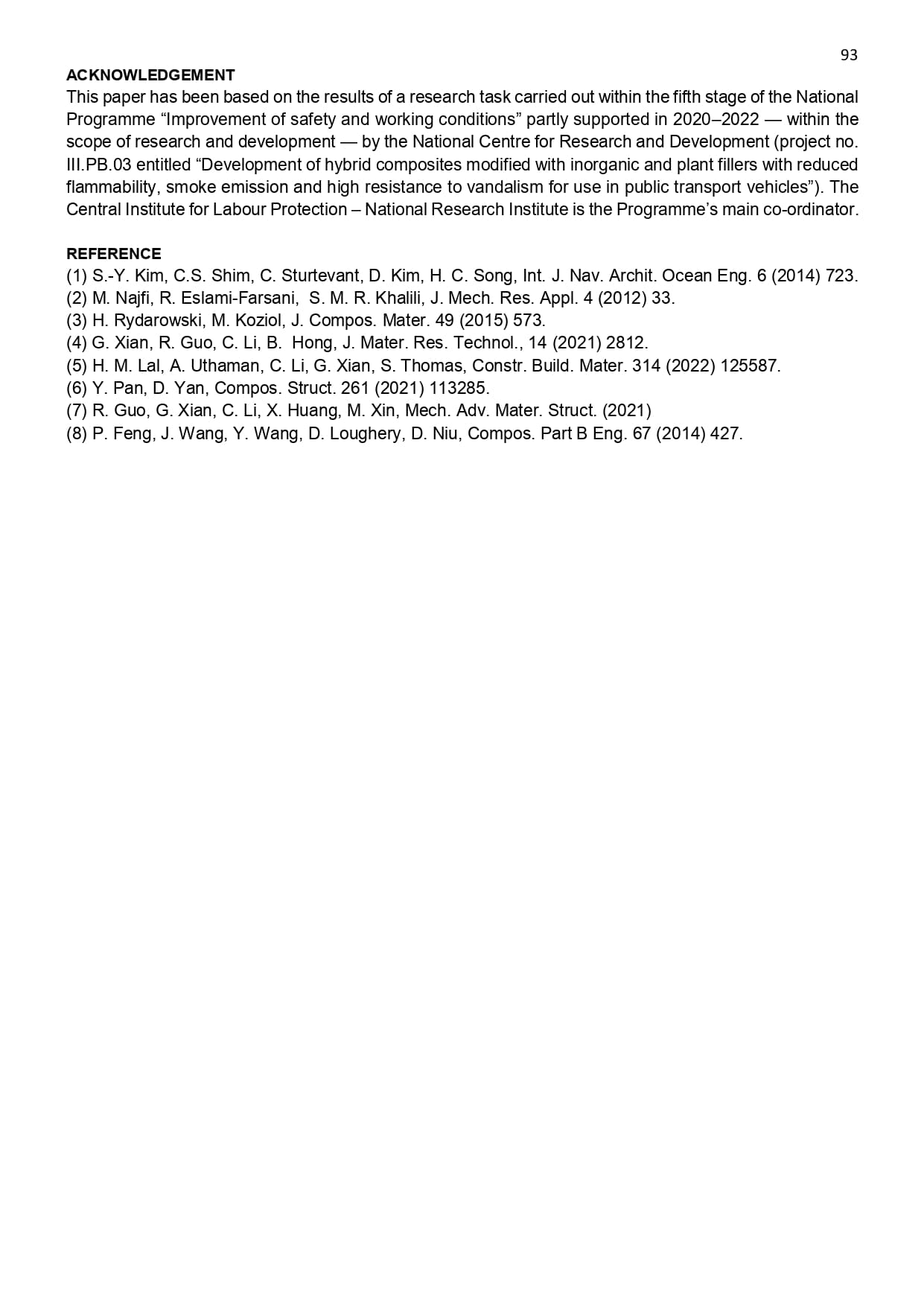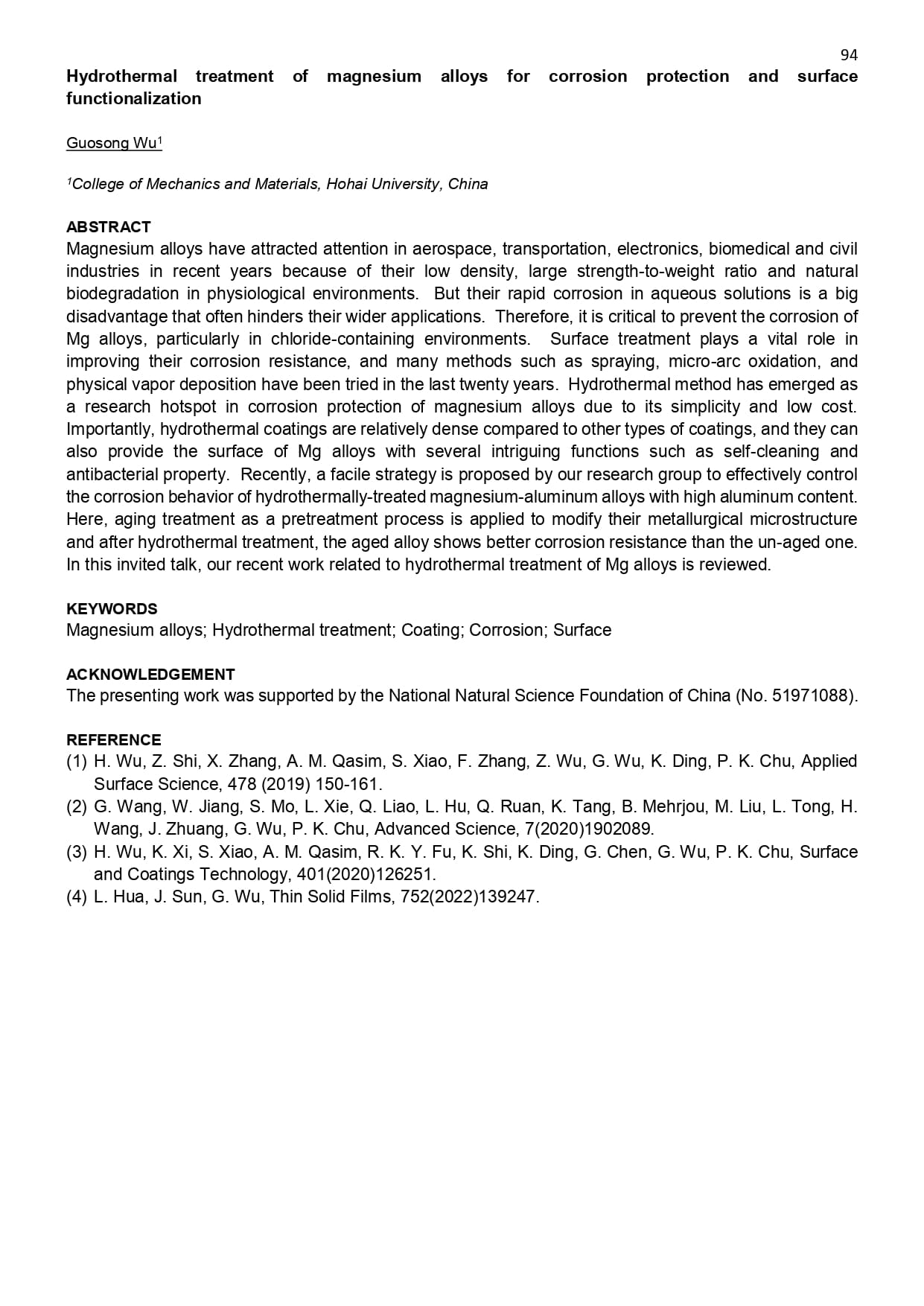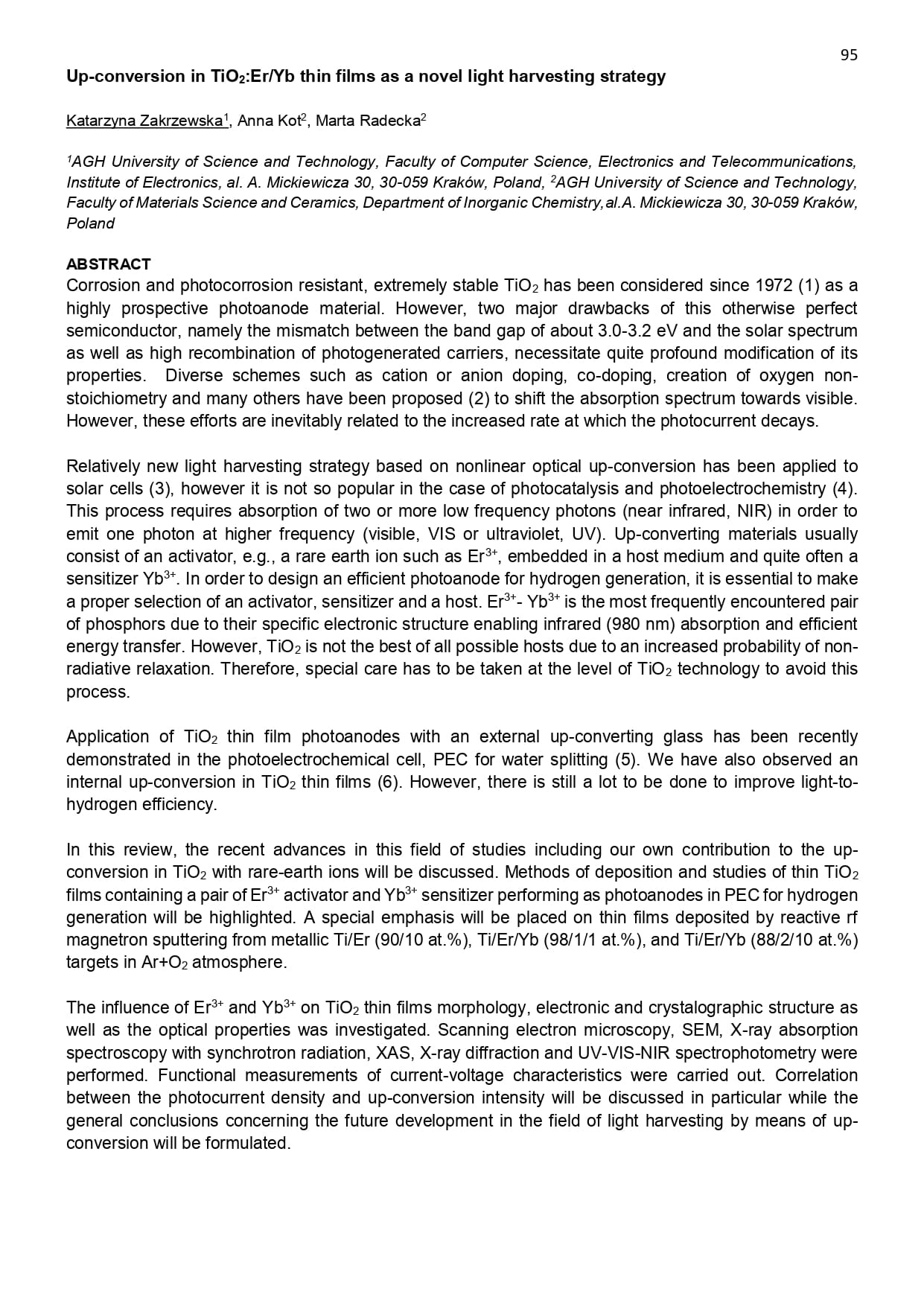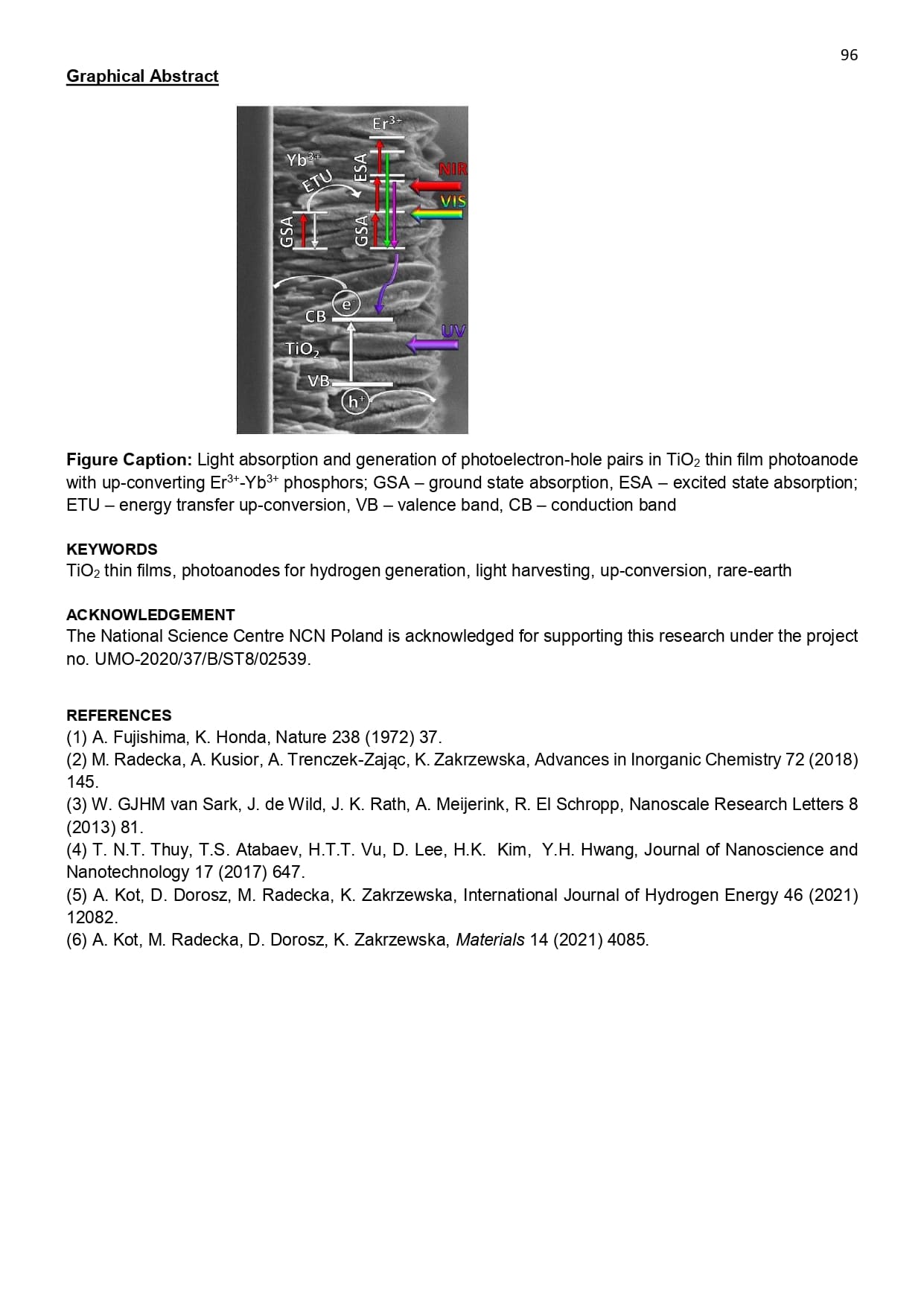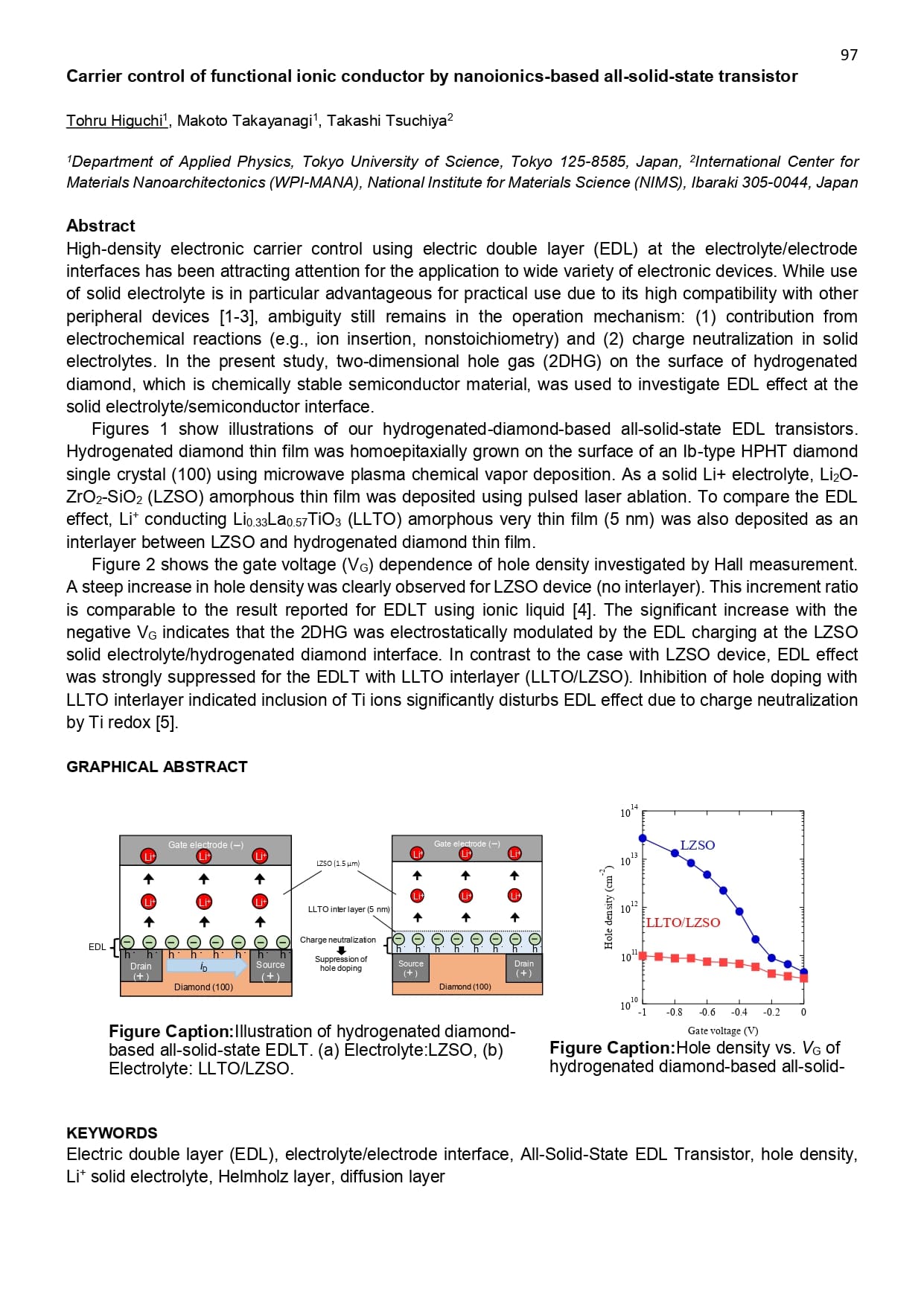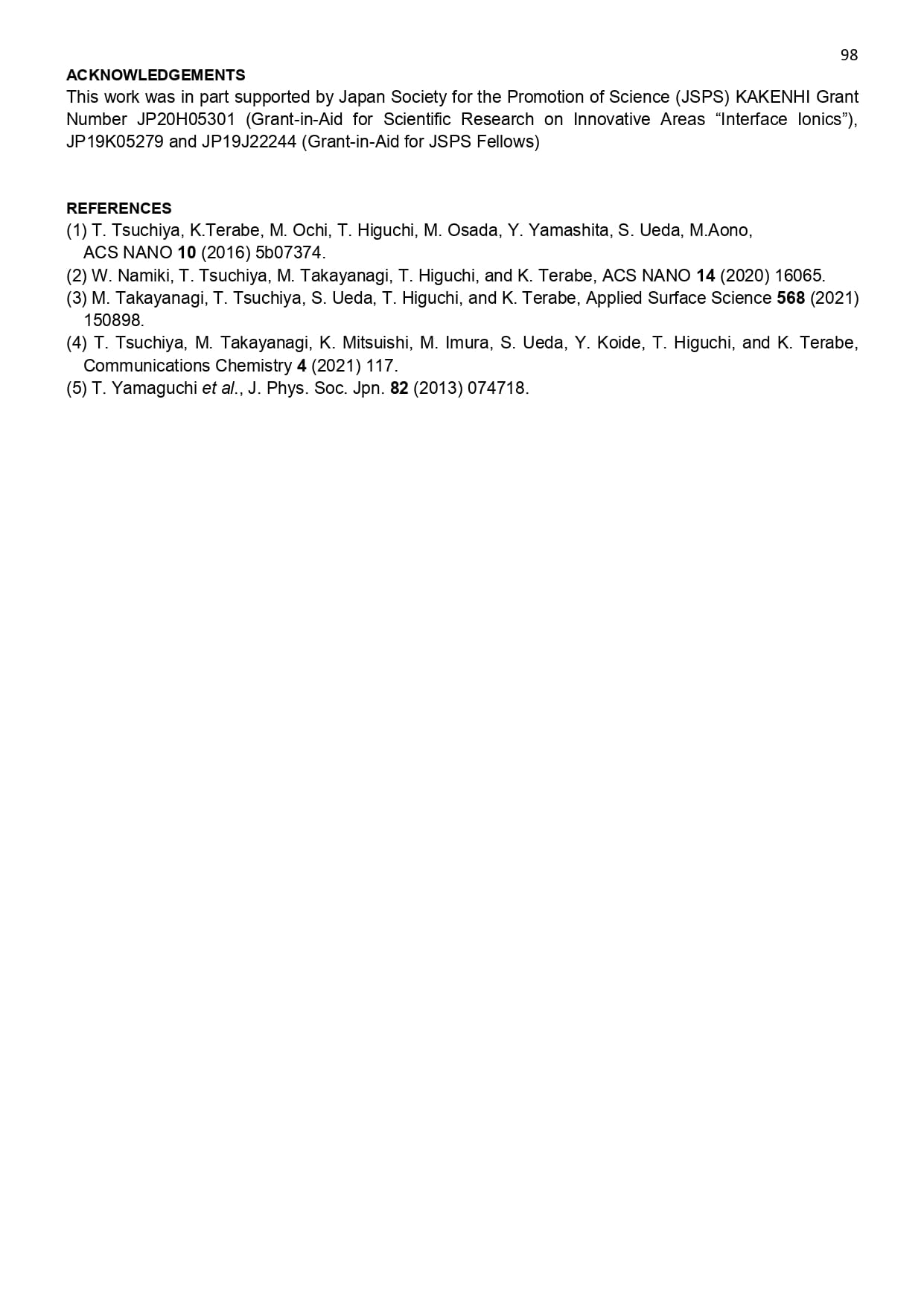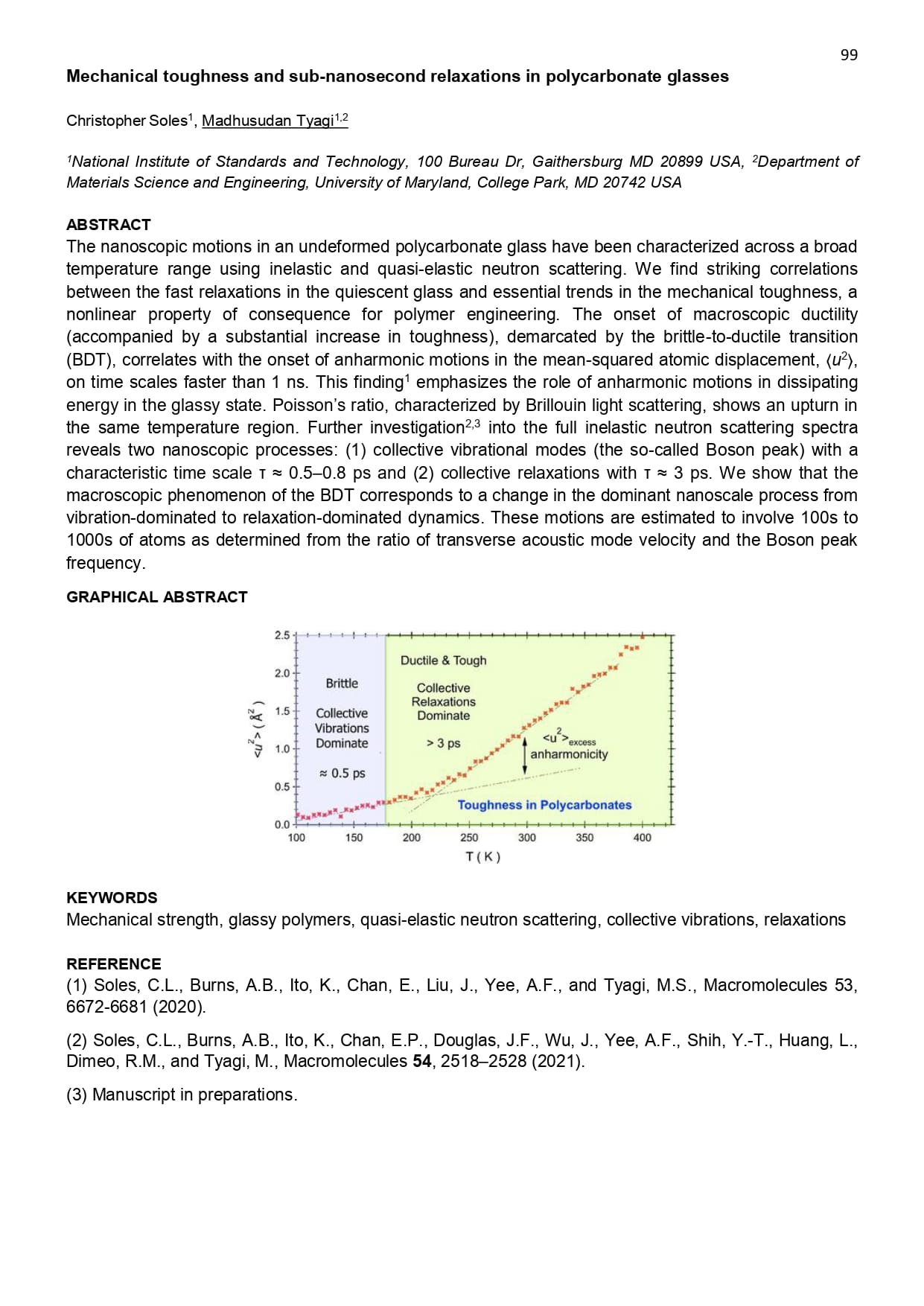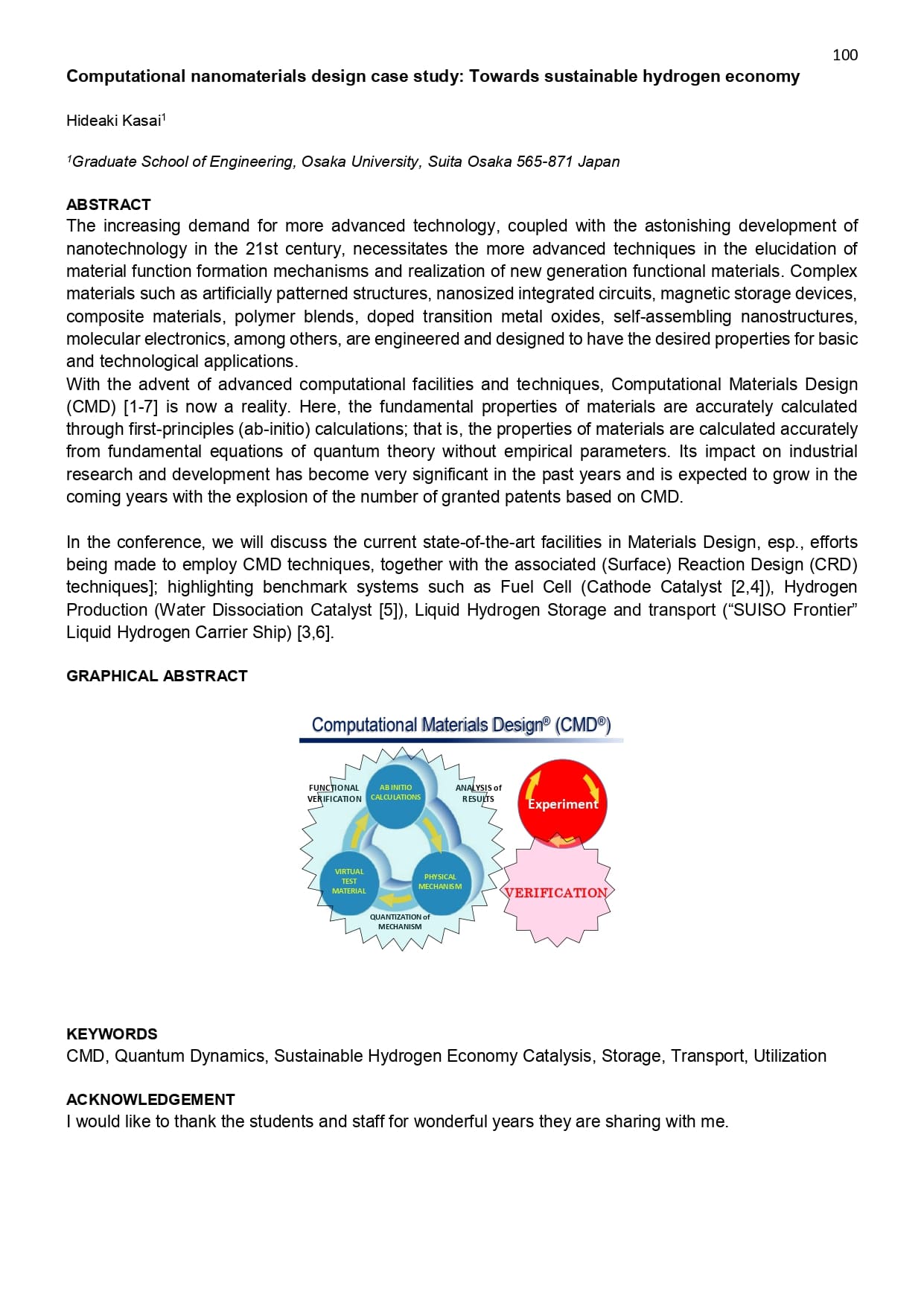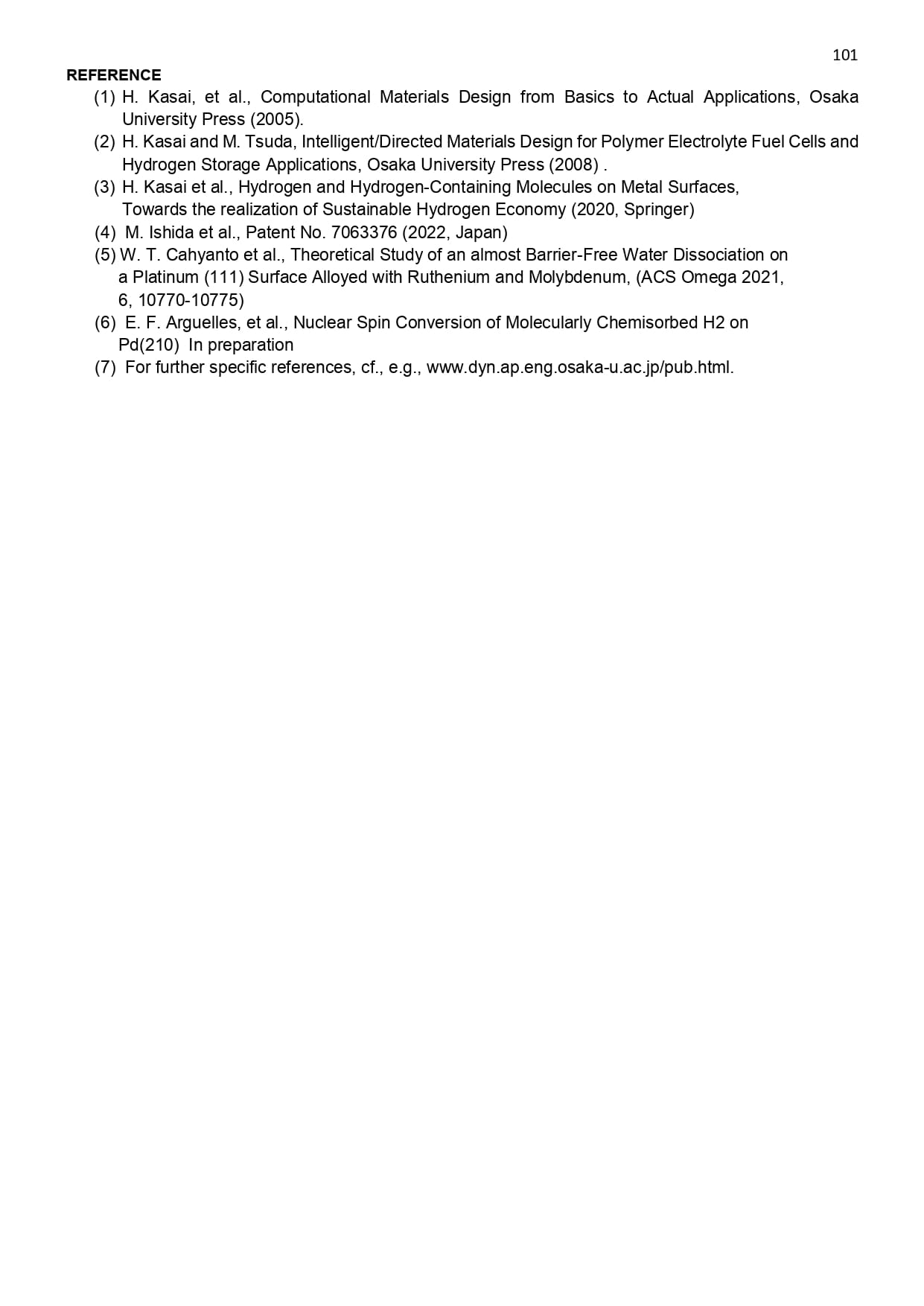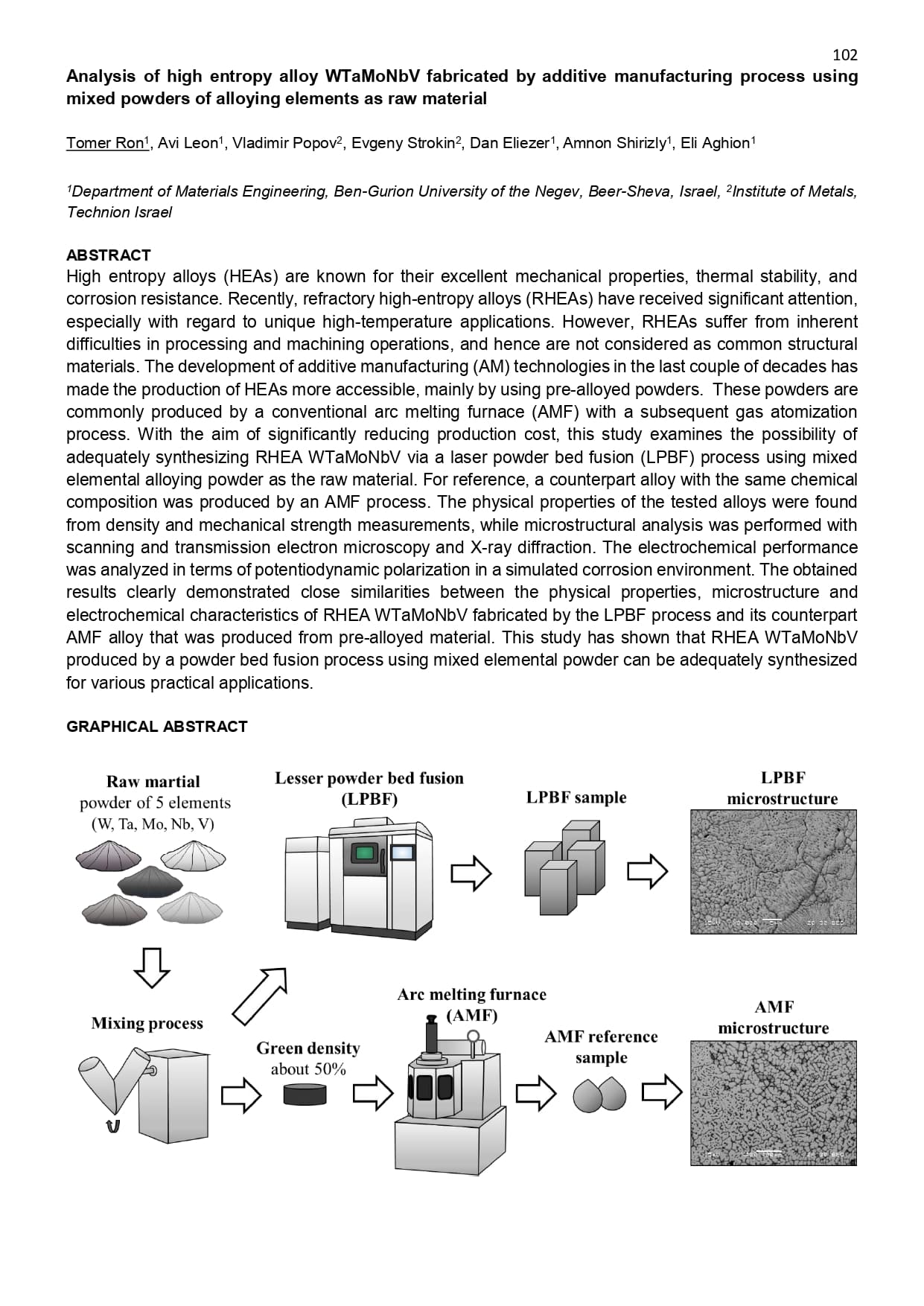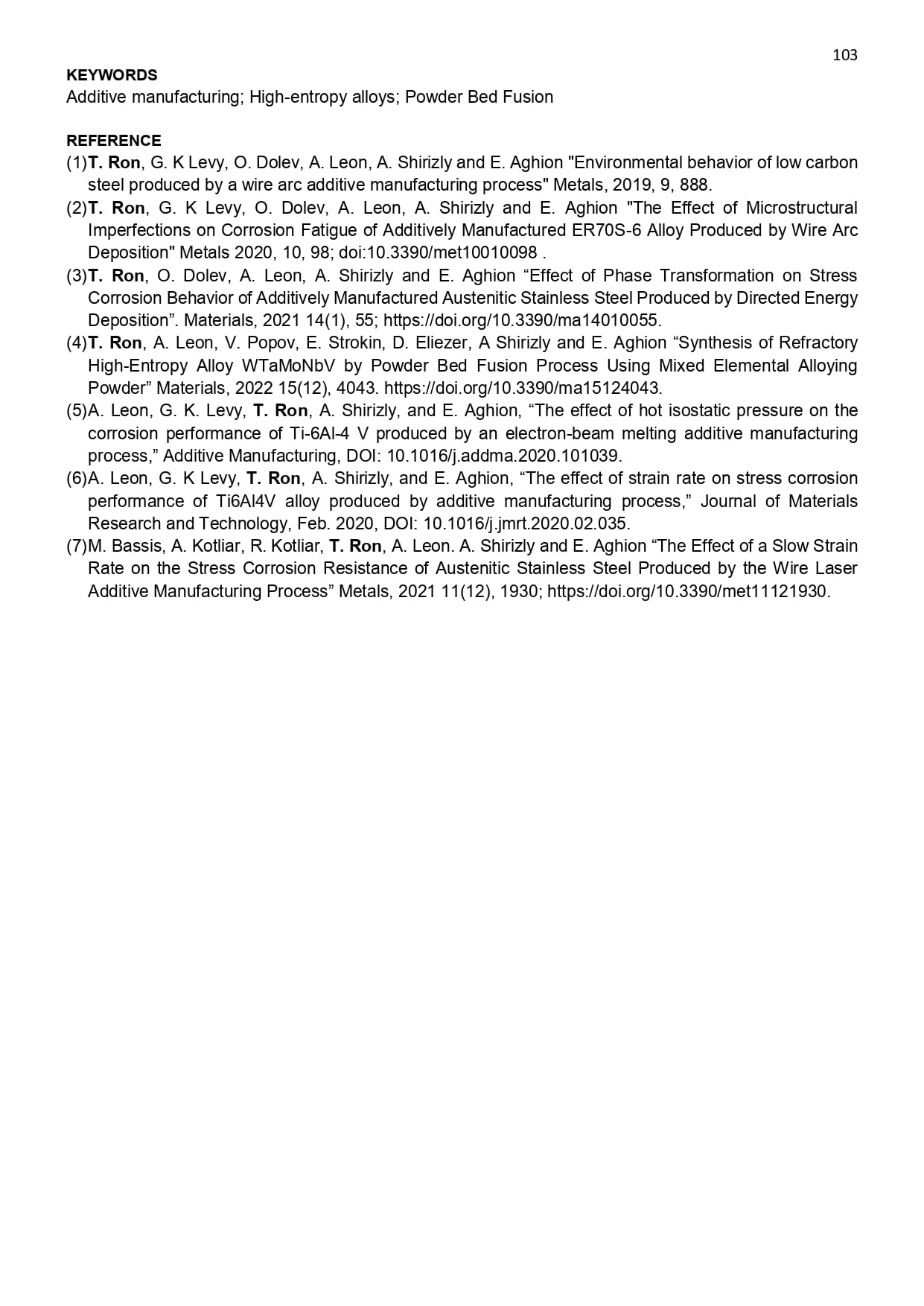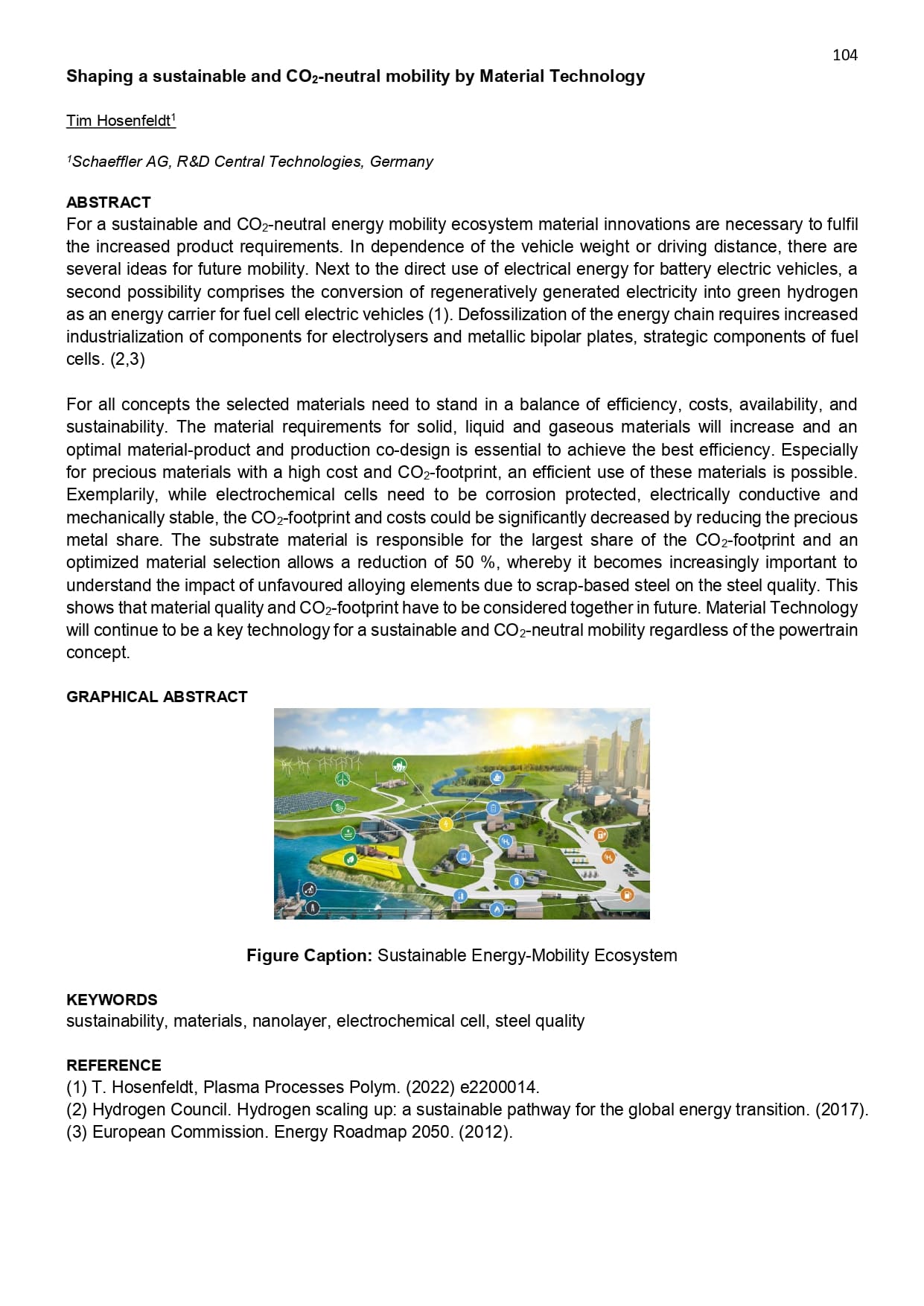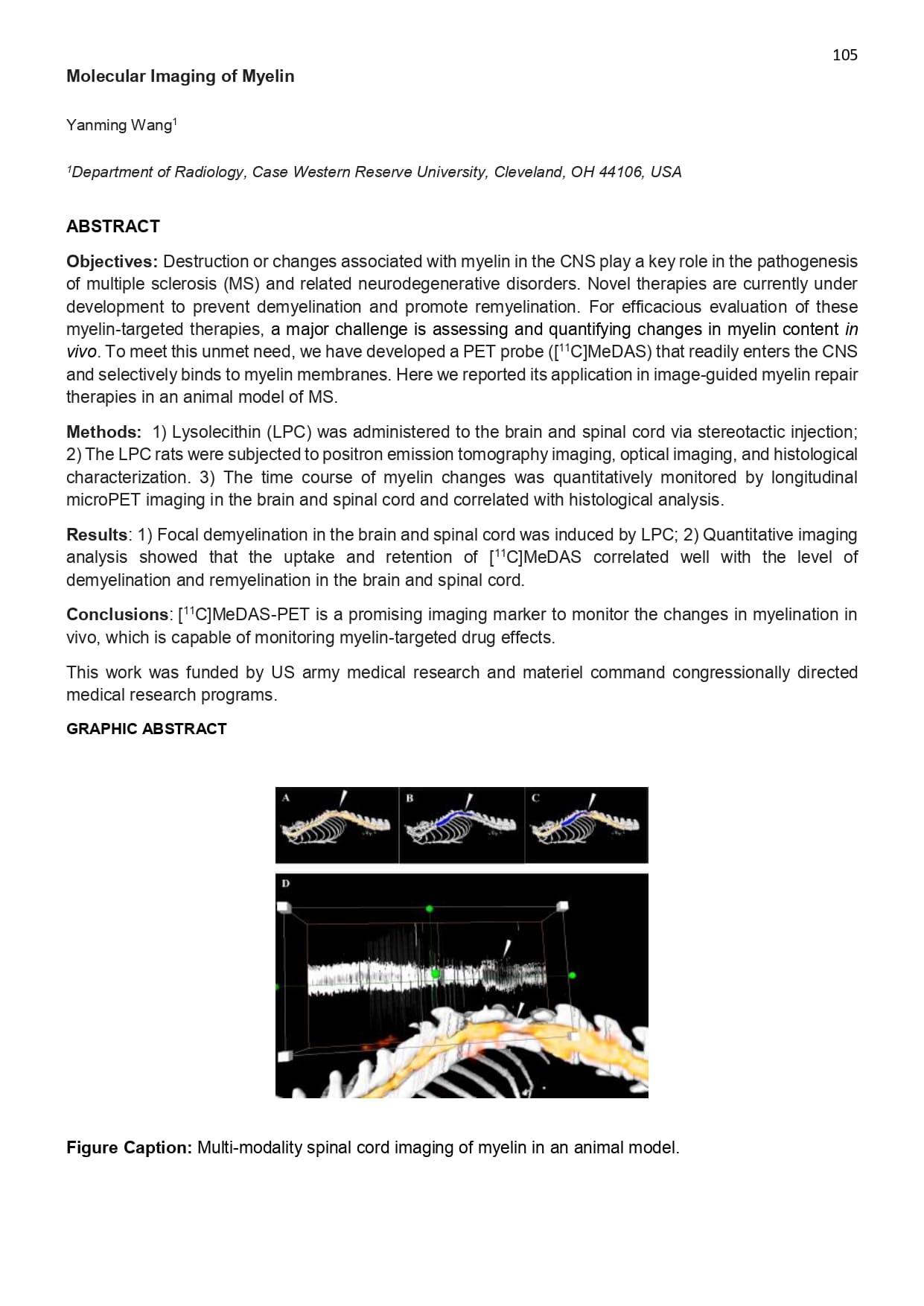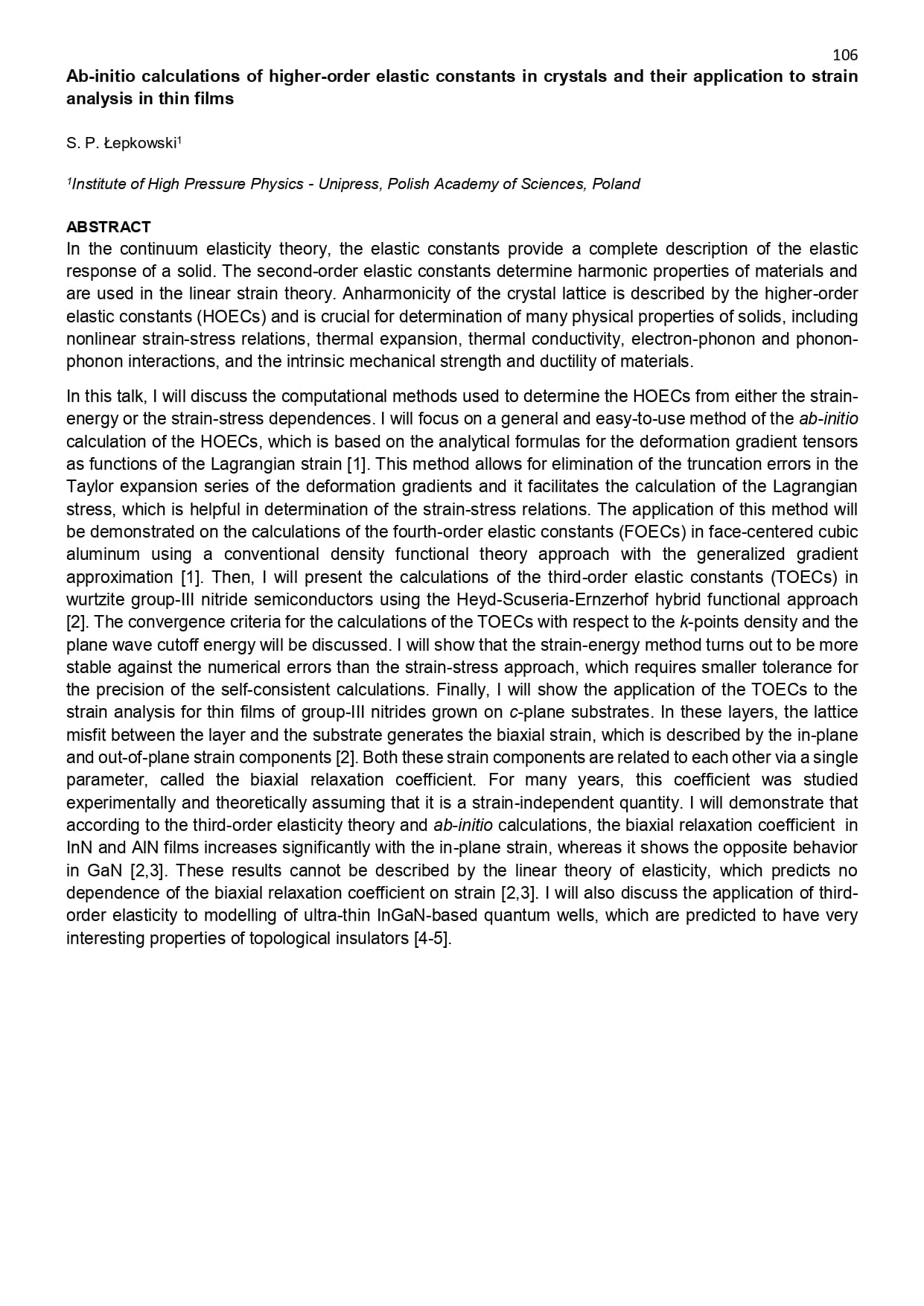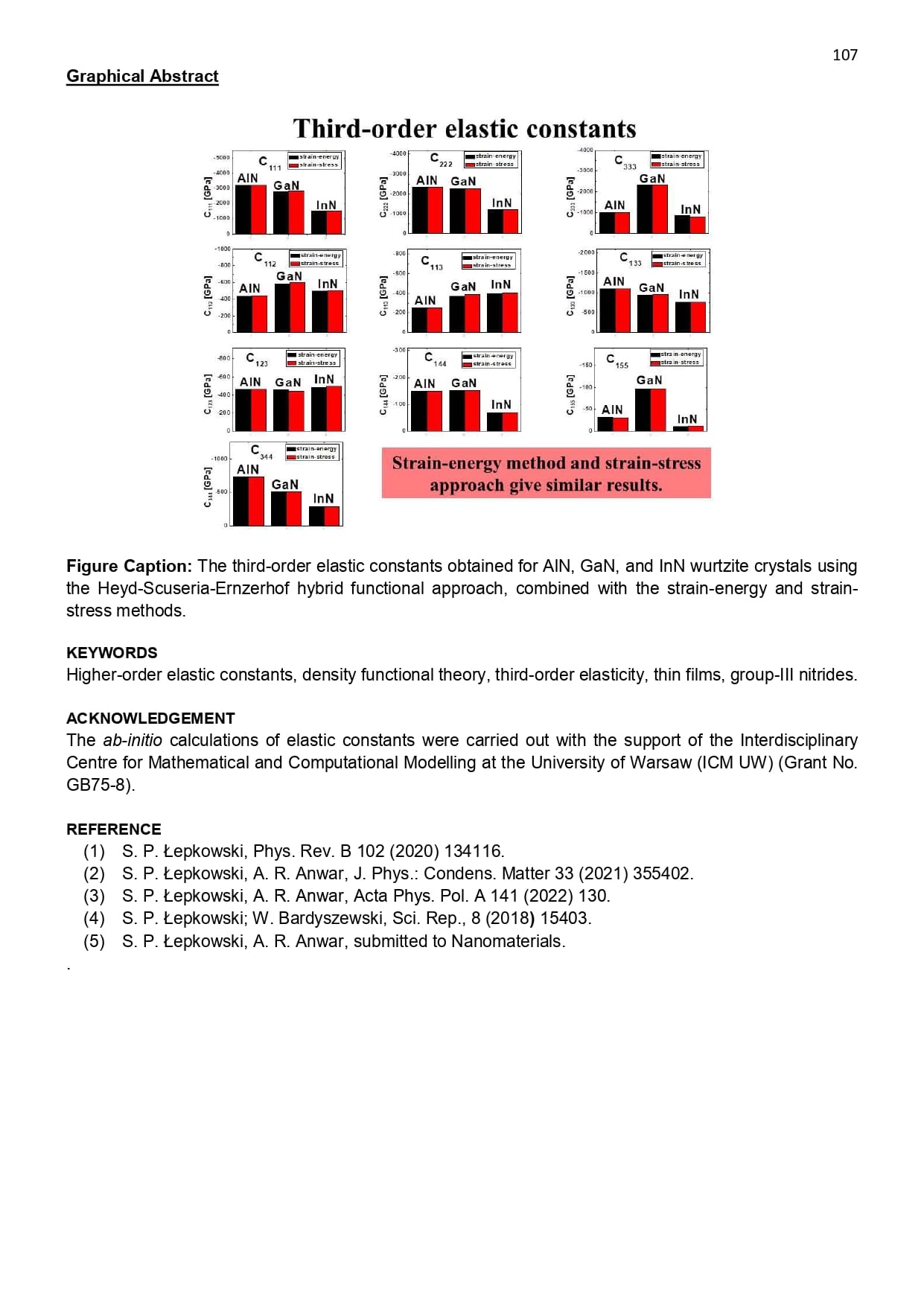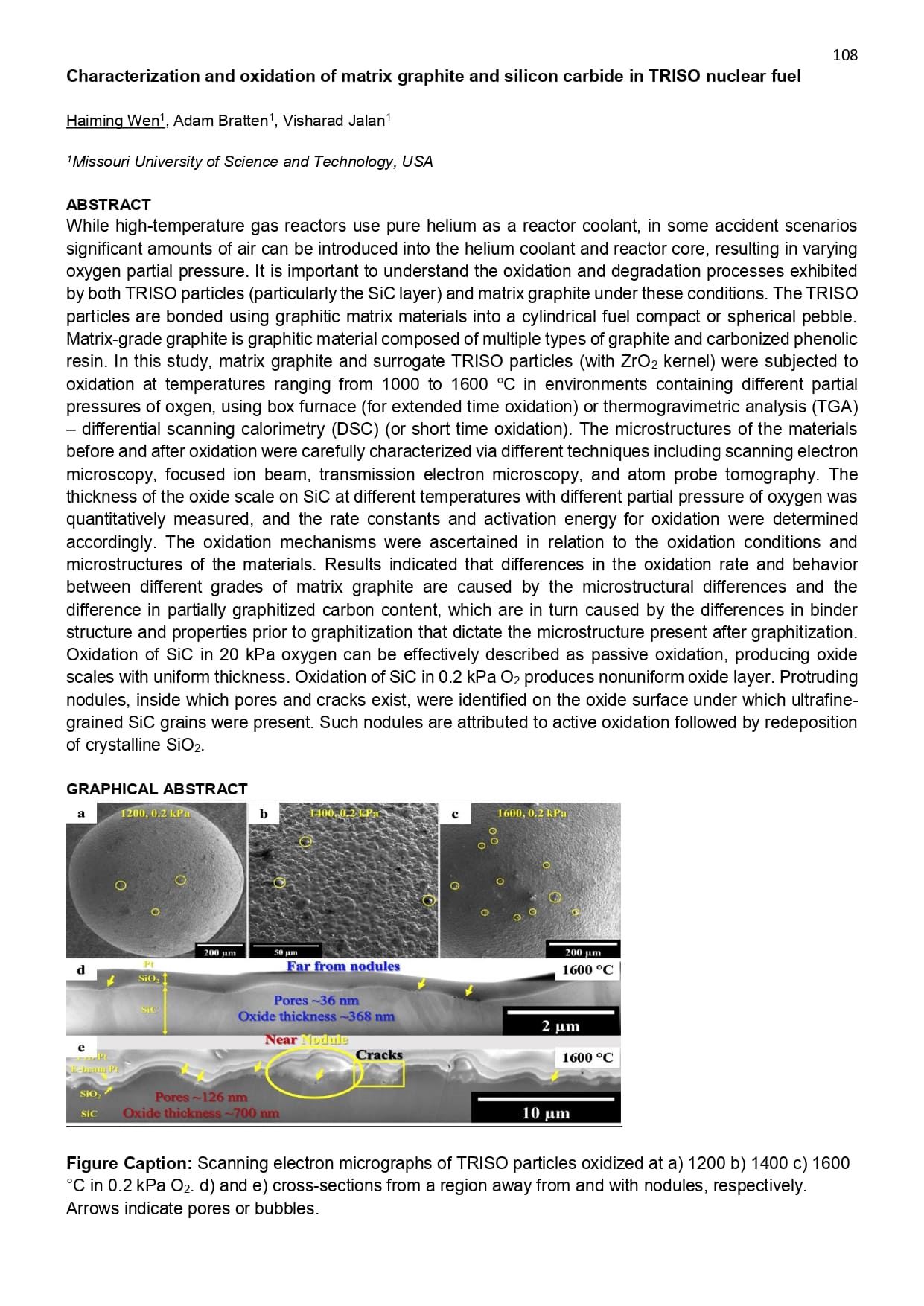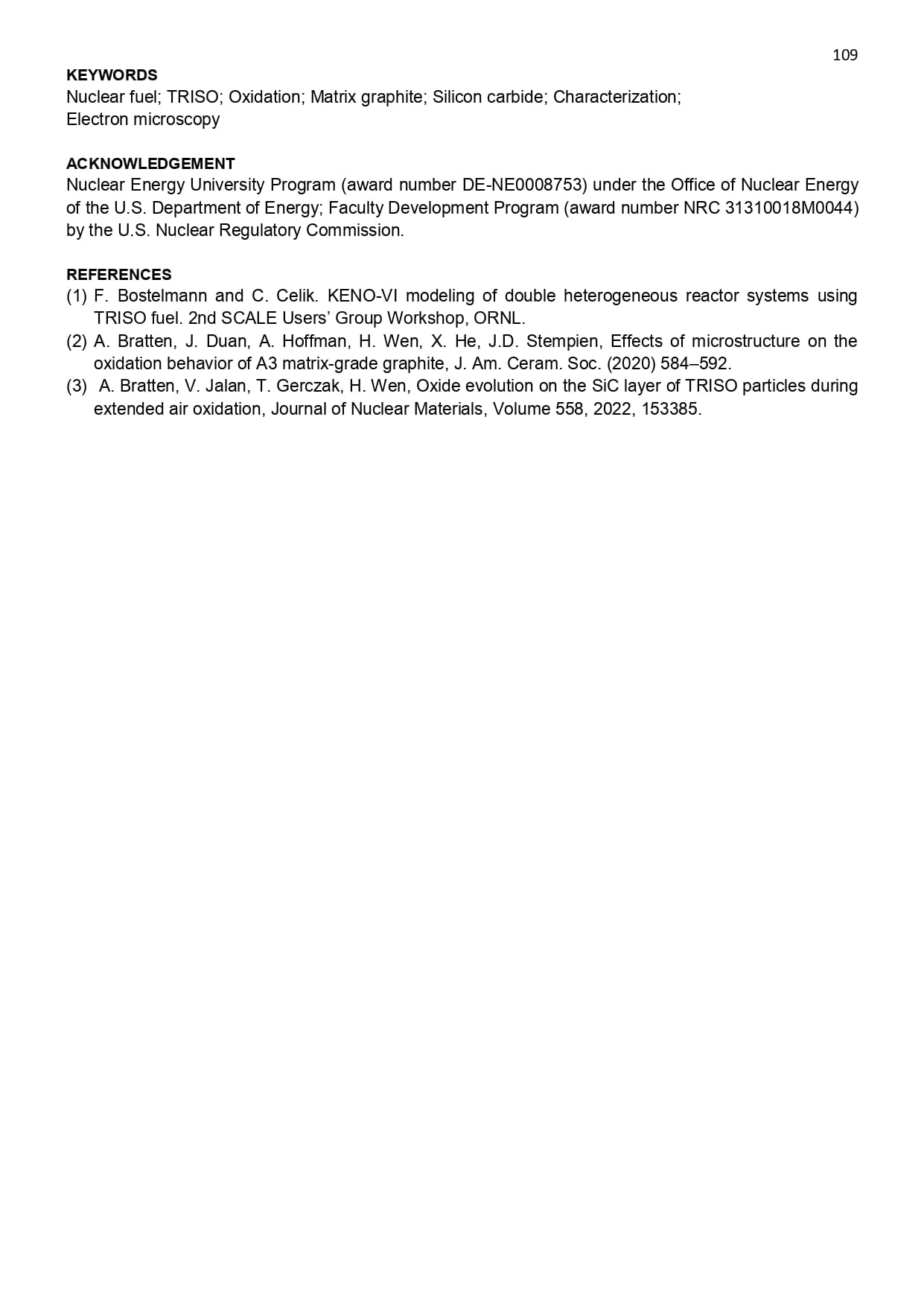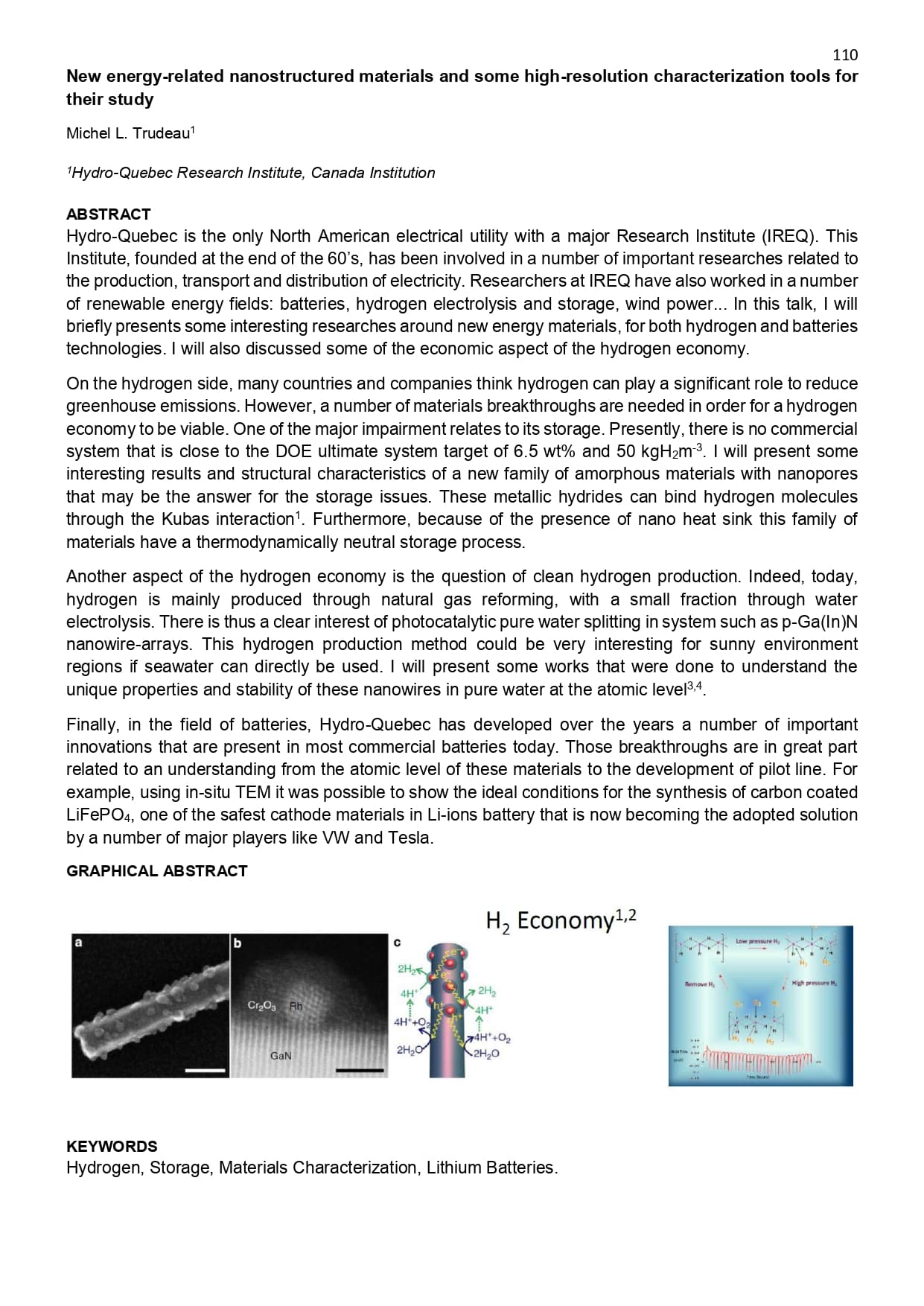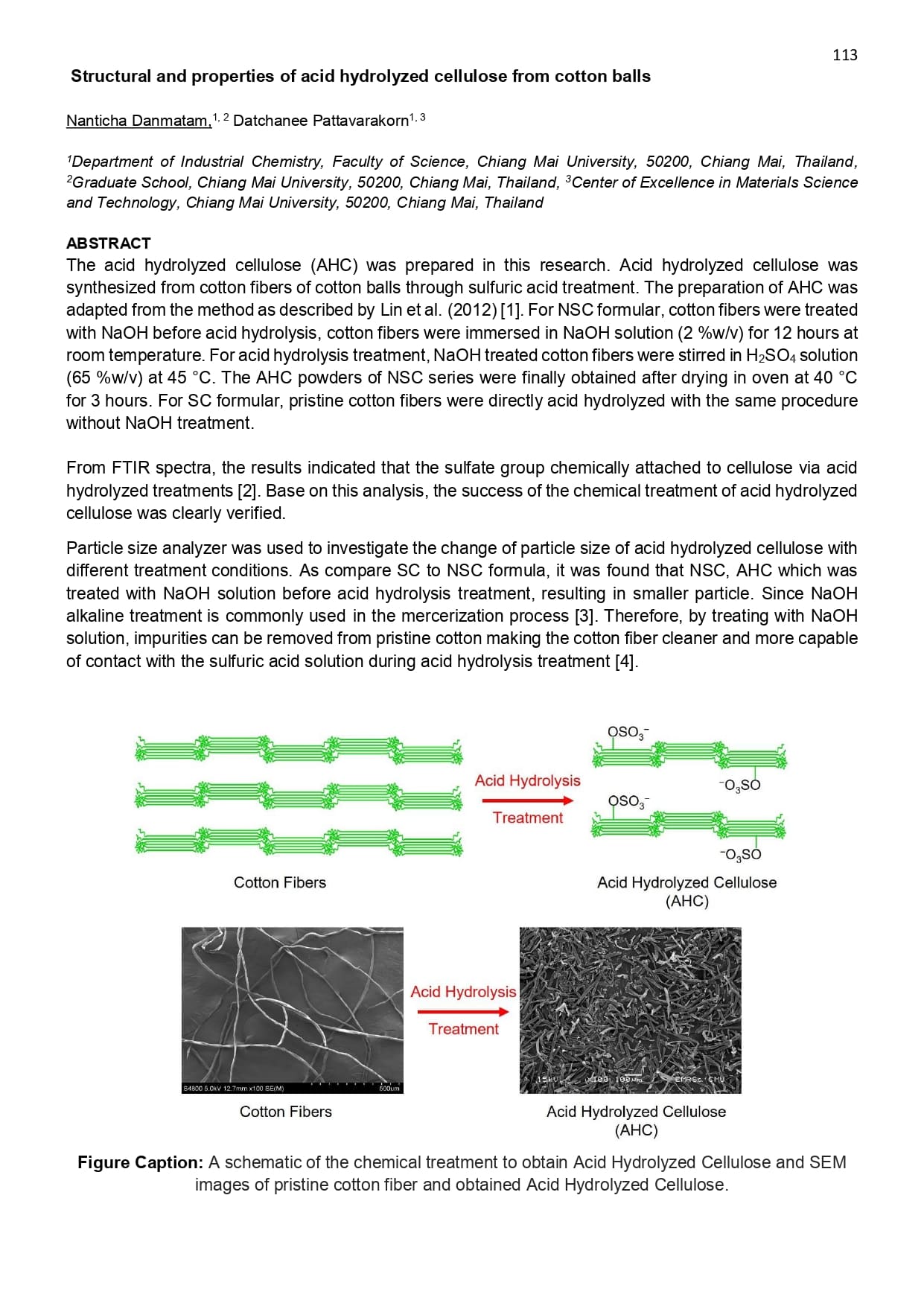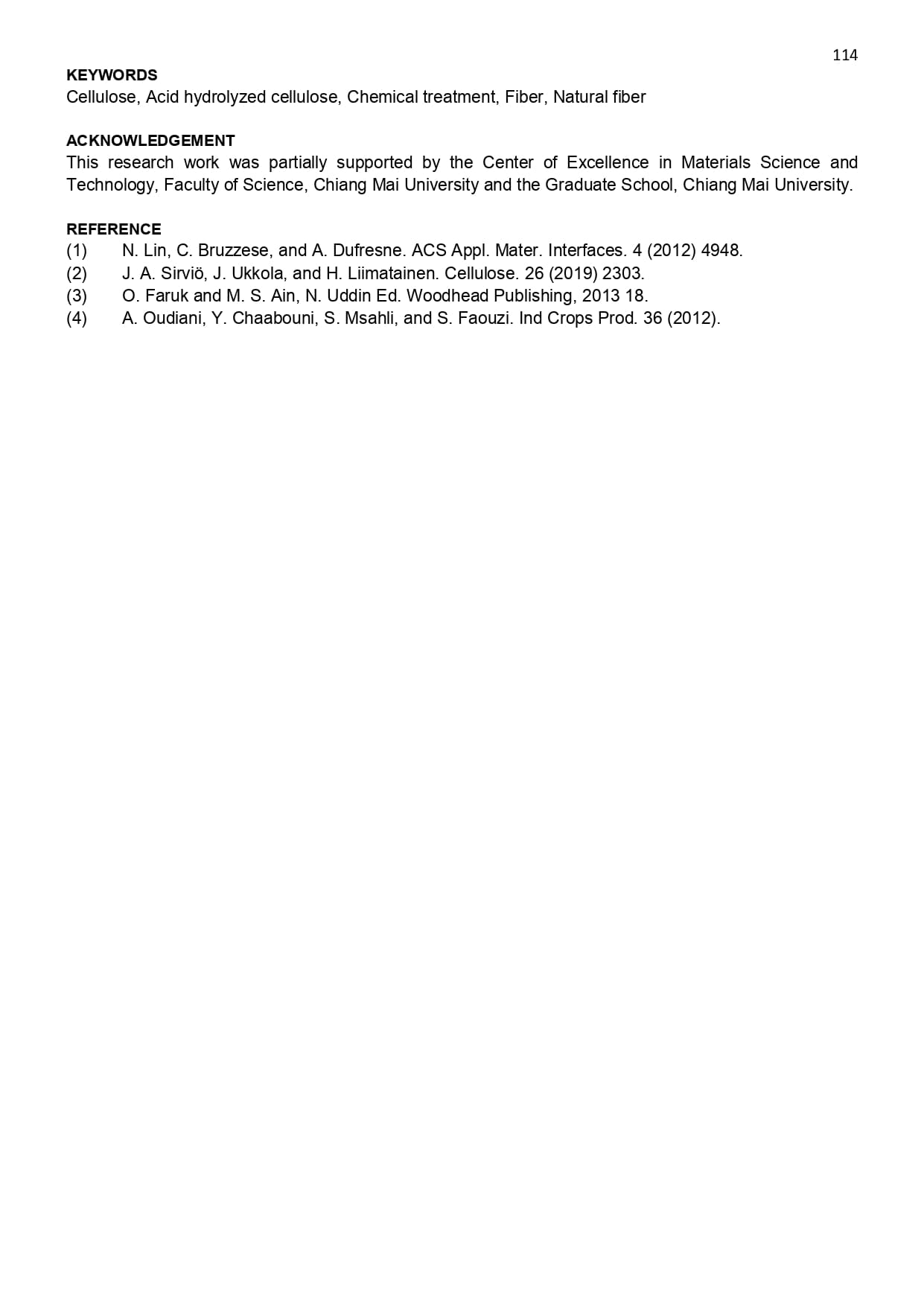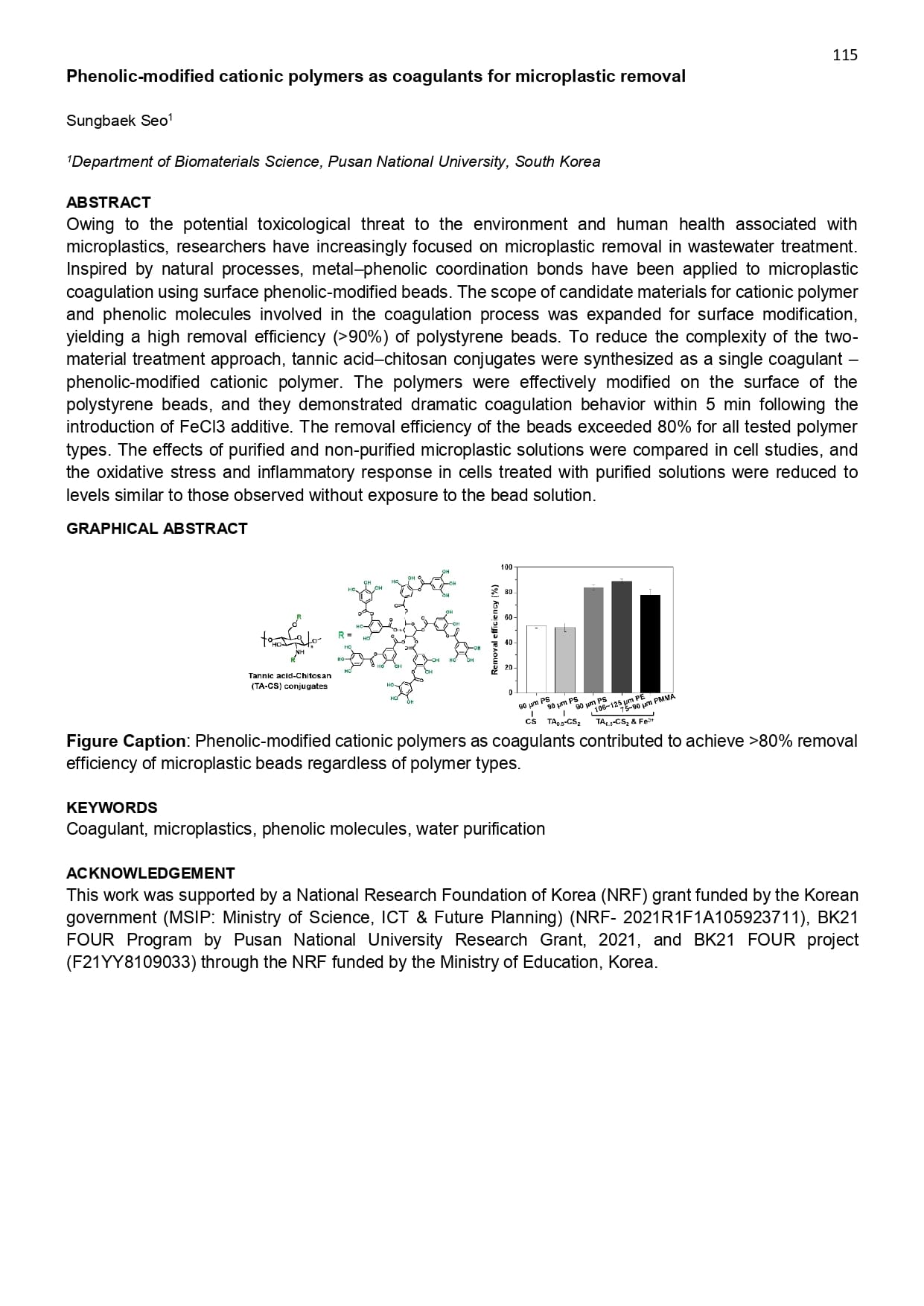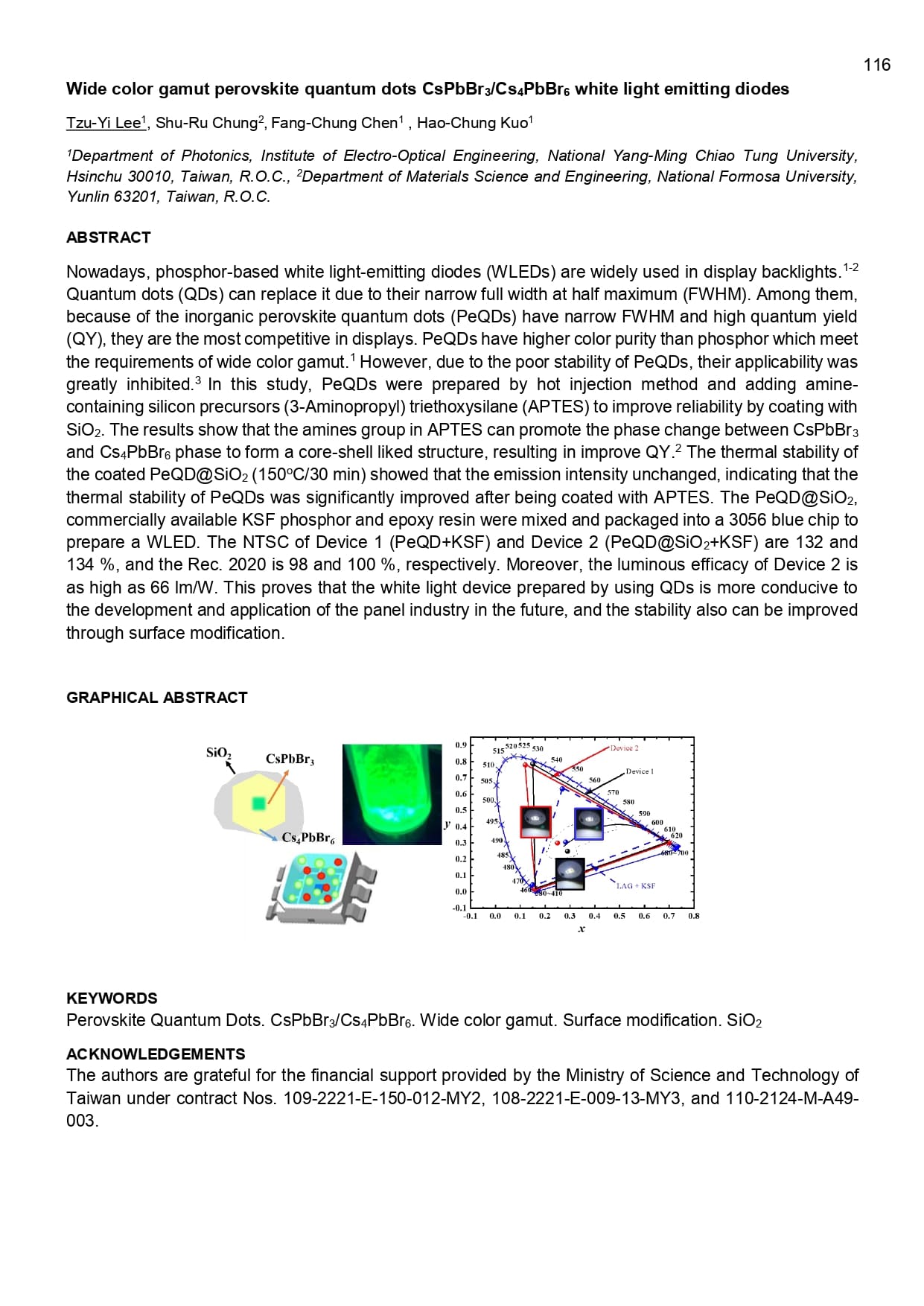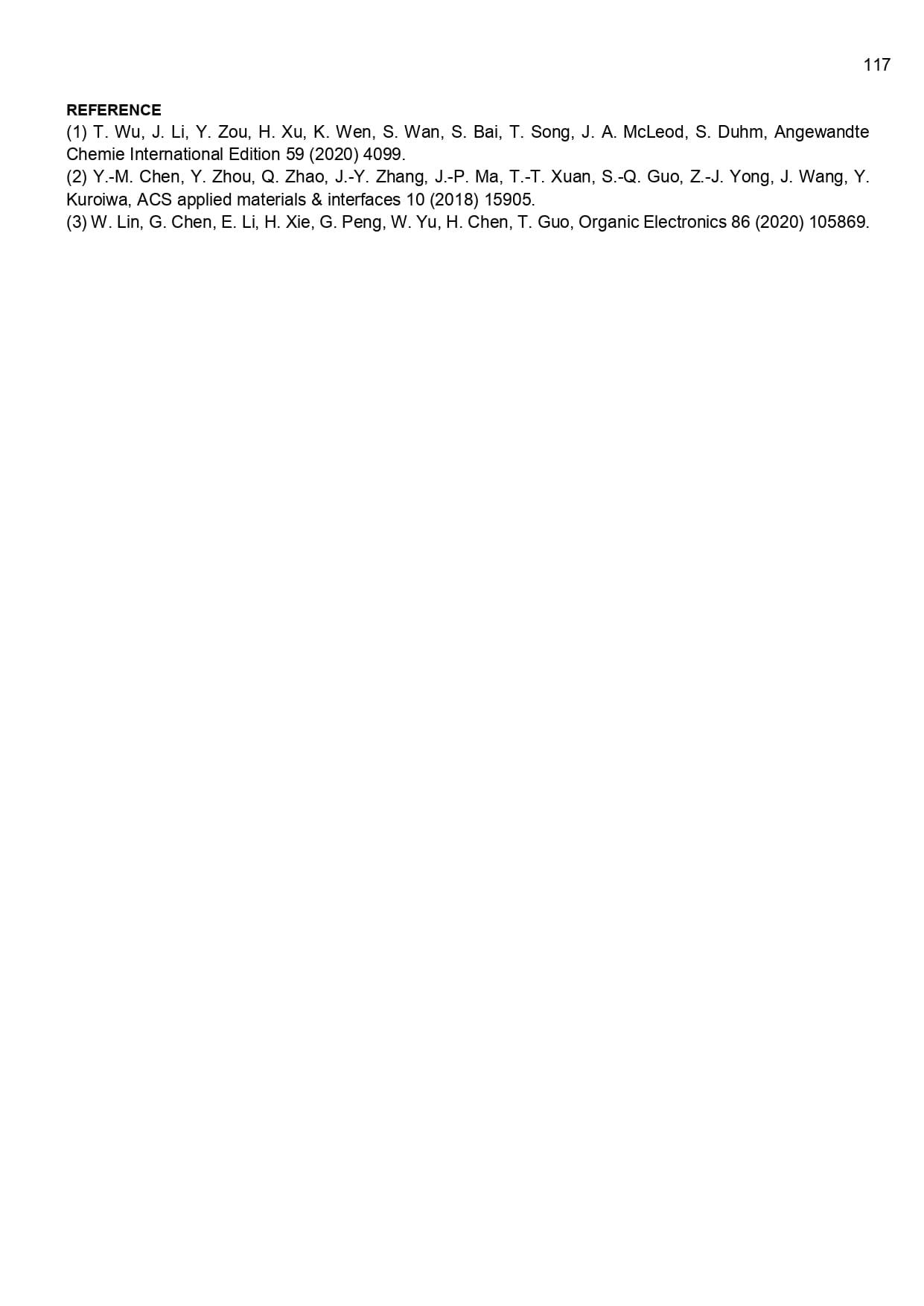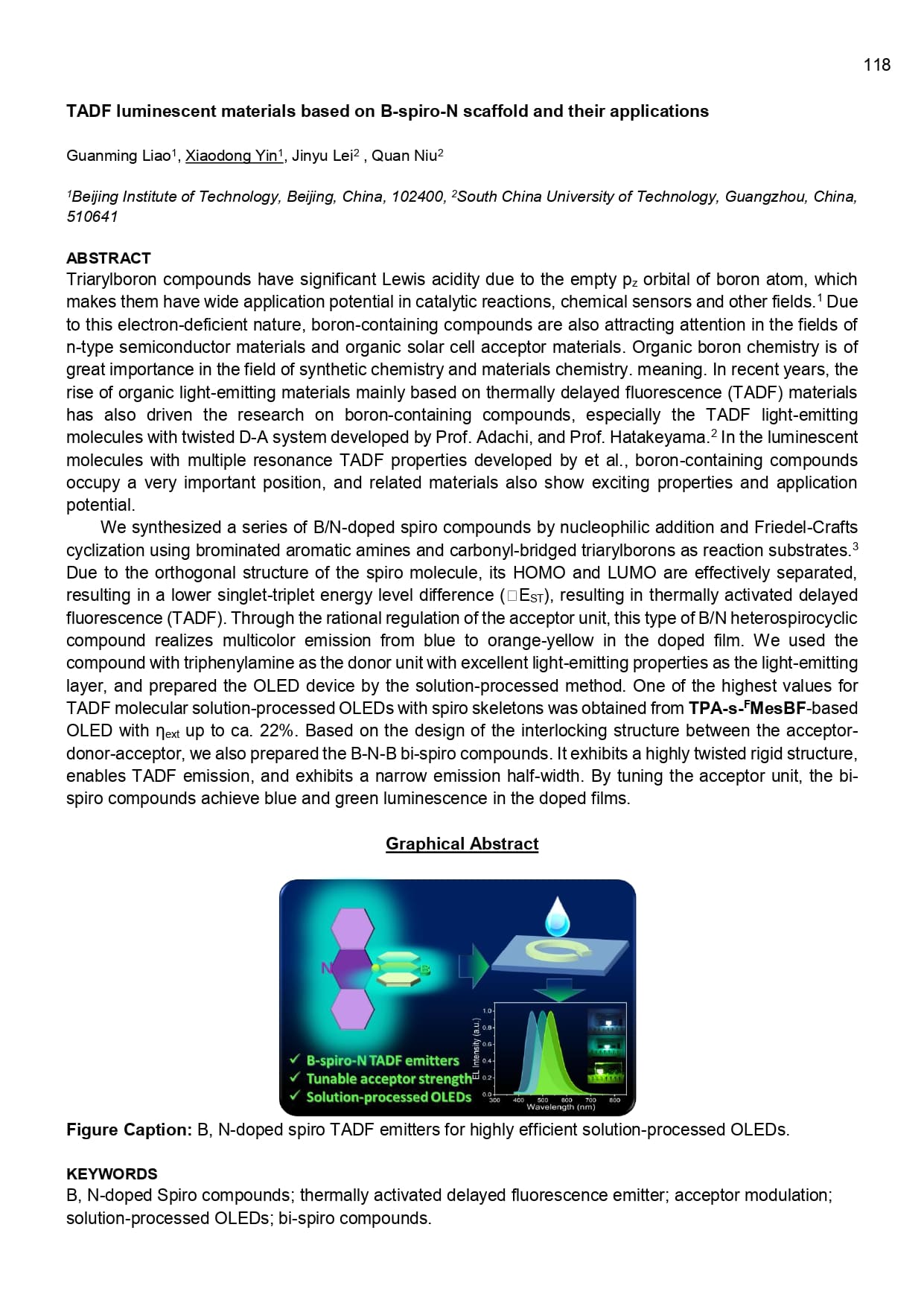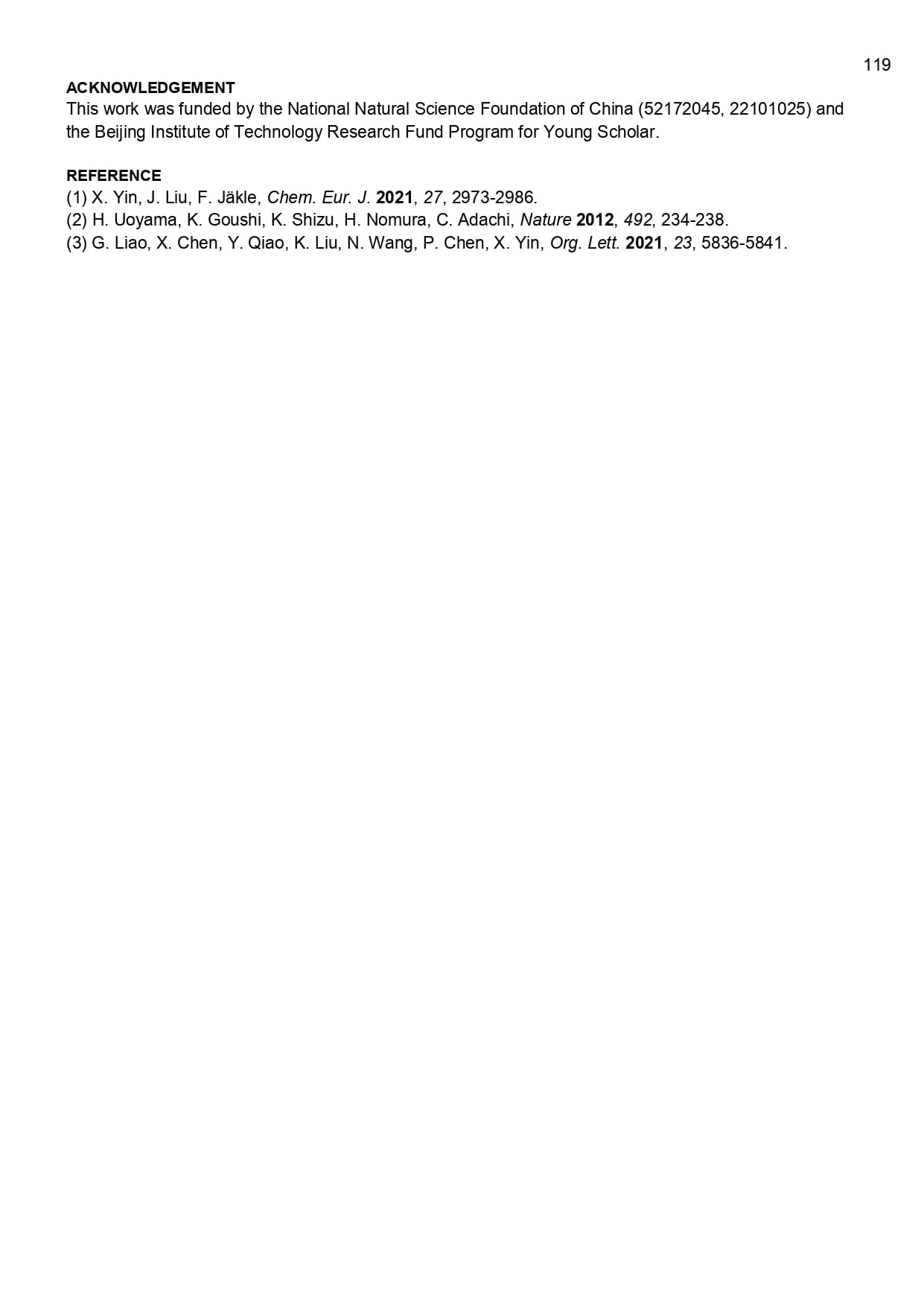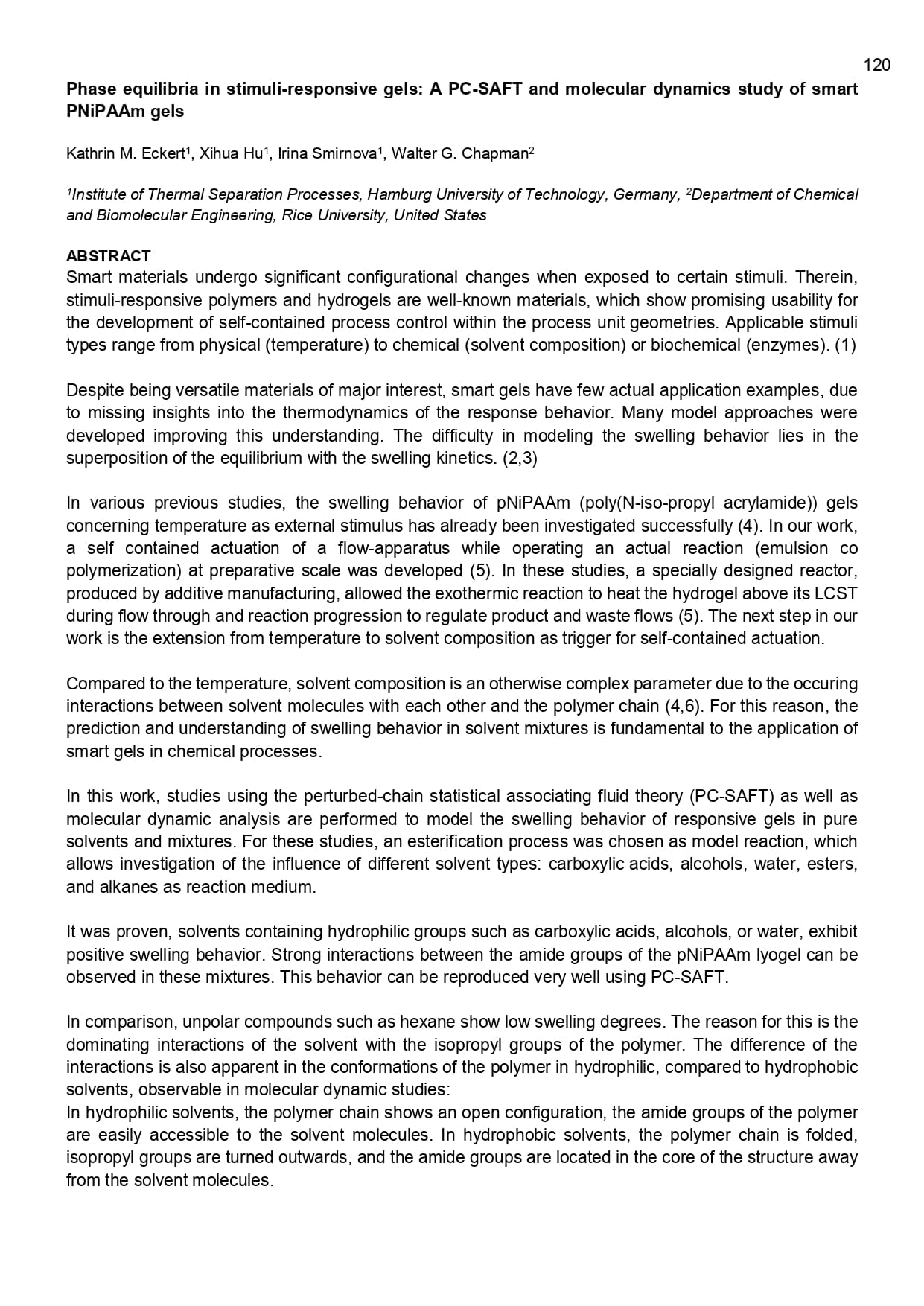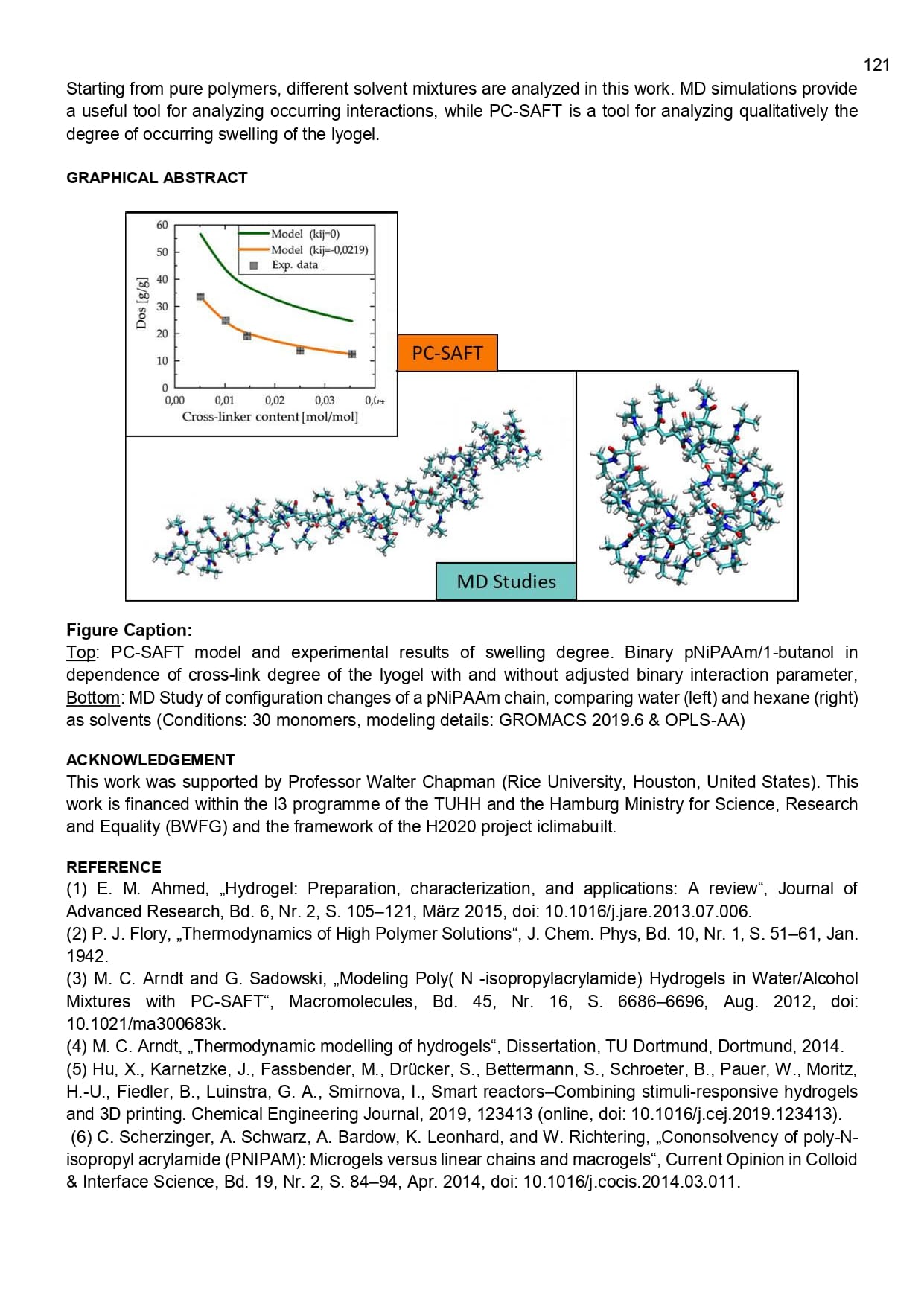03rd INTERNATIONAL CONFERENCE ON
MATERIALS SCIENCE, ENGINEERING & TECHNOLOGY
Date: 07 – 09 September 2022
Venue: Singapore
In Association With
THANK YOU FOR ATTENDING!
Thank you to all the participants of the 03rd International Conference on Materials Science, Engineering and Technology. Our conference successfully brought together scientists, researchers, engineers, academicians, and industry professionals from across the globe to exchange visions, ideas, recent developments, and findings, as well as advanced scientific and technical knowledge in the field of materials science. The conference, held in association with National University of Singapore (NUS), Singapore and Hohai University, China, from 07th to 09th September 2022. It served as a valuable platform for attendees to share knowledge, ideas, and experiences related to various aspects of materials science.
- CONFERENCE KEY DATES
July 27, 2022 Abstract Submission End
August 05, 2022 Regular Registration End
September 07, 2022 Conference Opening Ceremony
CONFERENCE CHAIR
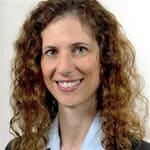
Prof. Giorgia Pastorin
National University of Singapore, Singapore
Giorgia Pastorin is an associate professor and assistant dean (research) at the faculty of science, co-lead of the centre for additive manufacturing and director of the pharmaceutical innovation and research center (PIRC) in NUS. Her main research interests include the exploitation of nanobiomaterials, such as cell-derived nanovesicles (CDNs) or nano-cell-vesicle technologies (nCVTs), as targeted drug delivery strategies by means of surface functionalizations and design of novel pro-drugs.Giorgia Pastorin received her MSc degree in Pharmaceutical Chemistry and Technology in 2000 and her Ph.D. in 2004 from the University of Trieste (Italy). She spent two years of her postDoc at the CNRS in Strasbourg (France), where she specialized in drug delivery.
She joined the National University of Singapore (NUS) in June 2006, as Assistant Professor in the Department of Pharmacy-Faculty of Science. She was promoted to Associate Professor in 2011, Assistant Head in 2014 and Deputy Head in 2016.
She is the Editor of two books related to drug delivery and author/co-author in > 150 articles on internationally peer-reviewed journals (h-index: 48 (Scopus)). For the work performed by her BioNano-Technology group in NUS, she received the Young Scientist Award (2015).
CONFERENCE COMMITTEE
Prof. Masakazu Anpo, ex-Vice President, Osaka Prefecture University, Japan and Fuzhou University, China
Editor-in-Chief, Res. Chem. Intermed. (Springer)
Prof. Adam Januszko, Military Institute of Engineer Technology, Poland
Prof. Xiaolu Zhu, Hohai University, China
Prof. Jose Ygnacio Pastor, Universidad Politécnica de Madrid, Spain
Prof. Haiyong He, Ningbo Institute of Materials Technology and Engineering, CAS, China
Prof. Marcela Urzua, Universidad de Chile, Chile
Prof. Hongfei Liu, Institute of Materials Research and Engineering, A-Star, Singapore
Prof. B.H. Chen, Dean, Fu Jen Catholic University, Taiwan
Prof. Badrul Hisham Ahmad, Universiti Teknikal Malaysia Melaka, Malaysia
Prof. Qinze Liu, Qilu University of Technology, China
Prof. Muneo Hori, University of Tokyo, Japan
Prof. Hong Wang, Hebei University, China
Prof. Yoji Shibutani, Osaka University, Japan
Dr. Sudhajit Misra, The University of Utah, United States
Dr. Eric Robert, GREMI (Research Group on the Energetics of Ionized Environments), France
Prof. Yoshinori Sato, Tohoku University, Japan
Prof. Barbara Onida, Polytechnic of Turin, Italy
Prof. Sandro C. Amico, Federal University of Rio Grande do Sul, Brazil
Prof. Yong Yang, City University of Hong Kong, Hong Kong
Prof. Adam Mechler, La Trobe University, Australia
Prof. Michel Feidt, University of Lorraine, France
Prof. Mariola Ramirez, Autonomous University of Madrid, Spain
Prof. Nikolaos Labrou, Agricultural University of Athens, Greece
Dr. Qingxin Mu, University of Washington, United States
Prof. Fantao Kong, Harbin Institute of Technology, China
Dr. Ikai Lo, National Sun Yat-Sen University, Taiwan
Prof. Gabriela Carja, Gh. Asachi Technical University of Iasi, Romania
Prof. Dimitra Vernardou, Hellenic Mediterranean University, Greece
Dr. Raul Rangel Rojo, Center for Scientific Research and Higher Education of Ensenada, Mexico
Prof. Chandrasekar Srinivasakannan, Khalifa University of Science and Technology, United Arab Emirates
Prof. Giuseppe Failla, Università degli Studi di Reggio Calabria, Italy
Prof. Makusu Tsutsui, Osaka University, Japan
Dr. Bojan Marinkovic, Pontifical Catholic University of Rio de Janeiro, Brazil
Prof. Rashid Abu Al-Rub, Director, Khalifa University of Science and Technology, United Arab Emirates
Prof. Changming Fang, Brunel University London, United Kingdom
Prof. Juan M Gorriz, Universidad de Granada, Spain
Prof. Charlotte Hauser, KAUST, Saudi Arabia
Prof. Xiao Zhang, Washington State University Tri-Cities, United States
Prof. Andy Tennyson, Clemson University, United States
Prof. Igor Zaliznyak, Brookhaven National Laboratory, United States
Prof. Anukorn Phuruangrat, Prince of Songkla University, Thailand
Prof. Maria Dinescu, National Institute for Laser, Romania
Prof. Joao Rodrigues, Universidade da Madeira, Portugal
Prof. Anatol Jaworek, Robert Szewalski Institute of Fluid-Flow Machinery of the Polish Academy of Sciences, Poland
Prof. Tilo Söhnel, Associate Dean, University of Auckland, New Zealand
Prof. Ken-ichi Katsumata, Tokyo University of Science, Japan
Prof. Hideyuki Murakami, National Institute for Materials Science, Japan
Prof. Luigi Vesce, Tor Vergata University of Rome, Italy
Prof. Vittorio Ferrari, Universita degli Studi di Brescia, Italy
Prof. Marco Tartagni, University of Bologna, Italy
Prof. Songye Zhu, Hong Kong Polytechnic University, Hong Kong
Prof. Filippo Costa, University of Pisa, Italy
Prof. Eliyou Eghion, Ben-Gurion University of the Negev, Israel
Prof. Jun Fan, City University of Hong Kong, Hong Kong
Prof. Baoguo Han, Dalian University of Technology, China
Prof. Dimitrios Karamanis, University of Patras, Greece
Prof. Ruediger A. Eichel, Forschungszentrum Jülich (FZJ), Germany
Prof. Mohamed Benyoucef, University of Kassel, Germany
Prof. Tatiana Itina, Laboratoire Hubert Curien, France
Prof. Minh-Tan Ton-That, National Research Council Canada, Canada
Prof. Isabelle Ledoux, Laboratoire de photonique quantique et moléculaire, France
Prof. Eduard Belas, Head, Charles University, Czech Republic
Prof. Mingliang Tian, Dean, School of Physics and Optoelectronic Engineering, Anhui University, Hefei, Anhui 230601, China
Prof. Yong Zhu, Griffith University, Brisbane, Australia
Prof. Guohong Ma, Shanghai University, China
Prof. Alberto Figoli, CNR- Istituto per la Tecnologia delle Membrane, Italy
Prof. Yongbing Xu, Director, Nanjing University, China
Prof. Jun Xu, Tsinghua University, China
Prof. Alberto Figoli, CNR- Istituto per la Tecnologia delle Membrane, Italy
Prof. Zengtao Chen, University of Alberta, Canada
Prof. Julio Ricardo Sambrano, UNESP-Universidade Estadual Paulista, Brazil
Prof. Wolfgang Kern, Polymer Competence Center Leoben GmbH, Austria
Prof. Viktor Hacker, Head, Graz University of Technology, Austria
Prof. Naveen Chilamkurti, La Trobe University, Australia
SPEAKERS
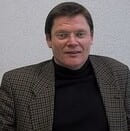
Prof. Joachim Maier
Editor-in-Chief, Solid State Ionics and Director
Max Planck Institute for Solid State Research
Germany
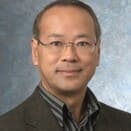
Prof. Hatsuo Ishida
Case Western Reserve University
United States
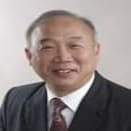
Prof. Tai-Shung Chung
National Taiwan University of Science and Technology
Taiwan
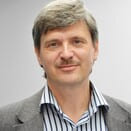
Prof. Joerg Neugebauer
Director
Max-Planck-Institut für Eisenforschung GmbH
Germany
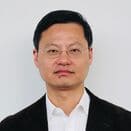
Prof. Jie Yang
Editor-in-Chief, Engineering Structures
RMIT University
Australia
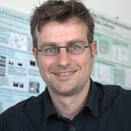
Dr. Andreas Schüler
Head
Ecole Polytechnique Federale de Lausanne
Switzerland
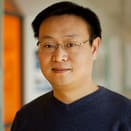
Prof. Wei Lu
University of Michigan
United States
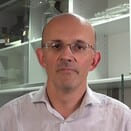
Prof. Jean-Charles Arnault
Director
Commissariat a L’Energie Atomique (CEA)
France
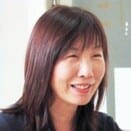
Prof. Kaoru Tamada
Kyushu University
Japan
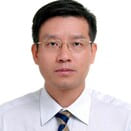
Prof. Kui Yao
Institute of Materials Research and Engineering, A-Star
Singapore
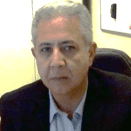
Prof. Mohamed Bouazaoui
University of Lille
France
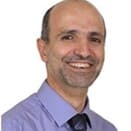
Prof. Sofian Kanan
American University of Sharjah
United Arab Emirates
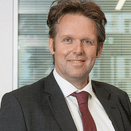
Prof. Robert Boehm
Leipzig University of Applied Sciences
Germany
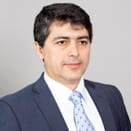
Prof. Pedram Fatehi
Lakehead University
Canada
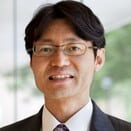
Prof. Katsuo Kurabayashi
University of Michigan
United States
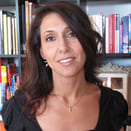
Prof. Elisa Moretti
Ca ‘Foscari University of Venice
Italy

Prof. Nicolas Fourches
CEA-University Paris-Saclay
France
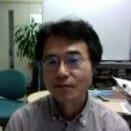
Prof. Takashi Uchino
Kobe University
Japan
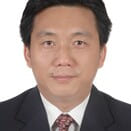
Prof. Weihong Zhu
East China University of Science and Technology
China
CONFERENCE HIGHLIGHTS
- Organized up to 100+ Oral Presentations on the Latest Trend of Materials Science
- 50+ Attendees Participated from All over the World to Exchange Ideas, Build New Networks, and Foster Friendships
- Bringing together projects on New Technologies Implemented in Industrial Manufacturing
- Learn Global Market Trends for Materials Science
- Cutting-edge Keynote Addresses by Prominent Leaders from All over the World
- Opportunities to Visit the Singapore’s Natural and Cultural Landscapes
SESSIONS
- 3D Printing
- Applications of Nanotechnology
- DNA Nanotechnology
- Functional Nanofibers
- Gold Nanoparticles
- Nano Pores
- Nano Shells
- Nano Tubes
- Nano Wires
- Nano-Biosensors
- Nano-Carriers for Drug Delivery and Drug Targeting
- Nano-characterization Techniques
- Nano-devices and Nano-systems
- Nanomaterials and Nanotechnology – Physics, Chemistry and Biology
- Nanomaterials for Drug and Gene Delivery
- Nanomaterials Synthesis
- Nano-Robotics
- Nanosurfaces and Interactions
- Nanotechnology for Vaccines
- Nanotechnology in Tissue Engineering
- Physico-Chemical Nanomaterials and Nanotechnology
- Properties of Nanostructured Materials
- siRNA Therapeutics and Nanovectors
- Synthesis of Nanoparticles for Drug Delivery
- Theranostic Nanotechnologies and Biomarkers
- Ceramic Coating
- Ceramic-Matrix Composites
- Composite and Ceramic Engineering
- Composite and Ceramic Materials: Products, Challenges and Market
- Composite and Ceramic Materials: Structure and Design
- Composite and Ceramic Materials: Synthesis and Characterization
- Composite and Ceramic Materials: Various Applications
- Construction and Building Materials
- Glass Engineering and Science
- Nano-Composites and Nano-Ceramics
- Polymer Matrix Composites
- Electronic, Magnetic and Optical Materials: Products, Challenges and Market
- Electronic, Magnetic and Optical Materials: Structure and Design
- Electronic, Magnetic and Optical Materials: Synthesis and Characterization
- Electronic, Magnetic and Optical Materials: Various Applications
- Hybrid Electronic, Magnetic and Optical Materials
- Luminescence Mechanisms and Energy Transfers
- Magnetism, Electromagnetism and Spintronics
- Magnetostrictive Materials and Device Technologies
- Nanoscale Electronic, Magnetic and Optical Materials
- Piezoelectric Materials and Device Technologies
- Batteries and Supercapacitors
- Emerging Technologies for Energy Applications
- Energy Harvesting Materials
- Energy Materials: Synthesis and Characterization
- Energy Storage Technologies
- Fuel Cells and Biofuels
- Hydrogen Energy
- Magnetocalorics
- Nanogenerator
- Nano Energy
- Nuclear Energy
- Photocatalysis and Electrocatalysis
- Photovoltaics and Optoelectronics
- Piezoelectronics
- Solar Energy Materials
- Solid Electrolyte Materials
- Solid-State Lithium-Metal
- Thermoelectricity, Piezoelectricity, and Triboelectricity
- Water Splitting Technology
- Chemical Safety and Sustainability
- Chemicals Management and Green Economy
- Environmental and Green Nanotechnology
- Green and Sustainable Chemistry Education
- Green Catalysis
- Green Chemistry in Environmental Science
- Green Fossil Energy, Biomass, and Future fuels
- Green Solvents
- Green Synthesis, Manufacturing, and Engineering Processes
- Green Technologies
- Innovation in Sustainable and Green Chemistry
- Recycling and Waste Management
- Applications of Functional Materials
- Functional Carbon/ Quantum Dots
- Functional Materials Based Technology, Innovations and Market
- Functional Materials: Synthesis and Characterization
- Functional Nanomaterials and Nanotechnology
- Functional Polymeric Materials
- Biodevice Fabrication
- Biomaterials: Structure and Design
- Biomaterials: Synthesis and Characterization
- Biomedical Applications
- Biomedical Sensors and Health Monitoring Devices
- Emerging Technologies and Biomedical Instrumentation
- Energy Harvesting Biodevices
- Imaging and Visualization Devices
- Implantable Electronics, Wearable and Mobile Devices
- Lab-on-a-Chip and Microfluidic Devices
- Nano-Biomaterials
- Radio and Photo Therapy Devices
- Application of Biosensors in Drug Delivery and Clinical Chemistry
- Bioelectronics and Bioinstrumentation
- Biological Materials
- DNA Chips
- Enzyme-Based Biosensors
- Immunosensors
- Lab-On-A-Chip
- Nanoelectronics Biosensors
- Natural and Synthetic Receptors
- Novel transducers and Photonic Sensor Technologies
- Organism- and Whole Cell-Based Biosensors
- Sensors
- μ-TAS
- Carbon Blacks
- Carbon Fibers and Filaments
- Carbon Nanotubes
- Diamond and Diamond-like Carbon
- Fullerenes
- Glassy Carbon
- Graphene Oxide
- Graphenes
- Graphite
- Porous Carbons
- Pyrolytic Carbon
- SP2 and Non-SP2 Hybridized Carbon Systems
- Ab Initio Calculations
- Computational Materials Science
- Computer-Aided Learning and Teaching
- Computer-Aided Materials Selection, Design and Manufacturing
- Computer-Integrated Material Processing Technology
- Density Functional Theory
- Finite Element Analysis and Mesoscale modelling
- Internet of Things-Based Methods
- Monte Carlo and Molecular Dynamics Techniques
- Nanoscale Modelling
- Quantum Chemical, Semi-Empirical and Classical Approaches
- 2D Materials
- Applications of Graphene
- Bio-Graphene
- Graphene Based Devices
- Graphene Based Polymers
- Graphene Nanoplatelets
- Graphene Nanotubes
- Graphene Sheets
- Graphene Technology
- Graphene: Modification and Functionalization
- Graphene: Synthesis, Characterization
- Mechanical Properties on Graphene
- Inorganic Materials Synthesis
- Lighting Materials and Technology
- Macromolecular and Nanomaterial Synthesis
- Materials Processing, Structure and Properties
- Materials Synthesis
- Metals and Alloys
- Metamaterials
- Solid state chemistry
- Structural and Spectroscopic Probing
- Synthetic materials chemistry
- Thin-film Processing
- Applications of Polymers
- Dynamics of Block Copolymers
- Dynamics of Polymer Melts and Glasses
- Functional Polymeric Materials
- Polymer Composites and Blends
- Polymer Membranes
- Polymer Structure Modification by Chemical and Physical Means
- Polymer Synthesis and Characterization
- Semiconductors
- Stimuli-Responsive and Sensory Polymers
- Thermoplastic and Functional Elastomers
- Computational Structural Mechanics
- Computer-Aided Design and Modelling
- Concrete and Masonry Structures
- Construction Technology and Methods
- Glass and Ceramics
- Innovative Solutions in Structural Design and Construction
- Materials Processing and Manufacturing
- Membrane Structures
- Metal and Alloys
- Numerical Methods and Algorithms
- Shape Memory Alloys
- Smart Materials and Structures
- Structural Analysis and Design
- Structural Failures
- Structural Stability, Safety and Reliability
- Biomolecules, Biointerfaces, and Applications
- Corrosion Engineering
- Deposition Techniques
- Nanostructured Materials, Micelles, and Colloids
- Solid Thin Films and Layers
- Surface and Interface Analysis and Properties
- Surface and Interface Phenomena
- Surface Coating Technology
- Thin Film Growth and Epitaxy
- Tribology
SPONSORS & PARTNERS
Why become a sponsor/partners/exhibitor in the materials science conferences?

Make new connections

On-site and online brand exposure

Establish strong relationships

Build your brand profile
ORGANIZATIONS THAT ATTENDED
World’s top most organizations that attended our materials science conferences
LOCATION
Biggest materials science, engineering and technology conference was held at Singapore.
Singapore, officially the Republic of Singapore, is an island country located at the southern tip of the Malay Peninsula. Though physically small, Singapore is an economic giant. It has been Southeast Asia’s most modern city for over a century. Its unique ethnic tapestry affords visitors a wide array of sightseeing and culinary opportunities from which to choose. A full calendar of traditional festivals and holidays celebrated throughout the year adds to its cultural appeal. The country includes the island of Singapore and 63 other small islands. Because of its efficient and determined government, Singapore has become a flourishing country that excels in trade and tourism and is a model to developing countries.
- info@msiconference.com
- Amara Singapore, 165 Tg Pagar Rd, Singapore 088539
Centrally located in the CBD, Amara Singapore hotel is easily accessible from Tanjong Pagar MRT station and major local attractions.
TOP 5 ATTRACTIONS NEAR CONFERENCE VENUE
Singapore’s most popular attractions and tourist activities, many of which are within the vicinity of Amara Singapore. Find out things to do while in Singapore.

Chinatown
Explore Singapore’s legendary Chinatown - the largest heritage district for interesting finds and eats.

Orchard Road
Retail therapy beckons on this iconic shopping belt, which stretches up to 2.2km and is a haven for seasoned shoppers and first-time visitors.

Sentosa Island
The island of Sentosa, which means ‘peace’ and ‘tranquility’ in Malay, has held its name since the 1970s. Sentosa Island is a popular island resort destination in Singapore just 15 minutes away from the city centre.
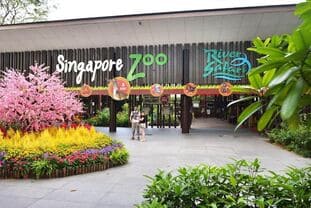
Singapore Zoo
Since 1973, the Singapore Zoo is the world’s best-known naturalistic habitat, and is home to more than 2,800 animals representing over 300 species of mammals, birds and reptiles.
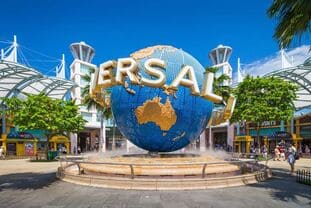
Universal Studios Singapore
One of the most popular tourist attractions that appeals to the whole family, Universal Studios Singapore is located in Sentosa Island and is Southeast Asia’s first Hollywood movie theme park.
Picture and Information Source: Amara Singapore Hotel

